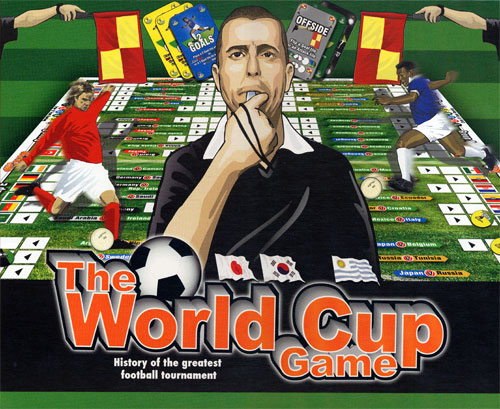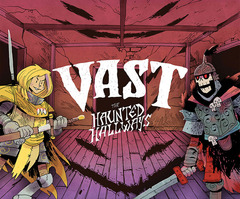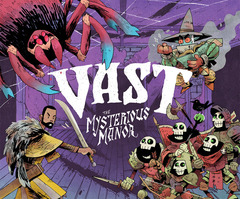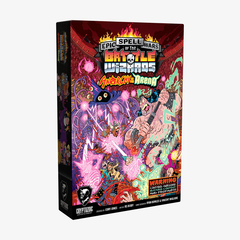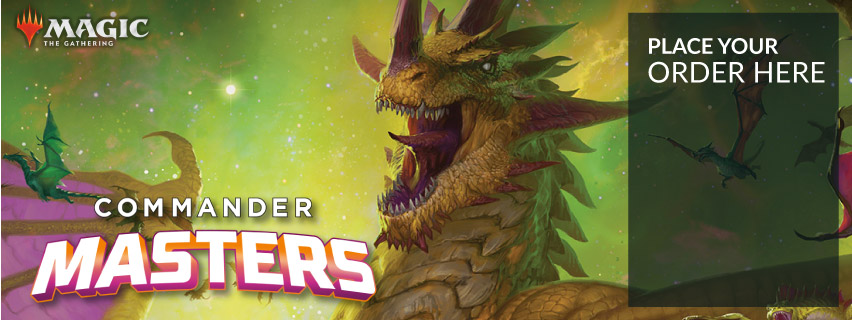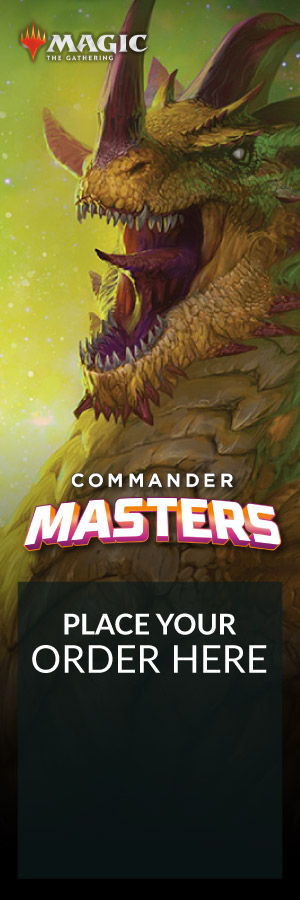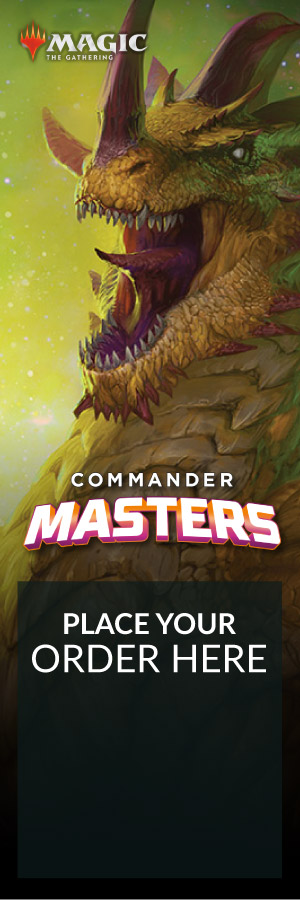[{"children":[{"parent_id":1572,"name":"Necromold","path":"/catalog/board_games-necromold/16567","photo_url":"","id":16567},{"parent_id":1572,"name":"FUNKOVERSE","path":"/catalog/board_games-funkoverse/16568","photo_url":"","id":16568},{"parent_id":1572,"name":"FUNKOVERS DC","path":"/catalog/board_games-funkovers_dc/16569","photo_url":"","id":16569},{"parent_id":1572,"name":"Final Girl","path":"/catalog/final_girl/16592","photo_url":"","id":16592},{"parent_id":1572,"name":"UVS Games","path":"/catalog/uvs_games/16601","photo_url":"","id":16601}],"parent_id":1,"name":"Board Games","path":"/catalog/board_games/1572","photo_url":"","id":1572},{"children":[{"parent_id":16336,"name":"Grand Archive TCG Booster Boxes","path":"/catalog/grand_archive_tcg_sealed_products-grand_archive_tcg_booster_boxes/16337","photo_url":"","id":16337},{"parent_id":16336,"name":"Grand Archive TCG Booster Packs","path":"/catalog/grand_archive_tcg_sealed_products-grand_archive_tcg_booster_packs/16338","photo_url":"","id":16338},{"parent_id":16336,"name":"Grand Archive TCG Other Sealed Products","path":"/catalog/grand_archive_tcg_sealed_products-grand_archive_tcg_other_sealed_products/16339","photo_url":"","id":16339},{"parent_id":16336,"name":"Grand Archive TCG Starter Decks","path":"/catalog/grand_archive_tcg_sealed_products-grand_archive_tcg_starter_decks/16340","photo_url":"","id":16340}],"parent_id":1,"name":"Grand Archive TCG Sealed Products","path":"/catalog/grand_archive_tcg_sealed_products/16336","photo_url":"","id":16336},{"children":[{"parent_id":16341,"name":"Alchemical Revolution","path":"/catalog/alchemical_revolution/16342","photo_url":"","id":16342},{"parent_id":16341,"name":"Alchemical Revolution First Edition","path":"/catalog/alchemical_revolution_first_edition/16343","photo_url":"","id":16343},{"parent_id":16341,"name":"Alchemical Revolution Starter Decks","path":"/catalog/alchemical_revolution_starter_decks/16344","photo_url":"","id":16344},{"parent_id":16341,"name":"Dawn of Ashes 1st Edition","path":"/catalog/dawn_of_ashes_1st_edition/16345","photo_url":"","id":16345},{"parent_id":16341,"name":"Dawn of Ashes Alter Edition","path":"/catalog/dawn_of_ashes_alter_edition/16346","photo_url":"","id":16346},{"parent_id":16341,"name":"Dawn of Ashes Prelude","path":"/catalog/dawn_of_ashes_prelude/16347","photo_url":"","id":16347},{"parent_id":16341,"name":"Dawn of Ashes Starter Decks","path":"/catalog/dawn_of_ashes_starter_decks/16352","photo_url":"","id":16352},{"parent_id":16341,"name":"Fractured Crown","path":"/catalog/fractured_crown/16353","photo_url":"","id":16353},{"parent_id":16341,"name":"Fractured Crown: Armaments","path":"/catalog/fractured_crown_armaments/16354","photo_url":"","id":16354},{"parent_id":16341,"name":"Grand Archive TCG Demo Deck 2022","path":"/catalog/grand_archive_tcg_demo_deck_2022/16355","photo_url":"","id":16355},{"parent_id":16341,"name":"Grand Archive TCG Demo Deck 2023","path":"/catalog/grand_archive_tcg_demo_deck_2023/16356","photo_url":"","id":16356},{"parent_id":16341,"name":"Silvie Re:Collection - Slime Sovereign","path":"/catalog/silvie_recollection__slime_sovereign/16524","photo_url":"","id":16524},{"parent_id":16341,"name":"Tristan Re:Collection, Shadowdancer","path":"/catalog/tristan_recollection_shadowdancer/16525","photo_url":"","id":16525}],"parent_id":1,"name":"Grand Archive TCG Singles","path":"/catalog/grand_archive_tcg_singles/16341","photo_url":"","id":16341},{"children":[{"parent_id":16586,"name":"Books","path":"/catalog/dungeons__dragons-books/16587","photo_url":"","id":16587},{"parent_id":16586,"name":"Miniatures","path":"/catalog/dungeons__dragons-miniatures/16588","photo_url":"","id":16588},{"parent_id":16586,"name":"Dice","path":"/catalog/dungeons__dragons-dice/16589","photo_url":"","id":16589},{"parent_id":16586,"name":"Board Games","path":"/catalog/dungeons__dragons-board_games/16590","photo_url":"","id":16590},{"parent_id":16586,"name":"Other","path":"/catalog/dungeons__dragons-other/16591","photo_url":"","id":16591}],"parent_id":1,"name":"Dungeons & Dragons","path":"/catalog/dungeons__dragons/16586","photo_url":"","id":16586},{"children":[{"parent_id":16603,"name":"MTG Products","path":"/catalog/beadle__grimms-mtg_accessories/16604","photo_url":"","id":16604}],"parent_id":1,"name":"Beadle & Grimm's","path":"/catalog/beadle__grimms/16603","photo_url":"","id":16603},{"children":[{"parent_id":16562,"name":"ROYAL MILK TEA","path":"/catalog/royal_milk_tea/16572","photo_url":"","id":16572},{"parent_id":16562,"name":"STRAWBERRRY MILK","path":"/catalog/snacks-strawberrry_milk/16573","photo_url":"","id":16573}],"parent_id":1,"name":"Snacks","path":"/catalog/snacks/16562","photo_url":"","id":16562},{"children":[{"parent_id":5242,"name":"Chessex","path":"/catalog/accessories_and_supplies-dice-chessex/5252","photo_url":"","id":5252},{"children":[{"parent_id":5262,"name":"Acrylic Classic Dice","path":"/catalog/dice-crystal_caste-acrylic_classic_dice/5272","photo_url":"","id":5272},{"parent_id":5262,"name":"Acrylic Fantasy Dice","path":"/catalog/dice-crystal_caste-acrylic_fantasy_dice/5282","photo_url":"","id":5282},{"parent_id":5262,"name":"Crystal Dice","path":"/catalog/dice-crystal_caste-crystal_dice/5292","photo_url":"","id":5292},{"parent_id":5262,"name":"Dwarven Dice - Dwarven Metal","path":"/catalog/dice-crystal_caste-dwarven_dice__dwarven_metal/5302","photo_url":"","id":5302},{"parent_id":5262,"name":"Dwarven Dice - Dwarven Stones","path":"/catalog/dice-crystal_caste-dwarven_dice__dwarven_stones/5312","photo_url":"","id":5312},{"parent_id":5262,"name":"Dwarven Dice - Extraordinary Dwarven Stones","path":"/catalog/dice-crystal_caste-dwarven_dice__extraordinary_dwarven_stones/5322","photo_url":"","id":5322}],"parent_id":5242,"name":"Crystal Caste","path":"/catalog/dice-crystal_caste/5262","photo_url":"","id":5262},{"children":[{"parent_id":5332,"name":"Individual Dice","path":"/catalog/dice-irondie-individual_dice/5342","photo_url":"","id":5342},{"parent_id":5332,"name":"Individual Dice - Random Rares","path":"/catalog/dice-irondie-individual_dice__random_rares/5352","photo_url":"","id":5352},{"parent_id":5332,"name":"IronDie - Sealed Product","path":"/catalog/dice-irondie-irondie__sealed_product/5362","photo_url":"","id":5362}],"parent_id":5242,"name":"IronDie","path":"/catalog/dice-irondie/5332","photo_url":"","id":5332},{"parent_id":5242,"name":"MTG Dice","path":"/catalog/dice-mtg_dice/5372","photo_url":"","id":5372},{"parent_id":5242,"name":"Monster Dice","path":"/catalog/dice-monster_dice/5382","photo_url":"","id":5382},{"parent_id":5242,"name":"Q-Workshop","path":"/catalog/dice-qworkshop/5392","photo_url":"","id":5392},{"parent_id":5242,"name":"Critical Hit Collectibles","path":"/catalog/dice-critical_hit_collectibles/15363","photo_url":"","id":15363},{"parent_id":5242,"name":"Die Hard Dice","path":"/catalog/dice-die_hard_dice/15364","photo_url":"","id":15364},{"parent_id":5242,"name":"Foam Brain Games","path":"/catalog/dice-foam_brain_games/15365","photo_url":"","id":15365},{"parent_id":5242,"name":"GameScience","path":"/catalog/dice-gamescience/15366","photo_url":"","id":15366},{"parent_id":5242,"name":"GameScience Dice","path":"/catalog/dice-gamescience_dice/15367","photo_url":"","id":15367},{"parent_id":5242,"name":"HD Dice","path":"/catalog/dice-hd_dice/15368","photo_url":"","id":15368},{"parent_id":5242,"name":"Koplow Dice","path":"/catalog/dice-koplow_dice/15369","photo_url":"","id":15369},{"parent_id":5242,"name":"Individual Dice","path":"/catalog/dice-individual_dice/15370","photo_url":"","id":15370},{"parent_id":5242,"name":"Oakie Doakie Dice","path":"/catalog/dice-oakie_doakie_dice/15371","photo_url":"","id":15371},{"parent_id":5242,"name":"Old School Dice","path":"/catalog/dice-old_school_dice/15372","photo_url":"","id":15372},{"parent_id":5242,"name":"Other Dice","path":"/catalog/dice-other_dice/15373","photo_url":"","id":15373},{"parent_id":5242,"name":"Paizo","path":"/catalog/dice-paizo/15374","photo_url":"","id":15374},{"parent_id":5242,"name":"Polyhero Dice","path":"/catalog/dice-polyhero_dice/15375","photo_url":"","id":15375},{"parent_id":5242,"name":"Role 4 Initiative Dice","path":"/catalog/dice-role_4_initiative_dice/15376","photo_url":"","id":15376},{"parent_id":5242,"name":"Sirius Dice","path":"/catalog/dice-sirius_dice/15377","photo_url":"","id":15377},{"parent_id":5242,"name":"Tasty Minstrel Dice","path":"/catalog/dice-tasty_minstrel_dice/15378","photo_url":"","id":15378},{"parent_id":5242,"name":"Ultra Pro Dice","path":"/catalog/dice-ultra_pro_dice/15379","photo_url":"","id":15379},{"parent_id":5242,"name":"Metallic Dice Games","path":"/catalog/dice-metallic_dice_games/15380","photo_url":"","id":15380},{"parent_id":5242,"name":"FanRoll","path":"/catalog/dice-fanroll/16585","photo_url":"","id":16585},{"parent_id":5242,"name":"Dice Games","path":"/catalog/dice_games/16605","photo_url":"","id":16605}],"parent_id":1,"name":"Dice","path":"/catalog/dice/5242","photo_url":"","id":5242},{"children":[{"parent_id":1542,"name":"Card Sleeves","path":"/catalog/accessories-card_sleeves/1552","photo_url":"","id":1552},{"parent_id":1542,"name":"Deck Boxes","path":"/catalog/accessories-deck_boxes/1562","photo_url":"","id":1562},{"parent_id":1542,"name":"Binders & Portfolios","path":"/catalog/accessories-binders__portfolios/3422","photo_url":"","id":3422},{"parent_id":1542,"name":"AEG Products","path":"/catalog/accessories-aeg_products/16018","photo_url":"","id":16018},{"parent_id":1542,"name":"BCW Supplies","path":"/catalog/accessories-bcw_supplies/16019","photo_url":"","id":16019},{"parent_id":1542,"name":"Binders and Portfolios","path":"/catalog/accessories-binders_and_portfolios/16020","photo_url":"","id":16020},{"parent_id":1542,"name":"Board Game Sleeves","path":"/catalog/accessories-board_game_sleeves/16021","photo_url":"","id":16021},{"parent_id":1542,"name":"Boogie Board Products","path":"/catalog/accessories-boogie_board_products/16022","photo_url":"","id":16022},{"parent_id":1542,"name":"Card Storage","path":"/catalog/accessories-card_storage/16023","photo_url":"","id":16023},{"parent_id":1542,"name":"Chessex Accessories","path":"/catalog/accessories-chessex_accessories/16024","photo_url":"","id":16024},{"parent_id":1542,"name":"Comic & Magazine Supplies","path":"/catalog/accessories-comic__magazine_supplies/16025","photo_url":"","id":16025},{"parent_id":1542,"name":"Coupon Organizers","path":"/catalog/accessories-coupon_organizers/16026","photo_url":"","id":16026},{"parent_id":1542,"name":"CritSuccess Dice Rings","path":"/catalog/accessories-critsuccess_dice_rings/16027","photo_url":"","id":16027},{"parent_id":1542,"name":"Dice Accessories","path":"/catalog/accessories-dice_accessories/16028","photo_url":"","id":16028},{"parent_id":1542,"name":"Dice Rings","path":"/catalog/accessories-dice_rings/16029","photo_url":"","id":16029},{"parent_id":1542,"name":"Displays","path":"/catalog/accessories-displays/16030","photo_url":"","id":16030},{"parent_id":1542,"name":"Field Notes Products","path":"/catalog/accessories-field_notes_products/16031","photo_url":"","id":16031},{"parent_id":1542,"name":"Frontline Gaming","path":"/catalog/accessories-frontline_gaming/16032","photo_url":"","id":16032},{"parent_id":1542,"name":"GameMats.com","path":"/catalog/accessories-gamematscom/16033","photo_url":"","id":16033},{"parent_id":1542,"name":"Gaming Bags","path":"/catalog/accessories-gaming_bags/16034","photo_url":"","id":16034},{"parent_id":1542,"name":"Gaming Cases","path":"/catalog/accessories-gaming_cases/16035","photo_url":"","id":16035},{"parent_id":1542,"name":"Gaming Stones","path":"/catalog/accessories-gaming_stones/16036","photo_url":"","id":16036},{"parent_id":1542,"name":"Koplow Non-Dice Accessories","path":"/catalog/accessories-koplow_nondice_accessories/16037","photo_url":"","id":16037},{"parent_id":1542,"name":"Life Counters","path":"/catalog/accessories-life_counters/16038","photo_url":"","id":16038},{"parent_id":1542,"name":"Memoribilia Supplies","path":"/catalog/accessories-memoribilia_supplies/16039","photo_url":"","id":16039},{"parent_id":1542,"name":"Miniatures Accessories","path":"/catalog/accessories-miniatures_accessories/16040","photo_url":"","id":16040},{"parent_id":1542,"name":"MTG Pins/Buttons","path":"/catalog/accessories-mtg_pinsbuttons/16041","photo_url":"","id":16041},{"parent_id":1542,"name":"Norse Foundry","path":"/catalog/accessories-norse_foundry/16042","photo_url":"","id":16042},{"parent_id":1542,"name":"Other Accessories & Supplies","path":"/catalog/accessories-other_accessories__supplies/16043","photo_url":"","id":16043},{"parent_id":1542,"name":"Photo Albums","path":"/catalog/accessories-photo_albums/16044","photo_url":"","id":16044},{"parent_id":1542,"name":"Photo Pages","path":"/catalog/accessories-photo_pages/16045","photo_url":"","id":16045},{"parent_id":1542,"name":"Pirate Lab","path":"/catalog/accessories-pirate_lab/16046","photo_url":"","id":16046},{"parent_id":1542,"name":"Playmat Cases and Accessories","path":"/catalog/accessories-playmat_cases_and_accessories/16047","photo_url":"","id":16047},{"parent_id":1542,"name":"Q Workshop","path":"/catalog/accessories-q_workshop/16048","photo_url":"","id":16048},{"parent_id":1542,"name":"Role 4 Initiative","path":"/catalog/accessories-role_4_initiative/16049","photo_url":"","id":16049},{"parent_id":1542,"name":"Sleeves and Semi Rigids for Sports Cards","path":"/catalog/accessories-sleeves_and_semi_rigids_for_sports_cards/16050","photo_url":"","id":16050},{"parent_id":1542,"name":"Specialty Holders","path":"/catalog/accessories-specialty_holders/16051","photo_url":"","id":16051},{"parent_id":1542,"name":"Sports Albums, Binders, and Portfolios","path":"/catalog/accessories-sports_albums_binders_and_portfolios/16052","photo_url":"","id":16052},{"parent_id":1542,"name":"Tablewar","path":"/catalog/accessories-tablewar/16053","photo_url":"","id":16053},{"parent_id":1542,"name":"The Broken Token Products","path":"/catalog/accessories-the_broken_token_products/16054","photo_url":"","id":16054},{"parent_id":1542,"name":"Toploaders","path":"/catalog/accessories-toploaders/16055","photo_url":"","id":16055},{"parent_id":1542,"name":"Turn One Gaming Supplies","path":"/catalog/accessories-turn_one_gaming_supplies/16056","photo_url":"","id":16056},{"parent_id":1542,"name":"Unipolar Games","path":"/catalog/accessories-unipolar_games/16057","photo_url":"","id":16057},{"parent_id":1542,"name":"PlayMats","path":"/catalog/accessories-playmats/16210","photo_url":"","id":16210},{"parent_id":1542,"name":"In Store Play Daily Rate","path":"/catalog/accessories-in_store_play_daily_rate/16581","photo_url":"","id":16581},{"parent_id":1542,"name":"In Store Play Daily Rate","path":"/catalog/accessories-in_store_play_daily_rate/16582","photo_url":"","id":16582},{"parent_id":1542,"name":"Figurine","path":"/catalog/accessories-figurine/16583","photo_url":"","id":16583}],"parent_id":1,"name":"Accessories","path":"/catalog/accessories_and_supplies/1542","photo_url":"","id":1542},{"children":[{"children":[{"parent_id":16594,"name":"PUCKY","path":"/catalog/blind_boxes-pop_mart-pucky/16595","photo_url":"","id":16595},{"parent_id":16594,"name":"SKULLPANDA","path":"/catalog/blind_boxes-pop_mart-skullpanda/16596","photo_url":"","id":16596}],"parent_id":16597,"name":"POP MART","path":"/catalog/blind_boxes-pop_mart/16594","photo_url":"","id":16594},{"parent_id":16597,"name":"Anime","path":"/catalog/blind_boxes-anime/16598","photo_url":"","id":16598},{"parent_id":16597,"name":"Sanrio","path":"/catalog/blind_boxes-sanrio/16599","photo_url":"","id":16599},{"parent_id":16597,"name":"Sonny Angel","path":"/catalog/blind_boxes-sonny_angel/16600","photo_url":"","id":16600}],"parent_id":1,"name":"Blind Boxes","path":"/catalog/blind_boxes/16597","photo_url":"","id":16597},{"parent_id":1,"name":"Altered TCG Sealed Product","path":"/catalog/altered_tcg_sealed_product/16561","photo_url":"","id":16561},{"children":[{"parent_id":12,"name":"MTG Booster Boxes","path":"/catalog/magic_the_gathering_sealed_products-mtg_booster_boxes/100","photo_url":"","id":100},{"parent_id":12,"name":"MTG Booster Packs","path":"/catalog/magic_the_gathering_sealed_products-mtg_booster_packs/101","photo_url":"","id":101},{"parent_id":12,"name":"MTG Bundles/Fat Packs","path":"/catalog/magic_the_gathering_sealed_products-mtg_bundlesfat_packs/105","photo_url":"","id":105},{"parent_id":12,"name":"MTG Box Sets","path":"/catalog/magic_the_gathering_sealed_products-mtg_box_sets/1311","photo_url":"","id":1311},{"parent_id":12,"name":"MTG Prerelease Kits","path":"/catalog/magic_the_gathering_sealed_products-mtg_prerelease_kits/12553","photo_url":"","id":12553},{"parent_id":12,"name":"MTG Theme Decks","path":"/catalog/magic_the_gathering_sealed_products-mtg_theme_decks/132","photo_url":"","id":132},{"parent_id":12,"name":"MTG Starter Decks","path":"/catalog/magic_the_gathering_sealed_products-mtg_starter_decks/280","photo_url":"","id":280},{"parent_id":12,"name":"Magic World Championship Decks","path":"/catalog/magic_the_gathering_sealed_products-magic_world_championship_decks/1321","photo_url":"","id":1321},{"parent_id":12,"name":"MTG Player's Guides","path":"/catalog/mtg_players_guides/15201","photo_url":"","id":15201},{"parent_id":12,"name":"MTG Land Packs","path":"/catalog/mtg_land_packs/15202","photo_url":"","id":15202},{"parent_id":12,"name":"MTG Preconstructed Decks","path":"/catalog/mtg_preconstructed_decks/15303","photo_url":"","id":15303},{"parent_id":12,"name":"Commander Decks","path":"/catalog/magic_products-commander_decks/15361","photo_url":"","id":15361},{"parent_id":12,"name":"Magic Box Sets","path":"/catalog/magic_products-magic_box_sets/16542","photo_url":"","id":16542},{"parent_id":12,"name":"Other","path":"/catalog/other/16593","photo_url":"","id":16593},{"parent_id":12,"name":"Foundations","path":"/catalog/foundations/16602","photo_url":"","id":16602}],"parent_id":1,"name":"Magic Products","path":"/catalog/magic_the_gathering_sealed_products/12","photo_url":"","id":12},{"children":[{"parent_id":385,"name":"Pokemon Booster Boxes","path":"/catalog/pokemon_sealed_products-pokemon_booster_boxes/386","photo_url":"","id":386},{"parent_id":385,"name":"Pokemon Booster Packs","path":"/catalog/pokemon_sealed_products-pokemon_booster_packs/387","photo_url":"","id":387},{"parent_id":385,"name":"Pokemon Preconstructed Theme Decks","path":"/catalog/pokemon_sealed_products-pokemon_preconstructed_theme_decks/388","photo_url":"","id":388},{"children":[{"parent_id":1301,"name":"Pokemon Paradox Destinies Tin","path":"/catalog/pokemon_paradox_destinies_tin/16566","photo_url":"","id":16566}],"parent_id":385,"name":"Pokemon Tins & Box Sets","path":"/catalog/pokemon_sealed_products-pokemon_tins__box_sets/1301","photo_url":"","id":1301},{"parent_id":385,"name":"Pokemon Blister Packs","path":"/catalog/pokemon_sealed_products-pokemon_blister_packs/12563","photo_url":"","id":12563},{"parent_id":385,"name":"Pokemon Build and Battle Boxes","path":"/catalog/pokemon_sealed_products-pokemon_build_and_battle_boxes/14776","photo_url":"","id":14776},{"parent_id":385,"name":"Pokemon Collectible Coins","path":"/catalog/pokemon_collectible_coins/15203","photo_url":"","id":15203},{"parent_id":385,"name":"Pokemon Pins","path":"/catalog/pokemon_pins/15204","photo_url":"","id":15204},{"parent_id":385,"name":"Pokemon Prerelease Packs","path":"/catalog/pokemon_prerelease_packs/15205","photo_url":"","id":15205},{"parent_id":385,"name":"Pokemon Collectible Figures","path":"/catalog/pokemon_collectible_figures/15305","photo_url":"","id":15305},{"parent_id":385,"name":"Pokemon Starter Set","path":"/catalog/pokemon_starter_set/15306","photo_url":"","id":15306},{"parent_id":385,"name":"Pokemon World Championship Decks","path":"/catalog/pokemon_world_championship_decks/15307","photo_url":"","id":15307},{"parent_id":385,"name":"Pokemon Starters","path":"/catalog/pokemon_starters/15767","photo_url":"","id":15767},{"parent_id":385,"name":"Pokemon World Championship Decks","path":"/catalog/pokemon_world_championship_decks/15774","photo_url":"","id":15774}],"parent_id":1,"name":"Pokemon Sealed Products","path":"/catalog/pokemon_sealed_products/385","photo_url":"","id":385},{"children":[{"parent_id":654,"name":"Yu-Gi-Oh Booster Boxes","path":"/catalog/yugioh_sealed_products-yugioh_booster_boxes/655","photo_url":"","id":655},{"parent_id":654,"name":"Yu-Gi-Oh Booster Packs","path":"/catalog/yugioh_sealed_products-yugioh_booster_packs/656","photo_url":"","id":656},{"parent_id":654,"name":"Yu-Gi-Oh Collectors Tins","path":"/catalog/yugioh_sealed_products-yugioh_collectors_tins/657","photo_url":"","id":657},{"parent_id":654,"name":"Yu-Gi-Oh Special Edition Packs","path":"/catalog/yugioh_sealed_products-yugioh_special_edition_packs/658","photo_url":"","id":658},{"parent_id":654,"name":"Yu-Gi-Oh Starter Decks","path":"/catalog/yugioh_sealed_products-yugioh_starter_decks/659","photo_url":"","id":659},{"parent_id":654,"name":"Yu-Gi-Oh Structure Decks","path":"/catalog/yugioh_sealed_products-yugioh_structure_decks/660","photo_url":"","id":660},{"parent_id":654,"name":"Yu-Gi-Oh Box Sets","path":"/catalog/yugioh_sealed_products-yugioh_box_sets/9583","photo_url":"","id":9583}],"parent_id":1,"name":"Yu-Gi-Oh! Sealed Products","path":"/catalog/yugioh_sealed_products/654","photo_url":"","id":654},{"children":[{"children":[{"parent_id":14929,"name":"8-Bit Pops","path":"/catalog/8bit_pops/14930","photo_url":"","id":14930},{"parent_id":14929,"name":"Ad Icons Series","path":"/catalog/ad_icons_series/14931","photo_url":"","id":14931},{"parent_id":14929,"name":"Animation Series","path":"/catalog/animation_series/14932","photo_url":"","id":14932},{"parent_id":14929,"name":"Asia Series","path":"/catalog/asia_series/14933","photo_url":"","id":14933},{"parent_id":14929,"name":"Books Series","path":"/catalog/books_series/14934","photo_url":"","id":14934},{"parent_id":14929,"name":"Comics Series","path":"/catalog/comics_series/14935","photo_url":"","id":14935},{"parent_id":14929,"name":"DIY Pops","path":"/catalog/diy_pops/14936","photo_url":"","id":14936},{"parent_id":14929,"name":"Directors Series","path":"/catalog/directors_series/14937","photo_url":"","id":14937},{"parent_id":14929,"name":"Disney Series","path":"/catalog/disney_series/14938","photo_url":"","id":14938},{"parent_id":14929,"name":"Football Series","path":"/catalog/football_series/14939","photo_url":"","id":14939},{"parent_id":14929,"name":"Games of Thrones Series","path":"/catalog/games_of_thrones_series/14940","photo_url":"","id":14940},{"parent_id":14929,"name":"Game Pops Series","path":"/catalog/game_pops_series/14941","photo_url":"","id":14941},{"parent_id":14929,"name":"Garbage Pail Kids Series","path":"/catalog/garbage_pail_kids_series/14942","photo_url":"","id":14942},{"parent_id":14929,"name":"Golf Series","path":"/catalog/golf_series/14943","photo_url":"","id":14943},{"parent_id":14929,"name":"Halo Pops Series","path":"/catalog/halo_pops_series/14944","photo_url":"","id":14944},{"parent_id":14929,"name":"Harry Potter Series","path":"/catalog/harry_potter_series/14945","photo_url":"","id":14945},{"parent_id":14929,"name":"Hello Kitty Series","path":"/catalog/hello_kitty_series/14946","photo_url":"","id":14946},{"parent_id":14929,"name":"Heroes Series","path":"/catalog/heroes_series/14947","photo_url":"","id":14947},{"parent_id":14929,"name":"Holiday Series","path":"/catalog/holiday_series/14948","photo_url":"","id":14948},{"parent_id":14929,"name":"Icons Series","path":"/catalog/icons_series/14949","photo_url":"","id":14949},{"parent_id":14929,"name":"League of Legends Series","path":"/catalog/league_of_legends_series/14950","photo_url":"","id":14950},{"parent_id":14929,"name":"MLB Series","path":"/catalog/mlb_series/14951","photo_url":"","id":14951},{"parent_id":14929,"name":"Magic the Gathering Series","path":"/catalog/magic_the_gathering_series/14952","photo_url":"","id":14952},{"children":[{"parent_id":14953,"name":"1993 Marvel Masterpieces","path":"/catalog/1993_marvel_masterpieces/16563","photo_url":"","id":16563},{"parent_id":14953,"name":"1993 Marvel Masterpieces","path":"/catalog/1993_marvel_masterpieces/16564","photo_url":"","id":16564},{"parent_id":14953,"name":"Marvel Metal","path":"/catalog/marvel_metal/16565","photo_url":"","id":16565}],"parent_id":14929,"name":"Marvel Series","path":"/catalog/marvel_series/14953","photo_url":"","id":14953},{"parent_id":14929,"name":"Michael Jackson Series","path":"/catalog/michael_jackson_series/14954","photo_url":"","id":14954},{"parent_id":14929,"name":"Movie Moments","path":"/catalog/movie_moments/14955","photo_url":"","id":14955},{"parent_id":14929,"name":"Movies Series","path":"/catalog/movies_series/14956","photo_url":"","id":14956},{"parent_id":14929,"name":"Munsters Series","path":"/catalog/munsters_series/14957","photo_url":"","id":14957},{"parent_id":14929,"name":"Muppets Series","path":"/catalog/muppets_series/14958","photo_url":"","id":14958},{"parent_id":14929,"name":"My Little Pony Series","path":"/catalog/my_little_pony_series/14959","photo_url":"","id":14959},{"parent_id":14929,"name":"NBA Series","path":"/catalog/nba_series/14960","photo_url":"","id":14960},{"parent_id":14929,"name":"NHL Series","path":"/catalog/nhl_series/14961","photo_url":"","id":14961},{"parent_id":14929,"name":"Pets Series","path":"/catalog/pets_series/14962","photo_url":"","id":14962},{"parent_id":14929,"name":"POP! Pocket","path":"/catalog/pop_pocket/14963","photo_url":"","id":14963},{"parent_id":14929,"name":"POP! Rides Series","path":"/catalog/funko_products-funko_pop_vinyls-pop_rides/14964","photo_url":"","id":14964},{"parent_id":14929,"name":"POP! Rocks Series","path":"/catalog/pop_rocks_series/14965","photo_url":"","id":14965},{"parent_id":14929,"name":"POP! The Vote Series","path":"/catalog/pop_the_vote_series/14966","photo_url":"","id":14966},{"parent_id":14929,"name":"Royals","path":"/catalog/funko_products-funko_pop_vinyls-royas_series/14967","photo_url":"","id":14967},{"parent_id":14929,"name":"Sanrio Series","path":"/catalog/sanrio_series/14968","photo_url":"","id":14968},{"parent_id":14929,"name":"Sci-Fi Series","path":"/catalog/scifi_series/14969","photo_url":"","id":14969},{"parent_id":14929,"name":"Sesame Street Series","path":"/catalog/sesame_street_series/14970","photo_url":"","id":14970},{"parent_id":14929,"name":"Shopskins","path":"/catalog/shopskins/14971","photo_url":"","id":14971},{"parent_id":14929,"name":"South Park Series","path":"/catalog/south_park_series/14972","photo_url":"","id":14972},{"parent_id":14929,"name":"Stan Lee Series","path":"/catalog/stan_lee_series/14973","photo_url":"","id":14973},{"parent_id":14929,"name":"Star Wars Series","path":"/catalog/star_wars_series/14974","photo_url":"","id":14974},{"parent_id":14929,"name":"Television Series","path":"/catalog/television_series/14975","photo_url":"","id":14975},{"parent_id":14929,"name":"UFC Series","path":"/catalog/ufc_series/14976","photo_url":"","id":14976},{"parent_id":14929,"name":"Ugly Dolls Series","path":"/catalog/ugly_dolls_series/14977","photo_url":"","id":14977},{"parent_id":14929,"name":"WWE Series","path":"/catalog/wwe_series/14978","photo_url":"","id":14978},{"parent_id":14929,"name":"Wreck-It Ralph Series","path":"/catalog/wreckit_ralph_series/14979","photo_url":"","id":14979},{"parent_id":14929,"name":"Pop! Album Series","path":"/catalog/funko_products-pop_album_series/15478","photo_url":"","id":15478},{"parent_id":14929,"name":"Pop! Adventures of the Gummi Bears","path":"/catalog/funko_products-pop_adventures_of_the_gummi_bears/15477","photo_url":"","id":15477},{"parent_id":14929,"name":"NASCAR Series","path":"/catalog/funko_products-nascar_series/15476","photo_url":"","id":15476},{"parent_id":14929,"name":"Monster High Series","path":"/catalog/funko_products-monster_high_series/15475","photo_url":"","id":15475},{"parent_id":14929,"name":"Funko Popsies","path":"/catalog/funko_products-funko_pop_vinyls-funko_popsies/15425","photo_url":"","id":15425},{"parent_id":14929,"name":"Funko Mini Moments","path":"/catalog/funko_products-funko_mini_moments/15424","photo_url":"","id":15424},{"parent_id":14929,"name":"Pop! College Series","path":"/catalog/pop_college_series/15480","photo_url":"","id":15480},{"parent_id":14929,"name":"Pop! Deadpool Series","path":"/catalog/pop_deadpool_series/15481","photo_url":"","id":15481},{"parent_id":14929,"name":"Pop! NBA Mascots","path":"/catalog/pop_nba_mascots/15482","photo_url":"","id":15482},{"parent_id":14929,"name":"Pop! Spider-Man Series","path":"/catalog/pop_spiderman_series/15483","photo_url":"","id":15483},{"parent_id":14929,"name":"Pop! Boxing Series","path":"/catalog/pop_boxing_series/15484","photo_url":"","id":15484},{"parent_id":14929,"name":"Pop! Town Series","path":"/catalog/pop_town_series/15485","photo_url":"","id":15485},{"children":[{"parent_id":15486,"name":"Key Chain","path":"/catalog/key_chain/16574","photo_url":"","id":16574},{"parent_id":15486,"name":"Starwars","path":"/catalog/starwars/16575","photo_url":"","id":16575}],"parent_id":14929,"name":"Retro Toys Series","path":"/catalog/retro_toys_series/15486","photo_url":"","id":15486},{"parent_id":14929,"name":"Soda Vinyl","path":"/catalog/soda_vinyl/15487","photo_url":"","id":15487},{"parent_id":14929,"name":"Stephen King Series","path":"/catalog/stephen_king_series/15488","photo_url":"","id":15488},{"parent_id":14929,"name":"Tokidoki Series","path":"/catalog/tokidoki_series/15489","photo_url":"","id":15489},{"parent_id":14929,"name":"Vinyl Gold","path":"/catalog/vinyl_gold/15490","photo_url":"","id":15490},{"parent_id":14929,"name":"Vinyl Statues","path":"/catalog/vinyl_statues/15491","photo_url":"","id":15491},{"parent_id":14929,"name":"Pop! Navy Series","path":"/catalog/pop_navy_series/15492","photo_url":"","id":15492},{"parent_id":14929,"name":"Broadway Series","path":"/catalog/broadway_series/15841","photo_url":"","id":15841},{"parent_id":14929,"name":"Dune Pop! Movies","path":"/catalog/dune_pop_movies/15842","photo_url":"","id":15842},{"parent_id":14929,"name":"Game of Thrones Series","path":"/catalog/game_of_thrones_series/15843","photo_url":"","id":15843},{"parent_id":14929,"name":"Games Pops Series","path":"/catalog/games_pops_series/15844","photo_url":"","id":15844},{"parent_id":14929,"name":"Games Pops Series","path":"/catalog/games_pops_series/15845","photo_url":"","id":15845},{"parent_id":14929,"name":"Wreck It Ralph Series","path":"/catalog/wreck_it_ralph_series/15850","photo_url":"","id":15850}],"parent_id":14910,"name":"Funko POP! Vinyls","path":"/catalog/funko_products-funko_pop_vinyls/14929","photo_url":"","id":14929},{"parent_id":14910,"name":"Funko Dorbz","path":"/catalog/funko_dorbz/14911","photo_url":"","id":14911},{"parent_id":14910,"name":"Funko Fabrikations","path":"/catalog/funko_products-funko_fabrikations/14912","photo_url":"","id":14912},{"parent_id":14910,"name":"Funko Home Series","path":"/catalog/funko_products-funko_home_series/14913","photo_url":"","id":14913},{"parent_id":14910,"name":"Funko Idolz","path":"/catalog/funko_products-funko_idolz/14914","photo_url":"","id":14914},{"parent_id":14910,"name":"Funko Legacy Action Figures","path":"/catalog/funko_products-funko_legacy_action_figures/14915","photo_url":"","id":14915},{"parent_id":14910,"name":"funko Mopeez","path":"/catalog/funko_products-funko_mopeez/14916","photo_url":"","id":14916},{"parent_id":14910,"name":"Funko My Little Pony Vinyls","path":"/catalog/funko_products-funko_my_little_pony_vinyls/14917","photo_url":"","id":14917},{"parent_id":14910,"name":"Funko Mystery Minis","path":"/catalog/funko_products-funko_mystery_minis/14918","photo_url":"","id":14918},{"parent_id":14910,"name":"Funko POP! Plush","path":"/catalog/funko_products-funko_pop_plush/14919","photo_url":"","id":14919},{"parent_id":14910,"name":"Funko POP! Pins","path":"/catalog/funko_products-funko_pop_pins/14920","photo_url":"","id":14920},{"parent_id":14910,"name":"Funko POP! Keychains","path":"/catalog/funko_products-funko_pop_keychains/14921","photo_url":"","id":14921},{"parent_id":14910,"name":"Funko Rock Candy","path":"/catalog/funko_products-funko_rock_candy/14922","photo_url":"","id":14922},{"parent_id":14910,"name":"Funko Super Deluxe Vinyls","path":"/catalog/funko_products-funko_super_deluxe_vinyls/14923","photo_url":"","id":14923},{"parent_id":14910,"name":"Funko Vinyl Vixens","path":"/catalog/funko_products-funko_vinyl_vixens/14924","photo_url":"","id":14924},{"parent_id":14910,"name":"Funko Wacky Wobblers","path":"/catalog/funko_products-funko_wacky_wobblers/14925","photo_url":"","id":14925},{"parent_id":14910,"name":"Funko Wisecrackers","path":"/catalog/funko_products-funko_wisecrackers/14926","photo_url":"","id":14926},{"parent_id":14910,"name":"General Funko Products","path":"/catalog/funko_products-general_funko_products/14927","photo_url":"","id":14927},{"parent_id":14910,"name":"Hikari Vinyls","path":"/catalog/funko_products-hikari_vinyls/14928","photo_url":"","id":14928},{"parent_id":14910,"name":"Funko Mini Moments","path":"/catalog/funko_mini_moments/15851","photo_url":"","id":15851},{"parent_id":14910,"name":"Funko Pop Pins","path":"/catalog/funko_pop_pins/15852","photo_url":"","id":15852},{"parent_id":14910,"name":"Funko Popsies","path":"/catalog/funko_popsies/15853","photo_url":"","id":15853},{"parent_id":14910,"name":"Funko Vinyl3","path":"/catalog/funko_vinyl3/15856","photo_url":"","id":15856},{"parent_id":14910,"name":"Funko Wisecracks","path":"/catalog/funko_wisecracks/15858","photo_url":"","id":15858}],"parent_id":1,"name":"Funko Products","path":"/catalog/funko_products/14910","photo_url":"","id":14910},{"children":[{"parent_id":8,"name":"The Lost Caverns of Ixalan","path":"/catalog/magic_the_gathering_singles-the_lost_caverns_of_ixalan/15342","photo_url":"","id":15342},{"parent_id":8,"name":"MTG: Special Guests","path":"/catalog/mtg_special_guests/15346","photo_url":"","id":15346},{"parent_id":8,"name":"Wilds of Eldraine","path":"/catalog/magic_the_gathering_singles-wilds_of_eldraine/15337","photo_url":"","id":15337},{"parent_id":8,"name":"Wilds of Eldraine: Enchanting Tales","path":"/catalog/magic_the_gathering_singles-wilds_of_eldraine_enchanting_tales/15338","photo_url":"","id":15338},{"parent_id":8,"name":"The Lord of the Rings: Tales of Middle-earth","path":"/catalog/magic_the_gathering_singles-the_lord_of_the_rings_tales_of_middleearth/15260","photo_url":"","id":15260},{"parent_id":8,"name":"Dominaria Remastered","path":"/catalog/magic_the_gathering_singles-dominaria_remastered/15259","photo_url":"","id":15259},{"parent_id":8,"name":"March of the Machine: The Aftermath","path":"/catalog/magic_the_gathering_singles-march_of_the_machine_the_aftermath/15262","photo_url":"","id":15262},{"parent_id":8,"name":"March of the Machine","path":"/catalog/magic_the_gathering_singles-march_of_the_machine/15251","photo_url":"","id":15251},{"parent_id":8,"name":"March of the Machine: Multiverse Legends","path":"/catalog/magic_the_gathering_singles-march_of_the_machine_multiverse_legends/15261","photo_url":"","id":15261},{"parent_id":8,"name":"Phyrexia: All Will Be One","path":"/catalog/magic_the_gathering_singles-phyrexia_all_will_be_one/15253","photo_url":"","id":15253},{"parent_id":8,"name":"The Brothers' War","path":"/catalog/magic_the_gathering_singles-the_brothers_war/15220","photo_url":"","id":15220},{"parent_id":8,"name":"The Brothers' War: Retro Frame Artifacts","path":"/catalog/magic_the_gathering_singles-the_brothers_war_retro_frame_artifacts/15239","photo_url":"","id":15239},{"parent_id":8,"name":"Dominaria United","path":"/catalog/magic_the_gathering_singles-dominaria_united/15218","photo_url":"","id":15218},{"parent_id":8,"name":"Streets of New Capenna","path":"/catalog/magic_the_gathering_singles-streets_of_new_capenna/15197","photo_url":"","id":15197},{"parent_id":8,"name":"Kamigawa: Neon Dynasty","path":"/catalog/magic_the_gathering_singles-kamigawa_neon_dynasty/15191","photo_url":"","id":15191},{"parent_id":8,"name":"Innistrad: Crimson Vow","path":"/catalog/magic_the_gathering_singles-innistrad_crimson_vow/15181","photo_url":"","id":15181},{"parent_id":8,"name":"Innistrad: Midnight Hunt","path":"/catalog/magic_the_gathering_singles-innistrad_midnight_hunt/15161","photo_url":"","id":15161},{"parent_id":8,"name":"Adventures in the Forgotten Realms","path":"/catalog/magic_the_gathering_singles-adventures_in_the_forgotten_realms/15119","photo_url":"","id":15119},{"parent_id":8,"name":"Modern Horizons 2","path":"/catalog/magic_the_gathering_singles-modern_horizons_2/15118","photo_url":"","id":15118},{"parent_id":8,"name":"Strixhaven: School of Mages","path":"/catalog/magic_the_gathering_singles-strixhaven_school_of_mages/15089","photo_url":"","id":15089},{"parent_id":8,"name":"Strixhaven: Mystical Archives","path":"/catalog/magic_the_gathering_singles-strixhaven_mystical_archives/15090","photo_url":"","id":15090},{"parent_id":8,"name":"Kaldheim","path":"/catalog/magic_the_gathering_singles-kaldheim/15068","photo_url":"","id":15068},{"parent_id":8,"name":"Time Spiral Remastered","path":"/catalog/magic_the_gathering_singles-time_spiral_remastered/15093","photo_url":"","id":15093},{"parent_id":8,"name":"Commander Legends","path":"/catalog/magic_the_gathering_singles-commander_legends/14995","photo_url":"","id":14995},{"parent_id":8,"name":"Zendikar Rising","path":"/catalog/magic_the_gathering_singles-zendikar_rising/14900","photo_url":"","id":14900},{"parent_id":8,"name":"Zendikar Rising Expeditions","path":"/catalog/magic_the_gathering_singles-zendikar_rising_expeditions/14997","photo_url":"","id":14997},{"parent_id":8,"name":"Double Masters","path":"/catalog/magic_the_gathering_singles-double_masters/14899","photo_url":"","id":14899},{"parent_id":8,"name":"The List","path":"/catalog/magic_the_gathering_singles-the_list/15070","photo_url":"","id":15070},{"parent_id":8,"name":"Double Masters 2022","path":"/catalog/magic_the_gathering_singles-double_masters_2022/15214","photo_url":"","id":15214},{"parent_id":8,"name":"Jumpstart","path":"/catalog/magic_the_gathering_singles-jumpstart/14876","photo_url":"","id":14876},{"parent_id":8,"name":"Signature Spellbook: Chandra","path":"/catalog/magic_the_gathering_singles-signature_spellbook_chandra/14903","photo_url":"","id":14903},{"parent_id":8,"name":"Ikoria: Lair of Behemoths","path":"/catalog/magic_the_gathering_singles-ikoria_lair_of_behemoths/14811","photo_url":"","id":14811},{"parent_id":8,"name":"Mystery Booster","path":"/catalog/magic_the_gathering_singles-mystery_booster/14786","photo_url":"","id":14786},{"parent_id":8,"name":"Theros Beyond Death","path":"/catalog/magic_the_gathering_singles-theros_beyond_death/14777","photo_url":"","id":14777},{"parent_id":8,"name":"Mystery Booster - Convention Edition Playtest Cards","path":"/catalog/magic_the_gathering_singles-mystery_booster__convention_edition_playtest_cards/14787","photo_url":"","id":14787},{"parent_id":8,"name":"Secret Lair Drop Series","path":"/catalog/magic_the_gathering_singles-secret_lair_drop_series/14772","photo_url":"","id":14772},{"parent_id":8,"name":"Throne of Eldraine","path":"/catalog/magic_the_gathering_singles-throne_of_eldraine/14726","photo_url":"","id":14726},{"parent_id":8,"name":"Modern Horizons","path":"/catalog/magic_the_gathering_singles-modern_horizons/14689","photo_url":"","id":14689},{"parent_id":8,"name":"War Of The Spark","path":"/catalog/magic_the_gathering_singles-war_of_the_spark/14631","photo_url":"","id":14631},{"parent_id":8,"name":"War of the Spark Mythic Edition","path":"/catalog/magic_the_gathering_singles-war_of_the_spark_mythic_edition/14680","photo_url":"","id":14680},{"children":[{"parent_id":14592,"name":"Ravnica Allegiance","path":"/catalog/magic_the_gathering_singles-ravinca_allegiance_block-ravnica_allegiance/14573","photo_url":"","id":14573},{"parent_id":14592,"name":"Ravnica Allegiance Guild Kits","path":"/catalog/magic_the_gathering_singles-ravinca_allegiance_block-ravnica_allegiance_guild_kits/14593","photo_url":"","id":14593},{"parent_id":14592,"name":"Ravnica Allegiance Mythic Edition","path":"/catalog/magic_the_gathering_singles-ravinca_allegiance_block-ravnica_allegiance_mythic_edition/14594","photo_url":"","id":14594}],"parent_id":8,"name":"Ravinca Allegiance Block","path":"/catalog/magic_the_gathering_singles-ravinca_allegiance_block/14592","photo_url":"","id":14592},{"children":[{"parent_id":14576,"name":"Guilds of Ravnica","path":"/catalog/magic_the_gathering_singles-guilds_of_ravnica_block-guilds_of_ravnica/14554","photo_url":"","id":14554},{"parent_id":14576,"name":"Guilds of Ravnica - Guild Kits","path":"/catalog/magic_the_gathering_singles-guilds_of_ravnica_block-guilds_of_ravnica__guild_kits/14574","photo_url":"","id":14574},{"parent_id":14576,"name":"Guilds of Ravnica - Mythic Edition","path":"/catalog/magic_the_gathering_singles-guilds_of_ravnica_block-guilds_of_ravnica__mythic_edition/14577","photo_url":"","id":14577}],"parent_id":8,"name":"Guilds of Ravnica Block","path":"/catalog/magic_the_gathering_singles-guilds_of_ravnica_block/14576","photo_url":"","id":14576},{"children":[{"parent_id":65,"name":"Core Set 2021","path":"/catalog/magic_the_gathering_singles-core_sets-core_set_2021/14875","photo_url":"","id":14875},{"parent_id":65,"name":"Promo Pack: Core Set 2020","path":"/catalog/magic_the_gathering_singles-core_sets-promo_pack_core_set_2020/14707","photo_url":"","id":14707},{"parent_id":65,"name":"Core Set 2020","path":"/catalog/magic_the_gathering_singles-core_sets-core_set_2020/14692","photo_url":"","id":14692},{"parent_id":65,"name":"Core Set 2019","path":"/catalog/magic_the_gathering_singles-core_sets-core_set_2019/14143","photo_url":"","id":14143},{"parent_id":65,"name":"Magic Origins","path":"/catalog/magic_the_gathering_singles-core_sets-origins/8693","photo_url":"","id":8693},{"parent_id":65,"name":"Magic 2015","path":"/catalog/magic_the_gathering_singles-core_sets-magic_2015/8623","photo_url":"","id":8623},{"parent_id":65,"name":"Magic 2014","path":"/catalog/magic_the_gathering_singles-core_sets-magic_2014/8265","photo_url":"","id":8265},{"parent_id":65,"name":"Magic 2013","path":"/catalog/magic_the_gathering_singles-core_sets-magic_2013/662","photo_url":"","id":662},{"parent_id":65,"name":"Magic 2012","path":"/catalog/magic_the_gathering_singles-core_sets-magic_2012/306","photo_url":"","id":306},{"parent_id":65,"name":"Magic 2011","path":"/catalog/magic_the_gathering_singles-core_sets-magic_2011/274","photo_url":"","id":274},{"parent_id":65,"name":"Magic 2010","path":"/catalog/magic_the_gathering_singles-core_sets-magic_2010/224","photo_url":"","id":224},{"parent_id":65,"name":"10th Edition","path":"/catalog/magic_the_gathering_singles-core_sets-10th_edition/76","photo_url":"","id":76},{"parent_id":65,"name":"9th Edition","path":"/catalog/magic_the_gathering_singles-core_sets-9th_edition/75","photo_url":"","id":75},{"parent_id":65,"name":"8th Edition","path":"/catalog/magic_the_gathering_singles-core_sets-8th_edition/74","photo_url":"","id":74},{"parent_id":65,"name":"7th Edition","path":"/catalog/magic_the_gathering_singles-core_sets-7th_edition/73","photo_url":"","id":73},{"parent_id":65,"name":"6th Edition","path":"/catalog/magic_the_gathering_singles-core_sets-6th_edition/72","photo_url":"","id":72},{"parent_id":65,"name":"5th Edition","path":"/catalog/magic_the_gathering_singles-core_sets-5th_edition/71","photo_url":"","id":71},{"parent_id":65,"name":"4th Edition","path":"/catalog/magic_the_gathering_singles-core_sets-4th_edition/70","photo_url":"","id":70},{"parent_id":65,"name":"3rd Edition","path":"/catalog/magic_the_gathering_singles-core_sets-3rd_edition/69","photo_url":"","id":69},{"parent_id":65,"name":"Unlimited","path":"/catalog/magic_the_gathering_singles-core_sets-unlimited/68","photo_url":"","id":68},{"parent_id":65,"name":"Beta","path":"/catalog/magic_the_gathering_singles-core_sets-beta/67","photo_url":"","id":67},{"parent_id":65,"name":"Alpha","path":"/catalog/magic_the_gathering_singles-core_sets-alpha/66","photo_url":"","id":66},{"parent_id":65,"name":"Promo Pack: Core Set 2021","path":"/catalog/magic_the_gathering_singles-core_sets-promo_pack_core_set_2021/14902","photo_url":"","id":14902}],"parent_id":8,"name":"Core Sets","path":"/catalog/magic_the_gathering_singles-core_sets/65","photo_url":"","id":65},{"parent_id":8,"name":"Dominaria","path":"/catalog/magic_the_gathering_singles-dominaria/13563","photo_url":"","id":13563},{"children":[{"parent_id":12733,"name":"Rivals of Ixalan","path":"/catalog/magic_the_gathering_singles-ixalan_block-rivals_of_ixalan/13543","photo_url":"","id":13543},{"parent_id":12733,"name":"Ixalan","path":"/catalog/magic_the_gathering_singles-ixalan_block-ixalan/12743","photo_url":"","id":12743},{"parent_id":12733,"name":"Explorers of Ixalan","path":"/catalog/magic_the_gathering_singles-ixalan_block-explorers_of_ixalan/14193","photo_url":"","id":14193}],"parent_id":8,"name":"Ixalan Block","path":"/catalog/magic_the_gathering_singles-ixalan_block/12733","photo_url":"","id":12733},{"children":[{"parent_id":12714,"name":"Hour of Devastation","path":"/catalog/magic_the_gathering_singles-amonkhet_block-hour_of_devastation/12753","photo_url":"","id":12753},{"parent_id":12714,"name":"Amonkhet Invocations - Masterpiece Series","path":"/catalog/magic_the_gathering_singles-amonkhet_block-amonkhet_invocations__masterpiece_series/12717","photo_url":"","id":12717},{"parent_id":12714,"name":"Amonkhet","path":"/catalog/magic_the_gathering_singles-amonkhet_block-amonkhet/12716","photo_url":"","id":12716}],"parent_id":8,"name":"Amonkhet Block","path":"/catalog/magic_the_gathering_singles-amonkhet_block/12714","photo_url":"","id":12714},{"children":[{"parent_id":12623,"name":"Kaladesh","path":"/catalog/magic_the_gathering_singles-kaladesh_block-kaladesh/12633","photo_url":"","id":12633},{"parent_id":12623,"name":"Aether Revolt","path":"/catalog/magic_the_gathering_singles-kaladesh_block-aether_revolt/12715","photo_url":"","id":12715},{"parent_id":12623,"name":"Kaladesh Inventions - Masterpiece Series","path":"/catalog/magic_the_gathering_singles-kaladesh_block-kaladesh_inventions__masterpiece_series/12643","photo_url":"","id":12643}],"parent_id":8,"name":"Kaladesh Block","path":"/catalog/magic_the_gathering_singles-kaladesh_block/12623","photo_url":"","id":12623},{"children":[{"parent_id":9443,"name":"Shadows Over Innistrad","path":"/catalog/magic_the_gathering_singles-shadows_over_innistrad_block-shadows_over_innistrad/12363","photo_url":"","id":12363},{"parent_id":9443,"name":"Eldritch moon","path":"/catalog/magic_the_gathering_singles-shadows_over_innistrad_block-eldritch_moon/12613","photo_url":"","id":12613}],"parent_id":8,"name":"Shadows Over Innistrad Block","path":"/catalog/magic_the_gathering_singles-shadows_over_innistrad_block/9443","photo_url":"","id":9443},{"children":[{"parent_id":9193,"name":"Battle for Zendikar","path":"/catalog/magic_the_gathering_singles-battle_for_zendikar_block-battle_for_zendikar/9203","photo_url":"","id":9203},{"parent_id":9193,"name":"Oath of the Gatewatch","path":"/catalog/magic_the_gathering_singles-battle_for_zendikar_block-oath_of_the_gatewatch/9433","photo_url":"","id":9433},{"parent_id":9193,"name":"Battle for Zendikar Expedition Lands","path":"/catalog/magic_the_gathering_singles-battle_for_zendikar_block-battle_for_zendikar_expedition_lands/9213","photo_url":"","id":9213}],"parent_id":8,"name":"Battle for Zendikar Block","path":"/catalog/magic_the_gathering_singles-battle_for_zendikar_block/9193","photo_url":"","id":9193},{"children":[{"parent_id":8653,"name":"Khans of Tarkir","path":"/catalog/magic_the_gathering_singles-khans_of_tarkir_block-khans_of_tarkir/8663","photo_url":"","id":8663},{"parent_id":8653,"name":"Fate Reforged","path":"/catalog/magic_the_gathering_singles-khans_of_tarkir_block-fate_reforged/8703","photo_url":"","id":8703},{"parent_id":8653,"name":"Dragons of Tarkir","path":"/catalog/magic_the_gathering_singles-khans_of_tarkir_block-dragons_of_tarkir/8713","photo_url":"","id":8713}],"parent_id":8,"name":"Khans of Tarkir Block","path":"/catalog/magic_the_gathering_singles-khans_of_tarkir_block/8653","photo_url":"","id":8653},{"children":[{"parent_id":8391,"name":"Theros","path":"/catalog/magic_the_gathering_singles-theros_block-theros/8392","photo_url":"","id":8392},{"parent_id":8391,"name":"Born of the Gods","path":"/catalog/magic_the_gathering_singles-theros_block-born_of_the_gods/8633","photo_url":"","id":8633},{"parent_id":8391,"name":"Journey into Nyx","path":"/catalog/magic_the_gathering_singles-theros_block-journey_into_nyx/8643","photo_url":"","id":8643}],"parent_id":8,"name":"Theros Block","path":"/catalog/magic_the_gathering_singles-theros_block/8391","photo_url":"","id":8391},{"children":[{"parent_id":674,"name":"Return to Ravnica","path":"/catalog/magic_the_gathering_singles-return_to_ravnica_block-return_to_ravnica/676","photo_url":"","id":676},{"parent_id":674,"name":"Gatecrash","path":"/catalog/magic_the_gathering_singles-return_to_ravnica_block-gatecrash/684","photo_url":"","id":684},{"parent_id":674,"name":"Dragon's Maze","path":"/catalog/magic_the_gathering_singles-return_to_ravnica_block-dragons_maze/1331","photo_url":"","id":1331}],"parent_id":8,"name":"Return to Ravnica Block","path":"/catalog/magic_the_gathering_singles-return_to_ravnica_block/674","photo_url":"","id":674},{"children":[{"parent_id":309,"name":"Innistrad","path":"/catalog/magic_the_gathering_singles-innistrad_block-innistrad/310","photo_url":"","id":310},{"parent_id":309,"name":"Dark Ascension","path":"/catalog/magic_the_gathering_singles-innistrad_block-dark_ascension/317","photo_url":"","id":317},{"parent_id":309,"name":"Avacyn Restored","path":"/catalog/magic_the_gathering_singles-innistrad_block-avacyn_restored/661","photo_url":"","id":661}],"parent_id":8,"name":"Innistrad Block","path":"/catalog/magic_the_gathering_singles-innistrad_block/309","photo_url":"","id":309},{"children":[{"parent_id":276,"name":"Scars of Mirrodin","path":"/catalog/magic_the_gathering_singles-scars_of_mirrodin_block-scars_of_mirrodin/278","photo_url":"","id":278},{"parent_id":276,"name":"Mirrodin Besieged","path":"/catalog/magic_the_gathering_singles-scars_of_mirrodin_block-mirrodin_besieged/299","photo_url":"","id":299},{"parent_id":276,"name":"New Phyrexia","path":"/catalog/magic_the_gathering_singles-scars_of_mirrodin_block-new_phyrexia/304","photo_url":"","id":304}],"parent_id":8,"name":"Scars of Mirrodin Block","path":"/catalog/magic_the_gathering_singles-scars_of_mirrodin_block/276","photo_url":"","id":276},{"children":[{"parent_id":220,"name":"Zendikar","path":"/catalog/magic_the_gathering_singles-zendikar_block-zendikar/222","photo_url":"","id":222},{"parent_id":220,"name":"Worldwake","path":"/catalog/magic_the_gathering_singles-zendikar_block-worldwake/266","photo_url":"","id":266},{"parent_id":220,"name":"Rise of the Eldrazi","path":"/catalog/magic_the_gathering_singles-zendikar_block-rise_of_the_eldrazi/268","photo_url":"","id":268}],"parent_id":8,"name":"Zendikar Block","path":"/catalog/magic_the_gathering_singles-zendikar_block/220","photo_url":"","id":220},{"children":[{"parent_id":207,"name":"Shards of Alara","path":"/catalog/magic_the_gathering_singles-shards_of_alara_block-shards_of_alara/209","photo_url":"","id":209},{"parent_id":207,"name":"Conflux","path":"/catalog/magic_the_gathering_singles-shards_of_alara_block-conflux/213","photo_url":"","id":213},{"parent_id":207,"name":"Alara Reborn","path":"/catalog/magic_the_gathering_singles-shards_of_alara_block-alara_reborn/219","photo_url":"","id":219}],"parent_id":8,"name":"Shards of Alara Block","path":"/catalog/magic_the_gathering_singles-shards_of_alara_block/207","photo_url":"","id":207},{"children":[{"parent_id":138,"name":"Shadowmoor","path":"/catalog/magic_the_gathering_singles-shadowmoor_block-shadowmoor/144","photo_url":"","id":144},{"parent_id":138,"name":"Eventide","path":"/catalog/magic_the_gathering_singles-shadowmoor_block-eventide/146","photo_url":"","id":146}],"parent_id":8,"name":"Shadowmoor Block","path":"/catalog/magic_the_gathering_singles-shadowmoor_block/138","photo_url":"","id":138},{"children":[{"parent_id":90,"name":"Morningtide","path":"/catalog/magic_the_gathering_singles-lorwyn_block-morningtide/136","photo_url":"","id":136},{"parent_id":90,"name":"Lorwyn","path":"/catalog/magic_the_gathering_singles-lorwyn_block-lorwyn/91","photo_url":"","id":91}],"parent_id":8,"name":"Lorwyn Block","path":"/catalog/magic_the_gathering_singles-lorwyn_block/90","photo_url":"","id":90},{"children":[{"parent_id":16,"name":"Time Spiral","path":"/catalog/magic_the_gathering_singles-time_spiral_block-time_spiral/18","photo_url":"","id":18},{"parent_id":16,"name":"Timeshifted","path":"/catalog/magic_the_gathering_singles-time_spiral_block-timeshifted/308","photo_url":"","id":308},{"parent_id":16,"name":"Planar Chaos","path":"/catalog/magic_the_gathering_singles-time_spiral_block-planar_chaos/17","photo_url":"","id":17},{"parent_id":16,"name":"Future Sight","path":"/catalog/magic_the_gathering_singles-time_spiral_block-future_sight/15","photo_url":"","id":15}],"parent_id":8,"name":"Time Spiral Block","path":"/catalog/magic_the_gathering_singles-time_spiral_block/16","photo_url":"","id":16},{"children":[{"parent_id":19,"name":"Ravnica","path":"/catalog/magic_the_gathering_singles-ravnica_block-ravnica/22","photo_url":"","id":22},{"parent_id":19,"name":"Guildpact","path":"/catalog/magic_the_gathering_singles-ravnica_block-guildpact/21","photo_url":"","id":21},{"parent_id":19,"name":"Dissension","path":"/catalog/magic_the_gathering_singles-ravnica_block-dissension/20","photo_url":"","id":20}],"parent_id":8,"name":"Ravnica Block","path":"/catalog/magic_the_gathering_singles-ravnica_block/19","photo_url":"","id":19},{"children":[{"parent_id":23,"name":"Champions of Kamigawa","path":"/catalog/magic_the_gathering_singles-kamigawa_block-champions_of_kamigawa/26","photo_url":"","id":26},{"parent_id":23,"name":"Betrayers of Kamigawa","path":"/catalog/magic_the_gathering_singles-kamigawa_block-betrayers_of_kamigawa/25","photo_url":"","id":25},{"parent_id":23,"name":"Saviors of Kamigawa","path":"/catalog/magic_the_gathering_singles-kamigawa_block-saviors_of_kamigawa/24","photo_url":"","id":24}],"parent_id":8,"name":"Kamigawa Block","path":"/catalog/magic_the_gathering_singles-kamigawa_block/23","photo_url":"","id":23},{"children":[{"parent_id":27,"name":"Mirrodin","path":"/catalog/magic_the_gathering_singles-mirrodin_block-mirrodin/30","photo_url":"","id":30},{"parent_id":27,"name":"Darksteel","path":"/catalog/magic_the_gathering_singles-mirrodin_block-darksteel/29","photo_url":"","id":29},{"parent_id":27,"name":"Fifth Dawn","path":"/catalog/magic_the_gathering_singles-mirrodin_block-fifth_dawn/28","photo_url":"","id":28}],"parent_id":8,"name":"Mirrodin Block","path":"/catalog/magic_the_gathering_singles-mirrodin_block/27","photo_url":"","id":27},{"children":[{"parent_id":31,"name":"Onslaught","path":"/catalog/magic_the_gathering_singles-onslaught_block-onslaught/34","photo_url":"","id":34},{"parent_id":31,"name":"Legions","path":"/catalog/magic_the_gathering_singles-onslaught_block-legions/33","photo_url":"","id":33},{"parent_id":31,"name":"Scourge","path":"/catalog/magic_the_gathering_singles-onslaught_block-scourge/32","photo_url":"","id":32}],"parent_id":8,"name":"Onslaught Block","path":"/catalog/magic_the_gathering_singles-onslaught_block/31","photo_url":"","id":31},{"children":[{"parent_id":35,"name":"Odyssey","path":"/catalog/magic_the_gathering_singles-odyssey_block-odyssey/38","photo_url":"","id":38},{"parent_id":35,"name":"Torment","path":"/catalog/magic_the_gathering_singles-odyssey_block-torment/37","photo_url":"","id":37},{"parent_id":35,"name":"Judgment","path":"/catalog/magic_the_gathering_singles-odyssey_block-judgment/36","photo_url":"","id":36}],"parent_id":8,"name":"Odyssey Block","path":"/catalog/magic_the_gathering_singles-odyssey_block/35","photo_url":"","id":35},{"children":[{"parent_id":39,"name":"Invasion","path":"/catalog/magic_the_gathering_singles-invasion_block-invasion/42","photo_url":"","id":42},{"parent_id":39,"name":"Planeshift","path":"/catalog/magic_the_gathering_singles-invasion_block-planeshift/41","photo_url":"","id":41},{"parent_id":39,"name":"Apocalypse","path":"/catalog/magic_the_gathering_singles-invasion_block-apocalypse/40","photo_url":"","id":40}],"parent_id":8,"name":"Invasion Block","path":"/catalog/magic_the_gathering_singles-invasion_block/39","photo_url":"","id":39},{"children":[{"parent_id":43,"name":"Mercadian Masques","path":"/catalog/magic_the_gathering_singles-masques_block-mercadian_masques/46","photo_url":"","id":46},{"parent_id":43,"name":"Nemesis","path":"/catalog/magic_the_gathering_singles-masques_block-nemesis/45","photo_url":"","id":45},{"parent_id":43,"name":"Prophecy","path":"/catalog/magic_the_gathering_singles-masques_block-prophecy/44","photo_url":"","id":44}],"parent_id":8,"name":"Masques Block","path":"/catalog/magic_the_gathering_singles-masques_block/43","photo_url":"","id":43},{"children":[{"parent_id":47,"name":"Urza's Saga","path":"/catalog/magic_the_gathering_singles-saga_block-urzas_saga/50","photo_url":"","id":50},{"parent_id":47,"name":"Urza's Legacy","path":"/catalog/magic_the_gathering_singles-saga_block-urzas_legacy/49","photo_url":"","id":49},{"parent_id":47,"name":"Urza's Destiny","path":"/catalog/magic_the_gathering_singles-saga_block-urzas_destiny/48","photo_url":"","id":48}],"parent_id":8,"name":"Saga Block","path":"/catalog/magic_the_gathering_singles-saga_block/47","photo_url":"","id":47},{"children":[{"parent_id":51,"name":"Tempest","path":"/catalog/magic_the_gathering_singles-tempest_block-tempest/54","photo_url":"","id":54},{"parent_id":51,"name":"Stronghold","path":"/catalog/magic_the_gathering_singles-tempest_block-stronghold/53","photo_url":"","id":53},{"parent_id":51,"name":"Exodus","path":"/catalog/magic_the_gathering_singles-tempest_block-exodus/52","photo_url":"","id":52}],"parent_id":8,"name":"Tempest Block","path":"/catalog/magic_the_gathering_singles-tempest_block/51","photo_url":"","id":51},{"children":[{"parent_id":55,"name":"Mirage","path":"/catalog/magic_the_gathering_singles-mirage_block-mirage/58","photo_url":"","id":58},{"parent_id":55,"name":"Visions","path":"/catalog/magic_the_gathering_singles-mirage_block-visions/57","photo_url":"","id":57},{"parent_id":55,"name":"Weatherlight","path":"/catalog/magic_the_gathering_singles-mirage_block-weatherlight/56","photo_url":"","id":56}],"parent_id":8,"name":"Mirage Block","path":"/catalog/magic_the_gathering_singles-mirage_block/55","photo_url":"","id":55},{"children":[{"parent_id":14,"name":"Ice Age","path":"/catalog/magic_the_gathering_singles-ice_age_block-ice_age/10","photo_url":"","id":10},{"parent_id":14,"name":"Alliances","path":"/catalog/magic_the_gathering_singles-ice_age_block-alliances/9","photo_url":"","id":9},{"parent_id":14,"name":"ColdSnap","path":"/catalog/magic_the_gathering_singles-ice_age_block-coldsnap/11","photo_url":"","id":11}],"parent_id":8,"name":"Ice Age Block","path":"/catalog/magic_the_gathering_singles-ice_age_block/14","photo_url":"","id":14},{"children":[{"parent_id":59,"name":"Arabian Nights","path":"/catalog/magic_the_gathering_singles-stand_alone_sets-arabian_nights/64","photo_url":"","id":64},{"parent_id":59,"name":"Antiquities","path":"/catalog/magic_the_gathering_singles-stand_alone_sets-antiquities/63","photo_url":"","id":63},{"parent_id":59,"name":"Legends","path":"/catalog/magic_the_gathering_singles-stand_alone_sets-legends/62","photo_url":"","id":62},{"parent_id":59,"name":"The Dark","path":"/catalog/magic_the_gathering_singles-stand_alone_sets-the_dark/61","photo_url":"","id":61},{"parent_id":59,"name":"Fallen Empires","path":"/catalog/magic_the_gathering_singles-stand_alone_sets-fallen_empires/60","photo_url":"","id":60},{"parent_id":59,"name":"Homelands","path":"/catalog/magic_the_gathering_singles-stand_alone_sets-homelands/217","photo_url":"","id":217},{"parent_id":59,"name":"Conspiracy","path":"/catalog/magic_the_gathering_singles-stand_alone_sets-conspiracy/12663","photo_url":"","id":12663},{"parent_id":59,"name":"Conspiracy 2: Take the Crown","path":"/catalog/magic_the_gathering_singles-stand_alone_sets-conspiracy_2_take_the_crown/12683","photo_url":"","id":12683}],"parent_id":8,"name":"Stand Alone Sets","path":"/catalog/magic_the_gathering_singles-stand_alone_sets/59","photo_url":"","id":59},{"children":[{"parent_id":15243,"name":"Commander","path":"/catalog/magic_the_gathering_singles-commander_sets-commander/305","photo_url":"","id":305},{"parent_id":15243,"name":"Commander 2013","path":"/catalog/magic_the_gathering_singles-commander_sets-commander_2013/9483","photo_url":"","id":9483},{"parent_id":15243,"name":"Commander 2014","path":"/catalog/magic_the_gathering_singles-commander_sets-commander_2014/9493","photo_url":"","id":9493},{"parent_id":15243,"name":"Commander 2015","path":"/catalog/magic_the_gathering_singles-commander_sets-commander_2015/9503","photo_url":"","id":9503},{"parent_id":15243,"name":"Commander 2016","path":"/catalog/magic_the_gathering_singles-commander_sets-commander_2016/12673","photo_url":"","id":12673},{"parent_id":15243,"name":"Commander 2017","path":"/catalog/magic_the_gathering_singles-commander_sets-commander_2017/14283","photo_url":"","id":14283},{"parent_id":15243,"name":"Commander 2018","path":"/catalog/magic_the_gathering_singles-commander_sets-commander_2018/14293","photo_url":"","id":14293},{"parent_id":15243,"name":"Commander 2019","path":"/catalog/magic_the_gathering_singles-commander_sets-commander_2019/14712","photo_url":"","id":14712},{"parent_id":15243,"name":"Oversized Commander","path":"/catalog/magic_the_gathering_singles-special_editions-oversized_commander/307","photo_url":"","id":307},{"parent_id":15243,"name":"Commander Anthology","path":"/catalog/magic_the_gathering_singles-special_editions-commander_anthology/13993","photo_url":"","id":13993},{"parent_id":15243,"name":"Commander Anthology Vol. II","path":"/catalog/magic_the_gathering_singles-special_editions-commander_anthology_vol_ii/14153","photo_url":"","id":14153},{"parent_id":15243,"name":"Commander Collection: Green","path":"/catalog/magic_the_gathering_singles-commander_collection_green/14992","photo_url":"","id":14992},{"parent_id":15243,"name":"Commander Collection: Black","path":"/catalog/magic_the_gathering_singles-commander_collection_black/15164","photo_url":"","id":15164},{"parent_id":15243,"name":"Commander: The Brothers' War","path":"/catalog/magic_the_gathering_singles-commander_sets-commander_the_brothers_war/15242","photo_url":"","id":15242},{"parent_id":15243,"name":"Commander: Zendikar Rising","path":"/catalog/magic_the_gathering_singles-commander_zendikar_rising/15005","photo_url":"","id":15005},{"parent_id":15243,"name":"Commander: Kaldheim","path":"/catalog/magic_the_gathering_singles-commander_kaldheim/15069","photo_url":"","id":15069},{"parent_id":15243,"name":"Commander 2021","path":"/catalog/magic_the_gathering_singles-commander_2021/15094","photo_url":"","id":15094},{"parent_id":15243,"name":"Commander: Adventures in the Forgotten Realms","path":"/catalog/magic_the_gathering_singles-commander_adventures_in_the_forgotten_realms/15148","photo_url":"","id":15148},{"parent_id":15243,"name":"Commander: Innistrad: Midnight Hunt","path":"/catalog/magic_the_gathering_singles-commander_innistrad_midnight_hunt/15167","photo_url":"","id":15167},{"parent_id":15243,"name":"Commander: Innistrad: Crimson Vow","path":"/catalog/magic_the_gathering_singles-commander_innistrad_crimson_vow/15184","photo_url":"","id":15184},{"parent_id":15243,"name":"Commander: Kamigawa: Neon Dynasty","path":"/catalog/magic_the_gathering_singles-commander_kamigawa_neon_dynasty/15219","photo_url":"","id":15219},{"parent_id":15243,"name":"Commander: Streets of New Capenna","path":"/catalog/magic_the_gathering_singles-commander_streets_of_new_capenna/15199","photo_url":"","id":15199},{"parent_id":15243,"name":"Commander's Arsenal","path":"/catalog/commanders_arsenal/15244","photo_url":"","id":15244},{"parent_id":15243,"name":"Commander: Dominaria United","path":"/catalog/commander_dominaria_united/15246","photo_url":"","id":15246},{"parent_id":15243,"name":"Commander: Universes Beyond: Warhammer 40,000","path":"/catalog/commander_universes_beyond_warhammer_40000/15248","photo_url":"","id":15248},{"parent_id":15243,"name":"Commander: March of the Machine","path":"/catalog/commander_march_of_the_machine/15252","photo_url":"","id":15252},{"parent_id":15243,"name":"Commander: Phyrexia: All Will Be One","path":"/catalog/commander_phyrexia_all_will_be_one/15255","photo_url":"","id":15255},{"parent_id":15243,"name":"Commander: The Lord of the Rings: Tales of Middle-earth","path":"/catalog/commander_the_lord_of_the_rings_tales_of_middleearth/15258","photo_url":"","id":15258},{"parent_id":15243,"name":"Commander: Wilds of Eldraine","path":"/catalog/commander_wilds_of_eldraine/15339","photo_url":"","id":15339},{"parent_id":15243,"name":"Commander: The Lost Caverns of Ixalan","path":"/catalog/commander_the_lost_caverns_of_ixalan/15343","photo_url":"","id":15343},{"parent_id":15243,"name":"Commander: Universes Beyond: Doctor Who","path":"/catalog/commander_universes_beyond_doctor_who/15347","photo_url":"","id":15347},{"parent_id":15243,"name":"Commander 2020","path":"/catalog/magic_the_gathering_singles-commander_2020/14814","photo_url":"","id":14814},{"parent_id":15243,"name":"Commander: Murders at Karlov Manor","path":"/catalog/commander_murders_at_karlov_manor/15351","photo_url":"","id":15351},{"parent_id":15243,"name":"Secret Lair Commander: From Cute to Brute","path":"/catalog/secret_lair_commander_from_cute_to_brute/15354","photo_url":"","id":15354},{"parent_id":15243,"name":"Secret Lair Commander: Raining Cats and Dogs","path":"/catalog/secret_lair_commander_raining_cats_and_dogs/15360","photo_url":"","id":15360}],"parent_id":8,"name":"Commander Sets","path":"/catalog/magic_the_gathering_singles-commander_sets/15243","photo_url":"","id":15243},{"children":[{"parent_id":77,"name":"Ultimate Masters","path":"/catalog/magic_the_gathering_singles-special_editions-ultimate_masters/14564","photo_url":"","id":14564},{"parent_id":77,"name":"Ultimate Masters Box Toppers","path":"/catalog/magic_the_gathering_singles-special_editions-ultimate_masters_box_toppers/14563","photo_url":"","id":14563},{"parent_id":77,"name":"Signature Spellbook: Jace","path":"/catalog/magic_the_gathering_singles-special_editions-signature_spellbook_jace/14163","photo_url":"","id":14163},{"parent_id":77,"name":"Masters 25","path":"/catalog/magic_the_gathering_singles-special_editions-masters_25/14203","photo_url":"","id":14203},{"parent_id":77,"name":"Battlebond","path":"/catalog/magic_the_gathering_singles-special_editions-battlebond/13643","photo_url":"","id":13643},{"parent_id":77,"name":"Iconic Masters","path":"/catalog/magic_the_gathering_singles-special_editions-iconic_masters/13663","photo_url":"","id":13663},{"parent_id":77,"name":"Chronicles","path":"/catalog/magic_the_gathering_singles-special_editions-chronicles/88","photo_url":"","id":88},{"parent_id":77,"name":"Beatdown","path":"/catalog/magic_the_gathering_singles-special_editions-beatdown/84","photo_url":"","id":84},{"parent_id":77,"name":"Unstable","path":"/catalog/magic_the_gathering_singles-special_editions-unstable/13813","photo_url":"","id":13813},{"parent_id":77,"name":"Unglued","path":"/catalog/magic_the_gathering_singles-special_editions-unglued/89","photo_url":"","id":89},{"parent_id":77,"name":"Unhinged","path":"/catalog/magic_the_gathering_singles-special_editions-unhinged/82","photo_url":"","id":82},{"parent_id":77,"name":"Starter 1999","path":"/catalog/magic_the_gathering_singles-special_editions-starter_1999/81","photo_url":"","id":81},{"parent_id":77,"name":"Portal 3 Kingdoms","path":"/catalog/magic_the_gathering_singles-special_editions-portal_3_kingdoms/80","photo_url":"","id":80},{"parent_id":77,"name":"Portal Second Age","path":"/catalog/magic_the_gathering_singles-special_editions-portal_second_age/79","photo_url":"","id":79},{"parent_id":77,"name":"Portal 1","path":"/catalog/magic_the_gathering_singles-special_editions-portal_1/78","photo_url":"","id":78},{"parent_id":77,"name":"Battle Royale","path":"/catalog/magic_the_gathering_singles-special_editions-battle_royale/318","photo_url":"","id":318},{"parent_id":77,"name":"Planechase","path":"/catalog/magic_the_gathering_singles-special_editions-planechase/673","photo_url":"","id":673},{"parent_id":77,"name":"Archenemy","path":"/catalog/magic_the_gathering_singles-special_editions-archenemy/282","photo_url":"","id":282},{"parent_id":77,"name":"Archenemy Schemes","path":"/catalog/magic_the_gathering_singles-special_editions-archenemy_schemes/284","photo_url":"","id":284},{"parent_id":77,"name":"Anthologies","path":"/catalog/magic_the_gathering_singles-special_editions-anthologies/286","photo_url":"","id":286},{"parent_id":77,"name":"Duel Decks: Zendikar vs. Eldrazi","path":"/catalog/magic_the_gathering_singles-special_editions-duel_decks_zendikar_vs_eldrazi/14263","photo_url":"","id":14263},{"parent_id":77,"name":"Duel Decks: Venser vs. Koth","path":"/catalog/magic_the_gathering_singles-special_editions-duel_decks_venser_vs_koth/14173","photo_url":"","id":14173},{"parent_id":77,"name":"Duel Decks: Speed vs. Cunning","path":"/catalog/magic_the_gathering_singles-special_editions-duel_decks_speed_vs_cunning/14273","photo_url":"","id":14273},{"parent_id":77,"name":"Duel Decks: Sorin vs. Tibalt","path":"/catalog/magic_the_gathering_singles-special_editions-duel_decks_sorin_vs_tibalt/14183","photo_url":"","id":14183},{"parent_id":77,"name":"Duel Decks: Phyrexia vs. the Coalition","path":"/catalog/magic_the_gathering_singles-special_editions-duel_decks_phyrexia_vs_the_coalition/298","photo_url":"","id":298},{"parent_id":77,"name":"Duel Decks: Nissa vs. Ob Nixilis","path":"/catalog/magic_the_gathering_singles-special_editions-duel_decks_nissa_vs_ob_nixilis/14223","photo_url":"","id":14223},{"parent_id":77,"name":"Duel Decks: Mind vs. Might","path":"/catalog/magic_the_gathering_singles-special_editions-duel_decks_mind_vs_might/14213","photo_url":"","id":14213},{"parent_id":77,"name":"Duel Decks: Merfolk vs. Goblins","path":"/catalog/magic_the_gathering_singles-special_editions-duel_decks_merfolk_vs_goblins/13983","photo_url":"","id":13983},{"parent_id":77,"name":"Duel Decks: Knights vs. Dragons","path":"/catalog/magic_the_gathering_singles-special_editions-duel_decks_knights_vs_dragons/311","photo_url":"","id":311},{"parent_id":77,"name":"Duel Decks: Jace vs. Vraska","path":"/catalog/magic_the_gathering_singles-special_editions-duel_decks_jace_vs_vraska/9573","photo_url":"","id":9573},{"parent_id":77,"name":"Duel Decks: Jace vs. Chandra","path":"/catalog/magic_the_gathering_singles-special_editions-duel_decks_jace_vs_chandra/296","photo_url":"","id":296},{"parent_id":77,"name":"Duel Decks: Izzet vs. Golgari","path":"/catalog/magic_the_gathering_singles-special_editions-duel_decks_izzet_vs_golgari/9563","photo_url":"","id":9563},{"parent_id":77,"name":"Duel Decks: Heroes vs. Monsters","path":"/catalog/magic_the_gathering_singles-special_editions-duel_decks_heroes_vs_monsters/9553","photo_url":"","id":9553},{"parent_id":77,"name":"Duel Decks: Garruk vs. Liliana","path":"/catalog/magic_the_gathering_singles-special_editions-duel_decks_garruk_vs_liliana/294","photo_url":"","id":294},{"parent_id":77,"name":"Duel Decks: Elspeth vs. Tezzeret","path":"/catalog/magic_the_gathering_singles-special_editions-duel_decks_elspeth_vs_tezzeret/290","photo_url":"","id":290},{"parent_id":77,"name":"Duel Decks: Elves vs. Inventors","path":"/catalog/magic_the_gathering_singles-special_editions-duel_decks_elves_vs_inventors/14013","photo_url":"","id":14013},{"parent_id":77,"name":"Duel Decks: Elves vs. Goblins","path":"/catalog/magic_the_gathering_singles-special_editions-duel_decks_elves_vs_goblins/292","photo_url":"","id":292},{"parent_id":77,"name":"Duel Decks: Divine vs. Demonic","path":"/catalog/magic_the_gathering_singles-special_editions-duel_decks_divine_vs_demonic/288","photo_url":"","id":288},{"parent_id":77,"name":"Duel Decks: Elspeth vs. Kiora","path":"/catalog/magic_the_gathering_singles-special_editions-duel_decks_elspeth_vs_kiora/9543","photo_url":"","id":9543},{"parent_id":77,"name":"Duel Decks: Blessed vs. Cursed","path":"/catalog/magic_the_gathering_singles-special_editions-duel_decks_blessed_vs_cursed/12503","photo_url":"","id":12503},{"parent_id":77,"name":"Duel Decks: Ajani vs. Nicol Bolas","path":"/catalog/magic_the_gathering_singles-special_editions-duel_decks_ajani_vs_nicol_bolas/312","photo_url":"","id":312},{"parent_id":77,"name":"Duel Deck Anthology","path":"/catalog/magic_the_gathering_singles-special_editions-duel_deck_anthology/9533","photo_url":"","id":9533},{"parent_id":77,"name":"From the Vault: Twenty","path":"/catalog/magic_the_gathering_singles-special_editions-from_the_vault_twenty/8390","photo_url":"","id":8390},{"parent_id":77,"name":"From the Vault: Transform","path":"/catalog/magic_the_gathering_singles-special_editions-from_the_vault_transform/14233","photo_url":"","id":14233},{"parent_id":77,"name":"From the Vault: Relics","path":"/catalog/magic_the_gathering_singles-special_editions-from_the_vault_relics/316","photo_url":"","id":316},{"parent_id":77,"name":"From the Vault: Realms","path":"/catalog/magic_the_gathering_singles-special_editions-from_the_vault_realms/8389","photo_url":"","id":8389},{"parent_id":77,"name":"From The Vault: Lore","path":"/catalog/magic_the_gathering_singles-special_editions-from_the_vault_lore/14243","photo_url":"","id":14243},{"parent_id":77,"name":"From the Vault: Legends","path":"/catalog/magic_the_gathering_singles-special_editions-from_the_vault_legends/315","photo_url":"","id":315},{"parent_id":77,"name":"From the Vault: Exiled","path":"/catalog/magic_the_gathering_singles-special_editions-from_the_vault_exiled/314","photo_url":"","id":314},{"parent_id":77,"name":"From the Vault: Dragons","path":"/catalog/magic_the_gathering_singles-special_editions-from_the_vault_dragons/313","photo_url":"","id":313},{"parent_id":77,"name":"From the Vault: Angels","path":"/catalog/magic_the_gathering_singles-special_editions-from_the_vault_angels/9513","photo_url":"","id":9513},{"parent_id":77,"name":"From the Vault: Annihilation","path":"/catalog/magic_the_gathering_singles-special_editions-from_the_vault_annihilation/9523","photo_url":"","id":9523},{"parent_id":77,"name":"Premium Deck Series: Graveborn","path":"/catalog/magic_the_gathering_singles-special_editions-premium_deck_series_graveborn/670","photo_url":"","id":670},{"parent_id":77,"name":"Premium Deck Series: Slivers","path":"/catalog/magic_the_gathering_singles-special_editions-premium_deck_series_slivers/671","photo_url":"","id":671},{"parent_id":77,"name":"Premium Deck Series: Fire & Lightning","path":"/catalog/magic_the_gathering_singles-special_editions-premium_deck_series_fire__lightning/672","photo_url":"","id":672},{"parent_id":77,"name":"Modern Masters","path":"/catalog/magic_the_gathering_singles-special_editions-modern_masters/8263","photo_url":"","id":8263},{"parent_id":77,"name":"Modern Masters 2015","path":"/catalog/magic_the_gathering_singles-special_editions-modern_masters_2015/9473","photo_url":"","id":9473},{"parent_id":77,"name":"Modern Masters 2017","path":"/catalog/magic_the_gathering_singles-special_editions-modern_masters_2017/12727","photo_url":"","id":12727},{"parent_id":77,"name":"Eternal Masters","path":"/catalog/magic_the_gathering_singles-special_editions-eternal_masters/12583","photo_url":"","id":12583},{"parent_id":77,"name":"Planechase 2012","path":"/catalog/magic_the_gathering_singles-special_editions-planechase_2012/12693","photo_url":"","id":12693},{"parent_id":77,"name":"Modern Event Deck","path":"/catalog/magic_the_gathering_singles-special_editions-modern_event_deck/14253","photo_url":"","id":14253},{"parent_id":77,"name":"Deckmasters","path":"/catalog/magic_the_gathering_singles-special_editions-deckmasters/14872","photo_url":"","id":14872},{"parent_id":77,"name":"Planechase Anthology","path":"/catalog/planechase_anthology/15141","photo_url":"","id":15141},{"parent_id":77,"name":"Signature Spellbook: Gideon","path":"/catalog/signature_spellbook_gideon/15142","photo_url":"","id":15142},{"parent_id":77,"name":"Jumpstart 2022","path":"/catalog/jumpstart_2022/15245","photo_url":"","id":15245},{"parent_id":77,"name":"Universes Beyond: Transformers","path":"/catalog/universes_beyond_transformers/15249","photo_url":"","id":15249},{"parent_id":77,"name":"Unfinity","path":"/catalog/unfinity/15250","photo_url":"","id":15250},{"parent_id":77,"name":"Duels of the Planeswalkers","path":"/catalog/duels_of_the_planeswalkers/15263","photo_url":"","id":15263},{"parent_id":77,"name":"Global Series Jiang Yanggu & Mu Yanling","path":"/catalog/magic_the_gathering_singles-global_series-jiang_yanggu__mu_yanling/14003","photo_url":"","id":14003},{"parent_id":77,"name":"Unsanctioned","path":"/catalog/unsanctioned/15264","photo_url":"","id":15264},{"parent_id":77,"name":"Coldsnap Theme Deck Reprints","path":"/catalog/coldsnap_theme_deck_reprints/15265","photo_url":"","id":15265},{"parent_id":77,"name":"Universes Within (SLX)","path":"/catalog/universes_within_slx/15357","photo_url":"","id":15357},{"parent_id":77,"name":"Ugin's Fate","path":"/catalog/ugins_fate/15358","photo_url":"","id":15358},{"parent_id":77,"name":"30th Anniversary Edition","path":"/catalog/30th_anniversary_edition/15362","photo_url":"","id":15362}],"parent_id":8,"name":"Special Editions","path":"/catalog/magic_the_gathering_singles-special_editions/77","photo_url":"","id":77},{"children":[{"parent_id":108,"name":"Arena Promos","path":"/catalog/magic_the_gathering_singles-magic_promos-arena_promos/131","photo_url":"","id":131},{"parent_id":108,"name":"FNM Promos","path":"/catalog/magic_the_gathering_singles-magic_promos-fnm_promos/129","photo_url":"","id":129},{"parent_id":108,"name":"Judge Rewards Promos","path":"/catalog/magic_the_gathering_singles-magic_promos-judge_rewards_promos/300","photo_url":"","id":300},{"parent_id":108,"name":"Player Rewards Promos","path":"/catalog/magic_the_gathering_singles-magic_promos-player_rewards_promos/125","photo_url":"","id":125},{"parent_id":108,"name":"Book Insert Promos","path":"/catalog/magic_the_gathering_singles-magic_promos-book_insert_promos/119","photo_url":"","id":119},{"parent_id":108,"name":"Apac Land Promos","path":"/catalog/magic_the_gathering_singles-magic_promos-apac_land_promos/110","photo_url":"","id":110},{"parent_id":108,"name":"Guru Land Promos","path":"/catalog/magic_the_gathering_singles-magic_promos-guru_land_promos/117","photo_url":"","id":117},{"parent_id":108,"name":"Euro Land Promos","path":"/catalog/magic_the_gathering_singles-magic_promos-euro_land_promos/115","photo_url":"","id":115},{"parent_id":108,"name":"Token Promos","path":"/catalog/magic_the_gathering_singles-magic_promos-token_promos/113","photo_url":"","id":113},{"parent_id":108,"name":"JSS Promos","path":"/catalog/magic_the_gathering_singles-magic_promos-jss_promos/301","photo_url":"","id":301},{"parent_id":108,"name":"Unique & Misc Promos","path":"/catalog/magic_the_gathering_singles-magic_promos-unique__misc_promos/302","photo_url":"","id":302},{"parent_id":108,"name":"Pre-Release Promos","path":"/catalog/magic_the_gathering_singles-magic_promos-prerelease_promos/303","photo_url":"","id":303},{"parent_id":108,"name":"Promo Pack: The Brothers' War","path":"/catalog/magic_the_gathering_singles-magic_promos-promo_pack_the_brothers_war/15241","photo_url":"","id":15241},{"parent_id":108,"name":"Promo Pack: Throne of Eldraine","path":"/catalog/magic_the_gathering_singles-magic_promos-promo_pack_throne_of_eldraine/14727","photo_url":"","id":14727},{"parent_id":108,"name":"Promo Pack: Theros Beyond Death","path":"/catalog/magic_the_gathering_singles-magic_promos-promo_pack_theros_beyond_death/14785","photo_url":"","id":14785},{"parent_id":108,"name":"Promo Pack: Ikoria: Lair of Behemoths","path":"/catalog/magic_the_gathering_singles-magic_promos-promo_pack_ikoria_lair_of_behemoths/14873","photo_url":"","id":14873},{"parent_id":108,"name":"Promo Pack: Zendikar Rising","path":"/catalog/magic_the_gathering_singles-magic_promos-promo_pack_zendikar_rising/15004","photo_url":"","id":15004},{"parent_id":108,"name":"Promo Pack: Kaldheim","path":"/catalog/magic_the_gathering_singles-magic_promos-promo_pack_kaldheim/15082","photo_url":"","id":15082},{"parent_id":108,"name":"Promo Pack: Strixhaven","path":"/catalog/magic_the_gathering_singles-magic_promos-promo_pack_strixhaven/15091","photo_url":"","id":15091},{"parent_id":108,"name":"Promo Pack: Adventures in the Forgotten Realms","path":"/catalog/magic_the_gathering_singles-magic_promos-promo_pack_adventures_in_the_forgotten_realms/15149","photo_url":"","id":15149},{"parent_id":108,"name":"Promo Pack: Innistrad: Midnight Hunt","path":"/catalog/magic_the_gathering_singles-magic_promos-promo_pack_innistrad_midnight_hunt/15162","photo_url":"","id":15162},{"parent_id":108,"name":"Promo Pack: Dominaria United","path":"/catalog/magic_the_gathering_singles-magic_promos-promo_pack_dominaria_united/15247","photo_url":"","id":15247},{"parent_id":108,"name":"Promo Pack: Phyrexia: All Will Be One","path":"/catalog/magic_the_gathering_singles-magic_promos-promo_pack_phyrexia_all_will_be_one/15254","photo_url":"","id":15254},{"parent_id":108,"name":"Promo Pack: Wilds of Eldraine","path":"/catalog/magic_the_gathering_singles-magic_promos-promo_pack_wilds_of_eldraine/15340","photo_url":"","id":15340},{"parent_id":108,"name":"Promo Pack: The Lost Caverns of Ixalan","path":"/catalog/magic_the_gathering_singles-magic_promos-promo_pack_the_lost_caverns_of_ixalan/15344","photo_url":"","id":15344},{"parent_id":108,"name":"Promo Pack: Kamigawa: Neon Dynasty","path":"/catalog/magic_the_gathering_singles-magic_promos-promo_pack_kamigawa_neon_dynasty/15196","photo_url":"","id":15196},{"parent_id":108,"name":"Promo Pack: Murders at Karlov Manor","path":"/catalog/promo_pack_murders_at_karlov_manor/15350","photo_url":"","id":15350},{"parent_id":108,"name":"Clash Pack Promos","path":"/catalog/clash_pack_promos/15359","photo_url":"","id":15359}],"parent_id":8,"name":"Magic Promos","path":"/catalog/magic_the_gathering_singles-magic_promos/108","photo_url":"","id":108},{"parent_id":8,"name":"War of the Spark - Japanese Alternate Art","path":"/catalog/magic_the_gathering_singles-war_of_the_spark__japanese_alternate_art/14871","photo_url":"","id":14871},{"parent_id":8,"name":"Starter 2000","path":"/catalog/magic_the_gathering_singles-starter_2000/14983","photo_url":"","id":14983},{"parent_id":8,"name":"Archenemy: Nicol Bolas","path":"/catalog/magic_the_gathering_singles-archenemy_nicol_bolas/14993","photo_url":"","id":14993},{"parent_id":8,"name":"Challenger Decks 2020 Tokens","path":"/catalog/magic_the_gathering_singles-challenger_decks_2020_tokens/14994","photo_url":"","id":14994},{"parent_id":8,"name":"Welcome Deck 2016","path":"/catalog/magic_the_gathering_singles-welcome_deck_2016/15152","photo_url":"","id":15152},{"parent_id":8,"name":"Welcome Deck 2017","path":"/catalog/magic_the_gathering_singles-welcome_deck_2017/15153","photo_url":"","id":15153},{"parent_id":8,"name":"Promo Pack: Streets of New Capenna","path":"/catalog/magic_the_gathering_singles-promo_pack_streets_of_new_capenna/15200","photo_url":"","id":15200},{"parent_id":8,"name":"Commander Legends: Battle for Baldur's Gate","path":"/catalog/magic_the_gathering_singles-commander_legends_battle_for_baldurs_gate/15215","photo_url":"","id":15215},{"parent_id":8,"name":"Innistrad: Double Feature","path":"/catalog/magic_the_gathering_singles-innistrad_double_feature/15217","photo_url":"","id":15217},{"children":[{"parent_id":15256,"name":"Art Series: The Brothers' War","path":"/catalog/magic_the_gathering_singles-art_series-art_series_the_brothers_war/15240","photo_url":"","id":15240},{"parent_id":15256,"name":"Art Series: Streets of New Capenna","path":"/catalog/magic_the_gathering_singles-art_series-art_series_streets_of_new_capenna/15198","photo_url":"","id":15198},{"parent_id":15256,"name":"Art Series: Adventures in the Forgotten Realms","path":"/catalog/magic_the_gathering_singles-art_series-art_series_adventures_in_the_forgotten_realms/15150","photo_url":"","id":15150},{"parent_id":15256,"name":"Art Series: Modern Horizons 2","path":"/catalog/magic_the_gathering_singles-art_series-art_series_modern_horizons_2/15140","photo_url":"","id":15140},{"parent_id":15256,"name":"Art Series: Strixhaven","path":"/catalog/magic_the_gathering_singles-art_series-art_series_strixhaven/15092","photo_url":"","id":15092},{"parent_id":15256,"name":"Art Series: Kaldheim","path":"/catalog/magic_the_gathering_singles-art_series-art_series_kaldheim/15084","photo_url":"","id":15084},{"parent_id":15256,"name":"Art Series: Zendikar Rising","path":"/catalog/magic_the_gathering_singles-art_series-art_series_zendikar_rising/15006","photo_url":"","id":15006},{"parent_id":15256,"name":"Art Series: Modern Horizons","path":"/catalog/magic_the_gathering_singles-art_series-art_series_modern_horizons/14690","photo_url":"","id":14690},{"parent_id":15256,"name":"Art Series: Innistrad: Midnight Hunt","path":"/catalog/magic_the_gathering_singles-art_series-art_series_innistrad_midnight_hunt/15168","photo_url":"","id":15168},{"parent_id":15256,"name":"Art Series: Innistrad: Crimson Vow","path":"/catalog/magic_the_gathering_singles-art_series-art_series_innistrad_crimson_vow/15187","photo_url":"","id":15187},{"parent_id":15256,"name":"Art Series: Kamigawa: Neon Dynasty","path":"/catalog/magic_the_gathering_singles-art_series-art_series_kamigawa_neon_dynasty/15195","photo_url":"","id":15195},{"parent_id":15256,"name":"Art Series: Commander Legends: Battle for Baldur's Gate","path":"/catalog/magic_the_gathering_singles-art_series-art_series_commander_legends_battle_for_baldurs_gate/15216","photo_url":"","id":15216},{"parent_id":15256,"name":"Art Series: Phyrexia: All Will Be One","path":"/catalog/magic_the_gathering_singles-art_series-art_series_phyrexia_all_will_be_one/15257","photo_url":"","id":15257},{"parent_id":15256,"name":"Art Series: WIlds of Eldraine","path":"/catalog/magic_the_gathering_singles-art_series-art_series_wilds_of_eldraine/15341","photo_url":"","id":15341},{"parent_id":15256,"name":"Art Series: The Lost Caverns of Ixalan","path":"/catalog/magic_the_gathering_singles-art_series-art_series_the_lost_caverns_of_ixalan/15345","photo_url":"","id":15345},{"parent_id":15256,"name":"Art Series: The Lord of the Rings: Tales of Middle-earth","path":"/catalog/magic_the_gathering_singles-art_series_the_lord_of_the_rings_tales_of_middleearth/15302","photo_url":"","id":15302},{"parent_id":15256,"name":"Art Series: Murders at Karlov Manor","path":"/catalog/art_series_murders_at_karlov_manor/15352","photo_url":"","id":15352},{"parent_id":15256,"name":"Art Series: Modern Horizons 3","path":"/catalog/magic_the_gathering_singles-art_series-art_series_modern_horizons_3/16548","photo_url":"","id":16548},{"parent_id":15256,"name":"art series: Outlaws of Thunder Junction","path":"/catalog/magic_the_gathering_singles-art_series-art_series_outlaws_of_thunder_junction/16549","photo_url":"","id":16549},{"parent_id":15256,"name":"Art Series: Universes Beyond: Assassin's Creed","path":"/catalog/magic_the_gathering_singles-art_series-art_series_universes_beyond_assassins_creed/16550","photo_url":"","id":16550}],"parent_id":8,"name":"Art Series","path":"/catalog/magic_the_gathering_singles-art_series/15256","photo_url":"","id":15256},{"parent_id":8,"name":"Jurassic World Collection","path":"/catalog/jurassic_world_collection/15348","photo_url":"","id":15348},{"parent_id":8,"name":"Murders at Karlov Manor","path":"/catalog/murders_at_karlov_manor/15349","photo_url":"","id":15349},{"parent_id":8,"name":"Ravnica Remastered","path":"/catalog/ravnica_remastered/15353","photo_url":"","id":15353},{"children":[{"parent_id":15355,"name":"Game Night 2019","path":"/catalog/magic_the_gathering_singles-game_night_2019/14762","photo_url":"","id":14762},{"parent_id":15355,"name":"Game Night 2018","path":"/catalog/magic_the_gathering_singles-game_night_2018/14982","photo_url":"","id":14982},{"parent_id":15355,"name":"Game Night: Free-For-All","path":"/catalog/game_night_freeforall/15356","photo_url":"","id":15356}],"parent_id":8,"name":"Magic Game Night","path":"/catalog/magic_game_night/15355","photo_url":"","id":15355},{"parent_id":8,"name":"Commander Masters","path":"/catalog/commander_masters/15404","photo_url":"","id":15404},{"parent_id":8,"name":"Modern Horizons 3","path":"/catalog/magic_the_gathering_singles-modern_horizons_3/16327","photo_url":"","id":16327},{"parent_id":8,"name":"Outlaws of Thunder Junction","path":"/catalog/outlaws_of_thunder_junction/16348","photo_url":"","id":16348},{"parent_id":8,"name":"Universes Beyond: Fallout","path":"/catalog/universes_beyond_fallout/16351","photo_url":"","id":16351},{"parent_id":8,"name":"Universes Beyond: Transformers","path":"/catalog/universes_beyond_transformers/16442","photo_url":"","id":16442},{"parent_id":8,"name":"Universes Beyond: Assassin's Creed","path":"/catalog/magic_the_gathering_singles-universes_beyond_assassins_creed/16521","photo_url":"","id":16521},{"parent_id":8,"name":"Alternate 4th Edition","path":"/catalog/magic_the_gathering_singles-alternate_4th_edition/16543","photo_url":"","id":16543},{"parent_id":8,"name":"Art series: Bloomburrow","path":"/catalog/magic_the_gathering_singles-art_series_bloomburrow/16544","photo_url":"","id":16544},{"parent_id":8,"name":"Art series: Commander Masters","path":"/catalog/magic_the_gathering_singles-art_series_commander_masters/16545","photo_url":"","id":16545},{"parent_id":8,"name":"Art series: Dominaria United","path":"/catalog/magic_the_gathering_singles-art_series_dominaria_united/16546","photo_url":"","id":16546},{"parent_id":8,"name":"Art Series: March of the Machine","path":"/catalog/magic_the_gathering_singles-art_series_march_of_the_machine/16547","photo_url":"","id":16547},{"parent_id":8,"name":"Battle the Horde","path":"/catalog/magic_the_gathering_singles-battle_the_horde/16551","photo_url":"","id":16551},{"parent_id":8,"name":"Bloomburrow","path":"/catalog/magic_the_gathering_singles-bloomburrow/16552","photo_url":"","id":16552},{"parent_id":8,"name":"Book & Media Promos","path":"/catalog/magic_the_gathering_singles-book__media_promos/16553","photo_url":"","id":16553},{"parent_id":8,"name":"Challenger Decks 2021 Tokens","path":"/catalog/magic_the_gathering_singles-challenger_decks_2021_tokens/16554","photo_url":"","id":16554},{"parent_id":8,"name":"Challenger Decks 2022 Tokens","path":"/catalog/magic_the_gathering_singles-challenger_decks_2022_tokens/16555","photo_url":"","id":16555},{"parent_id":8,"name":"collectors' Edition","path":"/catalog/magic_the_gathering_singles-collectors_edition/16556","photo_url":"","id":16556},{"parent_id":8,"name":"collectors' Edition - International","path":"/catalog/magic_the_gathering_singles-collectors_edition__international/16557","photo_url":"","id":16557},{"parent_id":8,"name":"Commander: Bloomburrow","path":"/catalog/magic_the_gathering_singles-commander_bloomburrow/16558","photo_url":"","id":16558}],"parent_id":1,"name":"Magic: The Gathering Singles","path":"/catalog/magic_the_gathering_singles/8","photo_url":"","id":8},{"children":[{"children":[{"parent_id":14792,"name":"Sword & Shield - Silver Tempest","path":"/catalog/pokemon_singles-sword__shield_sets-sword__shield__silver_tempest/15225","photo_url":"","id":15225},{"parent_id":14792,"name":"Sword & Shield - Silver Tempest - Trainer Gallery","path":"/catalog/sword__shield__silver_tempest__trainer_gallery/15226","photo_url":"","id":15226},{"parent_id":14792,"name":"Sword & Shield - Lost Origin","path":"/catalog/pokemon_singles-sword__shield_sets-sword__shield__lost_origin/15222","photo_url":"","id":15222},{"parent_id":14792,"name":"Sword & Shield - Lost Origin - Trainer Gallery","path":"/catalog/pokemon_singles-sword__shield_sets-sword__shield__lost_origin__trainer_gallery/15224","photo_url":"","id":15224},{"parent_id":14792,"name":"Sword & Shield - Astral Radiance","path":"/catalog/pokemon_singles-sword__shield_sets-sword__shield__astral_radiance/15221","photo_url":"","id":15221},{"parent_id":14792,"name":"Sword & Shield - Astral Radiance - Trainer Gallery","path":"/catalog/pokemon_singles-sword__shield_sets-sword__shield__astral_radiance__trainer_gallery/15223","photo_url":"","id":15223},{"parent_id":14792,"name":"Sword & Shield - Brilliant Stars","path":"/catalog/pokemon_singles-sword__shield_sets-sword__shield__brilliant_stars/15194","photo_url":"","id":15194},{"parent_id":14792,"name":"Sword & Shield - Fusion Strike","path":"/catalog/pokemon_singles-sword__shield_sets-sword__shield__fusion_strike/15183","photo_url":"","id":15183},{"parent_id":14792,"name":"Sword & Shield - Evolving Skies","path":"/catalog/pokemon_singles-sword__shield_sets-sword__shield__evolving_skies/15163","photo_url":"","id":15163},{"parent_id":14792,"name":"Sword & Shield - Chilling Reign","path":"/catalog/pokemon_singles-sword__shield_sets-sword__shield__chilling_reign/15139","photo_url":"","id":15139},{"parent_id":14792,"name":"Sword & Shield - Battle Styles","path":"/catalog/pokemon_singles-sword__shield_sets-sword__shield__battle_styles/15097","photo_url":"","id":15097},{"parent_id":14792,"name":"Sword & Shield - Vivid Voltage","path":"/catalog/pokemon_singles-sword__shield_sets-sword__shield__vivid_voltage/15013","photo_url":"","id":15013},{"parent_id":14792,"name":"Sword & Shield - Darkness Ablaze","path":"/catalog/pokemon_singles-sword__shield_sets-sword__shield__darkness_ablaze/14901","photo_url":"","id":14901},{"parent_id":14792,"name":"Sword & Shield - Rebel Clash","path":"/catalog/pokemon_singles-sword__shield_sets-sword__shield__rebel_clash/14833","photo_url":"","id":14833},{"parent_id":14792,"name":"Sword & Shield Base Set","path":"/catalog/pokemon_singles-sword__shield_sets-sword__shield_base_set/14779","photo_url":"","id":14779},{"parent_id":14792,"name":"Sword & Shield - Crown Zenith","path":"/catalog/sword__shield__crown_zenith/15311","photo_url":"","id":15311},{"parent_id":14792,"name":"Sword & Shield - Crown Zenith - Galarian Gallery","path":"/catalog/sword__shield__crown_zenith__galarian_gallery/15458","photo_url":"","id":15458}],"parent_id":226,"name":"Sword & Shield Sets","path":"/catalog/pokemon_singles-sword__shield_sets/14792","photo_url":"","id":14792},{"parent_id":226,"name":"Celebrations: Classic Collection","path":"/catalog/celebrations_classic_collection/15174","photo_url":"","id":15174},{"parent_id":226,"name":"Celebrations","path":"/catalog/celebrations/15173","photo_url":"","id":15173},{"parent_id":226,"name":"Shining Fates","path":"/catalog/shining_fates/15085","photo_url":"","id":15085},{"parent_id":226,"name":"Champion's Path","path":"/catalog/pokemon_singles-champions_path/15001","photo_url":"","id":15001},{"parent_id":226,"name":"Battle Academy","path":"/catalog/pokemon_singles-battle_academy/14988","photo_url":"","id":14988},{"children":[{"parent_id":13573,"name":"Lost Thunder","path":"/catalog/pokemon_singles-sun_and_moon_sets-lost_thunder/14558","photo_url":"","id":14558},{"parent_id":13573,"name":"Dragon Majesty","path":"/catalog/pokemon_singles-sun_and_moon_sets-dragon_majesty/14559","photo_url":"","id":14559},{"parent_id":13573,"name":"Celestial Storm","path":"/catalog/pokemon_singles-sun_and_moon_sets-celestial_storm/14303","photo_url":"","id":14303},{"parent_id":13573,"name":"Forbidden Light","path":"/catalog/pokemon_singles-sun_and_moon_sets-forbidden_light/13723","photo_url":"","id":13723},{"parent_id":13573,"name":"Crimson Invasion","path":"/catalog/pokemon_singles-sun_and_moon_sets-crimson_invasion/13633","photo_url":"","id":13633},{"parent_id":13573,"name":"Ultra Prism","path":"/catalog/pokemon_singles-sun_and_moon_sets-ultra_prism/13653","photo_url":"","id":13653},{"parent_id":13573,"name":"Shining Legends","path":"/catalog/pokemon_singles-sun_and_moon_sets-shining_legends/13743","photo_url":"","id":13743},{"parent_id":13573,"name":"Burning Shadows","path":"/catalog/pokemon_singles-sun_and_moon_sets-burning_shadows/13603","photo_url":"","id":13603},{"parent_id":13573,"name":"Guardians Rising","path":"/catalog/pokemon_singles-sun_and_moon_sets-guardians_rising/13593","photo_url":"","id":13593},{"parent_id":13573,"name":"Sun and Moon Base Set","path":"/catalog/pokemon_singles-sun_and_moon_sets-sun_and_moon_base_set/13583","photo_url":"","id":13583},{"parent_id":13573,"name":"Team Up","path":"/catalog/pokemon_singles-sun_and_moon_sets-team_up/14595","photo_url":"","id":14595},{"parent_id":13573,"name":"Unbroken Bonds","path":"/catalog/pokemon_singles-sun_and_moon_sets-unbroken_bonds/14635","photo_url":"","id":14635},{"parent_id":13573,"name":"Sun & Moon Trainer Kit - Alolan Sandslash & Alolan Ninetales","path":"/catalog/pokemon_singles-sun_and_moon_sets-sun__moon_trainer_kit__alolan_sandslash__alolan_ninetales/14608","photo_url":"","id":14608},{"parent_id":13573,"name":"Unified Minds","path":"/catalog/pokemon_singles-sun_and_moon_sets-unified_minds/14702","photo_url":"","id":14702},{"parent_id":13573,"name":"Cosmic Eclipse","path":"/catalog/pokemon_singles-sun_and_moon_sets-cosmic_eclipse/14748","photo_url":"","id":14748}],"parent_id":226,"name":"Sun and Moon Sets","path":"/catalog/pokemon_singles-sun_and_moon_sets/13573","photo_url":"","id":13573},{"children":[{"parent_id":9833,"name":"XY Base Set","path":"/catalog/pokemon_singles-xy_sets-xy_base_set/9843","photo_url":"","id":9843},{"parent_id":9833,"name":"XY FlashFire","path":"/catalog/pokemon_singles-xy_sets-xy_flashfire/9853","photo_url":"","id":9853},{"parent_id":9833,"name":"Furious Fists","path":"/catalog/pokemon_singles-xy_sets-furious_fists/9863","photo_url":"","id":9863},{"parent_id":9833,"name":"Phantom Forces","path":"/catalog/pokemon_singles-xy_sets-phantom_forces/9873","photo_url":"","id":9873},{"parent_id":9833,"name":"Primal Clash","path":"/catalog/pokemon_singles-xy_sets-primal_clash/9883","photo_url":"","id":9883},{"parent_id":9833,"name":"Roaring Skies","path":"/catalog/pokemon_singles-xy_sets-roaring_skies/9893","photo_url":"","id":9893},{"parent_id":9833,"name":"Ancient Origins","path":"/catalog/pokemon_singles-xy_sets-ancient_origins/9903","photo_url":"","id":9903},{"parent_id":9833,"name":"Double Crisis","path":"/catalog/pokemon_singles-xy_sets-double_crisis/9913","photo_url":"","id":9913},{"parent_id":9833,"name":"BREAKThrough","path":"/catalog/pokemon_singles-xy_sets-breakthrough/9923","photo_url":"","id":9923},{"parent_id":9833,"name":"BREAKPoint","path":"/catalog/pokemon_singles-xy_sets-breakpoint/9933","photo_url":"","id":9933},{"parent_id":9833,"name":"Generations","path":"/catalog/pokemon_singles-xy_sets-generations/9943","photo_url":"","id":9943},{"parent_id":9833,"name":"XY Fates Collide","path":"/catalog/pokemon_singles-xy_sets-xy_fates_collide/12313","photo_url":"","id":12313},{"parent_id":9833,"name":"Steam Siege","path":"/catalog/steam_siege/14885","photo_url":"","id":14885},{"parent_id":9833,"name":"XY Evolutions","path":"/catalog/xy_evolutions/14909","photo_url":"","id":14909},{"parent_id":9833,"name":"XY Trainer Kit: Latios and Latias","path":"/catalog/pokemon_singles-xy_trainer_kit_latios_and_latias/14883","photo_url":"","id":14883},{"parent_id":9833,"name":"XY Kalos Starter Sets","path":"/catalog/xy_kalos_starter_sets/15520","photo_url":"","id":15520},{"parent_id":9833,"name":"XY Trainer Kit: Bisharp & Wigglytuff","path":"/catalog/xy_trainer_kit_bisharp__wigglytuff/15521","photo_url":"","id":15521},{"parent_id":9833,"name":"XY Trainer Kit: Noivern & Sylveon","path":"/catalog/xy_trainer_kit_noivern__sylveon/15522","photo_url":"","id":15522},{"parent_id":9833,"name":"XY Trainer Kit: Pikachu Libre & Suicune","path":"/catalog/xy_trainer_kit_pikachu_libre__suicune/15523","photo_url":"","id":15523}],"parent_id":226,"name":"XY Sets","path":"/catalog/pokemon_singles-xy_sets/9833","photo_url":"","id":9833},{"children":[{"children":[{"parent_id":325,"name":"Plasma Blast","path":"/catalog/pokemon_singles-black_and_white_sets-black_and_white-plasma_blast/8387","photo_url":"","id":8387}],"parent_id":1211,"name":"Black and White","path":"/catalog/pokemon_singles-black_and_white_sets-black_and_white/325","photo_url":"","id":325},{"parent_id":1211,"name":"Boundaries Crossed","path":"/catalog/pokemon_singles-black_and_white_sets-boundaries_crossed/677","photo_url":"","id":677},{"parent_id":1211,"name":"Dark Explorers","path":"/catalog/pokemon_singles-black_and_white_sets-dark_explorers/667","photo_url":"","id":667},{"parent_id":1211,"name":"Dragons Exalted","path":"/catalog/pokemon_singles-black_and_white_sets-dragons_exalted/668","photo_url":"","id":668},{"parent_id":1211,"name":"Emerging Powers","path":"/catalog/pokemon_singles-black_and_white_sets-emerging_powers/348","photo_url":"","id":348},{"parent_id":1211,"name":"Next Destinies","path":"/catalog/pokemon_singles-black_and_white_sets-next_destinies/321","photo_url":"","id":321},{"parent_id":1211,"name":"Noble Victories","path":"/catalog/pokemon_singles-black_and_white_sets-noble_victories/322","photo_url":"","id":322},{"parent_id":1211,"name":"Plasma Storm","path":"/catalog/pokemon_singles-black_and_white_sets-plasma_storm/1281","photo_url":"","id":1281},{"parent_id":1211,"name":"Plasma Freeze","path":"/catalog/plasma_freeze/14880","photo_url":"","id":14880},{"parent_id":1211,"name":"Legendary Treasures","path":"/catalog/legendary_treasures/14881","photo_url":"","id":14881}],"parent_id":226,"name":"Black and White Sets","path":"/catalog/pokemon_singles-black_and_white_sets/1211","photo_url":"","id":1211},{"children":[{"parent_id":1221,"name":"HeartGold SoulSilver","path":"/catalog/pokemon_singles-heartgold_soulsilver_sets-heartgold_soulsilver/358","photo_url":"","id":358},{"parent_id":1221,"name":"Undaunted","path":"/catalog/pokemon_singles-heartgold_soulsilver_sets-undaunted/356","photo_url":"","id":356},{"parent_id":1221,"name":"Unleashed","path":"/catalog/pokemon_singles-heartgold_soulsilver_sets-unleashed/357","photo_url":"","id":357},{"parent_id":1221,"name":"Triumphant","path":"/catalog/pokemon_singles-heartgold_soulsilver_sets-triumphant/355","photo_url":"","id":355},{"parent_id":1221,"name":"Trainer Kit","path":"/catalog/trainer_kit/15402","photo_url":"","id":15402}],"parent_id":226,"name":"HeartGold SoulSilver Sets","path":"/catalog/pokemon_singles-heartgold_soulsilver_sets/1221","photo_url":"","id":1221},{"children":[{"parent_id":1231,"name":"Platinum","path":"/catalog/pokemon_singles-platinum_sets-platinum/376","photo_url":"","id":376},{"parent_id":1231,"name":"Rising Rivals","path":"/catalog/pokemon_singles-platinum_sets-rising_rivals/378","photo_url":"","id":378},{"parent_id":1231,"name":"Supreme Victors","path":"/catalog/pokemon_singles-platinum_sets-supreme_victors/383","photo_url":"","id":383},{"parent_id":1231,"name":"Arceus","path":"/catalog/pokemon_singles-platinum_sets-arceus/320","photo_url":"","id":320}],"parent_id":226,"name":"Platinum Sets","path":"/catalog/pokemon_singles-platinum_sets/1231","photo_url":"","id":1231},{"children":[{"parent_id":1241,"name":"Diamond and Pearl","path":"/catalog/pokemon_singles-diamond_and_pearl_sets-diamond_and_pearl/329","photo_url":"","id":329},{"parent_id":1241,"name":"Great Encounters","path":"/catalog/pokemon_singles-diamond_and_pearl_sets-great_encounters/351","photo_url":"","id":351},{"parent_id":1241,"name":"Legends Awakened","path":"/catalog/pokemon_singles-diamond_and_pearl_sets-legends_awakened/361","photo_url":"","id":361},{"parent_id":1241,"name":"Majestic Dawn","path":"/catalog/pokemon_singles-diamond_and_pearl_sets-majestic_dawn/362","photo_url":"","id":362},{"parent_id":1241,"name":"Mysterious Treasures","path":"/catalog/pokemon_singles-diamond_and_pearl_sets-mysterious_treasures/363","photo_url":"","id":363},{"parent_id":1241,"name":"Secret Wonders","path":"/catalog/pokemon_singles-diamond_and_pearl_sets-secret_wonders/379","photo_url":"","id":379},{"parent_id":1241,"name":"Stormfront","path":"/catalog/pokemon_singles-diamond_and_pearl_sets-stormfront/382","photo_url":"","id":382},{"parent_id":1241,"name":"DP Training Kit 1 Blue","path":"/catalog/pokemon_singles-diamond_and_pearl_sets-dp_training_kit_1_blue/327","photo_url":"","id":327},{"parent_id":1241,"name":"DP Training Kit 1 Gold","path":"/catalog/pokemon_singles-diamond_and_pearl_sets-dp_training_kit_1_gold/328","photo_url":"","id":328}],"parent_id":226,"name":"Diamond and Pearl Sets","path":"/catalog/pokemon_singles-diamond_and_pearl_sets/1241","photo_url":"","id":1241},{"children":[{"parent_id":1251,"name":"EX Crystal Guardians","path":"/catalog/pokemon_singles-ex_sets-ex_crystal_guardians/330","photo_url":"","id":330},{"parent_id":1251,"name":"EX Delta Species","path":"/catalog/pokemon_singles-ex_sets-ex_delta_species/331","photo_url":"","id":331},{"parent_id":1251,"name":"EX Deoxys","path":"/catalog/pokemon_singles-ex_sets-ex_deoxys/332","photo_url":"","id":332},{"parent_id":1251,"name":"EX Dragon","path":"/catalog/pokemon_singles-ex_sets-ex_dragon/333","photo_url":"","id":333},{"parent_id":1251,"name":"EX Dragon Frontiers","path":"/catalog/pokemon_singles-ex_sets-ex_dragon_frontiers/334","photo_url":"","id":334},{"parent_id":1251,"name":"EX Emerald","path":"/catalog/pokemon_singles-ex_sets-ex_emerald/335","photo_url":"","id":335},{"parent_id":1251,"name":"EX FireRed & LeafGreen","path":"/catalog/pokemon_singles-ex_sets-ex_firered__leafgreen/336","photo_url":"","id":336},{"parent_id":1251,"name":"EX Hidden Legends","path":"/catalog/pokemon_singles-ex_sets-ex_hidden_legends/337","photo_url":"","id":337},{"parent_id":1251,"name":"EX Holon Phantoms","path":"/catalog/pokemon_singles-ex_sets-ex_holon_phantoms/338","photo_url":"","id":338},{"parent_id":1251,"name":"EX Legend Maker","path":"/catalog/pokemon_singles-ex_sets-ex_legend_maker/339","photo_url":"","id":339},{"parent_id":1251,"name":"EX Power Keepers","path":"/catalog/pokemon_singles-ex_sets-ex_power_keepers/340","photo_url":"","id":340},{"parent_id":1251,"name":"EX Ruby and Sapphire","path":"/catalog/pokemon_singles-ex_sets-ex_ruby_and_sapphire/341","photo_url":"","id":341},{"parent_id":1251,"name":"EX Sandstorm","path":"/catalog/pokemon_singles-ex_sets-ex_sandstorm/342","photo_url":"","id":342},{"parent_id":1251,"name":"EX Team Magma vs Team Aqua","path":"/catalog/pokemon_singles-ex_sets-ex_team_magma_vs_team_aqua/343","photo_url":"","id":343},{"parent_id":1251,"name":"EX Team Rocket Returns","path":"/catalog/pokemon_singles-ex_sets-ex_team_rocket_returns/344","photo_url":"","id":344},{"parent_id":1251,"name":"EX Unseen Forces","path":"/catalog/pokemon_singles-ex_sets-ex_unseen_forces/347","photo_url":"","id":347},{"parent_id":1251,"name":"EX Trainer Kit 1 Blue","path":"/catalog/pokemon_singles-ex_sets-ex_trainer_kit_1_blue/345","photo_url":"","id":345},{"parent_id":1251,"name":"EX Trainer Kit 1 Red","path":"/catalog/pokemon_singles-ex_sets-ex_trainer_kit_1_red/346","photo_url":"","id":346},{"parent_id":1251,"name":"EX Battle Stadium","path":"/catalog/ex_battle_stadium/15400","photo_url":"","id":15400},{"parent_id":1251,"name":"EX Trainer Kit 2: Minun & Plusle","path":"/catalog/ex_trainer_kit_2_minun__plusle/15401","photo_url":"","id":15401}],"parent_id":226,"name":"EX Sets","path":"/catalog/pokemon_singles-ex_sets/1251","photo_url":"","id":1251},{"children":[{"parent_id":1261,"name":"BW Black Star Promos","path":"/catalog/pokemon_singles-promos-bw_black_star_promos/1291","photo_url":"","id":1291},{"parent_id":1261,"name":"Pokemon Promos","path":"/catalog/pokemon_singles-promos-pokemon_promos/377","photo_url":"","id":377},{"parent_id":1261,"name":"HGSS Black Star Promos","path":"/catalog/pokemon_singles-promos-hgss_black_star_promos/354","photo_url":"","id":354},{"parent_id":1261,"name":"SM Black Star Promos","path":"/catalog/pokemon_singles-promos-sm_black_star_promos/14578","photo_url":"","id":14578},{"parent_id":1261,"name":"Pokemon Oversized Promos","path":"/catalog/pokemon_singles-promos-pokemon_oversized_promos/14737","photo_url":"","id":14737},{"parent_id":1261,"name":"SWSH Black Star Promos","path":"/catalog/pokemon_singles-promos-swsh_black_star_promos/14773","photo_url":"","id":14773},{"parent_id":1261,"name":"XY Black Star Promos","path":"/catalog/pokemon_singles-promos-xy_black_star_promos/14884","photo_url":"","id":14884},{"parent_id":1261,"name":"McDonalds Promo Cards","path":"/catalog/pokemon_singles-mcdonalds_promo_cards/15017","photo_url":"","id":15017},{"parent_id":1261,"name":"DP Black Star Promos","path":"/catalog/pokemon_singles-dp_black_star_promos/14991","photo_url":"","id":14991},{"parent_id":1261,"name":"Nintendo Black Star Promos","path":"/catalog/nintendo_black_star_promos/15403","photo_url":"","id":15403},{"parent_id":1261,"name":"Pokemon Japanese Promos","path":"/catalog/pokemon_japanese_promos/15422","photo_url":"","id":15422},{"parent_id":1261,"name":"SVP Black Star Promos","path":"/catalog/svp_black_star_promos/15457","photo_url":"","id":15457}],"parent_id":226,"name":"Promos","path":"/catalog/pokemon_singles-promos/1261","photo_url":"","id":1261},{"children":[{"parent_id":1271,"name":"POP Series Promos 1","path":"/catalog/pokemon_singles-pop_series_promos-pop_series_promos_1/368","photo_url":"","id":368},{"parent_id":1271,"name":"POP Series Promos 2","path":"/catalog/pokemon_singles-pop_series_promos-pop_series_promos_2/369","photo_url":"","id":369},{"parent_id":1271,"name":"POP Series Promos 3","path":"/catalog/pokemon_singles-pop_series_promos-pop_series_promos_3/370","photo_url":"","id":370},{"parent_id":1271,"name":"POP Series Promos 4","path":"/catalog/pokemon_singles-pop_series_promos-pop_series_promos_4/371","photo_url":"","id":371},{"parent_id":1271,"name":"POP Series Promos 5","path":"/catalog/pokemon_singles-pop_series_promos-pop_series_promos_5/372","photo_url":"","id":372},{"parent_id":1271,"name":"POP Series Promos 6","path":"/catalog/pokemon_singles-pop_series_promos-pop_series_promos_6/373","photo_url":"","id":373},{"parent_id":1271,"name":"POP Series Promos 7","path":"/catalog/pokemon_singles-pop_series_promos-pop_series_promos_7/374","photo_url":"","id":374},{"parent_id":1271,"name":"POP Series Promos 8","path":"/catalog/pokemon_singles-pop_series_promos-pop_series_promos_8/375","photo_url":"","id":375},{"parent_id":1271,"name":"POP Series Promos 9","path":"/catalog/pop_series_promos_9/15428","photo_url":"","id":15428}],"parent_id":226,"name":"Pop Series Promos","path":"/catalog/pokemon_singles-pop_series_promos/1271","photo_url":"","id":1271},{"parent_id":226,"name":"Aquapolis","path":"/catalog/pokemon_singles-aquapolis/319","photo_url":"","id":319},{"parent_id":226,"name":"Call of Legends","path":"/catalog/pokemon_singles-call_of_legends/326","photo_url":"","id":326},{"parent_id":226,"name":"Dragon Vault","path":"/catalog/pokemon_singles-dragon_vault/678","photo_url":"","id":678},{"parent_id":226,"name":"Expedition","path":"/catalog/pokemon_singles-expedition/349","photo_url":"","id":349},{"parent_id":226,"name":"Fossil","path":"/catalog/pokemon_singles-fossil/350","photo_url":"","id":350},{"parent_id":226,"name":"Gym Challenge","path":"/catalog/pokemon_singles-gym_challange/352","photo_url":"","id":352},{"parent_id":226,"name":"Gym Heroes","path":"/catalog/pokemon_singles-gym_heroes/353","photo_url":"","id":353},{"parent_id":226,"name":"Jungle","path":"/catalog/pokemon_singles-jungle/359","photo_url":"","id":359},{"parent_id":226,"name":"Legendary Collection","path":"/catalog/pokemon_singles-legendary_collection/360","photo_url":"","id":360},{"parent_id":226,"name":"Neo Destiny","path":"/catalog/pokemon_singles-neo_destiny/364","photo_url":"","id":364},{"parent_id":226,"name":"Neo Discovery","path":"/catalog/pokemon_singles-neo_discovery/365","photo_url":"","id":365},{"parent_id":226,"name":"Neo Genesis","path":"/catalog/pokemon_singles-neo_genesis/366","photo_url":"","id":366},{"parent_id":226,"name":"Neo Revelation","path":"/catalog/pokemon_singles-neo_revelation/367","photo_url":"","id":367},{"parent_id":226,"name":"Skyridge","path":"/catalog/pokemon_singles-skyridge/380","photo_url":"","id":380},{"parent_id":226,"name":"Southern Islands","path":"/catalog/pokemon_singles-southern_islands/381","photo_url":"","id":381},{"parent_id":226,"name":"Team Rocket","path":"/catalog/pokemon_singles-team_rocket/384","photo_url":"","id":384},{"parent_id":226,"name":"Base Set 2","path":"/catalog/pokemon_singles-base_set_2/12593","photo_url":"","id":12593},{"parent_id":226,"name":"Base Set (Shadowless)","path":"/catalog/pokemon_singles-base_set_shadowless/14633","photo_url":"","id":14633},{"parent_id":226,"name":"Base Set","path":"/catalog/pokemon_singles-base_set/324","photo_url":"","id":324},{"parent_id":226,"name":"Detective Pikachu","path":"/catalog/pokemon_singles-detective_pikachu/14687","photo_url":"","id":14687},{"parent_id":226,"name":"Hidden Fates","path":"/catalog/pokemon_singles-hidden_fates/14729","photo_url":"","id":14729},{"parent_id":226,"name":"Theme Deck Exclusives","path":"/catalog/pokemon_singles-theme_deck_exclusives/14701","photo_url":"","id":14701},{"parent_id":226,"name":"Mewtwo vs Genesect Deck Kit","path":"/catalog/pokemon_singles-mewtwo_vs_genesect_deck_kit/14882","photo_url":"","id":14882},{"parent_id":226,"name":"Black & White Trainer Kit: Excadrill & Zoroark","path":"/catalog/black__white_trainer_kit_excadrill__zoroark/14989","photo_url":"","id":14989},{"parent_id":226,"name":"DP Trainer Kit: Manaphy & Lucario","path":"/catalog/pokemon_singles-dp_trainer_kit_manaphy__lucario/14990","photo_url":"","id":14990},{"children":[{"parent_id":15304,"name":"Scarlet & Violet - Base Set","path":"/catalog/scarlet__violet__base_set/15308","photo_url":"","id":15308},{"parent_id":15304,"name":"Scarlet & Violet - Paldea Evolved","path":"/catalog/scarlet__violet__paldea_evolved/15309","photo_url":"","id":15309},{"parent_id":15304,"name":"Scarlet & Violet - Obsidian Flames","path":"/catalog/scarlet__violet__obsidian_flames/15310","photo_url":"","id":15310},{"parent_id":15304,"name":"Scarlet & Violet - 151","path":"/catalog/scarlet__violet__151/15429","photo_url":"","id":15429},{"parent_id":15304,"name":"Scarlet & Violet - Paldean Fates","path":"/catalog/pokemon_singles-scarlet__violet_sets-scarlet__violet__151/15430","photo_url":"","id":15430},{"parent_id":15304,"name":"Scarlet & Violet - Paradox Rift","path":"/catalog/scarlet__violet__paradox_rift/15456","photo_url":"","id":15456},{"parent_id":15304,"name":"Scarlet & Violet - Temporal Forces","path":"/catalog/scarlet__violet__temporal_forces/16441","photo_url":"","id":16441},{"parent_id":15304,"name":"Scarlet & Violet - Twilight Masquerade","path":"/catalog/scarlet__violet__twilight_masquerade/16519","photo_url":"","id":16519}],"parent_id":226,"name":"Scarlet & Violet Sets","path":"/catalog/scarlet__violet_sets/15304","photo_url":"","id":15304},{"parent_id":226,"name":"Battle Academy 2022","path":"/catalog/battle_academy_2022/15395","photo_url":"","id":15395},{"parent_id":226,"name":"Pokemon Bulk Singles","path":"/catalog/pokemon_bulk_singles/15405","photo_url":"","id":15405},{"parent_id":226,"name":"Pokemon Go","path":"/catalog/pokemon_go/15412","photo_url":"","id":15412},{"parent_id":226,"name":"Pokemon Rumble","path":"/catalog/pokemon_rumble/15426","photo_url":"","id":15426},{"parent_id":226,"name":"Pokemon TCGO Code Cards","path":"/catalog/pokemon_tcgo_code_cards/15427","photo_url":"","id":15427},{"children":[{"parent_id":15431,"name":"Pokemon Topps Mewtwo Strikes Back","path":"/catalog/pokemon_topps_mewtwo_strikes_back/15432","photo_url":"","id":15432},{"parent_id":15431,"name":"Pokemon Topps Pikachu's Vacation","path":"/catalog/pokemon_topps_pikachus_vacation/15433","photo_url":"","id":15433},{"parent_id":15431,"name":"Pokemon Topps Series 1","path":"/catalog/pokemon_topps_series_1/15434","photo_url":"","id":15434},{"parent_id":15431,"name":"Pokemon Topps Series 2","path":"/catalog/pokemon_topps_series_2/15435","photo_url":"","id":15435},{"parent_id":15431,"name":"Pokemon Topps Series 3","path":"/catalog/pokemon_topps_series_3/15436","photo_url":"","id":15436}],"parent_id":226,"name":"Pokemon Topps","path":"/catalog/pokemon_topps/15431","photo_url":"","id":15431},{"parent_id":226,"name":"Pokemon: Trading Card Game Classic","path":"/catalog/pokemon_trading_card_game_classic/15437","photo_url":"","id":15437},{"parent_id":226,"name":"Prize Pack Series Cards","path":"/catalog/prize_pack_series_cards/15438","photo_url":"","id":15438},{"parent_id":226,"name":"Trick or Trade BOOster Bundle 2023","path":"/catalog/trick_or_trade_booster_bundle_2023/15496","photo_url":"","id":15496},{"parent_id":226,"name":"Trick or Trade Halloween Promo","path":"/catalog/trick_or_trade_halloween_promo/15497","photo_url":"","id":15497},{"children":[{"parent_id":15499,"name":"World Championship 2004 Singles","path":"/catalog/pokemon_singles-promos-wizards_black_star_promos/15498","photo_url":"","id":15498},{"parent_id":15499,"name":"World Championship 2005 Singles","path":"/catalog/world_championship_2005_singles/15500","photo_url":"","id":15500},{"parent_id":15499,"name":"World Championship 2006 Singles","path":"/catalog/world_championship_2006_singles/15501","photo_url":"","id":15501},{"parent_id":15499,"name":"World Championship 2007 Singles","path":"/catalog/pokemon_singles-world_championship-world_championship_2007_singles/15502","photo_url":"","id":15502},{"parent_id":15499,"name":"World Championship 2008 Singles","path":"/catalog/world_championship_2008_singles/15503","photo_url":"","id":15503},{"parent_id":15499,"name":"World Championship 2009 Singles","path":"/catalog/world_championship_2009_singles/15504","photo_url":"","id":15504},{"parent_id":15499,"name":"World Championship 2010 Singles","path":"/catalog/world_championship_2010_singles/15505","photo_url":"","id":15505},{"parent_id":15499,"name":"World Championship 2011 Singles","path":"/catalog/world_championship_2011_singles/15506","photo_url":"","id":15506},{"parent_id":15499,"name":"World Championship 2012 Singles","path":"/catalog/world_championship_2012_singles/15507","photo_url":"","id":15507},{"parent_id":15499,"name":"World Championship 2013 Singles","path":"/catalog/pokemon_singles-world_championship-world_championship_2013_singles/15508","photo_url":"","id":15508},{"parent_id":15499,"name":"World Championship 2014 Singles","path":"/catalog/pokemon_singles-world_championship-world_championship_2014_singles/15509","photo_url":"","id":15509},{"parent_id":15499,"name":"World Championship 2015 Singles","path":"/catalog/pokemon_singles-world_championship-world_championship_2015_singles/15510","photo_url":"","id":15510},{"parent_id":15499,"name":"World Championship 2016 Singles","path":"/catalog/pokemon_singles-world_championship-world_championship_2016_singles/15511","photo_url":"","id":15511},{"parent_id":15499,"name":"World Championship 2017 Singles","path":"/catalog/pokemon_singles-world_championship-world_championship_2017_singles/15512","photo_url":"","id":15512},{"parent_id":15499,"name":"World Championship 2018 Singles","path":"/catalog/pokemon_singles-world_championship-world_championship_2018_singles/15513","photo_url":"","id":15513},{"parent_id":15499,"name":"World Championship 2019 Singles","path":"/catalog/pokemon_singles-world_championship-world_championship_2019_singles/15514","photo_url":"","id":15514},{"parent_id":15499,"name":"World Championship 2022 Singles","path":"/catalog/pokemon_singles-world_championship-world_championship_2022_singles/15515","photo_url":"","id":15515}],"parent_id":226,"name":"World Championship","path":"/catalog/world_championship/15499","photo_url":"","id":15499},{"parent_id":226,"name":"Pokemon TCGO Code Cards","path":"/catalog/pokemon_singles-pokemon_tcgo_code_cards/15768","photo_url":"","id":15768},{"parent_id":226,"name":"Pokemon Topps Pikachu's Vacation","path":"/catalog/pokemon_singles-pokemon_topps_pikachus_vacation/15770","photo_url":"","id":15770},{"parent_id":226,"name":"Pokemon Topps Series 1","path":"/catalog/pokemon_singles-pokemon_topps_series_1/15771","photo_url":"","id":15771},{"parent_id":226,"name":"Pokemon Topps Series 2","path":"/catalog/pokemon_singles-pokemon_topps_series_2/15772","photo_url":"","id":15772},{"parent_id":226,"name":"Pokemon Topps Series 3","path":"/catalog/pokemon_singles-pokemon_topps_series_3/15773","photo_url":"","id":15773},{"parent_id":226,"name":"Temporal Forces","path":"/catalog/pokemon_singles-temporal_forces/16522","photo_url":"","id":16522},{"parent_id":226,"name":"Temporal Forces","path":"/catalog/pokemon_singles-temporal_forces/16523","photo_url":"","id":16523}],"parent_id":1,"name":"Pokemon Singles","path":"/catalog/pokemon_singles/226","photo_url":"","id":226},{"children":[{"parent_id":228,"name":"25th Anniversary Rarity Collection","path":"/catalog/yugioh_singles-25th_anniversary_rarity_collection/15334","photo_url":"","id":15334},{"parent_id":228,"name":"Age of Overlord","path":"/catalog/yugioh_singles-legendary_duelists_sets/15333","photo_url":"","id":15333},{"parent_id":228,"name":"Duelist Nexus","path":"/catalog/yugioh_singles-duelist_nexus/15326","photo_url":"","id":15326},{"parent_id":228,"name":"Wild Survivors","path":"/catalog/yugioh_singles-wild_survivors/15322","photo_url":"","id":15322},{"parent_id":228,"name":"Cyberstorm Access","path":"/catalog/yugioh_singles-cyberstorm_access/15321","photo_url":"","id":15321},{"parent_id":228,"name":"Maze of Memories","path":"/catalog/yugioh_singles-maze_of_memories/15318","photo_url":"","id":15318},{"parent_id":228,"name":"Photon Hypernova","path":"/catalog/yugioh_singles-photon_hypernova/15315","photo_url":"","id":15315},{"parent_id":228,"name":"Amazing Defenders","path":"/catalog/yugioh_singles-amazing_defenders/15313","photo_url":"","id":15313},{"parent_id":228,"name":"Lost Art Promotion","path":"/catalog/yugioh_singles-lost_art_promotion/15312","photo_url":"","id":15312},{"parent_id":228,"name":"Magnificent Mavens","path":"/catalog/yugioh_singles-magnificent_mavens/15236","photo_url":"","id":15236},{"parent_id":228,"name":"Darkwing Blast","path":"/catalog/yugioh_singles-darkwing_blast/15235","photo_url":"","id":15235},{"parent_id":228,"name":"Power of the Elements","path":"/catalog/yugioh_singles-power_of_the_elements/15231","photo_url":"","id":15231},{"parent_id":228,"name":"Tactical Masters","path":"/catalog/yugioh_singles-tactical_masters/15230","photo_url":"","id":15230},{"parent_id":228,"name":"Dimension Force","path":"/catalog/yugioh_singles-dimension_force/15210","photo_url":"","id":15210},{"parent_id":228,"name":"Battle of Chaos","path":"/catalog/yugioh_singles-battle_of_chaos/15193","photo_url":"","id":15193},{"parent_id":228,"name":"The Grand Creators","path":"/catalog/yugioh_singles-the_grand_creators/15192","photo_url":"","id":15192},{"parent_id":228,"name":"Brothers of Legend","path":"/catalog/yugioh_singles-brothers_of_legend/15190","photo_url":"","id":15190},{"parent_id":228,"name":"Maximum Gold: El Dorado","path":"/catalog/yugioh_singles-maximum_gold_el_dorado/15185","photo_url":"","id":15185},{"parent_id":228,"name":"Burst of Destiny","path":"/catalog/yugioh_singles-burst_of_destiny/15180","photo_url":"","id":15180},{"parent_id":228,"name":"2021 Tin of Ancient Battles","path":"/catalog/yugioh_singles-2021_tin_of_ancient_battles/15170","photo_url":"","id":15170},{"parent_id":228,"name":"Dawn of Majesty","path":"/catalog/yugioh_singles-dawn_of_majesty/15155","photo_url":"","id":15155},{"parent_id":228,"name":"King's Court","path":"/catalog/yugioh_singles-kings_court/15147","photo_url":"","id":15147},{"parent_id":228,"name":"Egyptian God Deck: Obelisk the Tormentor","path":"/catalog/yugioh_singles-egyptian_god_deck_obelisk_the_tormentor/15144","photo_url":"","id":15144},{"parent_id":228,"name":"Egyptian God Deck: Slifer the Sky Dragon","path":"/catalog/yugioh_singles-egyptian_god_deck_slifer_the_sky_dragon/15145","photo_url":"","id":15145},{"parent_id":228,"name":"Lightning Overdrive","path":"/catalog/yugioh_singles-lightning_overdrive/15136","photo_url":"","id":15136},{"parent_id":228,"name":"Ancient Guardians","path":"/catalog/yugioh_singles-ancient_guardians/15127","photo_url":"","id":15127},{"parent_id":228,"name":"Ghosts from the Past","path":"/catalog/yugioh_singles-ghosts_from_the_past/15106","photo_url":"","id":15106},{"parent_id":228,"name":"Blazing Vortex","path":"/catalog/yugioh_singles-blazing_vortex/15100","photo_url":"","id":15100},{"parent_id":228,"name":"Genesis Impact","path":"/catalog/yugioh_singles-genesis_impact/15065","photo_url":"","id":15065},{"parent_id":228,"name":"Phantom Rage","path":"/catalog/yugioh_singles-phantom_rage/15014","photo_url":"","id":15014},{"children":[{"parent_id":14323,"name":"Structure Deck: Dark World","path":"/catalog/yugioh_singles-structure_decks-structure_deck_dark_world/15238","photo_url":"","id":15238},{"parent_id":14323,"name":"Structure Deck: Legend of the Crystal Beasts","path":"/catalog/yugioh_singles-structure_decks-structure_deck_legend_of_the_crystal_beasts/15232","photo_url":"","id":15232},{"parent_id":14323,"name":"Structure Deck: Freezing Chains","path":"/catalog/yugioh_singles-structure_decks-structure_deck_freezing_chains/15086","photo_url":"","id":15086},{"parent_id":14323,"name":"Structure Deck: Spirit Charmers","path":"/catalog/yugioh_singles-structure_decks-structure_deck_spirit_charmers/15012","photo_url":"","id":15012},{"parent_id":14323,"name":"Structure Deck: Sacred Beasts","path":"/catalog/yugioh_singles-structure_decks-structure_deck_sacred_beasts/14878","photo_url":"","id":14878},{"parent_id":14323,"name":"Structure Deck: Mechanized Madness","path":"/catalog/yugioh_singles-structure_decks-structure_deck_mechanized_madness/15058","photo_url":"","id":15058},{"parent_id":14323,"name":"Structure Deck: Shaddoll Showdown","path":"/catalog/yugioh_singles-structure_decks-structure_deck__rokket_revolt/14790","photo_url":"","id":14790},{"parent_id":14323,"name":"Structure Deck - Rokket Revolt","path":"/catalog/yugioh_singles-structure_decks-structure_deck_order_of_the_spellcasters/14720","photo_url":"","id":14720},{"parent_id":14323,"name":"Structure Deck: Order of the Spellcasters","path":"/catalog/yugioh_singles-structure_decks-structure_deck_soulburner/14638","photo_url":"","id":14638},{"parent_id":14323,"name":"Structure Deck: Soulburner","path":"/catalog/yugioh_singles-structure_decks-structure_deck_saga_of_blueeyes_white_dragon/14580","photo_url":"","id":14580},{"parent_id":14323,"name":"Structure Deck: Saga of Blue-Eyes White Dragon","path":"/catalog/yugioh_singles-structure_decks-structure_deck_realm_of_light/14985","photo_url":"","id":14985},{"parent_id":14323,"name":"Structure Deck: Realm of Light","path":"/catalog/yugioh_singles-structure_decks-structure_deck_dinosmashers_fury/15062","photo_url":"","id":15062},{"parent_id":14323,"name":"Structure Deck: Seto Kaiba","path":"/catalog/yugioh_singles-structure_decks-structure_deck_machine_reactor/14363","photo_url":"","id":14363},{"parent_id":14323,"name":"Structure Deck: Dinosmasher's Fury","path":"/catalog/yugioh_singles-structure_decks-structure_deck_pendulum_domination/14634","photo_url":"","id":14634},{"parent_id":14323,"name":"Structure Deck: Machine Reactor","path":"/catalog/yugioh_singles-structure_decks-structure_deck_rise_of_the_true_dragons/14660","photo_url":"","id":14660},{"parent_id":14323,"name":"Structure Deck: Pendulum Domination","path":"/catalog/yugioh_singles-structure_decks-structure_deck_emperor_of_darkness/14661","photo_url":"","id":14661},{"parent_id":14323,"name":"Structure Deck: Rise of the True Dragons","path":"/catalog/yugioh_singles-structure_decks-structure_deck_master_of_pendulum/14662","photo_url":"","id":14662},{"parent_id":14323,"name":"Structure Deck: Emperor of Darkness","path":"/catalog/yugioh_singles-structure_decks-structure_deck_synchron_extreme/14664","photo_url":"","id":14664},{"parent_id":14323,"name":"Structure Deck: Master of Pendulum","path":"/catalog/yugioh_singles-structure_decks-structure_deck_lair_of_darkness/14665","photo_url":"","id":14665},{"parent_id":14323,"name":"Structure Deck: Synchron Extreme","path":"/catalog/yugioh_singles-structure_decks-structure_deck_cyberse_link/14666","photo_url":"","id":14666},{"parent_id":14323,"name":"Structure Deck: Lair of Darkness","path":"/catalog/yugioh_singles-structure_decks-structure_deck_powercode_link/13903","photo_url":"","id":13903},{"parent_id":14323,"name":"Structure Deck: Cyberse Link","path":"/catalog/yugioh_singles-structure_decks-structure_deck_wave_of_light/14313","photo_url":"","id":14313},{"parent_id":14323,"name":"Structure Deck: Powercode Link","path":"/catalog/yugioh_singles-structure_decks-structure_deck_zombie_horde/14403","photo_url":"","id":14403},{"parent_id":14323,"name":"Structure Deck: Wave of Light","path":"/catalog/yugioh_singles-structure_decks-structure_deck_hero_strike/14413","photo_url":"","id":14413},{"parent_id":14323,"name":"Structure Deck: Zombie Horde","path":"/catalog/yugioh_singles-structure_decks-structure_deck_gates_of_the_underworld/14672","photo_url":"","id":14672},{"parent_id":14323,"name":"Structure Deck: HERO Strike","path":"/catalog/yugioh_singles-structure_decks-structure_deck_marik/14669","photo_url":"","id":14669},{"parent_id":14323,"name":"Structure Deck: Gates of the Underworld","path":"/catalog/yugioh_singles-structure_decks-structure_decks_cyber_strike/595","photo_url":"","id":595},{"parent_id":14323,"name":"Structure Deck: Marik","path":"/catalog/yugioh_singles-structure_decks-structure_deck_albaz_strike/612","photo_url":"","id":612},{"parent_id":14323,"name":"Structure Decks: Cyber Strike","path":"/catalog/yugioh_singles-structure_decks-structure_deck_beware_of_traptrix/15179","photo_url":"","id":15179},{"parent_id":14323,"name":"Structure Deck: Albaz Strike","path":"/catalog/yugioh_singles-structure_decks-structure_deck_the_crimson_king/15209","photo_url":"","id":15209},{"parent_id":14323,"name":"Structure Deck: Beware of Traptrix","path":"/catalog/yugioh_singles-structure_decks-structure_deck_fire_kings/15316","photo_url":"","id":15316},{"parent_id":14323,"name":"Structure Deck: The Crimson King","path":"/catalog/yugioh_singles/15332","photo_url":"","id":15332},{"parent_id":14323,"name":"Structure Deck: Fire Kings","path":"/catalog/yugioh_singles-legendary_duelists_sets-legendary_duelists_season_3/15336","photo_url":"","id":15336},{"parent_id":14323,"name":"Structure Deck: Yugi Muto","path":"/catalog/yugioh_singles-structure_decks-structure_deck_yugi_muto/16107","photo_url":"","id":16107}],"parent_id":228,"name":"Structure Decks","path":"/catalog/yugioh_singles-structure_decks/14323","photo_url":"","id":14323},{"children":[{"parent_id":15101,"name":"Legendary Duelists: Season 3","path":"/catalog/yugioh_singles-legendary_duelists_sets-legendary_duelists_season_3/15229","photo_url":"","id":15229},{"parent_id":15101,"name":"Legendary Duelists: Duels from the Deep","path":"/catalog/yugioh_singles-legendary_duelists_sets-legendary_duelists_duels_from_the_deep/15228","photo_url":"","id":15228},{"parent_id":15101,"name":"Legendary Duelists: Rage of Ra","path":"/catalog/yugioh_singles-legendary_duelists_sets-legendary_duelists_rage_of_ra/15002","photo_url":"","id":15002},{"parent_id":15101,"name":"Legendary Duelists: Magical Hero","path":"/catalog/yugioh_singles-legendary_duelists_sets-legendary_duelists_magical_hero/14778","photo_url":"","id":14778},{"parent_id":15101,"name":"Legendary Duelists: Immortal Destiny","path":"/catalog/yugioh_singles-legendary_duelists_sets-legendary_duelists_immortal_destiny/14724","photo_url":"","id":14724},{"parent_id":15101,"name":"Legendary Duelists: Sisters of the Rose","path":"/catalog/yugioh_singles-legendary_duelists_sets-legendary_duelists_white_dragon_abyss/14568","photo_url":"","id":14568},{"parent_id":15101,"name":"Legendary Duelists: White Dragon Abyss","path":"/catalog/yugioh_singles-legendary_duelists_sets-legendary_duelists_ancient_millennium/14557","photo_url":"","id":14557},{"parent_id":15101,"name":"Legendary Duelists: Ancient Millennium","path":"/catalog/yugioh_singles-legendary_duelists_sets-legendary_duelists_synchro_storm/13963","photo_url":"","id":13963},{"parent_id":15101,"name":"Legendary Duelists: Synchro Storm","path":"/catalog/yugioh_singles/15227","photo_url":"","id":15227},{"parent_id":15101,"name":"Legendary Duelists: Soulburning Volcano","path":"/catalog/yugioh_singles-battles_of_legend_sets-battles_of_legend_crystal_revenge/15327","photo_url":"","id":15327}],"parent_id":228,"name":"Legendary Duelists Sets","path":"/catalog/yugioh_singles-legendary_duelists_sets/15101","photo_url":"","id":15101},{"children":[{"parent_id":15102,"name":"Battles of Legend: Crystal Revenge","path":"/catalog/yugioh_singles-battles_of_legend_sets-battles_of_legend_armageddon/15237","photo_url":"","id":15237},{"parent_id":15102,"name":"Battles of Legend: Armageddon","path":"/catalog/yugioh_singles-battles_of_legend_sets-battles_of_legend__lights_revenge/14887","photo_url":"","id":14887},{"parent_id":15102,"name":"Battles of Legend: Light's Revenge","path":"/catalog/yugioh_singles-battles_of_legend_sets-battles_of_legend__lights_revenge/14423","photo_url":"","id":14423},{"parent_id":15102,"name":"Battles of Legend: Hero's Revenge","path":"/catalog/yugioh_singles-battles_of_legend_sets-battles_of_legend_monstrous_revenge/14711","photo_url":"","id":14711},{"parent_id":15102,"name":"Battles of Legend: Relentless Revenge","path":"/catalog/yugioh_singles/14373","photo_url":"","id":14373},{"parent_id":15102,"name":"Battles of Legend: Monstrous Revenge","path":"/catalog/yugioh_singles-speed_duel_sets-speed_duel__battle_city_box/15323","photo_url":"","id":15323},{"parent_id":15102,"name":"Battles of Legend: Chapter 1","path":"/catalog/battles_of_legend_chapter_1/15557","photo_url":"","id":15557},{"parent_id":15102,"name":"Battles of Legend: Terminal Revenge","path":"/catalog/battles_of_legend_terminal_revenge/16536","photo_url":"","id":16536}],"parent_id":228,"name":"Battles of Legend Sets","path":"/catalog/yugioh_singles-battles_of_legend_sets/15102","photo_url":"","id":15102},{"children":[{"parent_id":15103,"name":"Speed Duel GX: Midterm Paradox","path":"/catalog/yugioh_singles-speed_duel_sets-speed_duel__battle_city_box/15233","photo_url":"","id":15233},{"parent_id":15103,"name":"Speed Duel - Battle City Box","path":"/catalog/yugioh_singles-speed_duel_sets-speed_duel_attack_from_the_deep/15099","photo_url":"","id":15099},{"parent_id":15103,"name":"Speed Duel: Attack from the Deep","path":"/catalog/yugioh_singles-speed_duel_sets-speed_duel_starter_decks__ultimate_predators/14697","photo_url":"","id":14697},{"parent_id":15103,"name":"Speed Duel Starter Decks - Ultimate Predators","path":"/catalog/yugioh_singles-speed_duel_sets-speed_duel__scars_of_battle/14717","photo_url":"","id":14717},{"parent_id":15103,"name":"Speed Duel Starter Decks - Duelists of Tomorrow","path":"/catalog/yugioh_singles-speed_duel_sets-speed_duel__trials_of_the_kingdom/14718","photo_url":"","id":14718},{"parent_id":15103,"name":"Speed Duel - Scars of Battle","path":"/catalog/yugioh_singles-speed_duel_sets-speed_duel_starter_decks_match_of_the_millenium/14719","photo_url":"","id":14719},{"parent_id":15103,"name":"Speed Duel - Trials of the Kingdom","path":"/catalog/yugioh_singles-speed_duel_sets-speed_duel_tournament_pack_1/14774","photo_url":"","id":14774},{"parent_id":15103,"name":"Speed Duel Starter Decks: Match of the Millenium","path":"/catalog/yugioh_singles-speed_duel_sets-speed_duel_gx_duelists_of_shadows/14869","photo_url":"","id":14869},{"parent_id":15103,"name":"Speed Duel Starter Decks: Twisted Nightmares","path":"/catalog/yugioh_singles-speed_duel_sets-speed_duel_streets_of_battle_city/14870","photo_url":"","id":14870},{"parent_id":15103,"name":"Speed Duel: Tournament Pack 2","path":"/catalog/yugioh_singles-speed_duel_sets-speed_duel_tournament_pack_6/15056","photo_url":"","id":15056},{"parent_id":15103,"name":"Speed Duel Decks: Destiny Masters","path":"/catalog/yugioh_singles-special_releases-legendary_duelists_season_2/15057","photo_url":"","id":15057},{"parent_id":15103,"name":"Speed Duel - Arena of Lost Souls","path":"/catalog/yugioh_singles-special_releases-maximum_gold/14686","photo_url":"","id":14686},{"parent_id":15103,"name":"Speed Duel GX: Duel Academy Box","path":"/catalog/yugioh_singles-special_releases-dragons_of_legend_the_complete_series/15207","photo_url":"","id":15207},{"parent_id":15103,"name":"Speed Duel: Tournament Pack 1","path":"/catalog/yugioh_singles-special_releases-duel_overload/15208","photo_url":"","id":15208},{"parent_id":15103,"name":"Speed Duel Tournament Pack 5","path":"/catalog/yugioh_singles-special_releases-duel_devastator/15317","photo_url":"","id":15317},{"parent_id":15103,"name":"Speed Duel GX: Duelists of Shadows","path":"/catalog/speed_duel_gx_duelists_of_shadows/15319","photo_url":"","id":15319},{"parent_id":15103,"name":"Speed Duel: Streets of Battle City","path":"/catalog/speed_duel_streets_of_battle_city/15328","photo_url":"","id":15328},{"parent_id":15103,"name":"Speed Duel Tournament Pack 6","path":"/catalog/speed_duel_tournament_pack_6/15329","photo_url":"","id":15329},{"parent_id":15103,"name":"Speed Duel Demo Deck 2020","path":"/catalog/speed_duel_demo_deck_2020/15984","photo_url":"","id":15984},{"parent_id":15103,"name":"Speed Duel Demo Deck Pack","path":"/catalog/speed_duel_demo_deck_pack/15985","photo_url":"","id":15985},{"parent_id":15103,"name":"Speed Duel Tournament Pack 3","path":"/catalog/speed_duel_tournament_pack_3/15986","photo_url":"","id":15986},{"parent_id":15103,"name":"Speed Duel Tournament Pack 4","path":"/catalog/speed_duel_tournament_pack_4/15987","photo_url":"","id":15987},{"parent_id":15103,"name":"Speed Duel GX: Midterm Destruction","path":"/catalog/speed_duel_gx_midterm_destruction/16439","photo_url":"","id":16439}],"parent_id":228,"name":"Speed Duel Sets","path":"/catalog/yugioh_singles-speed_duel_sets/15103","photo_url":"","id":15103},{"children":[{"parent_id":9713,"name":"Legendary Duelists: Season 2","path":"/catalog/yugioh_singles-special_releases-legendary_duelists_season_2/15083","photo_url":"","id":15083},{"parent_id":9713,"name":"Maximum Gold","path":"/catalog/yugioh_singles-special_releases-dragons_of_legend_the_complete_series/15023","photo_url":"","id":15023},{"parent_id":9713,"name":"Dragons of Legend: The Complete Series","path":"/catalog/yugioh_singles-special_releases-legendary_duelists_season_1/15003","photo_url":"","id":15003},{"parent_id":9713,"name":"Legendary Duelists: Season 1","path":"/catalog/yugioh_singles-special_releases-duel_overload/14877","photo_url":"","id":14877},{"parent_id":9713,"name":"Duel Overload","path":"/catalog/yugioh_singles-special_releases-advent_calendar_2019/14789","photo_url":"","id":14789},{"parent_id":9713,"name":"Duel Devastator","path":"/catalog/yugioh_singles-special_releases-duel_power/14723","photo_url":"","id":14723},{"parent_id":9713,"name":"Advent Calendar 2019","path":"/catalog/yugioh_singles-special_releases-advent_calendar_2018/14725","photo_url":"","id":14725},{"parent_id":9713,"name":"Duel Power","path":"/catalog/yugioh_singles-special_releases-yugis_legendary_decks/14632","photo_url":"","id":14632},{"parent_id":9713,"name":"Advent Calendar 2018","path":"/catalog/yugioh_singles-special_releases-wing_raiders/14886","photo_url":"","id":14886},{"parent_id":9713,"name":"Legendary Hero Decks Set","path":"/catalog/yugioh_singles-special_releases-highspeed_riders/14603","photo_url":"","id":14603},{"parent_id":9713,"name":"Yugi's Legendary Decks","path":"/catalog/yugioh_singles-special_releases-world_superstars/9733","photo_url":"","id":9733},{"parent_id":9713,"name":"Wing Raiders","path":"/catalog/yugioh_singles-special_releases-the_secret_forces/9723","photo_url":"","id":9723},{"parent_id":9713,"name":"High-Speed Riders","path":"/catalog/yugioh_singles-special_releases-noble_knights_of_the_round_table/9743","photo_url":"","id":9743},{"parent_id":9713,"name":"Dragons of Legend 2","path":"/catalog/yugioh_singles-special_releases-dragons_of_legend/9753","photo_url":"","id":9753},{"parent_id":9713,"name":"World Superstars","path":"/catalog/yugioh_singles-special_releases-number_hunters/9763","photo_url":"","id":9763},{"parent_id":9713,"name":"The Secret Forces","path":"/catalog/yugioh_singles-special_releases-shadows_in_valhalla/9773","photo_url":"","id":9773},{"parent_id":9713,"name":"Noble Knights of the Round Table","path":"/catalog/yugioh_singles-special_releases-hidden_summoners/9783","photo_url":"","id":9783},{"parent_id":9713,"name":"Dragons of Legend","path":"/catalog/yugioh_singles-special_releases-millennium_pack/9793","photo_url":"","id":9793},{"parent_id":9713,"name":"Number Hunters","path":"/catalog/yugioh_singles-special_releases-number_hunters/9803","photo_url":"","id":9803},{"parent_id":9713,"name":"Breakers of Shadow: Special Edition","path":"/catalog/yugioh_singles-special_releases-breakers_of_shadow_special_edition/12513","photo_url":"","id":12513},{"parent_id":9713,"name":"Shadows in Valhalla","path":"/catalog/yugioh_singles-special_releases-shadows_in_valhalla/14333","photo_url":"","id":14333},{"parent_id":9713,"name":"Hidden Summoners","path":"/catalog/yugioh_singles-special_releases-hidden_summoners/14606","photo_url":"","id":14606},{"parent_id":9713,"name":"Millennium Pack","path":"/catalog/yugioh_singles-special_releases-millennium_pack/12353","photo_url":"","id":12353},{"parent_id":9713,"name":"The Dark Side of Dimensions Movie Pack","path":"/catalog/yugioh_singles-special_releases-the_dark_side_of_dimensions_movie_pack/12725","photo_url":"","id":12725},{"parent_id":9713,"name":"Dragons of Legend: Unleashed","path":"/catalog/yugioh_singles-special_releases-dragons_of_legend_unleashed/12723","photo_url":"","id":12723},{"parent_id":9713,"name":"Legendary Decks II","path":"/catalog/yugioh_singles-special_releases-legendary_decks_ii/14639","photo_url":"","id":14639},{"parent_id":9713,"name":"Destiny Soldiers","path":"/catalog/yugioh_singles-special_releases-destiny_soldiers/14640","photo_url":"","id":14640},{"parent_id":9713,"name":"Fusion Enforcers","path":"/catalog/yugioh_singles-special_releases-fusion_enforcers/12720","photo_url":"","id":12720},{"parent_id":9713,"name":"Duelist Saga","path":"/catalog/yugioh_singles-special_releases-duelist_saga/14641","photo_url":"","id":14641},{"parent_id":9713,"name":"Spirit Warriors","path":"/catalog/yugioh_singles-special_releases-spirit_warriors/14393","photo_url":"","id":14393},{"parent_id":9713,"name":"Dark Saviors","path":"/catalog/yugioh_singles-special_releases-dark_saviors/13893","photo_url":"","id":13893},{"parent_id":9713,"name":"Pendulum Evolution","path":"/catalog/yugioh_singles-special_releases-pendulum_evolution/14433","photo_url":"","id":14433},{"parent_id":9713,"name":"Legendary Duelists","path":"/catalog/yugioh_singles-special_releases-legendary_duelists/14453","photo_url":"","id":14453}],"parent_id":228,"name":"Special Releases","path":"/catalog/yugioh_singles-special_releases/9713","photo_url":"","id":9713},{"parent_id":228,"name":"Toon Chaos","path":"/catalog/yugioh_singles-toon_chaos/14874","photo_url":"","id":14874},{"parent_id":228,"name":"Secret Slayers","path":"/catalog/yugioh_singles-secret_slayers/14810","photo_url":"","id":14810},{"parent_id":228,"name":"Ignition Assault","path":"/catalog/yugioh_singles-ignition_assault/14782","photo_url":"","id":14782},{"parent_id":228,"name":"Ignition Assault: Special Edition","path":"/catalog/yugioh_singles-ignition_assault_special_edition/14788","photo_url":"","id":14788},{"parent_id":228,"name":"The Dark Side of Dimensions Movie Pack: Secret Edition","path":"/catalog/yugioh_singles-the_dark_side_of_dimensions_movie_pack_secret_edition/14780","photo_url":"","id":14780},{"parent_id":228,"name":"Dark Neostorm","path":"/catalog/yugioh_singles-dark_neostorm/14636","photo_url":"","id":14636},{"parent_id":228,"name":"Savage Strike","path":"/catalog/yugioh_singles-savage_strike/14579","photo_url":"","id":14579},{"children":[{"parent_id":14637,"name":"Soul Fusion","path":"/catalog/yugioh_singles-booster_set_cards_vrains-extreme_force/14556","photo_url":"","id":14556},{"parent_id":14637,"name":"Cybernetic Horizon","path":"/catalog/yugioh_singles-booster_set_cards_vrains-circuit_break/14383","photo_url":"","id":14383},{"parent_id":14637,"name":"Flames of Destruction","path":"/catalog/yugioh_singles/13553","photo_url":"","id":13553},{"parent_id":14637,"name":"Extreme Force","path":"/catalog/yugioh_singles-booster_set_cards_arcv-breakers_of_shadow/13973","photo_url":"","id":13973},{"parent_id":14637,"name":"Circuit Break","path":"/catalog/yugioh_singles-booster_set_cards_arcv-dimension_of_chaos/14353","photo_url":"","id":14353},{"parent_id":14637,"name":"Code of the Duelist","path":"/catalog/yugioh_singles-booster_set_cards_arcv-crossed_souls/14343","photo_url":"","id":14343},{"parent_id":14637,"name":"Circuit Break: Special Edition","path":"/catalog/yugioh_singles-booster_set_cards_vrains/15452","photo_url":"","id":15452}],"parent_id":228,"name":"Booster Set Cards (VRAINS)","path":"/catalog/yugioh_singles-booster_set_cards_vrains/14637","photo_url":"","id":14637},{"children":[{"parent_id":9223,"name":"Breakers of Shadow","path":"/catalog/yugioh_singles-booster_set_cards_arcv-breakers_of_shadow/9593","photo_url":"","id":9593},{"parent_id":9223,"name":"Dimension of Chaos","path":"/catalog/yugioh_singles-booster_set_cards_arcv-dimension_of_chaos/9603","photo_url":"","id":9603},{"parent_id":9223,"name":"Clash of Rebellions","path":"/catalog/yugioh_singles-booster_set_cards_arcv-clash_of_rebellions/9613","photo_url":"","id":9613},{"parent_id":9223,"name":"Crossed Souls","path":"/catalog/yugioh_singles-booster_set_cards_arcv-crossed_souls/9623","photo_url":"","id":9623},{"parent_id":9223,"name":"Secrets of Eternity","path":"/catalog/yugioh_singles-booster_set_cards_arcv-secrets_of_eternity/9633","photo_url":"","id":9633},{"parent_id":9223,"name":"The New Challengers","path":"/catalog/yugioh_singles-booster_set_cards_arcv-the_new_challengers/9643","photo_url":"","id":9643},{"parent_id":9223,"name":"Duelist Alliance","path":"/catalog/yugioh_singles-booster_set_cards_zexal-primal_origin/9653","photo_url":"","id":9653},{"parent_id":9223,"name":"Shining Victories","path":"/catalog/yugioh_singles-booster_set_cards_zexal-legacy_of_the_valiant/12293","photo_url":"","id":12293},{"parent_id":9223,"name":"Maximum Crisis","path":"/catalog/yugioh_singles-booster_set_cards_zexal-shadow_specters/12718","photo_url":"","id":12718},{"parent_id":9223,"name":"Invasion: Vengeance","path":"/catalog/yugioh_singles-booster_set_cards_zexal-judgment_of_the_light/12722","photo_url":"","id":12722},{"parent_id":9223,"name":"Raging Tempest","path":"/catalog/yugioh_singles-booster_set_cards_zexal-lord_of_the_tachyon_galaxy/12721","photo_url":"","id":12721},{"parent_id":9223,"name":"The Dark Illusion","path":"/catalog/yugioh_singles-booster_set_cards_zexal-cosmo_blazer/12724","photo_url":"","id":12724},{"parent_id":9223,"name":"Secrets of Eternity: Super Edition","path":"/catalog/yugioh_singles-booster_set_cards_zexal-abyss_rising/14891","photo_url":"","id":14891},{"parent_id":9223,"name":"Clash of Rebellions: Special Edition","path":"/catalog/clash_of_rebellions_special_edition/15597","photo_url":"","id":15597},{"parent_id":9223,"name":"Dimension of Chaos: Special Edition","path":"/catalog/yugioh_singles-booster_set_cards_arcv-dimension_of_chaos_special_edition/15719","photo_url":"","id":15719},{"parent_id":9223,"name":"Raging Tempest: Special Edition","path":"/catalog/yugioh_singles-raging_tempest_special_edition/15055","photo_url":"","id":15055},{"parent_id":9223,"name":"Shining Victories: Special Edition","path":"/catalog/shining_victories_special_edition/15983","photo_url":"","id":15983},{"parent_id":9223,"name":"The Dark Illusion: Special Edition","path":"/catalog/the_dark_illusion_special_edition/16117","photo_url":"","id":16117},{"parent_id":9223,"name":"The New Challengers: Super Edition","path":"/catalog/the_new_challengers_super_edition/16131","photo_url":"","id":16131}],"parent_id":228,"name":"Booster Set Cards (Arc-V)","path":"/catalog/yugioh_singles-booster_set_cards_arcv/9223","photo_url":"","id":9223},{"children":[{"parent_id":691,"name":"Primal Origin","path":"/catalog/yugioh_singles-booster_set_cards_zexal-primal_origin/9663","photo_url":"","id":9663},{"parent_id":691,"name":"Legacy of the Valiant","path":"/catalog/yugioh_singles-booster_set_cards_zexal-legacy_of_the_valiant/9673","photo_url":"","id":9673},{"parent_id":691,"name":"Shadow Specters","path":"/catalog/yugioh_singles-booster_set_cards_zexal-shadow_specters/9683","photo_url":"","id":9683},{"parent_id":691,"name":"Judgment of the Light","path":"/catalog/yugioh_singles-booster_set_cards_zexal-judgment_of_the_light/9693","photo_url":"","id":9693},{"parent_id":691,"name":"Lord of the Tachyon Galaxy","path":"/catalog/yugioh_singles-booster_set_cards_zexal-lord_of_the_tachyon_galaxy/9703","photo_url":"","id":9703},{"parent_id":691,"name":"Cosmo Blazer","path":"/catalog/yugioh_singles-booster_set_cards_zexal-cosmo_blazer/761","photo_url":"","id":761},{"parent_id":691,"name":"Abyss Rising","path":"/catalog/yugioh_singles-booster_set_cards_zexal-abyss_rising/683","photo_url":"","id":683},{"parent_id":691,"name":"Return of the Duelist","path":"/catalog/yugioh_singles-booster_set_cards_zexal-return_of_the_duelist/680","photo_url":"","id":680},{"parent_id":691,"name":"Galactic Overlord","path":"/catalog/yugioh_singles-booster_set_cards_zexal-galactic_overlord/666","photo_url":"","id":666},{"parent_id":691,"name":"Order of Chaos","path":"/catalog/yugioh_singles-booster_set_cards_zexal-order_of_chaos/543","photo_url":"","id":543},{"parent_id":691,"name":"Photon Shockwave","path":"/catalog/yugioh_singles-booster_set_cards_zexal-photon_shockwave/551","photo_url":"","id":551},{"parent_id":691,"name":"Generation Force","path":"/catalog/yugioh_singles-booster_set_cards_zexal-generation_force/501","photo_url":"","id":501},{"parent_id":691,"name":"Legacy of the Valiant: Deluxe Edition","path":"/catalog/yugioh_singles-booster_set_cards_zexal-legacy_of_the_valiant_deluxe_edition/15847","photo_url":"","id":15847},{"parent_id":691,"name":"ZEXAL World Duel Carnival Promos","path":"/catalog/zexal_world_duel_carnival_promos/16153","photo_url":"","id":16153}],"parent_id":228,"name":"Booster Set Cards (ZeXal)","path":"/catalog/yugioh_singles-booster_set_cards_zexal/691","photo_url":"","id":691},{"children":[{"parent_id":701,"name":"Extreme Victory","path":"/catalog/yugioh_singles-booster_set_cards_5ds-extreme_victory/475","photo_url":"","id":475},{"parent_id":701,"name":"Storm of Ragnarok","path":"/catalog/yugioh_singles-booster_set_cards_5ds-storm_of_ragnarok/590","photo_url":"","id":590},{"parent_id":701,"name":"Starstrike Blast","path":"/catalog/yugioh_singles-booster_set_cards_5ds-starstrike_blast/578","photo_url":"","id":578},{"parent_id":701,"name":"Duelist Revolution","path":"/catalog/yugioh_singles-booster_set_cards_5ds-duelist_revolution/467","photo_url":"","id":467},{"parent_id":701,"name":"The Shining Darkness","path":"/catalog/yugioh_singles-booster_set_cards_5ds-the_shining_darkness/621","photo_url":"","id":621},{"parent_id":701,"name":"Absolute Powerforce","path":"/catalog/yugioh_singles-booster_set_cards_5ds-absolute_powerforce/410","photo_url":"","id":410},{"parent_id":701,"name":"Stardust Overdrive","path":"/catalog/yugioh_singles-booster_set_cards_5ds-stardust_overdrive/576","photo_url":"","id":576},{"parent_id":701,"name":"Ancient Prophecy","path":"/catalog/yugioh_singles-booster_set_cards_5ds-ancient_prophecy/413","photo_url":"","id":413},{"parent_id":701,"name":"Raging Battle","path":"/catalog/yugioh_singles-booster_set_cards_5ds-raging_battle/558","photo_url":"","id":558},{"parent_id":701,"name":"Crimson Crisis","path":"/catalog/yugioh_singles-booster_set_cards_5ds-crimson_crisis/425","photo_url":"","id":425},{"parent_id":701,"name":"Crossroads of Chaos","path":"/catalog/yugioh_singles-booster_set_cards_5ds-crossroads_of_chaos/426","photo_url":"","id":426},{"parent_id":701,"name":"The Duelist Genesis","path":"/catalog/yugioh_singles-booster_set_cards_5ds-the_duelist_genesis/616","photo_url":"","id":616}],"parent_id":228,"name":"Booster Set Cards (5D's)","path":"/catalog/yugioh_singles-booster_set_cards_5ds/701","photo_url":"","id":701},{"children":[{"parent_id":711,"name":"Light of Destruction","path":"/catalog/yugioh_singles-booster_set_cards_gx-light_of_destruction/530","photo_url":"","id":530},{"parent_id":711,"name":"Phantom Darkness","path":"/catalog/yugioh_singles-booster_set_cards_gx-phantom_darkness/544","photo_url":"","id":544},{"parent_id":711,"name":"Gladiator's Assault","path":"/catalog/yugioh_singles-booster_set_cards_gx-gladiators_assault/503","photo_url":"","id":503},{"parent_id":711,"name":"Tactical Evolution","path":"/catalog/yugioh_singles-booster_set_cards_gx-tactical_evolution/614","photo_url":"","id":614},{"parent_id":711,"name":"Force of the Breaker","path":"/catalog/yugioh_singles-booster_set_cards_gx-force_of_the_breaker/480","photo_url":"","id":480},{"parent_id":711,"name":"Strike of Neos","path":"/catalog/yugioh_singles-booster_set_cards_gx-strike_of_neos/592","photo_url":"","id":592},{"parent_id":711,"name":"Cyberdark Impact","path":"/catalog/yugioh_singles-booster_set_cards_gx-cyberdark_impact/427","photo_url":"","id":427},{"parent_id":711,"name":"Power of the Duelist","path":"/catalog/yugioh_singles-booster_set_cards_gx-power_of_the_duelist/555","photo_url":"","id":555},{"parent_id":711,"name":"Enemy of Justice","path":"/catalog/yugioh_singles-booster_set_cards_gx-enemy_of_justice/473","photo_url":"","id":473},{"parent_id":711,"name":"Shadow of Infinity","path":"/catalog/yugioh_singles-booster_set_cards_gx-shadow_of_infinity/564","photo_url":"","id":564},{"parent_id":711,"name":"Elemental Energy","path":"/catalog/yugioh_singles-booster_set_cards_gx-elemental_energy/470","photo_url":"","id":470},{"parent_id":711,"name":"Cybernetic Revolution","path":"/catalog/yugioh_singles-booster_set_cards_gx-cybernetic_revolution/428","photo_url":"","id":428},{"parent_id":711,"name":"The Lost Millennium","path":"/catalog/yugioh_singles-booster_set_cards_gx-the_lost_millennium/618","photo_url":"","id":618},{"parent_id":711,"name":"Flaming Eternity","path":"/catalog/yugioh_singles-booster_set_cards_gx-flaming_eternity/477","photo_url":"","id":477}],"parent_id":228,"name":"Booster Set Cards (GX)","path":"/catalog/yugioh_singles-booster_set_cards_gx/711","photo_url":"","id":711},{"children":[{"parent_id":721,"name":"Rise of Destiny","path":"/catalog/yugioh_singles-booster_set_cards_yugi-rise_of_destiny/562","photo_url":"","id":562},{"parent_id":721,"name":"Soul of the Duelist","path":"/catalog/yugioh_singles-booster_set_cards_yugi-soul_of_the_duelist/573","photo_url":"","id":573},{"parent_id":721,"name":"Ancient Sanctuary","path":"/catalog/yugioh_singles-booster_set_cards_yugi-ancient_sanctuary/414","photo_url":"","id":414},{"parent_id":721,"name":"Invasion of Chaos","path":"/catalog/yugioh_singles-booster_set_cards_yugi-invasion_of_chaos/521","photo_url":"","id":521},{"parent_id":721,"name":"Magician's Force","path":"/catalog/yugioh_singles-booster_set_cards_yugi-magicians_force/532","photo_url":"","id":532},{"parent_id":721,"name":"Dark Crisis","path":"/catalog/yugioh_singles-booster_set_cards_yugi-dark_crisis/431","photo_url":"","id":431},{"parent_id":721,"name":"Pharaonic Guardian","path":"/catalog/yugioh_singles-booster_set_cards_yugi-pharaonic_guardian/550","photo_url":"","id":550},{"parent_id":721,"name":"Labyrinth of Nightmare","path":"/catalog/yugioh_singles-booster_set_cards_yugi-labyrinth_of_nightmare/524","photo_url":"","id":524},{"parent_id":721,"name":"Pharaoh's Servant","path":"/catalog/yugioh_singles-booster_set_cards_yugi-pharaohs_servant/546","photo_url":"","id":546},{"parent_id":721,"name":"Spell Ruler","path":"/catalog/yugioh_singles-booster_set_cards_yugi-spell_ruler/574","photo_url":"","id":574},{"parent_id":721,"name":"Magic Ruler","path":"/catalog/yugioh_singles-booster_set_cards_yugi-magic_ruler/531","photo_url":"","id":531},{"parent_id":721,"name":"Metal Raiders","path":"/catalog/yugioh_singles-booster_set_cards_yugi-metal_raiders/541","photo_url":"","id":541},{"parent_id":721,"name":"Legend of Blue Eyes White Dragon","path":"/catalog/yugioh_singles-booster_set_cards_yugi-legend_of_blue_eyes_white_dragon/526","photo_url":"","id":526},{"parent_id":721,"name":"Dark Crisis (25th Anniversary Edition)","path":"/catalog/dark_crisis_25th_anniversary_edition/15643","photo_url":"","id":15643},{"parent_id":721,"name":"Invasion of Chaos (25th Anniversary Edition)","path":"/catalog/invasion_of_chaos_25th_anniversary_edition/15821","photo_url":"","id":15821},{"parent_id":721,"name":"Legend of Blue Eyes White Dragon (25th Anniversary Edition)","path":"/catalog/legend_of_blue_eyes_white_dragon_25th_anniversary_edition/15848","photo_url":"","id":15848},{"parent_id":721,"name":"Pharaoh's Servant (25th Anniversary Edition)","path":"/catalog/pharaohs_servant_25th_anniversary_edition/15898","photo_url":"","id":15898},{"parent_id":721,"name":"Spell Ruler (25th Anniversary Edition)","path":"/catalog/spell_ruler_25th_anniversary_edition/15988","photo_url":"","id":15988}],"parent_id":228,"name":"Booster Set Cards (YUGI)","path":"/catalog/yugioh_singles-booster_set_cards_yugi/721","photo_url":"","id":721},{"children":[{"parent_id":731,"name":"Premium Gold 2: Return of the Bling","path":"/catalog/yugioh_singles-gold_cards-premium_gold_2_return_of_the_bling/9823","photo_url":"","id":9823},{"parent_id":731,"name":"Premium Gold","path":"/catalog/yugioh_singles-gold_cards-premium_gold/9813","photo_url":"","id":9813},{"parent_id":731,"name":"Gold Series 5: Haunted Mine","path":"/catalog/yugioh_singles-gold_cards-gold_series_5_haunted_mine/771","photo_url":"","id":771},{"parent_id":731,"name":"Gold Series 4: Pyramids Edition","path":"/catalog/yugioh_singles-gold_cards-gold_series_4_pyramids_edition/507","photo_url":"","id":507},{"parent_id":731,"name":"Gold Series 3","path":"/catalog/yugioh_singles-gold_cards-gold_series_3/506","photo_url":"","id":506},{"parent_id":731,"name":"Gold Series 2","path":"/catalog/yugioh_singles-gold_cards-gold_series_2/505","photo_url":"","id":505},{"parent_id":731,"name":"Gold Series 1","path":"/catalog/yugioh_singles-gold_cards-gold_series_1/504","photo_url":"","id":504},{"parent_id":731,"name":"Premium Gold: Infinite Gold","path":"/catalog/yugioh_singles-gold_cards-premium_gold_infinite_gold/12433","photo_url":"","id":12433},{"parent_id":731,"name":"Gold Rush Challenge Pack","path":"/catalog/gold_rush_challenge_pack/15818","photo_url":"","id":15818},{"parent_id":731,"name":"Gold Rush Pack","path":"/catalog/gold_rush_pack/15819","photo_url":"","id":15819}],"parent_id":228,"name":"GOLD Cards","path":"/catalog/yugioh_singles-gold_cards/731","photo_url":"","id":731},{"children":[{"parent_id":741,"name":"Hidden Arsenal 6: Omega Xyz","path":"/catalog/yugioh_singles-hidden_arsenal_cards-hidden_arsenal_6_omega_xyz/781","photo_url":"","id":781},{"parent_id":741,"name":"Hidden Arsenal 5","path":"/catalog/yugioh_singles-hidden_arsenal_cards-hidden_arsenal_5/513","photo_url":"","id":513},{"parent_id":741,"name":"Hidden Arsenal 4: Trishulas Triumph","path":"/catalog/yugioh_singles-hidden_arsenal_cards-hidden_arsenal_4_trishulas_triumph/512","photo_url":"","id":512},{"parent_id":741,"name":"Hidden Arsenal 3","path":"/catalog/yugioh_singles-hidden_arsenal_cards-hidden_arsenal_3/510","photo_url":"","id":510},{"parent_id":741,"name":"Hidden Arsenal 2","path":"/catalog/yugioh_singles-hidden_arsenal_cards-hidden_arsenal_2/509","photo_url":"","id":509},{"parent_id":741,"name":"Hidden Arsenal","path":"/catalog/yugioh_singles-hidden_arsenal_cards-hidden_arsenal/508","photo_url":"","id":508},{"parent_id":741,"name":"Hidden Arsenal 7","path":"/catalog/yugioh_singles-hidden_arsenal_cards-hidden_arsenal_7/14897","photo_url":"","id":14897},{"parent_id":741,"name":"Hidden Arsenal: Chapter 1","path":"/catalog/yugioh_singles-hidden_arsenal_cards-hidden_arsenal_chapter_1/15206","photo_url":"","id":15206}],"parent_id":228,"name":"Hidden Arsenal Cards","path":"/catalog/yugioh_singles-hidden_arsenal_cards/741","photo_url":"","id":741},{"children":[{"parent_id":751,"name":"Dark Beginning 2","path":"/catalog/yugioh_singles-dark_beginning_cards-dark_beginning_2/430","photo_url":"","id":430},{"parent_id":751,"name":"Dark Beginning 1","path":"/catalog/yugioh_singles-dark_beginning_cards-dark_beginning_1/429","photo_url":"","id":429}],"parent_id":228,"name":"Dark Beginning Cards","path":"/catalog/yugioh_singles-dark_beginning_cards/751","photo_url":"","id":751},{"children":[{"parent_id":791,"name":"Dark Revelation 4","path":"/catalog/yugioh_singles-dark_revelation_cards-dark_revelation_4/437","photo_url":"","id":437},{"parent_id":791,"name":"Dark Revelation 3","path":"/catalog/yugioh_singles-dark_revelation_cards-dark_revelation_3/436","photo_url":"","id":436},{"parent_id":791,"name":"Dark Revelation 2","path":"/catalog/yugioh_singles-dark_revelation_cards-dark_revelation_2/435","photo_url":"","id":435},{"parent_id":791,"name":"Dark Revelation 1","path":"/catalog/yugioh_singles-dark_revelation_cards-dark_revelation_1/434","photo_url":"","id":434}],"parent_id":228,"name":"Dark Revelation Cards","path":"/catalog/yugioh_singles-dark_revelation_cards/791","photo_url":"","id":791},{"children":[{"parent_id":801,"name":"Duelist Pack 11: Crow","path":"/catalog/yugioh_singles-duelist_pack_cards-duelist_pack_11_crow/453","photo_url":"","id":453},{"parent_id":801,"name":"Duelist Pack 10: Yusei Fudo 3","path":"/catalog/yugioh_singles-duelist_pack_cards-duelist_pack_10_yusei_fudo_3/452","photo_url":"","id":452},{"parent_id":801,"name":"Duelist Pack 9 Yusei Fudo 2","path":"/catalog/yugioh_singles-duelist_pack_cards-duelist_pack_9_yusei_fudo_2/461","photo_url":"","id":461},{"parent_id":801,"name":"Duelist Pack 8 Yusei Fudo","path":"/catalog/yugioh_singles-duelist_pack_cards-duelist_pack_8_yusei_fudo/8413","photo_url":"","id":8413},{"parent_id":801,"name":"Duelist Pack 7 Jesse Anderson","path":"/catalog/yugioh_singles-duelist_pack_cards-duelist_pack_7_jesse_anderson/459","photo_url":"","id":459},{"parent_id":801,"name":"Duelist Pack 6 Jaden Yuki 3","path":"/catalog/yugioh_singles-duelist_pack_cards-duelist_pack_6_jaden_yuki_3/458","photo_url":"","id":458},{"parent_id":801,"name":"Duelist Pack 5 Aster Phoenix","path":"/catalog/yugioh_singles-duelist_pack_cards-duelist_pack_5_aster_phoenix/457","photo_url":"","id":457},{"parent_id":801,"name":"Duelist Pack 4 Zane Truesdale","path":"/catalog/yugioh_singles-duelist_pack_cards-duelist_pack_4_zane_truesdale/456","photo_url":"","id":456},{"parent_id":801,"name":"Duelist Pack 3 Jaden Yuki 2","path":"/catalog/yugioh_singles-duelist_pack_cards-duelist_pack_3_jaden_yuki_2/455","photo_url":"","id":455},{"parent_id":801,"name":"Duelist Pack 2 Chazz Princeton","path":"/catalog/yugioh_singles-duelist_pack_cards-duelist_pack_2_chazz_princeton/454","photo_url":"","id":454},{"parent_id":801,"name":"Duelist Pack 1 Jaden Yuki","path":"/catalog/yugioh_singles-duelist_pack_cards-duelist_pack_1_jaden_yuki/451","photo_url":"","id":451},{"parent_id":801,"name":"Duelist Pack: Kaiba","path":"/catalog/yugioh_singles-duelist_pack_cards-duelist_pack_kaiba/466","photo_url":"","id":466},{"parent_id":801,"name":"Duelist Pack: Yugi Moto","path":"/catalog/yugioh_singles-duelist_pack_cards-duelist_pack_yugi_moto/465","photo_url":"","id":465},{"parent_id":801,"name":"Duelist Pack Special Edition","path":"/catalog/yugioh_singles-duelist_pack_cards-duelist_pack_special_edition/464","photo_url":"","id":464},{"parent_id":801,"name":"Duelist Pack: Dimensional Guardians","path":"/catalog/yugioh_singles-duelist_pack_cards-duelist_pack_dimensional_guardians/14443","photo_url":"","id":14443}],"parent_id":228,"name":"Duelist Pack Cards","path":"/catalog/yugioh_singles-duelist_pack_cards/801","photo_url":"","id":801},{"children":[{"parent_id":811,"name":"2002 - 2003 Collectors Tins","path":"/catalog/yugioh_singles-promo_cards-2002__2003_collectors_tins/389","photo_url":"","id":389},{"parent_id":811,"name":"2004 Collectors Tins","path":"/catalog/yugioh_singles-promo_cards-2004_collectors_tins/390","photo_url":"","id":390},{"parent_id":811,"name":"2005 Collectors Tins","path":"/catalog/yugioh_singles-promo_cards-2005_collectors_tins/391","photo_url":"","id":391},{"parent_id":811,"name":"2006 Collectors Tins","path":"/catalog/yugioh_singles-promo_cards-2006_collectors_tins/392","photo_url":"","id":392},{"parent_id":811,"name":"2007 Collectors Tins","path":"/catalog/yugioh_singles-promo_cards-2007_collectors_tins/393","photo_url":"","id":393},{"parent_id":811,"name":"2008 Collectors Tins","path":"/catalog/yugioh_singles-promo_cards-2008_collectors_tins/394","photo_url":"","id":394},{"parent_id":811,"name":"2009 Collectors Tins","path":"/catalog/yugioh_singles-promo_cards-2009_collectors_tins/395","photo_url":"","id":395},{"parent_id":811,"name":"2009 Exclusive Tins","path":"/catalog/yugioh_singles-promo_cards-2009_exclusive_tins/396","photo_url":"","id":396},{"parent_id":811,"name":"2010 Collectors Tins","path":"/catalog/yugioh_singles-promo_cards-2010_collectors_tins/397","photo_url":"","id":397},{"parent_id":811,"name":"2011 Collectors Tins","path":"/catalog/yugioh_singles-promo_cards-2011_collectors_tins/398","photo_url":"","id":398},{"parent_id":811,"name":"2011 Duelist Pack Tin","path":"/catalog/yugioh_singles-promo_cards-2011_duelist_pack_tin/399","photo_url":"","id":399},{"parent_id":811,"name":"2012 Collectors Tins","path":"/catalog/yugioh_singles-promo_cards-2012_collectors_tins/669","photo_url":"","id":669},{"parent_id":811,"name":"2012 Premium Tin","path":"/catalog/yugioh_singles-promo_cards-2012_premium_tin/821","photo_url":"","id":821},{"parent_id":811,"name":"2013 Zexal Collection Tin","path":"/catalog/yugioh_singles-promo_cards-2013_zexal_collection_tin/831","photo_url":"","id":831},{"parent_id":811,"name":"5D's Manga Promos","path":"/catalog/yugioh_singles-promo_cards-5ds_manga_promos/401","photo_url":"","id":401},{"parent_id":811,"name":"5D's Tag Force 4 Promos","path":"/catalog/yugioh_singles-promo_cards-5ds_tag_force_4_promos/402","photo_url":"","id":402},{"parent_id":811,"name":"5D's Duel Transer Promotional Cards","path":"/catalog/yugioh_singles-promo_cards-5ds_duel_transer_promotional_cards/403","photo_url":"","id":403},{"parent_id":811,"name":"5D's Reverse of Arcadia Promotional Cards","path":"/catalog/yugioh_singles-promo_cards-5ds_reverse_of_arcadia_promotional_cards/404","photo_url":"","id":404},{"parent_id":811,"name":"5D's Tag Force 5 Promotional Cards","path":"/catalog/yugioh_singles-promo_cards-5ds_tag_force_5_promotional_cards/408","photo_url":"","id":408},{"parent_id":811,"name":"Forbidden Legacy 1","path":"/catalog/yugioh_singles-promo_cards-forbidden_legacy_1/478","photo_url":"","id":478},{"parent_id":811,"name":"GX Next Generation","path":"/catalog/yugioh_singles-promo_cards-gx_next_generation/493","photo_url":"","id":493},{"children":[{"parent_id":851,"name":"GX Manga Promo Series 1","path":"/catalog/yugioh_singles-promo_cards-gx_manga_promo_series-gx_manga_promo_series_1/485","photo_url":"","id":485},{"parent_id":851,"name":"GX Manga Promo Series 2","path":"/catalog/yugioh_singles-promo_cards-gx_manga_promo_series-gx_manga_promo_series_2/486","photo_url":"","id":486},{"parent_id":851,"name":"GX Manga Promo Series 3","path":"/catalog/yugioh_singles-promo_cards-gx_manga_promo_series-gx_manga_promo_series_3/487","photo_url":"","id":487},{"parent_id":851,"name":"GX Manga Promo Series 4","path":"/catalog/yugioh_singles-promo_cards-gx_manga_promo_series-gx_manga_promo_series_4/488","photo_url":"","id":488},{"parent_id":851,"name":"GX Manga Promo Series 5","path":"/catalog/yugioh_singles-promo_cards-gx_manga_promo_series-gx_manga_promo_series_5/489","photo_url":"","id":489},{"parent_id":851,"name":"GX Manga Promo Series 6","path":"/catalog/yugioh_singles-promo_cards-gx_manga_promo_series-gx_manga_promo_series_6/490","photo_url":"","id":490},{"parent_id":851,"name":"GX Manga Promo Series 7","path":"/catalog/yugioh_singles-promo_cards-gx_manga_promo_series-gx_manga_promo_series_7/871","photo_url":"","id":871},{"parent_id":851,"name":"GX Manga Promo Series 8","path":"/catalog/yugioh_singles-promo_cards-gx_manga_promo_series-gx_manga_promo_series_8/492","photo_url":"","id":492},{"parent_id":851,"name":"GX Manga Promo Series 9","path":"/catalog/yugioh_singles-promo_cards-gx_manga_promo_series-gx_manga_promo_series_9/881","photo_url":"","id":881}],"parent_id":811,"name":"GX Manga Promo Series","path":"/catalog/yugioh_singles-promo_cards-gx_manga_promo_series/851","photo_url":"","id":851},{"parent_id":811,"name":"GX Special Edition","path":"/catalog/yugioh_singles-promo_cards-gx_special_edition/494","photo_url":"","id":494},{"parent_id":811,"name":"GX Spirit Caller","path":"/catalog/yugioh_singles-promo_cards-gx_spirit_caller/495","photo_url":"","id":495},{"children":[{"parent_id":891,"name":"GX Tag Force","path":"/catalog/yugioh_singles-promo_cards-gx_tag_force-gx_tag_force/496","photo_url":"","id":496},{"parent_id":891,"name":"GX Tag Force 2","path":"/catalog/yugioh_singles-promo_cards-gx_tag_force-gx_tag_force_2/497","photo_url":"","id":497},{"parent_id":891,"name":"GX Tag Force 3","path":"/catalog/yugioh_singles-promo_cards-gx_tag_force-gx_tag_force_3/498","photo_url":"","id":498},{"parent_id":891,"name":"GX Tag Force Evolution","path":"/catalog/yugioh_singles-promo_cards-gx_tag_force-gx_tag_force_evolution/499","photo_url":"","id":499}],"parent_id":811,"name":"GX Tag Force","path":"/catalog/yugioh_singles-promo_cards-gx_tag_force/891","photo_url":"","id":891},{"parent_id":811,"name":"GX Ultimate Beginners Pack 1","path":"/catalog/yugioh_singles-promo_cards-gx_ultimate_beginners_pack_1/500","photo_url":"","id":500},{"parent_id":811,"name":"King of Cities Tour Promo","path":"/catalog/yugioh_singles-promo_cards-king_of_cities_tour_promo/523","photo_url":"","id":523},{"parent_id":811,"name":"Light and Darkness Power Pack","path":"/catalog/yugioh_singles-promo_cards-light_and_darkness_power_pack/529","photo_url":"","id":529},{"parent_id":811,"name":"Make-a-Wish Foundation Promo","path":"/catalog/yugioh_singles-promo_cards-makeawish_foundation_promo/533","photo_url":"","id":533},{"parent_id":811,"name":"Master Collection Volume 1","path":"/catalog/yugioh_singles-promo_cards-master_collection_volume_1/534","photo_url":"","id":534},{"parent_id":811,"name":"Master Collection Volume 2","path":"/catalog/yugioh_singles-promo_cards-master_collection_volume_2/535","photo_url":"","id":535},{"children":[{"parent_id":901,"name":"Mattel Action Figure Series 1","path":"/catalog/yugioh_singles-promo_cards-mattel_action_figures-mattel_action_figure_series_1/536","photo_url":"","id":536},{"parent_id":901,"name":"Mattel Action Figure Series 2","path":"/catalog/yugioh_singles-promo_cards-mattel_action_figures-mattel_action_figure_series_2/537","photo_url":"","id":537},{"parent_id":901,"name":"Mattel Action Figure Series 3","path":"/catalog/yugioh_singles-promo_cards-mattel_action_figures-mattel_action_figure_series_3/538","photo_url":"","id":538}],"parent_id":811,"name":"Mattel Action Figures","path":"/catalog/yugioh_singles-promo_cards-mattel_action_figures/901","photo_url":"","id":901},{"parent_id":811,"name":"McDonalds Promo Cards","path":"/catalog/yugioh_singles-promo_cards-mcdonalds_promo_cards/539","photo_url":"","id":539},{"parent_id":811,"name":"McDonalds Promo Cards Series 2","path":"/catalog/yugioh_singles-promo_cards-mcdonalds_promo_cards_series_2/540","photo_url":"","id":540},{"children":[{"parent_id":911,"name":"Pharaohs Tour Championship","path":"/catalog/yugioh_singles-promo_cards-pharaohs_tour_championship-pharaohs_tour_championship/547","photo_url":"","id":547},{"parent_id":911,"name":"Pharaohs Tour Championship 2","path":"/catalog/yugioh_singles-promo_cards-pharaohs_tour_championship-pharaohs_tour_championship_2/548","photo_url":"","id":548},{"parent_id":911,"name":"Pharaohs Tour Championship 3","path":"/catalog/yugioh_singles-promo_cards-pharaohs_tour_championship-pharaohs_tour_championship_3/549","photo_url":"","id":549}],"parent_id":811,"name":"Pharaohs Tour Championship","path":"/catalog/yugioh_singles-promo_cards-pharaohs_tour_championship/911","photo_url":"","id":911},{"parent_id":811,"name":"Shonen Jump Championship","path":"/catalog/yugioh_singles-promo_cards-shonen_jump_championship/566","photo_url":"","id":566},{"parent_id":811,"name":"Shonen Jump Promo","path":"/catalog/yugioh_singles-promo_cards-shonen_jump_promo/567","photo_url":"","id":567},{"parent_id":811,"name":"Twilight Edition","path":"/catalog/yugioh_singles-promo_cards-twilight_edition/637","photo_url":"","id":637},{"parent_id":811,"name":"Ultimate Edition 2","path":"/catalog/yugioh_singles-promo_cards-ultimate_edition_2/638","photo_url":"","id":638},{"children":[{"parent_id":921,"name":"World Championship 2004 GBA Promo","path":"/catalog/yugioh_singles-promo_cards-world_championship-world_championship_2004_gba_promo/639","photo_url":"","id":639},{"parent_id":921,"name":"World Championship 2005 7 Trials to Glory","path":"/catalog/yugioh_singles-promo_cards-world_championship-world_championship_2005_7_trials_to_glory/640","photo_url":"","id":640},{"parent_id":921,"name":"World Championship 2006 Ultimate Masters","path":"/catalog/yugioh_singles-promo_cards-world_championship-world_championship_2006_ultimate_masters/641","photo_url":"","id":641},{"parent_id":921,"name":"World Championship 2007","path":"/catalog/yugioh_singles-promo_cards-world_championship-world_championship_2007/642","photo_url":"","id":642},{"parent_id":921,"name":"World Championship 2008","path":"/catalog/yugioh_singles-promo_cards-world_championship-world_championship_2008/643","photo_url":"","id":643},{"parent_id":921,"name":"World Championship 2011- Over the Nexus","path":"/catalog/yugioh_singles-promo_cards-world_championship-world_championship_2011_over_the_nexus/644","photo_url":"","id":644},{"parent_id":921,"name":"World Championship Promo Pack 2010","path":"/catalog/yugioh_singles-promo_cards-world_championship-world_championship_promo_pack_2010/645","photo_url":"","id":645},{"parent_id":921,"name":"World Championship Series","path":"/catalog/yugioh_singles-promo_cards-world_championship-world_championship_series/646","photo_url":"","id":646}],"parent_id":811,"name":"World Championship","path":"/catalog/yugioh_singles-promo_cards-world_championship/921","photo_url":"","id":921},{"parent_id":811,"name":"Worldwide Edition Promos","path":"/catalog/yugioh_singles-promo_cards-worldwide_edition_promos/647","photo_url":"","id":647},{"parent_id":811,"name":"X-Saber Power Up","path":"/catalog/yugioh_singles-promo_cards-xsaber_power_up/648","photo_url":"","id":648},{"parent_id":811,"name":"Championship Series Prize Cards","path":"/catalog/yugioh_singles-promo_cards-championship_series_prize_cards/931","photo_url":"","id":931},{"parent_id":811,"name":"Yu-Gi-Oh! R Comic Book Promos","path":"/catalog/yugioh_singles-promo_cards-yugioh_r_comic_book_promos/652","photo_url":"","id":652},{"parent_id":811,"name":"ZEXAL Manga Promo Cards: Series 1","path":"/catalog/yugioh_singles-promo_cards-zexal_manga_promo_cards_series_1/941","photo_url":"","id":941},{"parent_id":811,"name":"ZEXAL Manga Promo Cards: Series 2","path":"/catalog/yugioh_singles-promo_cards-zexal_manga_promo_cards_series_2/951","photo_url":"","id":951},{"parent_id":811,"name":"Samurai Assualt","path":"/catalog/yugioh_singles-promo_cards-samurai_assualt/653","photo_url":"","id":653},{"parent_id":811,"name":"Duelist Pack Collection Tin","path":"/catalog/yugioh_singles-promo_cards-duelist_pack_collection_tin/462","photo_url":"","id":462},{"parent_id":811,"name":"Duelist Pack Exclusive TIn Promos","path":"/catalog/yugioh_singles-promo_cards-duelist_pack_exclusive_tin_promos/463","photo_url":"","id":463},{"parent_id":811,"name":"2013 Collectors Tins","path":"/catalog/yugioh_singles-promo_cards-2013_collectors_tins/14894","photo_url":"","id":14894},{"parent_id":811,"name":"Unique and Miscellaneous Promos","path":"/catalog/yugioh_singles-promo_cards-unique_and_miscellaneous_promos/14980","photo_url":"","id":14980},{"parent_id":811,"name":"First Partner Pack Promos","path":"/catalog/yugioh_singles-promo_cards-first_partner_pack_promos/15098","photo_url":"","id":15098},{"parent_id":811,"name":"Toys 'r' Us Promos","path":"/catalog/toys_r_us_promos/16135","photo_url":"","id":16135}],"parent_id":228,"name":"Promo Cards","path":"/catalog/yugioh_singles-promo_cards/811","photo_url":"","id":811},{"children":[{"parent_id":14659,"name":"Starter Deck - Codebreaker","path":"/catalog/yugioh_singles-starter_deck_cards_vrains-starter_deck__codebreaker/14604","photo_url":"","id":14604},{"parent_id":14659,"name":"Starter Deck: Link Strike","path":"/catalog/yugioh_singles-starter_deck_cards_vrains-starter_deck_link_strike/14673","photo_url":"","id":14673},{"parent_id":14659,"name":"Structure Deck: Lair of Darkness","path":"/catalog/structure_deck_lair_of_darkness/15459","photo_url":"","id":15459},{"parent_id":14659,"name":"Structure Deck: Cyberse Link","path":"/catalog/structure_deck_cyberse_link/15460","photo_url":"","id":15460},{"parent_id":14659,"name":"Structure Deck: Powercode Link","path":"/catalog/structure_deck_powercode_link/15461","photo_url":"","id":15461},{"parent_id":14659,"name":"Structure Deck: Wave of Light","path":"/catalog/structure_deck_wave_of_light/15462","photo_url":"","id":15462},{"parent_id":14659,"name":"Structure Deck: Wave of Light","path":"/catalog/structure_deck_wave_of_light/15463","photo_url":"","id":15463}],"parent_id":228,"name":"Starter Deck Cards (VRAINS)","path":"/catalog/yugioh_singles-starter_deck_cards_vrains/14659","photo_url":"","id":14659},{"children":[{"parent_id":14658,"name":"Starter Deck: Yuya","path":"/catalog/yugioh_singles-starter_deck_cards_arcv-starter_deck_yuya/14663","photo_url":"","id":14663},{"parent_id":14658,"name":"Starter Deck: Dark Legion","path":"/catalog/yugioh_singles-starter_deck_cards_arcv-starter_deck_dark_legion/14667","photo_url":"","id":14667},{"parent_id":14658,"name":"Starter Deck: Saber Force","path":"/catalog/yugioh_singles-starter_deck_cards_arcv-starter_deck_saber_force/14668","photo_url":"","id":14668},{"parent_id":14658,"name":"Geargia Rampage","path":"/catalog/yugioh_singles-starter_deck_cards_arcv-geargia_rampage/14670","photo_url":"","id":14670},{"parent_id":14658,"name":"Super Starter: Space-Time Showdown","path":"/catalog/yugioh_singles-starter_deck_cards_arcv-super_starter_spacetime_showdown/14671","photo_url":"","id":14671},{"parent_id":14658,"name":"Structure Deck: Seto Kaiba","path":"/catalog/structure_deck_seto_kaiba/15464","photo_url":"","id":15464},{"parent_id":14658,"name":"Structure Deck: Machine Reactor","path":"/catalog/structure_deck_machine_reactor/15466","photo_url":"","id":15466},{"parent_id":14658,"name":"Structure Deck: Pendulum Domination","path":"/catalog/structure_deck_pendulum_domination/15467","photo_url":"","id":15467},{"parent_id":14658,"name":"Structure Deck: Rise of the True Dragons","path":"/catalog/structure_deck_rise_of_the_true_dragons/15468","photo_url":"","id":15468},{"parent_id":14658,"name":"Structure Deck: Emperor of Darkness","path":"/catalog/structure_deck_emperor_of_darkness/15469","photo_url":"","id":15469},{"parent_id":14658,"name":"Structure Deck: Master of Pendulum","path":"/catalog/structure_deck_master_of_pendulum/15470","photo_url":"","id":15470},{"parent_id":14658,"name":"Structure Deck: Synchron Extreme","path":"/catalog/structure_deck_synchron_extreme/15471","photo_url":"","id":15471},{"parent_id":14658,"name":"Structure Deck: HERO Strike","path":"/catalog/structure_deck_hero_strike/15472","photo_url":"","id":15472}],"parent_id":228,"name":"Starter Deck Cards (Arc-V)","path":"/catalog/yugioh_singles-starter_deck_cards_arcv/14658","photo_url":"","id":14658},{"children":[{"parent_id":961,"name":"Dawn of the Xyz","path":"/catalog/yugioh_singles-starter_deck_cards_zexal-dawn_of_the_xyz/588","photo_url":"","id":588},{"parent_id":961,"name":"Dragons Collide","path":"/catalog/yugioh_singles-starter_deck_cards_zexal-dragons_collide/608","photo_url":"","id":608},{"parent_id":961,"name":"Xyz Symphony","path":"/catalog/yugioh_singles-starter_deck_cards_zexal-xyz_symphony/971","photo_url":"","id":971},{"parent_id":961,"name":"Samurai Warlords","path":"/catalog/yugioh_singles-starter_deck_cards_zexal-samurai_warlords/664","photo_url":"","id":664},{"parent_id":961,"name":"Realm of the Sea Emperor","path":"/catalog/yugioh_singles-starter_deck_cards_zexal-realm_of_the_sea_emperor/679","photo_url":"","id":679},{"parent_id":961,"name":"Onslaught of the Fire Kings","path":"/catalog/yugioh_singles-starter_deck_cards_zexal-onslaught_of_the_fire_kings/981","photo_url":"","id":981},{"parent_id":961,"name":"Kaiba Reloaded","path":"/catalog/yugioh_singles-starter_deck_cards_zexal-kaiba_reloaded/14893","photo_url":"","id":14893},{"parent_id":961,"name":"Cyber Dragon Revolution","path":"/catalog/yugioh_singles-starter_deck_cards_zexal-cyber_dragon_revolution/14896","photo_url":"","id":14896},{"parent_id":961,"name":"Yugi Reloaded","path":"/catalog/yugioh_singles-starter_deck_cards_zexal-yugi_reloaded/14898","photo_url":"","id":14898},{"parent_id":961,"name":"Gates of the Underworld","path":"/catalog/gates_of_the_underworld/15473","photo_url":"","id":15473}],"parent_id":228,"name":"Starter Deck Cards (ZeXal)","path":"/catalog/yugioh_singles-starter_deck_cards_zexal/961","photo_url":"","id":961},{"children":[{"parent_id":991,"name":"Lost Sanctuary","path":"/catalog/yugioh_singles-starter_deck_cards_5ds-lost_sanctuary/610","photo_url":"","id":610},{"parent_id":991,"name":"Dragunity Legion","path":"/catalog/yugioh_singles-starter_deck_cards_5ds-dragunity_legion/609","photo_url":"","id":609},{"parent_id":991,"name":"Starter Deck: Duelist Toolbox","path":"/catalog/yugioh_singles-starter_deck_cards_5ds-starter_deck_duelist_toolbox/589","photo_url":"","id":589},{"parent_id":991,"name":"Machina Mayhem","path":"/catalog/yugioh_singles-starter_deck_cards_5ds-machina_mayhem/611","photo_url":"","id":611},{"parent_id":991,"name":"Warriors Strike","path":"/catalog/yugioh_singles-starter_deck_cards_5ds-warriors_strike/606","photo_url":"","id":606},{"parent_id":991,"name":"5D's Starter Deck 2009","path":"/catalog/yugioh_singles-starter_deck_cards_5ds-5ds_starter_deck_2009/407","photo_url":"","id":407},{"parent_id":991,"name":"Spellcaster's Command","path":"/catalog/yugioh_singles-starter_deck_cards_5ds-spellcasters_command/604","photo_url":"","id":604},{"parent_id":991,"name":"Zombie World","path":"/catalog/yugioh_singles-starter_deck_cards_5ds-zombie_world/607","photo_url":"","id":607},{"parent_id":991,"name":"2008 5D's Starter Deck","path":"/catalog/yugioh_singles-starter_deck_cards_5ds-2008_5ds_starter_deck/406","photo_url":"","id":406},{"parent_id":991,"name":"The Dark Emperor","path":"/catalog/yugioh_singles-starter_deck_cards_5ds-the_dark_emperor/605","photo_url":"","id":605},{"parent_id":991,"name":"Rise of the Dragon Lords","path":"/catalog/yugioh_singles-starter_deck_cards_5ds-rise_of_the_dragon_lords/613","photo_url":"","id":613},{"parent_id":991,"name":"Structure Deck: Marik","path":"/catalog/structure_deck_marik/15474","photo_url":"","id":15474}],"parent_id":228,"name":"Starter Deck Cards (5D's)","path":"/catalog/yugioh_singles-starter_deck_cards_5ds/991","photo_url":"","id":991},{"children":[{"parent_id":1001,"name":"Syrus Truesdale","path":"/catalog/yugioh_singles-starter_deck_cards_sd-syrus_truesdale/585","photo_url":"","id":585},{"parent_id":1001,"name":"Machine Re-Volt","path":"/catalog/yugioh_singles-starter_deck_cards_sd-machine_revolt/593","photo_url":"","id":593},{"parent_id":1001,"name":"Dinosaur's Rage","path":"/catalog/yugioh_singles-starter_deck_cards_sd-dinosaurs_rage/603","photo_url":"","id":603},{"parent_id":1001,"name":"2006 Starter Deck","path":"/catalog/yugioh_singles-starter_deck_cards_sd-2006_starter_deck/579","photo_url":"","id":579},{"parent_id":1001,"name":"Invincible Fortress","path":"/catalog/yugioh_singles-starter_deck_cards_sd-invincible_fortress/601","photo_url":"","id":601},{"parent_id":1001,"name":"Lord of the Storm","path":"/catalog/yugioh_singles-starter_deck_cards_sd-lord_of_the_storm/602","photo_url":"","id":602},{"parent_id":1001,"name":"Warrior's Triumph","path":"/catalog/yugioh_singles-starter_deck_cards_sd-warriors_triumph/599","photo_url":"","id":599},{"parent_id":1001,"name":"Spellcaster's Judgment","path":"/catalog/yugioh_singles-starter_deck_cards_sd-spellcasters_judgment/600","photo_url":"","id":600},{"parent_id":1001,"name":"Blaze of Destruction","path":"/catalog/yugioh_singles-starter_deck_cards_sd-blaze_of_destruction/597","photo_url":"","id":597},{"parent_id":1001,"name":"Fury from the Deep","path":"/catalog/yugioh_singles-starter_deck_cards_sd-fury_from_the_deep/598","photo_url":"","id":598},{"parent_id":1001,"name":"Dragon's Roar","path":"/catalog/yugioh_singles-starter_deck_cards_sd-dragons_roar/594","photo_url":"","id":594},{"parent_id":1001,"name":"Zombie Madness","path":"/catalog/yugioh_singles-starter_deck_cards_sd-zombie_madness/596","photo_url":"","id":596},{"parent_id":1001,"name":"Starter Deck: Jaden Yuki","path":"/catalog/yugioh_singles-starter_deck_cards_sd-starter_deck_jaden_yuki/8403","photo_url":"","id":8403}],"parent_id":228,"name":"Starter Deck Cards (SD)","path":"/catalog/yugioh_singles-starter_deck_cards_sd/1001","photo_url":"","id":1001},{"children":[{"parent_id":1011,"name":"Yugi Evolution","path":"/catalog/yugioh_singles-starter_deck_cards_ysd-yugi_evolution/587","photo_url":"","id":587},{"parent_id":1011,"name":"Kaiba Evolution","path":"/catalog/yugioh_singles-starter_deck_cards_ysd-kaiba_evolution/583","photo_url":"","id":583},{"parent_id":1011,"name":"Starter Deck: Joey","path":"/catalog/yugioh_singles-starter_deck_cards_ysd-starter_deck_joey/581","photo_url":"","id":581},{"parent_id":1011,"name":"Starter Deck: Pegasus","path":"/catalog/yugioh_singles-starter_deck_cards_ysd-starter_deck_pegasus/584","photo_url":"","id":584},{"parent_id":1011,"name":"Starter Deck: Yugi","path":"/catalog/yugioh_singles-starter_deck_cards_ysd-starter_deck_yugi/586","photo_url":"","id":586},{"parent_id":1011,"name":"Starter Deck: Kaiba","path":"/catalog/yugioh_singles-starter_deck_cards_ysd-starter_deck_kaiba/582","photo_url":"","id":582}],"parent_id":228,"name":"Starter Deck Cards (YSD)","path":"/catalog/yugioh_singles-starter_deck_cards_ysd/1011","photo_url":"","id":1011},{"children":[{"parent_id":1021,"name":"Tournament Pack 1","path":"/catalog/yugioh_singles-tournament_pack_singles-tournament_pack_1/628","photo_url":"","id":628},{"parent_id":1021,"name":"Tournament Pack 2","path":"/catalog/yugioh_singles-tournament_pack_singles-tournament_pack_2/622","photo_url":"","id":622},{"parent_id":1021,"name":"Tournament Pack 3","path":"/catalog/yugioh_singles-tournament_pack_singles-tournament_pack_3/629","photo_url":"","id":629},{"parent_id":1021,"name":"Tournament Pack 4","path":"/catalog/yugioh_singles-tournament_pack_singles-tournament_pack_4/623","photo_url":"","id":623},{"parent_id":1021,"name":"Tournament Pack 5","path":"/catalog/yugioh_singles-tournament_pack_singles-tournament_pack_5/624","photo_url":"","id":624},{"parent_id":1021,"name":"Tournament Pack 6","path":"/catalog/yugioh_singles-tournament_pack_singles-tournament_pack_6/625","photo_url":"","id":625},{"parent_id":1021,"name":"Tournament Pack 7","path":"/catalog/yugioh_singles-tournament_pack_singles-tournament_pack_7/626","photo_url":"","id":626},{"parent_id":1021,"name":"Tournament Pack 8","path":"/catalog/yugioh_singles-tournament_pack_singles-tournament_pack_8/627","photo_url":"","id":627},{"parent_id":1021,"name":"Tournament Pack 2022 Vol.2","path":"/catalog/tournament_pack_2022_vol2/16134","photo_url":"","id":16134}],"parent_id":228,"name":"Tournament Pack Singles","path":"/catalog/yugioh_singles-tournament_pack_singles/1021","photo_url":"","id":1021},{"children":[{"parent_id":1031,"name":"Champion Pack 1","path":"/catalog/yugioh_singles-champion_pack_singles-champion_pack_1/417","photo_url":"","id":417},{"parent_id":1031,"name":"Champion Pack 2","path":"/catalog/yugioh_singles-champion_pack_singles-champion_pack_2/418","photo_url":"","id":418},{"parent_id":1031,"name":"Champion Pack 3","path":"/catalog/yugioh_singles-champion_pack_singles-champion_pack_3/419","photo_url":"","id":419},{"parent_id":1031,"name":"Champion Pack 4","path":"/catalog/yugioh_singles-champion_pack_singles-champion_pack_4/420","photo_url":"","id":420},{"parent_id":1031,"name":"Champion Pack 5","path":"/catalog/yugioh_singles-champion_pack_singles-champion_pack_5/421","photo_url":"","id":421},{"parent_id":1031,"name":"Champion Pack 6","path":"/catalog/yugioh_singles-champion_pack_singles-champion_pack_6/422","photo_url":"","id":422},{"parent_id":1031,"name":"Champion Pack 7","path":"/catalog/yugioh_singles-champion_pack_singles-champion_pack_7/423","photo_url":"","id":423},{"parent_id":1031,"name":"Champion Pack 8","path":"/catalog/yugioh_singles-champion_pack_singles-champion_pack_8/424","photo_url":"","id":424}],"parent_id":228,"name":"Champion Pack Singles","path":"/catalog/yugioh_singles-champion_pack_singles/1031","photo_url":"","id":1031},{"children":[{"parent_id":1041,"name":"Retro Pack 1","path":"/catalog/yugioh_singles-retro_pack_singles-retro_pack_1/560","photo_url":"","id":560},{"parent_id":1041,"name":"Retro Pack 2","path":"/catalog/yugioh_singles-retro_pack_singles-retro_pack_2/561","photo_url":"","id":561}],"parent_id":228,"name":"Retro Pack Singles","path":"/catalog/yugioh_singles-retro_pack_singles/1041","photo_url":"","id":1041},{"children":[{"parent_id":1051,"name":"Turbo Pack 1","path":"/catalog/yugioh_singles-turbo_pack_singles-turbo_pack_1/630","photo_url":"","id":630},{"parent_id":1051,"name":"Turbo Pack 2","path":"/catalog/yugioh_singles-turbo_pack_singles-turbo_pack_2/631","photo_url":"","id":631},{"parent_id":1051,"name":"Turbo Pack 3","path":"/catalog/yugioh_singles-turbo_pack_singles-turbo_pack_6/632","photo_url":"","id":632},{"parent_id":1051,"name":"Turbo Pack 4","path":"/catalog/yugioh_singles-turbo_pack_singles-turbo_pack_7/633","photo_url":"","id":633},{"parent_id":1051,"name":"Turbo Pack 5","path":"/catalog/yugioh_singles-turbo_pack_singles-turbo_pack_8/634","photo_url":"","id":634},{"parent_id":1051,"name":"Turbo Pack 6","path":"/catalog/yugioh_singles-turbo_pack_singles-turbo_pack_6/635","photo_url":"","id":635},{"parent_id":1051,"name":"Turbo Pack 7","path":"/catalog/yugioh_singles-turbo_pack_singles-turbo_pack_7/636","photo_url":"","id":636},{"parent_id":1051,"name":"Turbo Pack 8","path":"/catalog/yugioh_singles-turbo_pack_singles-turbo_pack_8/1061","photo_url":"","id":1061}],"parent_id":228,"name":"Turbo Pack Singles","path":"/catalog/yugioh_singles-turbo_pack_singles/1051","photo_url":"","id":1051},{"children":[{"parent_id":1071,"name":"3D Bonds Beyond TIme Movie Pack","path":"/catalog/yugioh_singles-movie_packs-3d_bonds_beyond_time_movie_pack/400","photo_url":"","id":400},{"parent_id":1071,"name":"Yu-Gi-Oh The Movie","path":"/catalog/yugioh_singles-movie_packs-yugioh_the_movie/649","photo_url":"","id":649},{"parent_id":1071,"name":"Yu-Gi-Oh The Movie Promo Exclusive Pack","path":"/catalog/yugioh_singles-movie_packs-yugioh_the_movie_promo_exclusive_pack/650","photo_url":"","id":650},{"parent_id":1071,"name":"Yu-Gi-Oh The Movie Promo Theater Pack","path":"/catalog/yugioh_singles-movie_packs-yugioh_the_movie_promo_theater_pack/651","photo_url":"","id":651},{"parent_id":1071,"name":"Duel Masters Guide","path":"/catalog/yugioh_singles-video_game_packs-dawn_of_destiny_xbox_promo/441","photo_url":"","id":441}],"parent_id":228,"name":"Movie Packs","path":"/catalog/yugioh_singles-movie_packs/1071","photo_url":"","id":1071},{"children":[{"parent_id":1081,"name":"5D's Stardust Accelerator Wolrd Championship 2009","path":"/catalog/yugioh_singles-video_game_packs-duelist_of_the_roses_ps2_promo/405","photo_url":"","id":405},{"parent_id":1081,"name":"5D's Wheelie Breakers","path":"/catalog/yugioh_singles-video_game_packs-eternal_duelist_soul_gba_promo/409","photo_url":"","id":409},{"parent_id":1081,"name":"Capsule Monster Coliseum PS2 Promo","path":"/catalog/yugioh_singles-video_game_packs-capsule_monster_coliseum_ps2_promo/416","photo_url":"","id":416},{"parent_id":1081,"name":"Dark Duel Stories GBA Promo","path":"/catalog/yugioh_singles-video_game_packs-dark_duel_stories_gba_promo/432","photo_url":"","id":432},{"parent_id":1081,"name":"Dawn of Destiny XBOX Promo","path":"/catalog/yugioh_singles-video_game_packs-dawn_of_destiny_xbox_promo/438","photo_url":"","id":438},{"parent_id":1081,"name":"Destiny Board Traveler GBA Promo","path":"/catalog/yugioh_singles-video_game_packs-destiny_board_traveler_gba_promo/440","photo_url":"","id":440},{"parent_id":1081,"name":"Duelist of the Roses PS2 Promo","path":"/catalog/yugioh_singles-video_game_packs-duelist_of_the_roses_ps2_promo/469","photo_url":"","id":469},{"parent_id":1081,"name":"Eternal Duelist Soul GBA Promo","path":"/catalog/yugioh_singles-video_game_packs-eternal_duelist_soul_gba_promo/474","photo_url":"","id":474},{"parent_id":1081,"name":"Forbidden Memories PS Promo","path":"/catalog/yugioh_singles-video_game_packs-forbidden_memories_ps_promo/479","photo_url":"","id":479},{"parent_id":1081,"name":"GX Card Almanac","path":"/catalog/yugioh_singles-video_game_packs-gx_card_almanac/482","photo_url":"","id":482},{"parent_id":1081,"name":"GX Duel Academy GBA Promo","path":"/catalog/yugioh_singles-video_game_packs-gx_duel_academy_gba_promo/483","photo_url":"","id":483},{"parent_id":1081,"name":"Nightmare Troubador Nintendo DS Promo","path":"/catalog/yugioh_singles-video_game_packs-nightmare_troubador_nintendo_ds_promo/542","photo_url":"","id":542},{"parent_id":1081,"name":"Power of Chaos Joey the Passion PC Promo","path":"/catalog/yugioh_singles-video_game_packs-power_of_chaos_joey_the_passion_pc_promo/552","photo_url":"","id":552},{"parent_id":1081,"name":"Power of Chaos Kaiba the Revenge PC Promo","path":"/catalog/yugioh_singles-video_game_packs-power_of_chaos_kaiba_the_revenge_pc_promo/553","photo_url":"","id":553},{"parent_id":1081,"name":"Power of Chaos Yugi the Destiny PC Promo","path":"/catalog/yugioh_singles-video_game_packs-power_of_chaos_yugi_the_destiny_pc_promo/554","photo_url":"","id":554},{"parent_id":1081,"name":"Reshef of Destruction GBA Promo","path":"/catalog/yugioh_singles-video_game_packs-reshef_of_destruction_gba_promo/559","photo_url":"","id":559},{"parent_id":1081,"name":"Stairway to the Destined Duel GBA Promo","path":"/catalog/yugioh_singles-video_game_packs-stairway_to_the_destined_duel_gba_promo/575","photo_url":"","id":575},{"parent_id":1081,"name":"The Falsebound Kingdom GC Promo","path":"/catalog/yugioh_singles-video_game_packs-the_falsebound_kingdom_gc_promo/617","photo_url":"","id":617},{"parent_id":1081,"name":"The Sacred Cards GBA Promo","path":"/catalog/yugioh_singles-video_game_packs-the_sacred_cards_gba_promo/620","photo_url":"","id":620}],"parent_id":228,"name":"Video Game Packs","path":"/catalog/yugioh_singles/1081","photo_url":"","id":1081},{"children":[{"parent_id":1091,"name":"Astral Pack: Booster One","path":"/catalog/yugioh_singles-astral_pack-astral_pack_booster_one/1101","photo_url":"","id":1101},{"parent_id":1091,"name":"Astral Pack: Booster Two","path":"/catalog/yugioh_singles-astral_pack-astral_pack_booster_two/15038","photo_url":"","id":15038},{"parent_id":1091,"name":"Astral Pack: Booster Three","path":"/catalog/yugioh_singles-astral_pack-astral_pack_booster_three/15039","photo_url":"","id":15039},{"parent_id":1091,"name":"Astral Pack: Booster Four","path":"/catalog/yugioh_singles-duel_terminal-duel_terminal_3/15040","photo_url":"","id":15040},{"parent_id":1091,"name":"Astral Pack: Booster Five","path":"/catalog/yugioh_singles-duel_terminal-duel_terminal_4/15041","photo_url":"","id":15041},{"parent_id":1091,"name":"Astral Pack: Booster Six","path":"/catalog/yugioh_singles-duel_terminal-duel_terminal_5/15042","photo_url":"","id":15042},{"parent_id":1091,"name":"Astral Pack: Booster Seven","path":"/catalog/yugioh_singles-duel_terminal-duel_terminal_6a/15043","photo_url":"","id":15043},{"parent_id":1091,"name":"Astral Pack: Booster Eight","path":"/catalog/yugioh_singles-duel_terminal-duel_terminal_6b/15044","photo_url":"","id":15044},{"parent_id":1091,"name":"Astral Pack Eight","path":"/catalog/astral_pack_eight/15539","photo_url":"","id":15539}],"parent_id":228,"name":"Astral Pack","path":"/catalog/yugioh_singles-astral_pack/1091","photo_url":"","id":1091},{"children":[{"parent_id":1111,"name":"Duel Terminal","path":"/catalog/yugioh_singles-duel_terminal-duel_terminal_7b/442","photo_url":"","id":442},{"parent_id":1111,"name":"Duel Terminal 1","path":"/catalog/yugioh_singles/443","photo_url":"","id":443},{"parent_id":1111,"name":"Duel Terminal 2","path":"/catalog/yugioh_singles-duelist_league-duelist_league_2010_prize_cards__dl09/444","photo_url":"","id":444},{"parent_id":1111,"name":"Duel Terminal 3","path":"/catalog/yugioh_singles-duelist_league-duelist_league_2011_prize_cards/445","photo_url":"","id":445},{"parent_id":1111,"name":"Duel Terminal 4","path":"/catalog/yugioh_singles-duelist_league-duelist_league_prize_cards/446","photo_url":"","id":446},{"parent_id":1111,"name":"Duel Terminal 5","path":"/catalog/yugioh_singles-hobby_league-hobby_league_season_2/447","photo_url":"","id":447},{"parent_id":1111,"name":"Duel Terminal 6A","path":"/catalog/yugioh_singles-hobby_league-hobby_league_season_3/1121","photo_url":"","id":1121},{"parent_id":1111,"name":"Duel Terminal 6B","path":"/catalog/yugioh_singles-hobby_league-hobby_league_season_4/1131","photo_url":"","id":1131},{"parent_id":1111,"name":"Duel Terminal 7A","path":"/catalog/yugioh_singles-hobby_league-hobby_league_season_5/682","photo_url":"","id":682},{"parent_id":1111,"name":"Duel Terminal 7B","path":"/catalog/yugioh_singles-hobby_league-hobby_league_season_6/1141","photo_url":"","id":1141}],"parent_id":228,"name":"Duel Terminal","path":"/catalog/yugioh_singles/1111","photo_url":"","id":1111},{"children":[{"parent_id":1151,"name":"Duelist League 2010 Prize Cards - DL09","path":"/catalog/yugioh_singles-duelist_league-duelist_league_2010_prize_cards__dl09/448","photo_url":"","id":448},{"parent_id":1151,"name":"Duelist League 2011 Prize Cards","path":"/catalog/yugioh_singles-duelist_league-duelist_league_2011_prize_cards/449","photo_url":"","id":449},{"parent_id":1151,"name":"Duelist League Prize Cards","path":"/catalog/yugioh_singles-duelist_league-duelist_league_prize_cards/450","photo_url":"","id":450},{"parent_id":1151,"name":"Duelist League 13","path":"/catalog/yugioh_singles-duelist_league-duelist_league_13/14674","photo_url":"","id":14674},{"parent_id":1151,"name":"Duelist League 14","path":"/catalog/yugioh_singles-duelist_league-duelist_league_14/14675","photo_url":"","id":14675},{"parent_id":1151,"name":"Duelist League 15","path":"/catalog/yugioh_singles-duelist_league-duelist_league_15/14676","photo_url":"","id":14676},{"parent_id":1151,"name":"Duelist League 16","path":"/catalog/yugioh_singles-duelist_league-duelist_league_16/14677","photo_url":"","id":14677},{"parent_id":1151,"name":"Duelist League 17","path":"/catalog/yugioh_singles-duelist_league-duelist_league_17/14678","photo_url":"","id":14678},{"parent_id":1151,"name":"Duelist League 18","path":"/catalog/yugioh_singles-duelist_league-duelist_league_18/14679","photo_url":"","id":14679},{"parent_id":1151,"name":"Duelist League Demo 2010","path":"/catalog/duelist_league_demo_2010/15777","photo_url":"","id":15777}],"parent_id":228,"name":"Duelist League","path":"/catalog/yugioh_singles-duelist_league/1151","photo_url":"","id":1151},{"children":[{"parent_id":1161,"name":"Elemental Hero Collection 1","path":"/catalog/yugioh_singles-elemental_hero-elemental_hero_collection_1/471","photo_url":"","id":471},{"parent_id":1161,"name":"Elemental Hero Collection 2","path":"/catalog/yugioh_singles-elemental_hero-elemental_hero_collection_2/472","photo_url":"","id":472}],"parent_id":228,"name":"Elemental Hero","path":"/catalog/yugioh_singles-elemental_hero/1161","photo_url":"","id":1161},{"children":[{"parent_id":1171,"name":"Hobby League Season 1","path":"/catalog/yugioh_singles-hobby_league-hobby_league_season_1/514","photo_url":"","id":514},{"parent_id":1171,"name":"Hobby League Season 2","path":"/catalog/yugioh_singles-hobby_league-hobby_league_season_2/515","photo_url":"","id":515},{"parent_id":1171,"name":"Hobby League Season 3","path":"/catalog/yugioh_singles-hobby_league-hobby_league_season_3/516","photo_url":"","id":516},{"parent_id":1171,"name":"Hobby League Season 4","path":"/catalog/yugioh_singles-hobby_league-hobby_league_season_7/517","photo_url":"","id":517},{"parent_id":1171,"name":"Hobby League Season 5","path":"/catalog/yugioh_singles/518","photo_url":"","id":518},{"parent_id":1171,"name":"Hobby League Season 6","path":"/catalog/yugioh_singles-premium_pack-premium_pack_1/519","photo_url":"","id":519},{"parent_id":1171,"name":"Hobby League Season 7","path":"/catalog/yugioh_singles-hobby_league-hobby_league_season_7/520","photo_url":"","id":520}],"parent_id":228,"name":"Hobby League","path":"/catalog/yugioh_singles-hobby_league/1171","photo_url":"","id":1171},{"children":[{"parent_id":1181,"name":"Premium Pack 1","path":"/catalog/yugioh_singles-premium_pack-premium_pack_1/556","photo_url":"","id":556},{"parent_id":1181,"name":"Premium Pack 2","path":"/catalog/yugioh_singles-premium_pack-premium_pack_2/557","photo_url":"","id":557}],"parent_id":228,"name":"Premium Pack","path":"/catalog/yugioh_singles-premium_pack/1181","photo_url":"","id":1181},{"children":[{"parent_id":1191,"name":"Sneak Preview Series 1","path":"/catalog/yugioh_singles-sneak_preview_series-sneak_preview_series_4/568","photo_url":"","id":568},{"parent_id":1191,"name":"Sneak Preview Series 2","path":"/catalog/yugioh_singles-sneak_preview_series-sneak_preview_series_5/569","photo_url":"","id":569},{"parent_id":1191,"name":"Sneak Preview Series 3","path":"/catalog/yugioh_singles/570","photo_url":"","id":570},{"parent_id":1191,"name":"Sneak Preview Series 4","path":"/catalog/yugioh_singles-legendary_collection-legendary_collection/571","photo_url":"","id":571},{"parent_id":1191,"name":"Sneak Preview Series 5","path":"/catalog/yugioh_singles-sneak_preview_series-sneak_preview_series_5/572","photo_url":"","id":572}],"parent_id":228,"name":"Sneak Preview Series","path":"/catalog/yugioh_singles-sneak_preview_series/1191","photo_url":"","id":1191},{"children":[{"parent_id":1201,"name":"Legendary Collection","path":"/catalog/yugioh_singles-legendary_collection-legendary_collection/527","photo_url":"","id":527},{"parent_id":1201,"name":"Legendary Collection 2","path":"/catalog/yugioh_singles-legendary_collection-legendary_collection_2/528","photo_url":"","id":528},{"parent_id":1201,"name":"Legendary Collection 3: Yugi's World","path":"/catalog/yugioh_singles-legendary_collection-legendary_collection_3_yugis_world/681","photo_url":"","id":681},{"parent_id":1201,"name":"Legendary Collection 4: Joey's World","path":"/catalog/yugioh_singles-legendary_collection-legendary_collection_4_joeys_world/8393","photo_url":"","id":8393},{"parent_id":1201,"name":"Legendary Collection 5D's","path":"/catalog/yugioh_singles-legendary_collection-legendary_collection_5ds/13923","photo_url":"","id":13923},{"parent_id":1201,"name":"Legendary Collection 5D's Mega Pack","path":"/catalog/yugioh_singles-legendary_collection-legendary_collection_5ds_mega_pack/13933","photo_url":"","id":13933},{"parent_id":1201,"name":"Legendary Collection Kaiba","path":"/catalog/yugioh_singles-legendary_collection-legendary_collection_kaiba/13943","photo_url":"","id":13943},{"parent_id":1201,"name":"Legendary Collection Kaiba Mega Pack","path":"/catalog/yugioh_singles-legendary_collection-legendary_collection_kaiba_mega_pack/13953","photo_url":"","id":13953},{"parent_id":1201,"name":"Legendary Collection: 25th Anniversary Edition","path":"/catalog/legendary_collection_25th_anniversary_edition/15320","photo_url":"","id":15320}],"parent_id":228,"name":"Legendary Collection","path":"/catalog/yugioh_singles-legendary_collection/1201","photo_url":"","id":1201},{"children":[{"parent_id":14879,"name":"2020 Tins of Lost Memories","path":"/catalog/yugioh_singles-mega_tins-2020_tins_of_lost_memories/14981","photo_url":"","id":14981},{"parent_id":14879,"name":"2019 Gold Sarcophagus Tin","path":"/catalog/yugioh_singles-mega_tins-2019_gold_sarcophagus_tin/14738","photo_url":"","id":14738},{"parent_id":14879,"name":"2019 Gold Sarcophagus Tin Mega Pack","path":"/catalog/yugioh_singles-mega_tins-2019_gold_sarcophagus_tin_mega_pack/14739","photo_url":"","id":14739},{"parent_id":14879,"name":"2018 Mega-Tin Mega Pack","path":"/catalog/yugioh_singles-star_pack_cards-star_pack_arcv/14598","photo_url":"","id":14598},{"parent_id":14879,"name":"2017 Mega-Tin Mega Pack","path":"/catalog/yugioh_singles/14984","photo_url":"","id":14984},{"parent_id":14879,"name":"Mega Pack 2016","path":"/catalog/yugioh_singles-battle_pack_cards-battle_pack_epic_dawn/15036","photo_url":"","id":15036},{"parent_id":14879,"name":"Mega Pack 2014","path":"/catalog/yugioh_singles-battle_pack_cards-battle_pack_tournament_prize_cards/14890","photo_url":"","id":14890},{"parent_id":14879,"name":"Ra Yellow Mega Pack","path":"/catalog/yugioh_singles-battle_pack_cards-battle_pack_2_war_of_the_giants/665","photo_url":"","id":665},{"parent_id":14879,"name":"Mega Tins Promo","path":"/catalog/yugioh_singles-battle_pack_cards-battle_pack_2_war_of_the_giants__round_2/15035","photo_url":"","id":15035},{"parent_id":14879,"name":"2022 Tin of Pharoah's Gods","path":"/catalog/2022_tin_of_pharoahs_gods/15234","photo_url":"","id":15234},{"parent_id":14879,"name":"25th Anniversary Tin: Dueling Heroes","path":"/catalog/25th_anniversary_tin_dueling_heroes/15330","photo_url":"","id":15330},{"parent_id":14879,"name":"25th Anniversary Tin: Dueling Heroes Mega Pack","path":"/catalog/25th_anniversary_tin_dueling_heroes_mega_pack/15331","photo_url":"","id":15331},{"parent_id":14879,"name":"2015 Mega-Tin Exclusives","path":"/catalog/yugioh_singles-promo_cards-2015_megatin_exclusives/15524","photo_url":"","id":15524},{"parent_id":14879,"name":"2016 Mega-Tin Mega Pack","path":"/catalog/2016_megatin_mega_pack/15525","photo_url":"","id":15525},{"parent_id":14879,"name":"2016 Mega-Tins","path":"/catalog/2016_megatins/15526","photo_url":"","id":15526},{"parent_id":14879,"name":"2017 Mega-Tins Promos","path":"/catalog/2017_megatins_promos/15527","photo_url":"","id":15527},{"parent_id":14879,"name":"Ra Yellow Mega-Pack: Special Edition","path":"/catalog/ra_yellow_megapack_special_edition/15948","photo_url":"","id":15948}],"parent_id":228,"name":"Mega Tins","path":"/catalog/yugioh_singles-mega_tins/14879","photo_url":"","id":14879},{"children":[{"parent_id":14642,"name":"Star Pack VRAINS","path":"/catalog/yugioh_singles-star_pack_cards-star_pack_vrains/13913","photo_url":"","id":13913},{"parent_id":14642,"name":"Star Pack Battle Royal","path":"/catalog/yugioh_singles-star_pack_cards-star_pack_battle_royal/12719","photo_url":"","id":12719},{"parent_id":14642,"name":"Star Pack 2013","path":"/catalog/yugioh_singles-star_pack_cards-star_pack_2013/14892","photo_url":"","id":14892},{"parent_id":14642,"name":"Star Pack: Arc-V","path":"/catalog/yugioh_singles-star_pack_cards-star_pack_arcv/14895","photo_url":"","id":14895},{"parent_id":14642,"name":"Star Pack 2014","path":"/catalog/star_pack_2014/15989","photo_url":"","id":15989}],"parent_id":228,"name":"Star Pack Cards","path":"/catalog/yugioh_singles-star_pack_cards/14642","photo_url":"","id":14642},{"children":[{"parent_id":14643,"name":"Battle Pack: Epic Dawn","path":"/catalog/yugioh_singles-battle_pack_cards-battle_pack_epic_dawn/663","photo_url":"","id":663},{"parent_id":14643,"name":"Battle Pack Tournament Prize Cards","path":"/catalog/yugioh_singles-battle_pack_cards-battle_pack_tournament_prize_cards/14654","photo_url":"","id":14654},{"parent_id":14643,"name":"Battle Pack 2: War of the Giants","path":"/catalog/yugioh_singles-ots_tournament_pack_cards-ots_tournament_pack_3/14655","photo_url":"","id":14655},{"parent_id":14643,"name":"Battle Pack 2: War of the Giants - Round 2","path":"/catalog/yugioh_singles-ots_tournament_pack_cards-ots_tournament_pack_4/14656","photo_url":"","id":14656},{"parent_id":14643,"name":"Battle Pack 3: Monster League","path":"/catalog/yugioh_singles-battle_pack_cards-battle_pack_3_monster_league/14657","photo_url":"","id":14657},{"parent_id":14643,"name":"Battle Pack 2022 Vol.1","path":"/catalog/battle_pack_2022_vol1/15541","photo_url":"","id":15541},{"parent_id":14643,"name":"Battle Pack 2022 Vol.2","path":"/catalog/battle_pack_2022_vol2/15542","photo_url":"","id":15542},{"parent_id":14643,"name":"Battle Pack 2023 Vol.1","path":"/catalog/battle_pack_2023_vol1/15543","photo_url":"","id":15543},{"parent_id":14643,"name":"Battle Pack Vol.1","path":"/catalog/battle_pack_vol1/15544","photo_url":"","id":15544},{"parent_id":14643,"name":"Battle Pack Vol.2","path":"/catalog/battle_pack_vol2/15545","photo_url":"","id":15545},{"parent_id":14643,"name":"Battle Pack Vol.3","path":"/catalog/battle_pack_vol3/15546","photo_url":"","id":15546},{"parent_id":14643,"name":"Battle Pack Vol.4","path":"/catalog/battle_pack_vol4/15547","photo_url":"","id":15547}],"parent_id":228,"name":"Battle Pack Cards","path":"/catalog/yugioh_singles-battle_pack_cards/14643","photo_url":"","id":14643},{"children":[{"parent_id":14644,"name":"OTS Tournament Pack 1","path":"/catalog/yugioh_singles-ots_tournament_pack_cards-ots_tournament_pack_1/14645","photo_url":"","id":14645},{"parent_id":14644,"name":"OTS Tournament Pack 2","path":"/catalog/yugioh_singles-ots_tournament_pack_cards-ots_tournament_pack_2/14646","photo_url":"","id":14646},{"parent_id":14644,"name":"OTS Tournament Pack 3","path":"/catalog/yugioh_singles-ots_tournament_pack_cards-ots_tournament_pack_3/14647","photo_url":"","id":14647},{"parent_id":14644,"name":"OTS Tournament Pack 4","path":"/catalog/yugioh_singles-ots_tournament_pack_cards-ots_tournament_pack_4/14648","photo_url":"","id":14648},{"parent_id":14644,"name":"OTS Tournament Pack 5","path":"/catalog/yugioh_singles-ots_tournament_pack_cards-ots_tournament_pack_5/14649","photo_url":"","id":14649},{"parent_id":14644,"name":"OTS Tournament Pack 6","path":"/catalog/yugioh_singles-ots_tournament_pack_cards-ots_tournament_pack_6/14650","photo_url":"","id":14650},{"parent_id":14644,"name":"OTS Tournament Pack 7","path":"/catalog/yugioh_singles-ots_tournament_pack_cards-ots_tournament_pack_7/14651","photo_url":"","id":14651},{"parent_id":14644,"name":"OTS Tournament Pack 8","path":"/catalog/yugioh_singles-ots_tournament_pack_cards-ots_tournament_pack_8/14601","photo_url":"","id":14601},{"parent_id":14644,"name":"OTS Tournament Pack 9","path":"/catalog/yugioh_singles-ots_tournament_pack_cards-ots_tournament_pack_9/14652","photo_url":"","id":14652},{"parent_id":14644,"name":"OTS Tournament Pack 10","path":"/catalog/yugioh_singles-ots_tournament_pack_cards-ots_tournament_pack_10/14653","photo_url":"","id":14653},{"parent_id":14644,"name":"OTS Tournament Pack 11","path":"/catalog/yugioh_singles-ots_tournament_pack_11/15051","photo_url":"","id":15051},{"parent_id":14644,"name":"OTS Tournament Pack 12","path":"/catalog/yugioh_singles-ots_tournament_pack_12/15052","photo_url":"","id":15052},{"parent_id":14644,"name":"OTS Tournament Pack 13","path":"/catalog/yugioh_singles-ots_tournament_pack_13/15053","photo_url":"","id":15053},{"parent_id":14644,"name":"OTS Tournament Pack 14","path":"/catalog/yugioh_singles-ots_tournament_pack_14/15054","photo_url":"","id":15054},{"parent_id":14644,"name":"OTS Tournament Pack 15","path":"/catalog/ots_tournament_pack_15/15104","photo_url":"","id":15104},{"parent_id":14644,"name":"OTS Tournament Pack 16","path":"/catalog/ots_tournament_pack_16/15143","photo_url":"","id":15143},{"parent_id":14644,"name":"OTS Tournament Pack 21","path":"/catalog/ots_tournament_pack_21/15314","photo_url":"","id":15314},{"parent_id":14644,"name":"OTS Tournament Pack 22","path":"/catalog/ots_tournament_pack_22/15324","photo_url":"","id":15324},{"parent_id":14644,"name":"OTS Tournament Pack 23","path":"/catalog/ots_tournament_pack_23/15325","photo_url":"","id":15325},{"parent_id":14644,"name":"OTS Tournament Pack 17","path":"/catalog/ots_tournament_pack_17/15882","photo_url":"","id":15882},{"parent_id":14644,"name":"OTS Tournament Pack 18","path":"/catalog/ots_tournament_pack_18/15883","photo_url":"","id":15883},{"parent_id":14644,"name":"OTS Tournament Pack 19","path":"/catalog/ots_tournament_pack_19/15884","photo_url":"","id":15884},{"parent_id":14644,"name":"OTS Tournament Pack 20","path":"/catalog/ots_tournament_pack_20/15885","photo_url":"","id":15885},{"parent_id":14644,"name":"OTS Tournament Pack 24","path":"/catalog/ots_tournament_pack_24/15886","photo_url":"","id":15886}],"parent_id":228,"name":"OTS Tournament Pack Cards","path":"/catalog/yugioh_singles-ots_tournament_pack_cards/14644","photo_url":"","id":14644},{"parent_id":228,"name":"American God Cards","path":"/catalog/yugioh_singles-american_god_cards/412","photo_url":"","id":412},{"parent_id":228,"name":"Anniversary Pack","path":"/catalog/yugioh_singles-anniversary_pack/415","photo_url":"","id":415},{"parent_id":228,"name":"Dark Legends","path":"/catalog/yugioh_singles-dark_legends/433","photo_url":"","id":433},{"parent_id":228,"name":"Demo Pack","path":"/catalog/yugioh_singles-demo_pack/439","photo_url":"","id":439},{"parent_id":228,"name":"Savage Strike - Special Edition","path":"/catalog/yugioh_singles-savage_strike__special_edition/14683","photo_url":"","id":14683},{"parent_id":228,"name":"The Infinity Chasers","path":"/catalog/yugioh_singles-the_infinity_chasers/14684","photo_url":"","id":14684},{"parent_id":228,"name":"Dark Neostorm: Special Edition","path":"/catalog/yugioh_singles-dark_neostorm_special_edition/14691","photo_url":"","id":14691},{"parent_id":228,"name":"Rising Rampage","path":"/catalog/yugioh_singles-rising_rampage/14700","photo_url":"","id":14700},{"parent_id":228,"name":"Rising Rampage: Special Edition","path":"/catalog/yugioh_singles-rising_rampage_special_edition/14730","photo_url":"","id":14730},{"parent_id":228,"name":"Fists of the Gadgets","path":"/catalog/yugioh_singles-fists_of_the_gadgets/14721","photo_url":"","id":14721},{"parent_id":228,"name":"Noble Knights of the Round Table Power-Up Pack","path":"/catalog/yugioh_singles-noble_knights_of_the_round_table_powerup_pack/14742","photo_url":"","id":14742},{"parent_id":228,"name":"Chaos Impact","path":"/catalog/yugioh_singles-chaos_impact/14747","photo_url":"","id":14747},{"parent_id":228,"name":"Mystic Fighters","path":"/catalog/yugioh_singles-mystic_fighters/14753","photo_url":"","id":14753},{"parent_id":228,"name":"Chaos Impact - Special Edition","path":"/catalog/yugioh_singles-chaos_impact__special_edition/14775","photo_url":"","id":14775},{"parent_id":228,"name":"The Dark Side of Dimensions Movie Pack: Special Edition","path":"/catalog/yugioh_singles-the_dark_side_of_dimensions_movie_pack_special_edition/14781","photo_url":"","id":14781},{"parent_id":228,"name":"Eternity Code","path":"/catalog/yugioh_singles-eternity_code/14837","photo_url":"","id":14837},{"parent_id":228,"name":"Legacy of Darkness","path":"/catalog/yugioh_singles-legacy_of_darkness/14839","photo_url":"","id":14839},{"parent_id":228,"name":"Duelist Pack 16: Battle City","path":"/catalog/yugioh_singles-duelist_pack_16_battle_city/14888","photo_url":"","id":14888},{"parent_id":228,"name":"Duelist Pack: Rivals of the Pharaoh","path":"/catalog/yugioh_singles-duelist_pack_rivals_of_the_pharaoh/14889","photo_url":"","id":14889},{"parent_id":228,"name":"Rise of the Duelist","path":"/catalog/yugioh_singles-rise_of_the_duelist/14907","photo_url":"","id":14907},{"parent_id":228,"name":"Super Starter Power-Up Pack","path":"/catalog/yugioh_singles-super_starter_powerup_pack/14986","photo_url":"","id":14986},{"parent_id":228,"name":"Legendary Dragon Decks","path":"/catalog/yugioh_singles-legendary_dragon_decks/14987","photo_url":"","id":14987},{"parent_id":228,"name":"Abyss Rising SE","path":"/catalog/yugioh_singles-abyss_rising_se/15037","photo_url":"","id":15037},{"parent_id":228,"name":"Crossed Souls: Advanced Edition","path":"/catalog/yugioh_singles-crossed_souls_advanced_edition/15045","photo_url":"","id":15045},{"parent_id":228,"name":"Code of the Duelist: Special Edition","path":"/catalog/yugioh_singles-code_of_the_duelist_special_edition/15046","photo_url":"","id":15046},{"parent_id":228,"name":"Duelist Alliance Deluxe Promos","path":"/catalog/yugioh_singles-duelist_alliance_deluxe_promos/15047","photo_url":"","id":15047},{"parent_id":228,"name":"Fire Fists: Special Edition","path":"/catalog/yugioh_singles-fire_fists_special_edition/15048","photo_url":"","id":15048},{"parent_id":228,"name":"Invasion: Vengeance: Special Edition","path":"/catalog/yugioh_singles-invasion_vengeance_special_edition/15049","photo_url":"","id":15049},{"parent_id":228,"name":"Judgment of the Light: Deluxe Edition","path":"/catalog/yugioh_singles-judgment_of_the_light_deluxe_edition/15050","photo_url":"","id":15050},{"parent_id":228,"name":"Primal Origin: Deluxe Edition","path":"/catalog/yugioh_singles-primal_origin_deluxe_edition/15059","photo_url":"","id":15059},{"parent_id":228,"name":"Shadow Specters: Special Edition","path":"/catalog/yugioh_singles-shadow_specters_special_edition/15060","photo_url":"","id":15060},{"parent_id":228,"name":"Soul Fusion: Special Edition","path":"/catalog/yugioh_singles-soul_fusion_special_edition/15061","photo_url":"","id":15061},{"parent_id":228,"name":"Valiant Smashers","path":"/catalog/yugioh_singles-valiant_smashers/15335","photo_url":"","id":15335},{"parent_id":228,"name":"Legendary Duelists: Duels From the Deep","path":"/catalog/legendary_duelists_duels_from_the_deep/15441","photo_url":"","id":15441},{"parent_id":228,"name":"2020 Tins of Lost Memories","path":"/catalog/2020_tins_of_lost_memories/15443","photo_url":"","id":15443},{"parent_id":228,"name":"Battles of Legend: Armageddon","path":"/catalog/battles_of_legend_armageddon/15444","photo_url":"","id":15444},{"parent_id":228,"name":"Legendary Duelists: Season 1","path":"/catalog/legendary_duelists_season_1/15445","photo_url":"","id":15445},{"parent_id":228,"name":"Structure Deck: Shaddoll Showdown","path":"/catalog/structure_deck_shaddoll_showdown/15446","photo_url":"","id":15446},{"parent_id":228,"name":"Duel Overload","path":"/catalog/duel_overload/15448","photo_url":"","id":15448},{"parent_id":228,"name":"Legendary Duelists: Magical Hero","path":"/catalog/legendary_duelists_magical_hero/15450","photo_url":"","id":15450},{"parent_id":228,"name":"Battles Of Legend - Light's Revenge","path":"/catalog/yugioh_singles-battles_of_legend__lights_revenge/15451","photo_url":"","id":15451},{"parent_id":228,"name":"Speed Duel Starter Decks: Match of the Millenium","path":"/catalog/speed_duel_starter_decks_match_of_the_millenium/15494","photo_url":"","id":15494},{"parent_id":228,"name":"Speed Duel Starter Decks: Twisted Nightmares","path":"/catalog/speed_duel_starter_decks_twisted_nightmares/15495","photo_url":"","id":15495},{"parent_id":228,"name":"25th Anniversary Ultimate Kaiba Set","path":"/catalog/25th_anniversary_ultimate_kaiba_set/15528","photo_url":"","id":15528},{"parent_id":228,"name":"Battle City Tournament Kit Promos","path":"/catalog/yugioh_singles-astral_pack-astral_pack_eight/15540","photo_url":"","id":15540},{"parent_id":228,"name":"Character Pack - Gavin/Roa/Romin","path":"/catalog/character_pack__gavinroaromin/15558","photo_url":"","id":15558},{"parent_id":228,"name":"Coco's x Yu-Gi-Oh! Card Game Anniversary Campaign 2","path":"/catalog/cocos_x_yugioh_card_game_anniversary_campaign_2/15636","photo_url":"","id":15636},{"children":[{"parent_id":15663,"name":"Deck Mod Pack: Chaotic Omega Rising!!","path":"/catalog/deck_mod_pack_chaotic_omega_rising/15665","photo_url":"","id":15665},{"parent_id":15663,"name":"Deck Mod Pack: Double Star of the Assault!!","path":"/catalog/deck_mod_pack_double_star_of_the_assault/15687","photo_url":"","id":15687},{"parent_id":15663,"name":"Deck Mod Pack: Fierce Thunder Storm!!","path":"/catalog/yugioh_singles-deck_mod_pack-deck_mod_pack_double_star_of_the_assault/15688","photo_url":"","id":15688},{"parent_id":15663,"name":"Deck Mod Pack: Dynamic Eternal Live!!","path":"/catalog/deck_mod_pack_dynamic_eternal_live/15691","photo_url":"","id":15691},{"parent_id":15663,"name":"Deck Mod Pack: Galaxy of Fate!!","path":"/catalog/deck_mod_pack_galaxy_of_fate/15693","photo_url":"","id":15693},{"parent_id":15663,"name":"Deck Mod Pack: Genesis Master Road!!","path":"/catalog/deck_mod_pack_genesis_master_road/15695","photo_url":"","id":15695},{"parent_id":15663,"name":"Deck Mod Pack: Hyperspeed Rush Road!! (Japanese)","path":"/catalog/yugioh_singles-deck_mod_pack-hyperspeed_rush_road_japanese/15697","photo_url":"","id":15697},{"parent_id":15663,"name":"Deck Mod Pack: Illusion Strike Mirage Impact!!","path":"/catalog/deck_mod_pack_illusion_strike_mirage_impact/15699","photo_url":"","id":15699},{"parent_id":15663,"name":"Deck Mod Pack: Requiem of Destruction!!","path":"/catalog/deck_mod_pack_requiem_of_destruction/15702","photo_url":"","id":15702},{"parent_id":15663,"name":"Deck Mod Pack: Shocking Lightning Attack!!","path":"/catalog/deck_mod_pack_shocking_lightning_attack/15705","photo_url":"","id":15705},{"parent_id":15663,"name":"Deck Mod Pack: Destined Power Destruction!!","path":"/catalog/deck_mod_pack_destined_power_destruction/15758","photo_url":"","id":15758}],"parent_id":228,"name":"Deck Mod Pack","path":"/catalog/deck_mod_pack/15663","photo_url":"","id":15663},{"children":[{"parent_id":15788,"name":"Event Pack 2021 Vol.1","path":"/catalog/event_pack_2021_vol1/15789","photo_url":"","id":15789},{"parent_id":15788,"name":"Event Pack 2022 Vol.1","path":"/catalog/event_pack_2022_vol1/15791","photo_url":"","id":15791},{"parent_id":15788,"name":"Event Pack 2023 Vol.1","path":"/catalog/event_pack_2023_vol1/15793","photo_url":"","id":15793},{"parent_id":15788,"name":"Event Pack Speed Duel","path":"/catalog/event_pack_speed_duel/15795","photo_url":"","id":15795}],"parent_id":228,"name":"Event Pack","path":"/catalog/event_pack/15788","photo_url":"","id":15788},{"parent_id":228,"name":"Extra Transcend Enhancement Pack","path":"/catalog/extra_transcend_enhancement_pack/15798","photo_url":"","id":15798},{"parent_id":228,"name":"Foreign Yu-Gi-Oh! Singles","path":"/catalog/foreign_yugioh_singles/15813","photo_url":"","id":15813},{"parent_id":228,"name":"Ghosts From the Past: The 2nd Haunting","path":"/catalog/ghosts_from_the_past_the_2nd_haunting/15815","photo_url":"","id":15815},{"parent_id":228,"name":"Go Rush Deck - Galactica Arrive","path":"/catalog/yugioh_singles-go_rush_deck__galactica_arrive/15816","photo_url":"","id":15816},{"parent_id":228,"name":"Go Rush Deck - Jointech Attack","path":"/catalog/yugioh_singles-go_rush_deck__jointech_attack/15817","photo_url":"","id":15817},{"parent_id":228,"name":"History Archive Collection","path":"/catalog/yugioh_singles-history_archive_collection/15820","photo_url":"","id":15820},{"parent_id":228,"name":"Japanese Anniversary Pack","path":"/catalog/yugioh_singles-japanese_anniversary_pack/15822","photo_url":"","id":15822},{"parent_id":228,"name":"Legacy of Darkness - UK","path":"/catalog/yugioh_singles-legacy_of_darkness__uk/15846","photo_url":"","id":15846},{"parent_id":228,"name":"Legend Awakening Pack","path":"/catalog/yugioh_singles-legend_awakening_pack/15849","photo_url":"","id":15849},{"parent_id":228,"name":"Machine Reactor Structure Deck","path":"/catalog/yugioh_singles-machine_reactor_structure_deck/15854","photo_url":"","id":15854},{"parent_id":228,"name":"Maximum Ultra Enhancement Pack","path":"/catalog/yugioh_singles-maximum_ultra_enhancement_pack/15855","photo_url":"","id":15855},{"parent_id":228,"name":"Maze of Millennia","path":"/catalog/yugioh_singles-maze_of_millennia/15857","photo_url":"","id":15857},{"parent_id":228,"name":"Over Rush Pack","path":"/catalog/yugioh_singles-over_rush_pack/15887","photo_url":"","id":15887},{"parent_id":228,"name":"Oversized Yu-Gi-Oh! Promos","path":"/catalog/yugioh_singles-oversized_yugioh_promos/15888","photo_url":"","id":15888},{"parent_id":228,"name":"Phantom Nightmare","path":"/catalog/yugioh_singles-phantom_nightmare/15900","photo_url":"","id":15900},{"parent_id":228,"name":"Saikyo Starter Deck","path":"/catalog/yugioh_singles-saikyo_starter_deck/15974","photo_url":"","id":15974},{"parent_id":228,"name":"Starter Deck Luke - Explosive Supremacy! Dragias!!","path":"/catalog/yugioh_singles-starter_deck_luke__explosive_supremacy_dragias/16016","photo_url":"","id":16016},{"children":[{"parent_id":16058,"name":"Strongest Battle Deck Asana - Pride of the Heavy Cavalry Style","path":"/catalog/yugioh_singles-strongest_battle_deck-strongest_battle_deck_asana__pride_of_the_heavy_cavalry_style/16059","photo_url":"","id":16059},{"parent_id":16058,"name":"Strongest Battle Deck Gavin - Demon Commander Three Legions","path":"/catalog/yugioh_singles-strongest_battle_deck-strongest_battle_deck_gavin__demon_commander_three_legions/16060","photo_url":"","id":16060},{"parent_id":16058,"name":"Strongest Battle Deck Luke - Dragon's Dragons","path":"/catalog/yugioh_singles-strongest_battle_deck-strongest_battle_deck_luke__dragons_dragons/16061","photo_url":"","id":16061},{"parent_id":16058,"name":"Strongest Battle Deck Manabu - Chemist-Meow Draw of Flames!","path":"/catalog/yugioh_singles-strongest_battle_deck-strongest_battle_deck_manabu__chemistmeow_draw_of_flames/16062","photo_url":"","id":16062},{"parent_id":16058,"name":"Strongest Battle Deck Nail - Maximum Haven","path":"/catalog/yugioh_singles-strongest_battle_deck-strongest_battle_deck_nail__maximum_haven/16063","photo_url":"","id":16063},{"parent_id":16058,"name":"Strongest Battle Deck Promotion Pack","path":"/catalog/yugioh_singles-strongest_battle_deck-strongest_battle_deck_promotion_pack/16064","photo_url":"","id":16064},{"parent_id":16058,"name":"Strongest Battle Deck Roa - Demon's Rock","path":"/catalog/yugioh_singles-strongest_battle_deck-strongest_battle_deck_roa__demons_rock/16065","photo_url":"","id":16065},{"parent_id":16058,"name":"Strongest Battle Deck Romin - Psychic Beat","path":"/catalog/yugioh_singles-strongest_battle_deck-strongest_battle_deck_romin__psychic_beat/16066","photo_url":"","id":16066},{"parent_id":16058,"name":"Strongest Battle Deck Yuamu - Come Forth! High Tech Dragon!","path":"/catalog/yugioh_singles-strongest_battle_deck-strongest_battle_deck_yuamu__come_forth_high_tech_dragon/16067","photo_url":"","id":16067},{"parent_id":16058,"name":"Strongest Battle Deck Yudias - Shining Velgariva","path":"/catalog/yugioh_singles-strongest_battle_deck-strongest_battle_deck_yudias__shining_velgariva/16068","photo_url":"","id":16068},{"parent_id":16058,"name":"Strongest Battle Deck Yuga - Hyper Machine Road","path":"/catalog/yugioh_singles-strongest_battle_deck-strongest_battle_deck_yuga__hyper_machine_road/16069","photo_url":"","id":16069},{"parent_id":16058,"name":"Strongest Battle Deck Yuhi - Join and Explode! Join and Intensify!","path":"/catalog/yugioh_singles-strongest_battle_deck-strongest_battle_deck_yuhi__join_and_explode_join_and_intensify/16070","photo_url":"","id":16070},{"parent_id":16058,"name":"Strongest Battle Deck Zuwijo - Voidvelgr of the Empty Sky","path":"/catalog/yugioh_singles-strongest_battle_deck-strongest_battle_deck_zuwijo__voidvelgr_of_the_empty_sky/16071","photo_url":"","id":16071}],"parent_id":228,"name":"Strongest Battle Deck","path":"/catalog/yugioh_singles-strongest_battle_deck/16058","photo_url":"","id":16058},{"parent_id":228,"name":"Starter Deck Yuga - Cut Through! Sevens Road!!","path":"/catalog/yugioh_singles-starter_deck_yuga__cut_through_sevens_road/16017","photo_url":"","id":16017},{"parent_id":228,"name":"Super Starter: V for Victory","path":"/catalog/yugioh_singles-super_starter_v_for_victory/16114","photo_url":"","id":16114},{"parent_id":228,"name":"The Dark Side of Dimensions Movie Pack Gold Edition","path":"/catalog/yugioh_singles-the_dark_side_of_dimensions_movie_pack_gold_edition/16120","photo_url":"","id":16120},{"parent_id":228,"name":"The Pot Collection","path":"/catalog/yugioh_singles-the_pot_collection/16132","photo_url":"","id":16132},{"parent_id":228,"name":"Token Pack","path":"/catalog/yugioh_singles-token_pack/16133","photo_url":"","id":16133},{"parent_id":228,"name":"Triple Build Pack: Godbreath Wing","path":"/catalog/yugioh_singles-triple_build_pack_godbreath_wing/16136","photo_url":"","id":16136},{"parent_id":228,"name":"Versus Pack Maximum Force","path":"/catalog/yugioh_singles-versus_pack_maximum_force/16137","photo_url":"","id":16137},{"parent_id":228,"name":"War of the Giants Reinforcements","path":"/catalog/yugioh_singles-war_of_the_giants_reinforcements/16138","photo_url":"","id":16138},{"parent_id":228,"name":"Yu-Gi-Oh Client Custom Preconstructed Decks","path":"/catalog/yugioh_singles-yugioh_client_custom_preconstructed_decks/16139","photo_url":"","id":16139},{"parent_id":228,"name":"Yu-Gi-Oh Fusion Sets","path":"/catalog/yugioh_singles-yugioh_fusion_sets/16140","photo_url":"","id":16140},{"parent_id":228,"name":"Yu-Gi-Oh Japanese Promos","path":"/catalog/yugioh_singles-yugioh_japanese_promos/16141","photo_url":"","id":16141},{"parent_id":228,"name":"Yu-Gi-Oh Misprints","path":"/catalog/yugioh_singles-yugioh_misprints/16142","photo_url":"","id":16142},{"parent_id":228,"name":"Yu-Gi-Oh! 10th Anniversary Movie Promo","path":"/catalog/yugioh_singles-yugioh_10th_anniversary_movie_promo/16143","photo_url":"","id":16143},{"children":[{"parent_id":16144,"name":"Yu-Gi-Oh! ARC-V Volume 2","path":"/catalog/yugioh_singles-yugioh_arcv-yugioh_arcv_volume_2/16145","photo_url":"","id":16145},{"parent_id":16144,"name":"Yu-Gi-Oh! ARC-V Volume 3","path":"/catalog/yugioh_singles-yugioh_arcv-yugioh_arcv_volume_3/16146","photo_url":"","id":16146},{"parent_id":16144,"name":"Yu-Gi-Oh! ARC-V Volume 4","path":"/catalog/yugioh_singles-yugioh_arcv-yugioh_arcv_volume_4/16147","photo_url":"","id":16147}],"parent_id":228,"name":"Yu-Gi-Oh! ARC-V","path":"/catalog/yugioh_singles-yugioh_arcv/16144","photo_url":"","id":16144},{"children":[{"parent_id":16148,"name":"Yu-Gi-Oh! ZEXAL Manga Promotional Cards: Series 3","path":"/catalog/yugioh_singles-zexal_manga_promotional_cards-yugioh_zexal_manga_promotional_cards_series_3/16149","photo_url":"","id":16149},{"parent_id":16148,"name":"Yu-Gi-Oh! ZEXAL Manga Promotional Cards: Series 6","path":"/catalog/yugioh_singles-zexal_manga_promotional_cards-yugioh_zexal_manga_promotional_cards_series_6/16150","photo_url":"","id":16150},{"parent_id":16148,"name":"Yu-Gi-Oh! ZEXAL Manga Promotional Cards: Series 7","path":"/catalog/yugioh_singles-zexal_manga_promotional_cards-yugioh_zexal_manga_promotional_cards_series_7/16151","photo_url":"","id":16151},{"parent_id":16148,"name":"Yu-Gi-Oh! ZEXAL Manga Promotional Cards: Series 9","path":"/catalog/yugioh_singles-zexal_manga_promotional_cards-yugioh_zexal_manga_promotional_cards_series_9/16152","photo_url":"","id":16152},{"parent_id":16148,"name":"ZEXAL Manga Promo Cards: Series 4","path":"/catalog/yugioh_singles-zexal_manga_promotional_cards-zexal_manga_promo_cards_series_4/15063","photo_url":"","id":15063},{"parent_id":16148,"name":"ZEXAL Manga Promo Cards: Series 8","path":"/catalog/yugioh_singles-zexal_manga_promotional_cards-zexal_manga_promo_cards_series_8/15064","photo_url":"","id":15064}],"parent_id":228,"name":"ZEXAL Manga Promotional Cards","path":"/catalog/yugioh_singles-zexal_manga_promotional_cards/16148","photo_url":"","id":16148},{"parent_id":228,"name":"Structure Deck: Dinosmasher's Fury","path":"/catalog/yugioh_singles-structure_deck_dinosmashers_fury/15465","photo_url":"","id":15465},{"parent_id":228,"name":"Legacy of Destruction","path":"/catalog/yugioh_singles-legacy_of_destruction/16438","photo_url":"","id":16438},{"parent_id":228,"name":"Yu-Gi-Oh! 2-Player Starter Set","path":"/catalog/yugioh_singles-yugioh_2player_starter_set/16440","photo_url":"","id":16440},{"parent_id":228,"name":"25th Anniversary Rarity Collection II","path":"/catalog/yugioh_singles-25th_anniversary_rarity_collection_ii/16520","photo_url":"","id":16520}],"parent_id":1,"name":"Yu-Gi-Oh! Singles","path":"/catalog/yugioh_singles/228","photo_url":"","id":228},{"children":[{"parent_id":15073,"name":"Tales of Aria","path":"/catalog/flesh_and_blood_tcg_singles-tales_of_aria/15172","photo_url":"","id":15172},{"parent_id":15073,"name":"Monarch","path":"/catalog/flesh_and_blood_tcg_singles-monarch/15129","photo_url":"","id":15129},{"parent_id":15073,"name":"Crucible of War","path":"/catalog/flesh_and_blood_tcg_singles-crucible_of_war/15081","photo_url":"","id":15081},{"parent_id":15073,"name":"Arcane Rising","path":"/catalog/flesh_and_blood_tcg_singles-arcane_rising/15079","photo_url":"","id":15079},{"parent_id":15073,"name":"Welcome Deck 2019","path":"/catalog/flesh_and_blood_tcg_singles-welcome_deck_2019/15078","photo_url":"","id":15078},{"parent_id":15073,"name":"Welcome to Rathe","path":"/catalog/flesh_and_blood_tcg_singles-welcome_to_rathe/15077","photo_url":"","id":15077},{"parent_id":15073,"name":"Flesh and Blood TCG Promos","path":"/catalog/flesh_and_blood_tcg_singles-flesh_and_blood_tcg_promos/15080","photo_url":"","id":15080},{"parent_id":15073,"name":"Blitz Deck: Monarch - Boltyn","path":"/catalog/flesh_and_blood_tcg_singles-blitz_deck_monarch__boltyn/15775","photo_url":"","id":15775},{"parent_id":15073,"name":"Blitz Deck: Monarch - Chane","path":"/catalog/flesh_and_blood_tcg_singles-blitz_deck_monarch__chane/15776","photo_url":"","id":15776},{"parent_id":15073,"name":"Blitz Deck: Monarch - Levia","path":"/catalog/flesh_and_blood_tcg_singles-blitz_deck_monarch__levia/15778","photo_url":"","id":15778},{"parent_id":15073,"name":"Blitz Deck: Outsiders - Arakni","path":"/catalog/flesh_and_blood_tcg_singles-blitz_deck_outsiders__arakni/15779","photo_url":"","id":15779},{"parent_id":15073,"name":"Blitz Deck: Monarch - Prism","path":"/catalog/flesh_and_blood_tcg_singles-blitz_deck_monarch__prism/15780","photo_url":"","id":15780},{"parent_id":15073,"name":"Blitz Deck: Outsiders - Azalea","path":"/catalog/flesh_and_blood_tcg_singles-blitz_deck_outsiders__azalea/15781","photo_url":"","id":15781},{"parent_id":15073,"name":"Blitz Deck: Outsiders - Benji","path":"/catalog/flesh_and_blood_tcg_singles-blitz_deck_outsiders__benji/15782","photo_url":"","id":15782},{"parent_id":15073,"name":"Blitz Deck: Outsiders - Katsu","path":"/catalog/flesh_and_blood_tcg_singles-blitz_deck_outsiders__katsu/15783","photo_url":"","id":15783},{"parent_id":15073,"name":"Blitz Deck: Outsiders - Riptide","path":"/catalog/flesh_and_blood_tcg_singles-blitz_deck_outsiders__riptide/15784","photo_url":"","id":15784},{"parent_id":15073,"name":"Blitz Deck: Outsiders - Uzuri","path":"/catalog/flesh_and_blood_tcg_singles-blitz_deck_outsiders__uzuri/15785","photo_url":"","id":15785},{"parent_id":15073,"name":"Blitz Deck: Tales of Aria - Briar","path":"/catalog/flesh_and_blood_tcg_singles-blitz_deck_tales_of_aria__briar/15786","photo_url":"","id":15786},{"parent_id":15073,"name":"Blitz Deck: Tales of Aria - Lexi","path":"/catalog/flesh_and_blood_tcg_singles-blitz_deck_tales_of_aria__lexi/15787","photo_url":"","id":15787},{"parent_id":15073,"name":"Blitz Deck: Tales of Aria - Oldhim","path":"/catalog/flesh_and_blood_tcg_singles-blitz_deck_tales_of_aria__oldhim/15790","photo_url":"","id":15790},{"parent_id":15073,"name":"Blitz Deck: Uprising - Dromai","path":"/catalog/flesh_and_blood_tcg_singles-blitz_deck_uprising__dromai/15792","photo_url":"","id":15792},{"parent_id":15073,"name":"Blitz Deck: Uprising - Fai","path":"/catalog/flesh_and_blood_tcg_singles-blitz_deck_uprising__fai/15794","photo_url":"","id":15794},{"parent_id":15073,"name":"Bright Lights","path":"/catalog/flesh_and_blood_tcg_singles-bright_lights/15796","photo_url":"","id":15796},{"parent_id":15073,"name":"Classic Battles: Rhinar vs Dorinthea","path":"/catalog/flesh_and_blood_tcg_singles-classic_battles_rhinar_vs_dorinthea/15797","photo_url":"","id":15797},{"parent_id":15073,"name":"Dusk Till Dawn","path":"/catalog/flesh_and_blood_tcg_singles-dusk_till_dawn/15800","photo_url":"","id":15800},{"parent_id":15073,"name":"Dynasty","path":"/catalog/flesh_and_blood_tcg_singles-dynasty/15801","photo_url":"","id":15801},{"parent_id":15073,"name":"Everfest","path":"/catalog/flesh_and_blood_tcg_singles-everfest/15802","photo_url":"","id":15802},{"parent_id":15073,"name":"Heavy Hitters","path":"/catalog/flesh_and_blood_tcg_singles-heavy_hitters/15803","photo_url":"","id":15803},{"parent_id":15073,"name":"Hero Deck: Bravo","path":"/catalog/flesh_and_blood_tcg_singles-hero_deck_bravo/15804","photo_url":"","id":15804},{"parent_id":15073,"name":"Hero Deck: Dorinthea","path":"/catalog/flesh_and_blood_tcg_singles-hero_deck_dorinthea/15805","photo_url":"","id":15805},{"parent_id":15073,"name":"Hero Deck: Katsu","path":"/catalog/flesh_and_blood_tcg_singles-hero_deck_katsu/15806","photo_url":"","id":15806},{"parent_id":15073,"name":"Hero Deck: Rhinar","path":"/catalog/flesh_and_blood_tcg_singles-hero_deck_rhinar/15807","photo_url":"","id":15807},{"parent_id":15073,"name":"History Pack Vol.1","path":"/catalog/flesh_and_blood_tcg_singles-history_pack_vol1/15808","photo_url":"","id":15808},{"parent_id":15073,"name":"Outsiders","path":"/catalog/flesh_and_blood_tcg_singles-outsiders/15810","photo_url":"","id":15810},{"parent_id":15073,"name":"Round the Table","path":"/catalog/flesh_and_blood_tcg_singles-round_the_table/15811","photo_url":"","id":15811},{"parent_id":15073,"name":"Uprising","path":"/catalog/flesh_and_blood_tcg_singles-uprising/15814","photo_url":"","id":15814},{"parent_id":15073,"name":"Part the Mistveil","path":"/catalog/flesh_and_blood_tcg_singles-part_the_mistveil/16443","photo_url":"","id":16443},{"parent_id":15073,"name":"Armory Deck: Kayo","path":"/catalog/flesh_and_blood_tcg_singles-armory_deck_kayo/16444","photo_url":"","id":16444},{"parent_id":15073,"name":"Blitz Deck: Part the Mistveil - Enigma","path":"/catalog/flesh_and_blood_tcg_singles-blitz_deck_part_the_mistveil__enigma/16530","photo_url":"","id":16530},{"parent_id":15073,"name":"Blitz Deck: Part the Mistveil - Zen","path":"/catalog/flesh_and_blood_tcg_singles-blitz_deck_part_the_mistveil__zen/16531","photo_url":"","id":16531},{"parent_id":15073,"name":"Blitz Deck: Part the Mistveil - Nuu","path":"/catalog/flesh_and_blood_tcg_singles-blitz_deck_part_the_mistveil__nuu/16532","photo_url":"","id":16532},{"parent_id":15073,"name":"Armory Deck: Boltyn","path":"/catalog/flesh_and_blood_tcg_singles-armory_deck_boltyn/16540","photo_url":"","id":16540}],"parent_id":1,"name":"Flesh and Blood TCG Singles","path":"/catalog/flesh_and_blood_tcg_singles/15073","photo_url":"","id":15073},{"children":[{"parent_id":15072,"name":"Flesh and Blood Booster Boxes","path":"/catalog/flesh_and_blood_tcg_sealed_product-flesh_and_blood_booster_boxes/15074","photo_url":"","id":15074},{"parent_id":15072,"name":"Flesh and Blood Booster Packs","path":"/catalog/flesh_and_blood_tcg_sealed_product-flesh_and_blood_booster_packs/15075","photo_url":"","id":15075},{"parent_id":15072,"name":"Flesh and Blood Hero Decks","path":"/catalog/flesh_and_blood_tcg_sealed_product-flesh_and_blood_hero_decks/15076","photo_url":"","id":15076},{"parent_id":15072,"name":"Flesh and Blood TCG - Other Sealed Products","path":"/catalog/flesh_and_blood_tcg_sealed_product-flesh_and_blood_tcg__other_sealed_products/15128","photo_url":"","id":15128}],"parent_id":1,"name":"Flesh and Blood TCG Sealed Product","path":"/catalog/flesh_and_blood_tcg_sealed_product/15072","photo_url":"","id":15072},{"children":[{"parent_id":12823,"name":"3DO","path":"/catalog/video_games-3do/12943","photo_url":"","id":12943},{"children":[{"parent_id":12833,"name":"Atari 400","path":"/catalog/video_games-atari-atari_400/12963","photo_url":"","id":12963},{"parent_id":12833,"name":"Atari 2600","path":"/catalog/video_games-atari-atari_2600/12953","photo_url":"","id":12953},{"parent_id":12833,"name":"Atari 5200","path":"/catalog/video_games-atari-atari_5200/12973","photo_url":"","id":12973},{"parent_id":12833,"name":"Atari 7800","path":"/catalog/video_games-atari-atari_7800/12983","photo_url":"","id":12983},{"parent_id":12833,"name":"Atari Lynx","path":"/catalog/video_games-atari-atari_lynx/12993","photo_url":"","id":12993},{"parent_id":12833,"name":"Atari Jaguar","path":"/catalog/video_games-atari-atari_jaguar/13003","photo_url":"","id":13003}],"parent_id":12823,"name":"Atari","path":"/catalog/video_games-atari/12833","photo_url":"","id":12833},{"parent_id":12823,"name":"Colecovision","path":"/catalog/video_games-colecovision/13013","photo_url":"","id":13013},{"children":[{"parent_id":12843,"name":"Commondore 64","path":"/catalog/video_games-commodore_international-commondore_64/13023","photo_url":"","id":13023},{"parent_id":12843,"name":"VIC-20","path":"/catalog/video_games-commodore_international-vic20/13033","photo_url":"","id":13033}],"parent_id":12823,"name":"Commodore International","path":"/catalog/video_games-commodore_international/12843","photo_url":"","id":12843},{"parent_id":12823,"name":"Intellivision","path":"/catalog/video_games-intellivision/13043","photo_url":"","id":13043},{"children":[{"parent_id":12853,"name":"Xbox","path":"/catalog/video_games-microsoft-xbox/13053","photo_url":"","id":13053},{"parent_id":12853,"name":"Xbox 360","path":"/catalog/video_games-microsoft-xbox_360/13063","photo_url":"","id":13063},{"parent_id":12853,"name":"Xbox One","path":"/catalog/video_games-microsoft-xbox_one/13073","photo_url":"","id":13073}],"parent_id":12823,"name":"Microsoft","path":"/catalog/video_games-microsoft/12853","photo_url":"","id":12853},{"children":[{"parent_id":12863,"name":"Game & Watch Series","path":"/catalog/video_games-nintendo-game__watch_series/13093","photo_url":"","id":13093},{"parent_id":12863,"name":"GameBoy","path":"/catalog/video_games-nintendo-gameboy/13103","photo_url":"","id":13103},{"parent_id":12863,"name":"GameBoy Advance","path":"/catalog/video_games-nintendo-gameboy_advance/13113","photo_url":"","id":13113},{"parent_id":12863,"name":"GameBoy Color","path":"/catalog/video_games-nintendo-gameboy_color/13123","photo_url":"","id":13123},{"parent_id":12863,"name":"Gamecube","path":"/catalog/video_games-nintendo-gamecube/13133","photo_url":"","id":13133},{"parent_id":12863,"name":"NES","path":"/catalog/video_games-nintendo-nes/13153","photo_url":"","id":13153},{"parent_id":12863,"name":"Nintendo 3DS","path":"/catalog/video_games-nintendo-nintendo_3ds/13163","photo_url":"","id":13163},{"parent_id":12863,"name":"Nintendo 64","path":"/catalog/video_games-nintendo-nintendo_64/13173","photo_url":"","id":13173},{"parent_id":12863,"name":"Nintendo DS","path":"/catalog/video_games-nintendo-nintendo_ds/13183","photo_url":"","id":13183},{"parent_id":12863,"name":"Nintendo Switch","path":"/catalog/video_games-nintendo-nintendo_switch/13193","photo_url":"","id":13193},{"parent_id":12863,"name":"Super Nintendo","path":"/catalog/video_games-nintendo-super_nintendo/13203","photo_url":"","id":13203},{"parent_id":12863,"name":"Wii","path":"/catalog/video_games-nintendo-wii/13223","photo_url":"","id":13223},{"parent_id":12863,"name":"Wii U","path":"/catalog/video_games-nintendo-wii_u/13233","photo_url":"","id":13233}],"parent_id":12823,"name":"Nintendo","path":"/catalog/video_games-nintendo/12863","photo_url":"","id":12863},{"children":[{"parent_id":12873,"name":"NES (Japanese)","path":"/catalog/video_games-nintendo_japanese-nes_japanese/13143","photo_url":"","id":13143},{"parent_id":12873,"name":"Nintendo 64 (Japanese)","path":"/catalog/video_games-nintendo_japanese-nintendo_64_japanese/13243","photo_url":"","id":13243},{"parent_id":12873,"name":"Super Nintendo (Japanese)","path":"/catalog/video_games-nintendo_japanese-super_nintendo_japanese/13253","photo_url":"","id":13253}],"parent_id":12823,"name":"Nintendo (Japanese)","path":"/catalog/video_games-nintendo_japanese/12873","photo_url":"","id":12873},{"children":[{"parent_id":12883,"name":"CD-i","path":"/catalog/video_games-philips-cdi/13263","photo_url":"","id":13263},{"parent_id":12883,"name":"Odyssey 2","path":"/catalog/video_games-philips-odyssey_2/13273","photo_url":"","id":13273}],"parent_id":12823,"name":"Philips","path":"/catalog/video_games-philips/12883","photo_url":"","id":12883},{"children":[{"parent_id":12893,"name":"Sega 32X","path":"/catalog/video_games-sega-sega_32x/13313","photo_url":"","id":13313},{"parent_id":12893,"name":"Sega CD","path":"/catalog/video_games-sega-sega_cd/13323","photo_url":"","id":13323},{"parent_id":12893,"name":"Sega Dreamcast","path":"/catalog/video_games-sega-sega_dreamcast/13333","photo_url":"","id":13333},{"parent_id":12893,"name":"Sega Game Gear","path":"/catalog/video_games-sega-sega_game_gear/13343","photo_url":"","id":13343},{"parent_id":12893,"name":"Sega Genesis","path":"/catalog/video_games-sega-sega_genesis/13353","photo_url":"","id":13353},{"parent_id":12893,"name":"Sega Master System","path":"/catalog/video_games-sega-sega_master_system/13363","photo_url":"","id":13363},{"parent_id":12893,"name":"Sega Saturn","path":"/catalog/video_games-sega-sega_saturn/13373","photo_url":"","id":13373}],"parent_id":12823,"name":"Sega","path":"/catalog/video_games-sega/12893","photo_url":"","id":12893},{"children":[{"parent_id":12903,"name":"Sega Master System (Japanese)","path":"/catalog/video_games-sega_japanese-sega_master_system_japanese/13383","photo_url":"","id":13383}],"parent_id":12823,"name":"Sega (Japanese)","path":"/catalog/video_games-sega_japanese/12903","photo_url":"","id":12903},{"children":[{"parent_id":12913,"name":"Neo Geo","path":"/catalog/video_games-snk_neo_geo-neo_geo/13283","photo_url":"","id":13283},{"parent_id":12913,"name":"Neo Geo CD","path":"/catalog/video_games-snk_neo_geo-neo_geo_cd/13293","photo_url":"","id":13293},{"parent_id":12913,"name":"Neo Geo Pocket Color","path":"/catalog/video_games-snk_neo_geo-neo_geo_pocket_color/13303","photo_url":"","id":13303}],"parent_id":12823,"name":"SNK (Neo Geo)","path":"/catalog/video_games-snk_neo_geo/12913","photo_url":"","id":12913},{"children":[{"parent_id":12923,"name":"PSP","path":"/catalog/video_games-sony-psp/13393","photo_url":"","id":13393},{"parent_id":12923,"name":"PlayStation Vita","path":"/catalog/video_games-sony-playstation_vita/13403","photo_url":"","id":13403},{"parent_id":12923,"name":"Playstation","path":"/catalog/video_games-sony-playstation/13413","photo_url":"","id":13413},{"parent_id":12923,"name":"Playstation 2","path":"/catalog/video_games-sony-playstation_2/13423","photo_url":"","id":13423},{"parent_id":12923,"name":"Playstation 3","path":"/catalog/video_games-sony-playstation_3/13433","photo_url":"","id":13433},{"parent_id":12923,"name":"Playstation 4","path":"/catalog/video_games-sony-playstation_4/13443","photo_url":"","id":13443}],"parent_id":12823,"name":"Sony","path":"/catalog/video_games-sony/12923","photo_url":"","id":12923},{"children":[{"parent_id":12933,"name":"Amiibo","path":"/catalog/video_games-video_game_accessories-amiibo/13473","photo_url":"","id":13473},{"parent_id":12933,"name":"Disney Infinity","path":"/catalog/video_games-video_game_accessories-disney_infinity/13483","photo_url":"","id":13483},{"parent_id":12933,"name":"Video Game Controllers","path":"/catalog/video_games-video_game_accessories-video_game_controllers/13503","photo_url":"","id":13503},{"parent_id":12933,"name":"Video Game Memory","path":"/catalog/video_games-video_game_accessories-video_game_memory/13513","photo_url":"","id":13513},{"parent_id":12933,"name":"Video Game Misc. Accessories","path":"/catalog/video_games-video_game_accessories-video_game_misc_accessories/13523","photo_url":"","id":13523}],"parent_id":12823,"name":"Video Game Accessories","path":"/catalog/video_games-video_game_accessories/12933","photo_url":"","id":12933},{"parent_id":12823,"name":"N-Gage","path":"/catalog/video_games-ngage/13083","photo_url":"","id":13083},{"parent_id":12823,"name":"Virtual Boy","path":"/catalog/video_games-virtual_boy/13213","photo_url":"","id":13213},{"parent_id":12823,"name":"TurboGrafx-16","path":"/catalog/video_games-turbografx16/13453","photo_url":"","id":13453},{"parent_id":12823,"name":"Vectrex","path":"/catalog/video_games-vectrex/13463","photo_url":"","id":13463},{"parent_id":12823,"name":"Skylanders","path":"/catalog/video_games-skylanders/13493","photo_url":"","id":13493},{"parent_id":12823,"name":"Video Game Consoles","path":"/catalog/video_games-video_game_consoles/13533","photo_url":"","id":13533}],"parent_id":1,"name":"Video Games","path":"/catalog/video_games/12823","photo_url":"","id":12823},{"children":[{"parent_id":14861,"name":"Warhammer 40000","path":"/catalog/games_workshop-warhammer_40000/14866","photo_url":"","id":14866},{"parent_id":14861,"name":"Warhammer Age of Sigmar","path":"/catalog/games_workshop-warhammer_age_of_sigmar/14867","photo_url":"","id":14867},{"parent_id":14861,"name":"Games Workshop Specialist Games","path":"/catalog/games_workshop-games_workshop_specialist_games/14862","photo_url":"","id":14862},{"parent_id":14861,"name":"Middle-Earth, The Hobbit & The Lord of the Rings","path":"/catalog/games_workshop-middleearth_the_hobbit__the_lord_of_the_rings/14865","photo_url":"","id":14865},{"parent_id":14861,"name":"Games Workshop Paints And Accessories","path":"/catalog/games_workshop-games_workshop_paints_and_accessories/14864","photo_url":"","id":14864},{"parent_id":14861,"name":"Games Workshop Novels & Audiobooks","path":"/catalog/games_workshop-games_workshop_novels__audiobooks/14863","photo_url":"","id":14863},{"parent_id":14861,"name":"White Dwarf","path":"/catalog/games_workshop-white_dwarf/14868","photo_url":"","id":14868},{"parent_id":14861,"name":"Warhammer: The Old World","path":"/catalog/warhammer_the_old_world/16200","photo_url":"","id":16200},{"children":[{"parent_id":16201,"name":"Dogs of War","path":"/catalog/dogs_of_war/16202","photo_url":"","id":16202},{"parent_id":16201,"name":"High Elves","path":"/catalog/games_workshop-warhammer_trade_items-high_elves/16203","photo_url":"","id":16203},{"parent_id":16201,"name":"Albion","path":"/catalog/albion/16211","photo_url":"","id":16211},{"parent_id":16201,"name":"Chaos Warriors","path":"/catalog/chaos_warriors/16212","photo_url":"","id":16212},{"parent_id":16201,"name":"Kislev","path":"/catalog/kislev/16213","photo_url":"","id":16213},{"parent_id":16201,"name":"Orcs & Goblins","path":"/catalog/games_workshop-warhammer_trade_items-orcs__goblins/16214","photo_url":"","id":16214},{"parent_id":16201,"name":"Rulebooks","path":"/catalog/rulebooks/16215","photo_url":"","id":16215},{"parent_id":16201,"name":"Wood Elves","path":"/catalog/games_workshop-warhammer_trade_items-wood_elves/16216","photo_url":"","id":16216}],"parent_id":14861,"name":"Warhammer Trade Items","path":"/catalog/warhammer_trade_items/16201","photo_url":"","id":16201}],"parent_id":1,"name":"Games Workshop","path":"/catalog/games_workshop/14861","photo_url":"","id":14861},{"children":[{"children":[{"parent_id":15031,"name":"Next Adventure","path":"/catalog/digimon_card_game_singles-digimon_card_game_booster_singles-next_adventure/15213","photo_url":"","id":15213},{"parent_id":15031,"name":"Classic Collection","path":"/catalog/digimon_card_game_singles-digimon_card_game_booster_singles-classic_collection/15212","photo_url":"","id":15212},{"parent_id":15031,"name":"Double Diamond","path":"/catalog/digimon_card_game_singles-digimon_card_game_booster_singles-double_diamond/15178","photo_url":"","id":15178},{"parent_id":15031,"name":"Battle of Omni","path":"/catalog/digimon_card_game_singles-digimon_card_game_booster_singles-battle_of_omni/15211","photo_url":"","id":15211},{"parent_id":15031,"name":"Great Legend","path":"/catalog/digimon_card_game_singles-digimon_card_game_booster_singles-great_legend/15131","photo_url":"","id":15131},{"parent_id":15031,"name":"Release Special Booster Ver.1.5","path":"/catalog/digimon_card_game_singles-digimon_card_game_booster_singles-release_special_booster_ver15/15111","photo_url":"","id":15111},{"parent_id":15031,"name":"Release Special Booster Ver.1.0","path":"/catalog/digimon_card_game_singles-digimon_card_game_booster_singles-release_special_booster_ver10/15029","photo_url":"","id":15029},{"parent_id":15031,"name":"Exceed Apocalypse","path":"/catalog/exceed_apocalypse/16447","photo_url":"","id":16447},{"parent_id":15031,"name":"Animal Colosseum","path":"/catalog/animal_colosseum/16448","photo_url":"","id":16448},{"parent_id":15031,"name":"Blast Ace","path":"/catalog/blast_ace/16449","photo_url":"","id":16449},{"parent_id":15031,"name":"Resurgence Booster","path":"/catalog/resurgence_booster/16453","photo_url":"","id":16453},{"parent_id":15031,"name":"Versus Royal Knights","path":"/catalog/digimon_card_game_singles-digimon_card_game_booster_singles-versus_royal_knights/16454","photo_url":"","id":16454},{"parent_id":15031,"name":"Alternative Being Booster","path":"/catalog/digimon_card_game_singles-digimon_card_game_booster_singles-alternative_being_booster/16455","photo_url":"","id":16455},{"parent_id":15031,"name":"Secret Crisis","path":"/catalog/secret_crisis/16559","photo_url":"","id":16559}],"parent_id":15028,"name":"Digimon Card Game Booster Singles","path":"/catalog/digimon_card_game_singles-booster_singles/15031","photo_url":"","id":15031},{"children":[{"parent_id":15030,"name":"Starter Deck 08: Ulforce Veedramon","path":"/catalog/digimon_card_game_singles-digimon_card_game_starter_deck_singles-starter_deck_08_ulforce_veedramon/15177","photo_url":"","id":15177},{"parent_id":15030,"name":"Starter Deck 07: Gallantmon","path":"/catalog/digimon_card_game_singles-digimon_card_game_starter_deck_singles-starter_deck_07_gallantmon/15176","photo_url":"","id":15176},{"parent_id":15030,"name":"Starter Deck 06: Venomous Violet","path":"/catalog/digimon_card_game_singles-digimon_card_game_starter_deck_singles-starter_deck_06_venomous_violet/15134","photo_url":"","id":15134},{"parent_id":15030,"name":"Starter Deck 05: Machine Black","path":"/catalog/digimon_card_game_singles-digimon_card_game_starter_deck_singles-starter_deck_05_machine_black/15133","photo_url":"","id":15133},{"parent_id":15030,"name":"Starter Deck 04: Giga Green","path":"/catalog/digimon_card_game_singles-digimon_card_game_starter_deck_singles-starter_deck_04_giga_green/15132","photo_url":"","id":15132},{"parent_id":15030,"name":"Starter Deck 03: Heaven's Yellow","path":"/catalog/digimon_card_game_singles-digimon_card_game_starter_deck_singles-starter_deck_03_heavens_yellow/15034","photo_url":"","id":15034},{"parent_id":15030,"name":"Starter Deck 02: Cocytus Blue","path":"/catalog/digimon_card_game_singles-digimon_card_game_starter_deck_singles-starter_deck_02_cocytus_blue/15033","photo_url":"","id":15033},{"parent_id":15030,"name":"Starter Deck 01: Gaia Red","path":"/catalog/digimon_card_game_singles-digimon_card_game_starter_deck_singles-starter_deck_01_gaia_red/15032","photo_url":"","id":15032},{"parent_id":15030,"name":"Starter Deck 17: Double Typhoon Advanced Deck","path":"/catalog/starter_deck_17_double_typhoon_advanced_deck/16446","photo_url":"","id":16446},{"parent_id":15030,"name":"Starter Deck 16: Wolf of Friendship","path":"/catalog/starter_deck_16_wolf_of_friendship/16450","photo_url":"","id":16450},{"parent_id":15030,"name":"Starter Deck 15: Dragon of Courage","path":"/catalog/digimon_card_game_singles-digimon_card_game_starter_deck_singles-starter_deck_16_wolf_of_friendship/16451","photo_url":"","id":16451},{"parent_id":15030,"name":"Starter Deck 15: Dragon of Courage Pre release","path":"/catalog/digimon_card_game_singles-digimon_card_game_starter_deck_singles-starter_deck_15_dragon_of_courage_pre_release/16452","photo_url":"","id":16452},{"parent_id":15030,"name":"Infernal Ascension","path":"/catalog/infernal_ascension/16534","photo_url":"","id":16534}],"parent_id":15028,"name":"Digimon Card Game Starter Deck Singles","path":"/catalog/digimon_card_game_singles-starter_deck_singles/15030","photo_url":"","id":15030},{"parent_id":15028,"name":"Digimon Card Game Promos","path":"/catalog/digimon_card_game_singles-digimon_card_game_promos/15088","photo_url":"","id":15088},{"parent_id":15028,"name":"Beginning Observer","path":"/catalog/beginning_observer/16518","photo_url":"","id":16518}],"parent_id":1,"name":"Digimon Card Game Singles","path":"/catalog/digimon_card_game_singles/15028","photo_url":"","id":15028},{"children":[{"parent_id":15024,"name":"Digimon Card Game Booster Boxes","path":"/catalog/digimon_card_game_sealed_products-digimon_card_game_booster_boxes/15025","photo_url":"","id":15025},{"parent_id":15024,"name":"Digimon Card Game Booster Packs","path":"/catalog/digimon_card_game_sealed_products-digimon_card_game_booster_packs/15026","photo_url":"","id":15026},{"parent_id":15024,"name":"Digimon Card Game Starter Decks","path":"/catalog/digimon_card_game_sealed_products-digimon_card_game_starter_decks/15027","photo_url":"","id":15027},{"parent_id":15024,"name":"Digimon Card Game - Other Sealed Products","path":"/catalog/digimon_card_game_sealed_products-digimon_card_game__other_sealed_products/15087","photo_url":"","id":15087}],"parent_id":1,"name":"Digimon Card Game Sealed Products","path":"/catalog/digimon_card_game_sealed_products/15024","photo_url":"","id":15024},{"children":[{"children":[{"parent_id":15122,"name":"Booster Pack 01: Genesis of the Five Greats","path":"/catalog/booster_pack_01_genesis_of_the_five_greats/15135","photo_url":"","id":15135},{"parent_id":15122,"name":"Booster Pack 02: A Brush with the Legends","path":"/catalog/booster_pack_02_a_brush_with_the_legends/15151","photo_url":"","id":15151},{"parent_id":15122,"name":"Ahoy! Lyrical Monasterio","path":"/catalog/ahoy_lyrical_monasterio/15171","photo_url":"","id":15171}],"parent_id":1341,"name":"overDress Booster Set","path":"/catalog/cardfight_vanguard_singles-overdress_booster_set/15122","photo_url":"","id":15122},{"children":[{"parent_id":15121,"name":"D-SD05: Tomari Seto -Aurora Valkyrie-","path":"/catalog/cardfight_vanguard_singles-overdress_start_decks-dsd05_tomari_seto_aurora_valkyrie/15126","photo_url":"","id":15126},{"parent_id":15121,"name":"D-SD04: Megumi Okura -Sylvan King-","path":"/catalog/cardfight_vanguard_singles-overdress_start_decks-dsd04_megumi_okura_sylvan_king/15125","photo_url":"","id":15125},{"parent_id":15121,"name":"D-SD03: Tohya Ebata -Apex Ruler-","path":"/catalog/cardfight_vanguard_singles-overdress_start_decks-dsd03_tohya_ebata_apex_ruler/15124","photo_url":"","id":15124},{"parent_id":15121,"name":"D-SD02: Danji Momoyama -Tyrant Tiger-","path":"/catalog/cardfight_vanguard_singles-overdress_start_decks-dsd02_danji_momoyama_tyrant_tiger/15123","photo_url":"","id":15123},{"parent_id":15121,"name":"D-SD01 - Yu-yu Kondo -Holy Dragon-","path":"/catalog/cardfight_vanguard_singles-dsd01__yuyu_kondo_holy_dragon/15120","photo_url":"","id":15120}],"parent_id":1341,"name":"overDress Start Decks","path":"/catalog/cardfight_vanguard_singles-overdress_start_decks/15121","photo_url":"","id":15121},{"children":[{"parent_id":14584,"name":"V Extra Booster 15: Twinkle Melody","path":"/catalog/cardfight_vanguard_singles-v_extra_booster_set-v_extra_booster_15_twinkle_melody/15112","photo_url":"","id":15112},{"parent_id":14584,"name":"V Extra Booster 14: The Next Stage","path":"/catalog/cardfight_vanguard_singles-v_extra_booster_set-v_extra_booster_14_the_next_stage/14838","photo_url":"","id":14838},{"parent_id":14584,"name":"V Extra Booster 13: The Astral Force","path":"/catalog/cardfight_vanguard_singles-v_extra_booster_set-v_extra_booster_13_the_astral_force/14812","photo_url":"","id":14812},{"parent_id":14584,"name":"V Extra Booster 12: Team Dragon's Vanity","path":"/catalog/cardfight_vanguard_singles-v_extra_booster_set-v_extra_booster_12_team_dragons_vanity/14813","photo_url":"","id":14813},{"parent_id":14584,"name":"V Extra Booster 11: Crystal Melody","path":"/catalog/cardfight_vanguard_singles-v_extra_booster_set-v_extra_booster_11_crystal_melody/14784","photo_url":"","id":14784},{"parent_id":14584,"name":"V Extra Booster 10: The Mysterious Fortune","path":"/catalog/cardfight_vanguard_singles-v_extra_booster_set-v_extra_booster_10_the_mysterious_fortune/14783","photo_url":"","id":14783},{"parent_id":14584,"name":"V Extra Booster 09: The Raging Tactics","path":"/catalog/cardfight_vanguard_singles-v_extra_booster_set-v_extra_booster_09_the_raging_tactics/14746","photo_url":"","id":14746},{"parent_id":14584,"name":"V Extra Booster 08: My Glorious Justice","path":"/catalog/cardfight_vanguard_singles-v_extra_booster_set-v_extra_booster_08_my_glorious_justice/14708","photo_url":"","id":14708},{"parent_id":14584,"name":"V Extra Booster 07: The Heroic Evolution","path":"/catalog/cardfight_vanguard_singles-v_extra_booster_set-v_extra_booster_07_the_heroic_evolution/14693","photo_url":"","id":14693},{"parent_id":14584,"name":"V Extra Booster 06: Light of Salvation, Logic of Destruction","path":"/catalog/cardfight_vanguard_singles-v_extra_booster_set-v_extra_booster_06_light_of_salvation_logic_of_destruction/14696","photo_url":"","id":14696},{"parent_id":14584,"name":"V Extra Booster 05: Primary Melody","path":"/catalog/cardfight_vanguard_singles-v_extra_booster_set-v_extra_booster_05_primary_melody/14695","photo_url":"","id":14695},{"parent_id":14584,"name":"V Extra Booster 04: The Answer of Truth","path":"/catalog/cardfight_vanguard_singles-v_extra_booster_set-v_extra_booster_04_the_answer_of_truth/14570","photo_url":"","id":14570},{"parent_id":14584,"name":"V Extra Booster 03: Ultrarare Miracle Collection","path":"/catalog/cardfight_vanguard_singles-v_extra_booster_set-v_extra_booster_03_ultrarare_miracle_collection/14588","photo_url":"","id":14588},{"parent_id":14584,"name":"V Extra Booster 02: Champions of the Asia Circuit","path":"/catalog/cardfight_vanguard_singles-v_extra_booster_set-v_extra_booster_02_champions_of_the_asia_circuit/14523","photo_url":"","id":14523},{"parent_id":14584,"name":"V Extra Booster 01: The Destructive Roar","path":"/catalog/cardfight_vanguard_singles-v_extra_booster_set-v_extra_booster_01_the_destructive_roar/14587","photo_url":"","id":14587}],"parent_id":1341,"name":"V Extra Booster Set","path":"/catalog/cardfight_vanguard_singles-v_extra_booster_set/14584","photo_url":"","id":14584},{"children":[{"parent_id":14583,"name":"V Booster Set 12: Divine Lightning Radiance","path":"/catalog/cardfight_vanguard_singles-v_booster_set-v_booster_set_12_divine_lightning_radiance/15066","photo_url":"","id":15066},{"parent_id":14583,"name":"V Booster Set 11: Storm of the Blue Calvary","path":"/catalog/cardfight_vanguard_singles-v_booster_set-v_booster_set_11_storm_of_the_blue_calvary/15016","photo_url":"","id":15016},{"parent_id":14583,"name":"V Booster Set 10: Phantom Dragon Aeon","path":"/catalog/cardfight_vanguard_singles-v_booster_set-v_booster_set_10_phantom_dragon_aeon/15011","photo_url":"","id":15011},{"parent_id":14583,"name":"V Booster Set 09: Butterfly d'Moonlight","path":"/catalog/cardfight_vanguard_singles-v_booster_set-v_booster_set_09_butterfly_dmoonlight/15000","photo_url":"","id":15000},{"parent_id":14583,"name":"V Booster Set 08: Silverdust Blaze","path":"/catalog/cardfight_vanguard_singles-v_booster_set-v_booster_set_08_silverdust_blaze/14999","photo_url":"","id":14999},{"parent_id":14583,"name":"V Booster Set 07: Infinideity Cradle","path":"/catalog/cardfight_vanguard_singles-v_booster_set-v_booster_set_07_infinideity_cradle/14749","photo_url":"","id":14749},{"parent_id":14583,"name":"V Booster 06: Phantasmal Steed Restoration","path":"/catalog/cardfight_vanguard_singles-v_booster_set-v_booster_06_phantasmal_steed_restoration/14728","photo_url":"","id":14728},{"parent_id":14583,"name":"V Booster 05: Aerial Steed Liberation","path":"/catalog/cardfight_vanguard_singles-v_booster_set-v_booster_05_aerial_steed_liberation/14709","photo_url":"","id":14709},{"parent_id":14583,"name":"V Booster Set 04: Vilest! Deletor","path":"/catalog/cardfight_vanguard_singles-v_booster_set-v_booster_set_04_vilest_deletor/14586","photo_url":"","id":14586},{"parent_id":14583,"name":"V Booster Set 03: Miyaji Academy CF Club","path":"/catalog/cardfight_vanguard_singles-v_booster_set-v_booster_set_03_miyaji_academy_cf_club/14581","photo_url":"","id":14581},{"parent_id":14583,"name":"V Booster Set 02: Strongest! Team AL4","path":"/catalog/cardfight_vanguard_singles-v_booster_set-v_booster_set_02_strongest_team_al4/14582","photo_url":"","id":14582},{"parent_id":14583,"name":"V Booster Set 01: Unite! Team Q4","path":"/catalog/cardfight_vanguard_singles-v_booster_set-v_booster_set_01_unite_team_q4/13853","photo_url":"","id":13853}],"parent_id":1341,"name":"V Booster Set","path":"/catalog/cardfight_vanguard_singles-v_booster_set/14583","photo_url":"","id":14583},{"children":[{"parent_id":14585,"name":"V Trial Deck 12: Ahsha","path":"/catalog/cardfight_vanguard_singles-v_trial_decks-v_trial_deck_12_ahsha/14836","photo_url":"","id":14836},{"parent_id":14585,"name":"V Trial Deck 11: Altmile","path":"/catalog/cardfight_vanguard_singles-v_trial_decks-v_trial_deck_11_altmile/14835","photo_url":"","id":14835},{"parent_id":14585,"name":"V Trial Deck 10: Chronojet","path":"/catalog/cardfight_vanguard_singles-v_trial_decks-v_trial_deck_10_chronojet/14834","photo_url":"","id":14834},{"parent_id":14585,"name":"V Trial Deck 09: Shinemon Nitta","path":"/catalog/cardfight_vanguard_singles-v_trial_decks-v_trial_deck_09_shinemon_nitta/14750","photo_url":"","id":14750},{"parent_id":14585,"name":"V Trial Deck 08: Schokolade Melody","path":"/catalog/cardfight_vanguard_singles-v_trial_decks-v_trial_deck_08_schokolade_melody/14682","photo_url":"","id":14682},{"parent_id":14585,"name":"V Trial Deck 07: Kouji Ibuki","path":"/catalog/cardfight_vanguard_singles-v_trial_decks-v_trial_deck_07_kouji_ibuki/14681","photo_url":"","id":14681},{"parent_id":14585,"name":"V Trial Deck 06: Naoki Ishida","path":"/catalog/cardfight_vanguard_singles-v_trial_decks-v_trial_deck_06_naoki_ishida/14591","photo_url":"","id":14591},{"parent_id":14585,"name":"V Trial Deck 05: Misaki Tokura","path":"/catalog/cardfight_vanguard_singles-v_trial_decks-v_trial_deck_05_misaki_tokura/14590","photo_url":"","id":14590},{"parent_id":14585,"name":"V Trial Deck 04: Ren Suzugamori","path":"/catalog/cardfight_vanguard_singles-v_trial_decks-v_trial_deck_04_ren_suzugamori/14589","photo_url":"","id":14589},{"parent_id":14585,"name":"V Trial Deck 03: Leon Soryu","path":"/catalog/cardfight_vanguard_singles-v_trial_decks-v_trial_deck_03_leon_soryu/14533","photo_url":"","id":14533},{"parent_id":14585,"name":"V Trial Deck 02: Toshiki Kai","path":"/catalog/cardfight_vanguard_singles-v_trial_decks-v_trial_deck_02_toshiki_kai/13843","photo_url":"","id":13843},{"parent_id":14585,"name":"V Trial Deck 01: Aichi Sendou","path":"/catalog/cardfight_vanguard_singles-v_trial_decks-v_trial_deck_01_aichi_sendou/13833","photo_url":"","id":13833}],"parent_id":1341,"name":"V Trial Decks","path":"/catalog/cardfight_vanguard_singles-v_trial_decks/14585","photo_url":"","id":14585},{"parent_id":1341,"name":"Collector\u2019s Set 02: Memoir of Vanguard Koshien","path":"/catalog/cardfight_vanguard_singles-collectors_set_02_memoir_of_vanguard_koshien/14771","photo_url":"","id":14771},{"parent_id":1341,"name":"CFV Promos","path":"/catalog/cardfight_vanguard_singles-cfv_promos/1381","photo_url":"","id":1381},{"parent_id":1341,"name":"Imaginary Gift Markers","path":"/catalog/cardfight_vanguard_singles-imaginary_gift_markers/14567","photo_url":"","id":14567},{"children":[{"parent_id":10493,"name":"V Special Series 08: Clan Selection Plus Vol.2","path":"/catalog/cardfight_vanguard_singles-cardfight_vanguard_special_releases-v_special_series_08_clan_selection_plus_vol2/15115","photo_url":"","id":15115},{"parent_id":10493,"name":"V Special Series 07: Clan Selection Plus Vol.1","path":"/catalog/cardfight_vanguard_singles-cardfight_vanguard_special_releases-v_special_series_07_clan_selection_plus_vol1/15114","photo_url":"","id":15114},{"parent_id":10493,"name":"V Special Series 06: Valiant Sanctuary","path":"/catalog/cardfight_vanguard_singles-cardfight_vanguard_special_releases-v_special_series_06_valiant_sanctuary/15113","photo_url":"","id":15113},{"parent_id":10493,"name":"V Special Series 05: Premium Collection 2020","path":"/catalog/cardfight_vanguard_singles-cardfight_vanguard_special_releases-v_special_series_05_premium_collection_2020/14906","photo_url":"","id":14906},{"parent_id":10493,"name":"V Special Series 04: Majesty Lord Blaster","path":"/catalog/cardfight_vanguard_singles-cardfight_vanguard_special_releases-v_special_series_04_majesty_lord_blaster/15010","photo_url":"","id":15010},{"parent_id":10493,"name":"V Special Series 03: Festival Collection","path":"/catalog/cardfight_vanguard_singles-cardfight_vanguard_special_releases-v_special_series_03_festival_collection/14904","photo_url":"","id":14904},{"parent_id":10493,"name":"V Special Series 02: Colorful Pastorale Supple Gift Set","path":"/catalog/cardfight_vanguard_singles-cardfight_vanguard_special_releases-v_special_series_02_colorful_pastorale_supple_gift_set/14905","photo_url":"","id":14905},{"parent_id":10493,"name":"V Special Series 01: Premium Collection 2019","path":"/catalog/cardfight_vanguard_singles-cardfight_vanguard_special_releases-v_special_series_01_premium_collection_2019/14694","photo_url":"","id":14694},{"parent_id":10493,"name":"Fighter's Collection 2014","path":"/catalog/cardfight_vanguard_singles-cardfight_vanguard_special_releases-fighters_collection_2014/10523","photo_url":"","id":10523},{"parent_id":10493,"name":"Fighter's Collection 2015","path":"/catalog/cardfight_vanguard_singles-cardfight_vanguard_special_releases-fighters_collection_2015/10533","photo_url":"","id":10533},{"parent_id":10493,"name":"Fighter's Collection 2015 Winter","path":"/catalog/cardfight_vanguard_singles-cardfight_vanguard_special_releases-fighters_collection_2015_winter/10543","photo_url":"","id":10543},{"parent_id":10493,"name":"Academy of Divas","path":"/catalog/cardfight_vanguard_singles-cardfight_vanguard_special_releases-academy_of_divas/10553","photo_url":"","id":10553},{"parent_id":10493,"name":"Commander of the Incessant Waves","path":"/catalog/cardfight_vanguard_singles-cardfight_vanguard_special_releases-commander_of_the_incessant_waves/10563","photo_url":"","id":10563},{"parent_id":10493,"name":"Vanguard & Deletor","path":"/catalog/cardfight_vanguard_singles-cardfight_vanguard_special_releases-vanguard__deletor/10573","photo_url":"","id":10573},{"parent_id":10493,"name":"The Dark \"Ren Suzugamori\"","path":"/catalog/cardfight_vanguard_singles-cardfight_vanguard_special_releases-the_dark_ren_suzugamori/10583","photo_url":"","id":10583},{"parent_id":10493,"name":"Touken Ranbu -ONLINE-","path":"/catalog/cardfight_vanguard_singles-cardfight_vanguard_special_releases-touken_ranbu_online/10593","photo_url":"","id":10593},{"parent_id":10493,"name":"V Collector's Set - Q4 vs. AL4","path":"/catalog/cardfight_vanguard_singles-cardfight_vanguard_special_releases-v_collectors_set__q4_vs_al4/14566","photo_url":"","id":14566},{"parent_id":10493,"name":"Revival Collection Vol.2","path":"/catalog/cardfight_vanguard_singles-cardfight_vanguard_special_releases-revival_collection_vol2/14713","photo_url":"","id":14713},{"parent_id":10493,"name":"D-SS01: Festival Collection 2021","path":"/catalog/dss01_festival_collection_2021/15146","photo_url":"","id":15146},{"parent_id":10493,"name":"V Special Series 09: Revival Selection","path":"/catalog/v_special_series_09_revival_selection/15169","photo_url":"","id":15169}],"parent_id":1341,"name":"Cardfight! Vanguard Special Releases","path":"/catalog/cardfight_vanguard_singles-cardfight_vanguard_special_releases/10493","photo_url":"","id":10493},{"children":[{"parent_id":1461,"name":"Blaster Blade","path":"/catalog/cardfight_vanguard_singles-trial_decks-blaster_blade/1471","photo_url":"","id":1471},{"parent_id":1461,"name":"Dragonic Overlord","path":"/catalog/cardfight_vanguard_singles-trial_decks-dragonic_overlord/1481","photo_url":"","id":1481},{"parent_id":1461,"name":"Golden Mechanical Soldier","path":"/catalog/cardfight_vanguard_singles-trial_decks-golden_mechanical_soldier/1491","photo_url":"","id":1491},{"parent_id":1461,"name":"Maiden Princess of the Cherry Blossoms","path":"/catalog/cardfight_vanguard_singles-trial_decks-maiden_princess_of_the_cherry_blossoms/1501","photo_url":"","id":1501},{"parent_id":1461,"name":"Slash of Silver Wolf","path":"/catalog/cardfight_vanguard_singles-trial_decks-slash_of_silver_wolf/1511","photo_url":"","id":1511},{"parent_id":1461,"name":"Resonance of Thunder Dragon","path":"/catalog/cardfight_vanguard_singles-trial_decks-resonance_of_thunder_dragon/1521","photo_url":"","id":1521},{"parent_id":1461,"name":"Descendants of the Marine Emperor","path":"/catalog/cardfight_vanguard_singles-trial_decks-descendants_of_the_marine_emperor/1531","photo_url":"","id":1531},{"parent_id":1461,"name":"Liberator of the Sanctuary","path":"/catalog/cardfight_vanguard_singles-trial_decks-liberator_of_the_sanctuary/10353","photo_url":"","id":10353},{"parent_id":1461,"name":"Eradicator of the Empire","path":"/catalog/cardfight_vanguard_singles-trial_decks-eradicator_of_the_empire/10363","photo_url":"","id":10363},{"parent_id":1461,"name":"Purgatory Revenger","path":"/catalog/cardfight_vanguard_singles-trial_decks-purgatory_revenger/10373","photo_url":"","id":10373},{"parent_id":1461,"name":"Star-vader Invasion","path":"/catalog/cardfight_vanguard_singles-trial_decks-starvader_invasion/10383","photo_url":"","id":10383},{"parent_id":1461,"name":"Dimensional Brave Kaiser","path":"/catalog/cardfight_vanguard_singles-trial_decks-dimensional_brave_kaiser/10393","photo_url":"","id":10393},{"parent_id":1461,"name":"Successor of the Sacred Regalia","path":"/catalog/cardfight_vanguard_singles-trial_decks-successor_of_the_sacred_regalia/10403","photo_url":"","id":10403},{"parent_id":1461,"name":"Seeker of Hope","path":"/catalog/cardfight_vanguard_singles-trial_decks-seeker_of_hope/10413","photo_url":"","id":10413},{"parent_id":1461,"name":"Divine Judgment of the Bluish Flames","path":"/catalog/cardfight_vanguard_singles-trial_decks-divine_judgment_of_the_bluish_flames/10423","photo_url":"","id":10423},{"parent_id":1461,"name":"Will of the Locked Dragon","path":"/catalog/cardfight_vanguard_singles-trial_decks-will_of_the_locked_dragon/10433","photo_url":"","id":10433},{"parent_id":1461,"name":"Awakening of the Interdimensional Dragon","path":"/catalog/cardfight_vanguard_singles-trial_decks-awakening_of_the_interdimensional_dragon/10443","photo_url":"","id":10443},{"parent_id":1461,"name":"Divine Swordsman of the Shiny Star","path":"/catalog/cardfight_vanguard_singles-trial_decks-divine_swordsman_of_the_shiny_star/10453","photo_url":"","id":10453},{"parent_id":1461,"name":"Flower Maiden of Purity","path":"/catalog/cardfight_vanguard_singles-trial_decks-flower_maiden_of_purity/10463","photo_url":"","id":10463},{"parent_id":1461,"name":"Blue Cavalry of the Divine Marine Spirits","path":"/catalog/cardfight_vanguard_singles-trial_decks-blue_cavalry_of_the_divine_marine_spirits/10473","photo_url":"","id":10473},{"parent_id":1461,"name":"Fateful Star Messiah","path":"/catalog/cardfight_vanguard_singles-trial_decks-fateful_star_messiah/10483","photo_url":"","id":10483},{"parent_id":1461,"name":"Rallying Call of the Interspectral Dragon","path":"/catalog/cardfight_vanguard_singles-trial_decks-rallying_call_of_the_interspectral_dragon/10503","photo_url":"","id":10503},{"parent_id":1461,"name":"Illusionist of the Crescent Moon","path":"/catalog/cardfight_vanguard_singles-trial_decks-illusionist_of_the_crescent_moon/10513","photo_url":"","id":10513},{"parent_id":1461,"name":"G Legend Deck Vol. 2: The Overlord blaze \u201cToshiki Kai\u201d","path":"/catalog/cardfight_vanguard_singles-trial_decks-g_legend_deck_vol_2_the_overlord_blaze_toshiki_kai/12323","photo_url":"","id":12323},{"parent_id":1461,"name":"G Trial Deck Vol. 8: Vampire Princess of the Nether Hour","path":"/catalog/cardfight_vanguard_singles-trial_decks-g_trial_deck_vol_8_vampire_princess_of_the_nether_hour/12373","photo_url":"","id":12373},{"parent_id":1461,"name":"G Start Deck Vol. 1: Odyssey of the Interspatial Dragon","path":"/catalog/cardfight_vanguard_singles-trial_decks-g_start_deck_vol_1_odyssey_of_the_interspatial_dragon/12443","photo_url":"","id":12443}],"parent_id":1341,"name":"Trial Decks","path":"/catalog/cardfight_vanguard_singles-trial_decks/1461","photo_url":"","id":1461},{"parent_id":1341,"name":"BT01: Descent of the King of Knights","path":"/catalog/cardfight_vanguard_singles-bt01_descent_of_the_king_of_knights/9993","photo_url":"","id":9993},{"parent_id":1341,"name":"BT02: Onslaught of Dragon Souls","path":"/catalog/cardfight_vanguard_singles-bt02_onslaught_of_dragon_souls/10003","photo_url":"","id":10003},{"parent_id":1341,"name":"BT03: Demonic Lord Invasion","path":"/catalog/cardfight_vanguard_singles-bt03_demonic_lord_invasion/10013","photo_url":"","id":10013},{"parent_id":1341,"name":"BT04: Eclipse of Illusionary Shadows","path":"/catalog/cardfight_vanguard_singles-bt04_eclipse_of_illusionary_shadows/10023","photo_url":"","id":10023},{"parent_id":1341,"name":"BT05: Awakening of Twin Blades","path":"/catalog/cardfight_vanguard_singles-bt05_awakening_of_twin_blades/10033","photo_url":"","id":10033},{"parent_id":1341,"name":"BT06: Breaker of Limits","path":"/catalog/cardfight_vanguard_singles-bt06_breaker_of_limits/10043","photo_url":"","id":10043},{"parent_id":1341,"name":"BT07: Rampage of the Beast King","path":"/catalog/cardfight_vanguard_singles-bt07_rampage_of_the_beast_king/10053","photo_url":"","id":10053},{"parent_id":1341,"name":"BT08: Blue Storm Armada","path":"/catalog/cardfight_vanguard_singles-bt08_blue_storm_armada/10063","photo_url":"","id":10063},{"parent_id":1341,"name":"BT09: Clash of Knights & Dragons","path":"/catalog/cardfight_vanguard_singles-bt09_clash_of_knights__dragons/10073","photo_url":"","id":10073},{"parent_id":1341,"name":"BT10: Triumphant Return of the King of Knights","path":"/catalog/cardfight_vanguard_singles-bt10_triumphant_return_of_the_king_of_knights/10083","photo_url":"","id":10083},{"parent_id":1341,"name":"BT11: Seal Dragons Unleashed","path":"/catalog/cardfight_vanguard_singles-bt11_seal_dragons_unleashed/10093","photo_url":"","id":10093},{"parent_id":1341,"name":"BT12: Binding Force of the Black Rings","path":"/catalog/cardfight_vanguard_singles-bt12_binding_force_of_the_black_rings/10103","photo_url":"","id":10103},{"parent_id":1341,"name":"BT13: Catastrophic Outbreak","path":"/catalog/cardfight_vanguard_singles-bt13_catastrophic_outbreak/10113","photo_url":"","id":10113},{"parent_id":1341,"name":"BT14: Brilliant Strike","path":"/catalog/cardfight_vanguard_singles-bt14_brilliant_strike/10123","photo_url":"","id":10123},{"parent_id":1341,"name":"BT15: Infinite Rebirth","path":"/catalog/cardfight_vanguard_singles-bt15_infinite_rebirth/10133","photo_url":"","id":10133},{"parent_id":1341,"name":"BT16: Legion of Dragons & Blades ver.E","path":"/catalog/cardfight_vanguard_singles-bt16_legion_of_dragons__blades_vere/10143","photo_url":"","id":10143},{"parent_id":1341,"name":"BT17: Blazing Perdition","path":"/catalog/cardfight_vanguard_singles-bt17_blazing_perdition/10153","photo_url":"","id":10153},{"parent_id":1341,"name":"G-BT01: Generation Stride","path":"/catalog/cardfight_vanguard_singles-gbt01_generation_stride/10163","photo_url":"","id":10163},{"parent_id":1341,"name":"G-BT02: Soaring Ascent of Gale & Blossom","path":"/catalog/cardfight_vanguard_singles-gbt02_soaring_ascent_of_gale__blossom/10173","photo_url":"","id":10173},{"parent_id":1341,"name":"G-BT03: Sovereign Star Dragon","path":"/catalog/cardfight_vanguard_singles-gbt03_sovereign_star_dragon/10183","photo_url":"","id":10183},{"parent_id":1341,"name":"G-BT04: Soul Strike Against The Supreme","path":"/catalog/cardfight_vanguard_singles-gbt04_soul_strike_against_the_supreme/10193","photo_url":"","id":10193},{"parent_id":1341,"name":"G-BT05: Moonlit Dragonfang","path":"/catalog/cardfight_vanguard_singles-gbt05_moonlit_dragonfang/10203","photo_url":"","id":10203},{"parent_id":1341,"name":"G Booster Pack Vol. 6: Transcension of Blade & Blossom","path":"/catalog/cardfight_vanguard_singles-g_booster_pack_vol_6_transcension_of_blade__blossom/12383","photo_url":"","id":12383},{"parent_id":1341,"name":"G Booster Set 14: Divine Dragon Apocrypha","path":"/catalog/cardfight_vanguard_singles-g_booster_set_14_divine_dragon_apocrypha/13823","photo_url":"","id":13823},{"parent_id":1341,"name":"EB01: Comic Style Vol.1","path":"/catalog/cardfight_vanguard_singles-eb01_comic_style_vol1/10213","photo_url":"","id":10213},{"parent_id":1341,"name":"EB02: Banquet of Divas","path":"/catalog/cardfight_vanguard_singles-eb02_banquet_of_divas/10223","photo_url":"","id":10223},{"parent_id":1341,"name":"EB03: Cavalry of Black Steel","path":"/catalog/cardfight_vanguard_singles-eb03_cavalry_of_black_steel/10233","photo_url":"","id":10233},{"parent_id":1341,"name":"EB04: Infinite Phantom Legion","path":"/catalog/cardfight_vanguard_singles-eb04_infinite_phantom_legion/10243","photo_url":"","id":10243},{"parent_id":1341,"name":"EB05: Celestial Valkyries","path":"/catalog/cardfight_vanguard_singles-eb05_celestial_valkyries/10253","photo_url":"","id":10253},{"parent_id":1341,"name":"EB06: Dazzling Divas","path":"/catalog/cardfight_vanguard_singles-eb06_dazzling_divas/10263","photo_url":"","id":10263},{"parent_id":1341,"name":"EB07: Mystical Magus","path":"/catalog/cardfight_vanguard_singles-eb07_mystical_magus/10273","photo_url":"","id":10273},{"parent_id":1341,"name":"EB08: Champions of the Cosmos","path":"/catalog/cardfight_vanguard_singles-eb08_champions_of_the_cosmos/10283","photo_url":"","id":10283},{"parent_id":1341,"name":"EB09: Divine Dragon Progression","path":"/catalog/cardfight_vanguard_singles-eb09_divine_dragon_progression/10293","photo_url":"","id":10293},{"parent_id":1341,"name":"EB10: Divas Duet","path":"/catalog/cardfight_vanguard_singles-eb10_divas_duet/10303","photo_url":"","id":10303},{"parent_id":1341,"name":"EB11: Requim at Dusk","path":"/catalog/cardfight_vanguard_singles-eb11_requim_at_dusk/10313","photo_url":"","id":10313},{"parent_id":1341,"name":"EB11: Requiem at Dusk","path":"/catalog/cardfight_vanguard_singles-eb11_requiem_at_dusk/10323","photo_url":"","id":10323},{"parent_id":1341,"name":"EB12: Waltz of the Goddess","path":"/catalog/cardfight_vanguard_singles-eb12_waltz_of_the_goddess/10333","photo_url":"","id":10333},{"parent_id":1341,"name":"G-EB01: Cosmic Roar","path":"/catalog/cardfight_vanguard_singles-geb01_cosmic_roar/10343","photo_url":"","id":10343},{"parent_id":1341,"name":"Fighter's Collection 2016","path":"/catalog/cardfight_vanguard_singles-fighters_collection_2016/12283","photo_url":"","id":12283},{"parent_id":1341,"name":"G Technical Booster 1: The Reckless Rampage","path":"/catalog/cardfight_vanguard_singles-g_technical_booster_1_the_reckless_rampage/12543","photo_url":"","id":12543},{"parent_id":1341,"name":"G Booster Set 7: Glorious Bravery of Radiant Sword","path":"/catalog/cardfight_vanguard_singles-g_booster_set_7_glorious_bravery_of_radiant_sword/13863","photo_url":"","id":13863},{"parent_id":1341,"name":"G Booster Set 8: Absolute Judgment","path":"/catalog/cardfight_vanguard_singles-g_booster_set_8_absolute_judgment/13873","photo_url":"","id":13873},{"parent_id":1341,"name":"G Booster Set 9: Divine Dragon Caper","path":"/catalog/cardfight_vanguard_singles-g_booster_set_9_divine_dragon_caper/13883","photo_url":"","id":13883},{"parent_id":1341,"name":"G Clan Booster 7: Divas' Festa","path":"/catalog/cardfight_vanguard_singles-g_clan_booster_7_divas_festa/14543","photo_url":"","id":14543},{"parent_id":1341,"name":"G Extra Booster 3: The Galaxy Star Gate","path":"/catalog/cardfight_vanguard_singles-g_extra_booster_3_the_galaxy_star_gate/14553","photo_url":"","id":14553},{"parent_id":1341,"name":"V Mini Booster 01: PSYqualia Strife","path":"/catalog/cardfight_vanguard_singles-v_mini_booster_01_psyqualia_strife/14562","photo_url":"","id":14562},{"parent_id":1341,"name":"2018 Free Experience Deck \"Royal Paladin\"","path":"/catalog/cardfight_vanguard_singles-2018_free_experience_deck_royal_paladin/14597","photo_url":"","id":14597},{"parent_id":1341,"name":"Title Booster Vol 1: BanG Dream! Film Live","path":"/catalog/cardfight_vanguard_singles-title_booster_vol_1_bang_dream_film_live/15116","photo_url":"","id":15116},{"parent_id":1341,"name":"Lyrical Melody","path":"/catalog/lyrical_melody/15175","photo_url":"","id":15175},{"parent_id":1341,"name":"V Clan Collection Vol. 1","path":"/catalog/v_clan_collection_vol_1/15188","photo_url":"","id":15188},{"parent_id":1341,"name":"V Clan Collection Vol. 2","path":"/catalog/v_clan_collection_vol_2/15189","photo_url":"","id":15189},{"parent_id":1341,"name":"Cardfight!! Vanguard Bulk Products","path":"/catalog/cardfight_vanguard_bulk_products/15889","photo_url":"","id":15889},{"parent_id":1341,"name":"Cardfight!! Vanguard Promos","path":"/catalog/cardfight_vanguard_promos/15890","photo_url":"","id":15890},{"parent_id":1341,"name":"Ahoy! Lyrical Monasterio","path":"/catalog/ahoy_lyrical_monasterio/15894","photo_url":"","id":15894},{"parent_id":1341,"name":"Blazing Dragon Reborn","path":"/catalog/blazing_dragon_reborn/15895","photo_url":"","id":15895},{"parent_id":1341,"name":"Clash of the Heroes","path":"/catalog/clash_of_the_heroes/15896","photo_url":"","id":15896},{"parent_id":1341,"name":"D-PV01: History Collection","path":"/catalog/dpv01_history_collection/15897","photo_url":"","id":15897},{"parent_id":1341,"name":"D-SS01: Festival Collection 2021","path":"/catalog/dss01_festival_collection_2021/15901","photo_url":"","id":15901},{"parent_id":1341,"name":"D-SS03: Stride Deckset -Chronojet-","path":"/catalog/dss03_stride_deckset_chronojet/15902","photo_url":"","id":15902},{"parent_id":1341,"name":"D-SS03: Stride Deckset -Chronojet","path":"/catalog/dss03_stride_deckset_chronojet/15905","photo_url":"","id":15905},{"parent_id":1341,"name":"Deluxe Collector's Set 01: Vanguard Deluxe","path":"/catalog/deluxe_collectors_set_01_vanguard_deluxe/15912","photo_url":"","id":15912},{"parent_id":1341,"name":"Dragon Masquerade","path":"/catalog/dragon_masquerade/15924","photo_url":"","id":15924},{"parent_id":1341,"name":"Evenfall Onslaught","path":"/catalog/evenfall_onslaught/15926","photo_url":"","id":15926},{"parent_id":1341,"name":"Festival Booster 2023","path":"/catalog/festival_booster_2023/15933","photo_url":"","id":15933},{"parent_id":1341,"name":"Festival Collection 2022","path":"/catalog/festival_collection_2022/15936","photo_url":"","id":15936},{"parent_id":1341,"name":"Fighter's Collection 2014","path":"/catalog/fighters_collection_2014/15938","photo_url":"","id":15938},{"parent_id":1341,"name":"Fighter's Collection 2015","path":"/catalog/fighters_collection_2015/15972","photo_url":"","id":15972},{"parent_id":1341,"name":"Fighter's Collection 2017","path":"/catalog/fighters_collection_2017/15976","photo_url":"","id":15976},{"parent_id":1341,"name":"Flight of Chakrabarthi","path":"/catalog/flight_of_chakrabarthi/15977","photo_url":"","id":15977},{"parent_id":1341,"name":"G Booster Set 10: Raging Clash of the Blade Fangs","path":"/catalog/g_booster_set_10_raging_clash_of_the_blade_fangs/15978","photo_url":"","id":15978},{"parent_id":1341,"name":"Demonic Advent","path":"/catalog/cardfight_vanguard_singles-demonic_advent/15979","photo_url":"","id":15979},{"parent_id":1341,"name":"G Booster Set 12: Dragon King's Awakening","path":"/catalog/g_booster_set_12_dragon_kings_awakening/15980","photo_url":"","id":15980},{"parent_id":1341,"name":"G Booster Set 13: Ultimate Stride","path":"/catalog/g_booster_set_13_ultimate_stride/15981","photo_url":"","id":15981},{"parent_id":1341,"name":"G Booster Set 6: Transcension of Blade and Blossom","path":"/catalog/g_booster_set_6_transcension_of_blade_and_blossom/15982","photo_url":"","id":15982},{"parent_id":1341,"name":"Illusionless Strife","path":"/catalog/illusionless_strife/16535","photo_url":"","id":16535},{"parent_id":1341,"name":"Premium Deckset - Musketeer -","path":"/catalog/cardfight_vanguard_singles-premium_deckset__musketeer_/16537","photo_url":"","id":16537},{"parent_id":1341,"name":"Premium Deckset - Revenger -","path":"/catalog/cardfight_vanguard_singles-premium_deckset__revenger_/16538","photo_url":"","id":16538},{"parent_id":1341,"name":"Premium Deckset - Jewel Knight -","path":"/catalog/cardfight_vanguard_singles-premium_deckset__jewel_knight_/16539","photo_url":"","id":16539},{"parent_id":1341,"name":"Fated Clash","path":"/catalog/cardfight_vanguard_singles-fated_clash/16541","photo_url":"","id":16541}],"parent_id":1,"name":"Cardfight! Vanguard Singles","path":"/catalog/cardfight_vanguard_singles/1341","photo_url":"","id":1341},{"children":[{"parent_id":9953,"name":"Cardfight! Vanguard Booster Boxes","path":"/catalog/cardfight_vanguard_sealed_products-cardfight_vanguard_booster_boxes/9963","photo_url":"","id":9963},{"parent_id":9953,"name":"Cardfight! Vanguard Booster Packs","path":"/catalog/cardfight_vanguard_sealed_products-cardfight_vanguard_booster_packs/9973","photo_url":"","id":9973},{"parent_id":9953,"name":"Cardfight! Vanguard Trial Decks","path":"/catalog/cardfight_vanguard_sealed_products-cardfight_vanguard_trial_decks/9983","photo_url":"","id":9983},{"parent_id":9953,"name":"Cardfight Vanguard Supply Sets","path":"/catalog/cardfight_vanguard_sealed_products-cardfight_vanguard_supply_sets/12573","photo_url":"","id":12573},{"parent_id":9953,"name":"Cardfight!! Vanguard Sealed Bulk Products","path":"/catalog/cardfight_vanguard_sealed_products-cardfight_vanguard_sealed_bulk_products/15891","photo_url":"","id":15891},{"parent_id":9953,"name":"Cardfight!! Vanguard Sneak Preview Products","path":"/catalog/cardfight_vanguard_sneak_preview_products/15892","photo_url":"","id":15892},{"parent_id":9953,"name":"Misc Sealed Products","path":"/catalog/misc_sealed_products/15893","photo_url":"","id":15893}],"parent_id":1,"name":"Cardfight! Vanguard Sealed Products","path":"/catalog/cardfight_vanguard_sealed_products/9953","photo_url":"","id":9953},{"children":[{"children":[{"parent_id":14800,"name":"Crystal Abyss","path":"/catalog/final_fantasy_tcg_singles-final_fantasy_tcg_opusbooster_set_singles-opus_xiv_crystal_abyss/15154","photo_url":"","id":15154},{"parent_id":14800,"name":"Opus XIII: Crystal Radiance","path":"/catalog/final_fantasy_tcg_singles-final_fantasy_tcg_opus_singles-opus_xiii_crystal_radiance/15138","photo_url":"","id":15138},{"parent_id":14800,"name":"Opus XII: Crystal Awakening","path":"/catalog/final_fantasy_tcg_singles-final_fantasy_tcg_opus_singles-opus_12/15019","photo_url":"","id":15019},{"parent_id":14800,"name":"Opus XI: Soldier's Return","path":"/catalog/final_fantasy_tcg_singles-final_fantasy_tcg_opus_singles-opus_xi_soldiers_return/14791","photo_url":"","id":14791},{"parent_id":14800,"name":"Opus X: Ancient Champions","path":"/catalog/final_fantasy_tcg_singles-final_fantasy_tcg_opus_singles-opus_x_ancient_champions/14761","photo_url":"","id":14761},{"parent_id":14800,"name":"Opus 9","path":"/catalog/final_fantasy_tcg_singles-final_fantasy_tcg_opus_singles-opus_9/14685","photo_url":"","id":14685},{"parent_id":14800,"name":"Opus 8","path":"/catalog/final_fantasy_tcg_singles-final_fantasy_tcg_opus_singles-opus_8/14699","photo_url":"","id":14699},{"parent_id":14800,"name":"Opus 7","path":"/catalog/final_fantasy_tcg_singles-final_fantasy_tcg_opus_singles-opus_7/14561","photo_url":"","id":14561},{"parent_id":14800,"name":"Opus 6","path":"/catalog/final_fantasy_tcg_singles-final_fantasy_tcg_opus_singles-opus_6/14560","photo_url":"","id":14560},{"parent_id":14800,"name":"Opus 5","path":"/catalog/final_fantasy_tcg_singles-final_fantasy_tcg_opus_singles-opus_5/14133","photo_url":"","id":14133},{"parent_id":14800,"name":"Opus 4","path":"/catalog/final_fantasy_tcg_singles-final_fantasy_tcg_opus_singles-opus_4/14123","photo_url":"","id":14123},{"parent_id":14800,"name":"Opus 3","path":"/catalog/final_fantasy_tcg_singles-final_fantasy_tcg_opus_singles-opus_3/14113","photo_url":"","id":14113},{"parent_id":14800,"name":"Opus 2","path":"/catalog/final_fantasy_tcg_singles-final_fantasy_tcg_opus_singles-opus_2/14103","photo_url":"","id":14103},{"parent_id":14800,"name":"Opus 1","path":"/catalog/final_fantasy_tcg_singles-final_fantasy_tcg_opusbooster_set_singles-opus_1/14093","photo_url":"","id":14093},{"parent_id":14800,"name":"Opus 10","path":"/catalog/opus_10/15418","photo_url":"","id":15418},{"parent_id":14800,"name":"Opus 11","path":"/catalog/opus_11/15419","photo_url":"","id":15419}],"parent_id":14043,"name":"Final Fantasy TCG Opus/Booster Set Singles","path":"/catalog/final_fantasy_tcg_singles-final_fantasy_tcg_opus_singles/14800","photo_url":"","id":14800},{"children":[{"parent_id":14797,"name":"Cloud vs Sephiroth Two Player Starter Deck","path":"/catalog/final_fantasy_tcg_singles-final_fantasy_starter_deck_singles-cloud_vs_sephiroth_two_player_starter_deck/14796","photo_url":"","id":14796},{"parent_id":14797,"name":"Wraith vs Knight Two Player Starter Deck","path":"/catalog/final_fantasy_tcg_singles-final_fantasy_starter_deck_singles-wraith_vs_knight_two_player_starter_deck/14795","photo_url":"","id":14795},{"parent_id":14797,"name":"Heroes vs Villains Two Player Starter Deck","path":"/catalog/final_fantasy_tcg_singles-final_fantasy_starter_deck_singles-heroes_vs_villains_two_player_starter_deck/14799","photo_url":"","id":14799},{"parent_id":14797,"name":"Boss Deck: Chaos","path":"/catalog/boss_deck_chaos/15117","photo_url":"","id":15117},{"parent_id":14797,"name":"Shadowbringers Two Player Starter Deck","path":"/catalog/shadowbringers_two_player_starter_deck/15423","photo_url":"","id":15423}],"parent_id":14043,"name":"Final Fantasy Starter Deck Singles","path":"/catalog/final_fantasy_tcg_singles-final_fantasy_starter_deck_singles/14797","photo_url":"","id":14797},{"parent_id":14043,"name":"Final Fantasy TCG Promos","path":"/catalog/final_fantasy_tcg_singles-final_fantasy_tcg_promos/14083","photo_url":"","id":14083},{"parent_id":14043,"name":"Beyond Destiny","path":"/catalog/beyond_destiny/15407","photo_url":"","id":15407},{"parent_id":14043,"name":"Boss Deck: Final Fantasy VII","path":"/catalog/boss_deck_final_fantasy_vii/15409","photo_url":"","id":15409},{"parent_id":14043,"name":"Cloud vs Sephiroth Two Player Starter Deck","path":"/catalog/cloud_vs_sephiroth_two_player_starter_deck/15410","photo_url":"","id":15410},{"parent_id":14043,"name":"Crystal Dominion","path":"/catalog/crystal_dominion/15411","photo_url":"","id":15411},{"parent_id":14043,"name":"Dawn of Heroes","path":"/catalog/dawn_of_heroes/15413","photo_url":"","id":15413},{"parent_id":14043,"name":"Deck Exclusive Cards","path":"/catalog/deck_exclusive_cards/15414","photo_url":"","id":15414},{"parent_id":14043,"name":"Emissaries of Light","path":"/catalog/emissaries_of_light/15415","photo_url":"","id":15415},{"parent_id":14043,"name":"From Nightmares","path":"/catalog/from_nightmares/15417","photo_url":"","id":15417},{"parent_id":14043,"name":"Rebellion's Call","path":"/catalog/rebellions_call/15420","photo_url":"","id":15420},{"parent_id":14043,"name":"Resurgence of Power","path":"/catalog/resurgence_of_power/15421","photo_url":"","id":15421},{"parent_id":14043,"name":"Hidden Hope","path":"/catalog/hidden_hope/16262","photo_url":"","id":16262}],"parent_id":1,"name":"Final Fantasy TCG Singles","path":"/catalog/final_fantasy_tcg_singles/14043","photo_url":"","id":14043},{"children":[{"parent_id":14033,"name":"Final Fantasy TCG Booster Boxes","path":"/catalog/final_fantasy_tcg_sealed_products-final_fantasy_tcg_booster_boxes/14053","photo_url":"","id":14053},{"parent_id":14033,"name":"Final Fantasy TCG Booster Packs","path":"/catalog/final_fantasy_tcg_sealed_products-final_fantasy_tcg_booster_packs/14063","photo_url":"","id":14063},{"parent_id":14033,"name":"Final Fantasy Starter Decks","path":"/catalog/final_fantasy_tcg_sealed_products-final_fantasy_starter_decks/14073","photo_url":"","id":14073},{"parent_id":14033,"name":"Final Fantasy Other Sealed Products","path":"/catalog/final_fantasy_tcg_sealed_products-other_sealed_products/15018","photo_url":"","id":15018},{"parent_id":14033,"name":"Final Fantasy TCG Prerelease Kits","path":"/catalog/final_fantasy_tcg_sealed_products-final_fantasy_tcg_prerelease_kits/15067","photo_url":"","id":15067},{"parent_id":14033,"name":"Final Fantasy TCG Other Sealed Products","path":"/catalog/final_fantasy_tcg_other_sealed_products/15182","photo_url":"","id":15182}],"parent_id":1,"name":"Final Fantasy TCG Sealed Products","path":"/catalog/final_fantasy_tcg_sealed_products/14033","photo_url":"","id":14033},{"children":[{"children":[{"parent_id":15008,"name":"Assault into the Demonic World","path":"/catalog/force_of_will_singles-saga_cluster-assault_into_the_demonic_world/15137","photo_url":"","id":15137},{"parent_id":15008,"name":"Rebirth of Legend","path":"/catalog/force_of_will_singles-saga_cluster-rebirth_of_legend/15130","photo_url":"","id":15130},{"parent_id":15008,"name":"The Magic Stone War - Zero","path":"/catalog/force_of_will_singles-saga_cluster-the_magic_stone_war__zero/15096","photo_url":"","id":15096},{"parent_id":15008,"name":"The Epic of the Dragon Lord","path":"/catalog/force_of_will_singles-saga_cluster-the_epic_of_the_dragon_lord/15020","photo_url":"","id":15020},{"parent_id":15008,"name":"The Seventh","path":"/catalog/the_seventh/15166","photo_url":"","id":15166}],"parent_id":10653,"name":"Saga Cluster","path":"/catalog/force_of_will_singles-saga_cluster/15008","photo_url":"","id":15008},{"children":[{"parent_id":14845,"name":"Prologue of Attoractia","path":"/catalog/force_of_will_singles-alice_origin_cluster-prologue_of_attoractia/14996","photo_url":"","id":14996},{"parent_id":14845,"name":"Alice Origin III","path":"/catalog/force_of_will_singles-alice_origin_cluster-alice_origin_iii/15009","photo_url":"","id":15009},{"parent_id":14845,"name":"Alice Origin II","path":"/catalog/force_of_will_singles-alice_origin_cluster-alice_origin_ii/14844","photo_url":"","id":14844},{"parent_id":14845,"name":"Alice Origin II Starter Deck Singles","path":"/catalog/force_of_will_singles-alice_origin_cluster-alice_origin_ii_starter_deck_singles/14847","photo_url":"","id":14847},{"parent_id":14845,"name":"Alice Origin Starter Deck Singles","path":"/catalog/force_of_will_singles-alice_origin_cluster-alice_origin_starter_deck_singles/14752","photo_url":"","id":14752},{"parent_id":14845,"name":"Alice Origin","path":"/catalog/force_of_will_singles-alice_origin_cluster-alice_origin/14751","photo_url":"","id":14751}],"parent_id":10653,"name":"Alice Origin Cluster","path":"/catalog/force_of_will_singles-alice_origin_cluster/14845","photo_url":"","id":14845},{"parent_id":10653,"name":"Ghost in the Shell SAC_2045","path":"/catalog/force_of_will_singles-ghost_in_the_shell_sac_2045/14859","photo_url":"","id":14859},{"parent_id":10653,"name":"Ghost in the Shell SAC_2045 Starter Deck Singles","path":"/catalog/force_of_will_singles-ghost_in_the_shell_sac_2045_starter_deck_singles/14860","photo_url":"","id":14860},{"children":[{"parent_id":14846,"name":"New Dawn Rises","path":"/catalog/force_of_will_singles-new_valhalla_cluster-new_dawn_rises/14612","photo_url":"","id":14612},{"parent_id":14846,"name":"The Strangers of New Valhalla","path":"/catalog/force_of_will_singles-new_valhalla_cluster-the_strangers_of_new_valhalla/14613","photo_url":"","id":14613},{"parent_id":14846,"name":"Awakening of the Ancients","path":"/catalog/force_of_will_singles-new_valhalla_cluster-awakening_of_the_ancients/14688","photo_url":"","id":14688},{"parent_id":14846,"name":"The Decisive Battle of Valhalla","path":"/catalog/force_of_will_singles-new_valhalla_cluster-the_decisive_battle_of_valhalla/14722","photo_url":"","id":14722},{"parent_id":14846,"name":"New Valhalla Entry Set [Dark] - Singles","path":"/catalog/new_valhalla_entry_set_dark__singles/16220","photo_url":"","id":16220},{"parent_id":14846,"name":"New Valhalla Entry Set [Fire] - Singles","path":"/catalog/new_valhalla_entry_set_fire__singles/16221","photo_url":"","id":16221},{"parent_id":14846,"name":"New Valhalla Entry Set [Light] - Singles","path":"/catalog/new_valhalla_entry_set_light__singles/16222","photo_url":"","id":16222},{"parent_id":14846,"name":"New Valhalla Entry Set [Water] - Singles","path":"/catalog/new_valhalla_entry_set_water__singles/16223","photo_url":"","id":16223},{"parent_id":14846,"name":"New Valhalla Entry Set [Wind] - Singles","path":"/catalog/new_valhalla_entry_set_wind__singles/16224","photo_url":"","id":16224}],"parent_id":10653,"name":"New Valhalla Cluster","path":"/catalog/force_of_will_singles-new_valhalla_cluster/14846","photo_url":"","id":14846},{"children":[{"parent_id":13673,"name":"Ancient Nights","path":"/catalog/force_of_will_singles-reiya_cluster-ancient_nights/13683","photo_url":"","id":13683},{"parent_id":13673,"name":"Advent of the Demon King","path":"/catalog/force_of_will_singles-reiya_cluster-advent_of_the_demon_king/13693","photo_url":"","id":13693},{"parent_id":13673,"name":"The Time Spinning Witch","path":"/catalog/force_of_will_singles-reiya_cluster-the_time_spinning_witch/13703","photo_url":"","id":13703},{"parent_id":13673,"name":"Winds of the Omnious Moon","path":"/catalog/force_of_will_singles-reiya_cluster-winds_of_the_omnious_moon/13713","photo_url":"","id":13713}],"parent_id":10653,"name":"Reiya Cluster","path":"/catalog/force_of_will_singles-reiya_cluster/13673","photo_url":"","id":13673},{"children":[{"parent_id":14849,"name":"Curse of the Frozen Casket","path":"/catalog/force_of_will_singles-lapis_cluster-curse_of_the_frozen_casket/14850","photo_url":"","id":14850},{"parent_id":14849,"name":"Legacy Lost","path":"/catalog/force_of_will_singles-lapis_cluster-legacy_lost/14851","photo_url":"","id":14851},{"parent_id":14849,"name":"Return of the Dragon Emperor","path":"/catalog/force_of_will_singles-lapis_cluster-return_of_the_dragon_emperor/14852","photo_url":"","id":14852},{"parent_id":14849,"name":"Echoes of the New World","path":"/catalog/force_of_will_singles-lapis_cluster-echoes_of_the_new_world/14853","photo_url":"","id":14853}],"parent_id":10653,"name":"Lapis Cluster","path":"/catalog/force_of_will_singles-lapis_cluster/14849","photo_url":"","id":14849},{"children":[{"parent_id":14854,"name":"The Seven Kings of the Lands","path":"/catalog/force_of_will_singles-alice_cluster-the_seven_kings_of_the_lands/11653","photo_url":"","id":11653},{"parent_id":14854,"name":"The Twilight Wanderer","path":"/catalog/force_of_will_singles-alice_cluster-the_twilight_wanderer/11663","photo_url":"","id":11663},{"parent_id":14854,"name":"The Moonlit Savior","path":"/catalog/force_of_will_singles-alice_cluster-the_moonlit_savior/12453","photo_url":"","id":12453},{"parent_id":14854,"name":"Battle for Attoractia","path":"/catalog/force_of_will_singles-alice_cluster-battle_for_attoractia/14855","photo_url":"","id":14855}],"parent_id":10653,"name":"Alice Cluster","path":"/catalog/force_of_will_singles-alice_cluster/14854","photo_url":"","id":14854},{"children":[{"parent_id":14856,"name":"Dual Deck: Faria & Melgis","path":"/catalog/force_of_will_singles-alice_cluster_starter_deck_singles-dual_deck_faria__melgis/11483","photo_url":"","id":11483},{"parent_id":14856,"name":"Starter Deck: Arla, the Winged Lord","path":"/catalog/force_of_will_singles-alice_cluster_starter_deck_singles-starter_deck_arla_the_winged_lord/11513","photo_url":"","id":11513},{"parent_id":14856,"name":"Starter Deck: Machina, the Machine Lord","path":"/catalog/force_of_will_singles-alice_cluster_starter_deck_singles-starter_deck_machina_the_machine_lord/11543","photo_url":"","id":11543},{"parent_id":14856,"name":"Starter Deck: Valentina, the Princess of Love","path":"/catalog/force_of_will_singles-alice_cluster_starter_deck_singles-starter_deck_valentina_the_princess_of_love/11603","photo_url":"","id":11603},{"parent_id":14856,"name":"Starter Deck: Pricia, the Beast Lady","path":"/catalog/force_of_will_singles-alice_cluster_starter_deck_singles-starter_deck_pricia_the_beast_lady/11573","photo_url":"","id":11573},{"parent_id":14856,"name":"Starter Deck: Rezzard, the Undead Lord","path":"/catalog/force_of_will_singles-alice_cluster_starter_deck_singles-starter_deck_rezzard_the_undead_lord/11583","photo_url":"","id":11583}],"parent_id":10653,"name":"Alice Cluster Starter Deck Singles","path":"/catalog/force_of_will_singles-alice_cluster_starter_deck_singles/14856","photo_url":"","id":14856},{"children":[{"parent_id":14857,"name":"Crimson Moon's Fairy Tale","path":"/catalog/force_of_will_singles-grimm_cluster-crimson_moons_fairy_tale/11623","photo_url":"","id":11623},{"parent_id":14857,"name":"The Castle of Heaven and The Two Towers","path":"/catalog/force_of_will_singles-grimm_cluster-the_castle_of_heaven_and_the_two_towers/11613","photo_url":"","id":11613},{"parent_id":14857,"name":"The Moon Priestess Returns","path":"/catalog/force_of_will_singles-grimm_cluster-the_moon_priestess_returns/11643","photo_url":"","id":11643},{"parent_id":14857,"name":"The Millennia of Ages","path":"/catalog/force_of_will_singles-grimm_cluster-the_millennia_of_ages/11633","photo_url":"","id":11633}],"parent_id":10653,"name":"Grimm Cluster","path":"/catalog/force_of_will_singles-grimm_cluster/14857","photo_url":"","id":14857},{"children":[{"parent_id":14858,"name":"Dawn of Valhalla","path":"/catalog/force_of_will_singles-valhalla_cluster-dawn_of_valhalla/11493","photo_url":"","id":11493},{"parent_id":14858,"name":"War of Valhalla","path":"/catalog/force_of_will_singles-valhalla_cluster-war_of_valhalla/11683","photo_url":"","id":11683}],"parent_id":10653,"name":"Valhalla Cluster","path":"/catalog/force_of_will_singles-valhalla_cluster/14858","photo_url":"","id":14858},{"parent_id":10653,"name":"Starter Deck: Jet Black Phantom","path":"/catalog/force_of_will_singles-starter_deck_jet_black_phantom/11523","photo_url":"","id":11523},{"parent_id":10653,"name":"Starter Deck: Knight of the Round Table","path":"/catalog/force_of_will_singles-starter_deck_knight_of_the_round_table/11533","photo_url":"","id":11533},{"parent_id":10653,"name":"Starter Deck: Magic Circle of the Hurricane","path":"/catalog/force_of_will_singles-starter_deck_magic_circle_of_the_hurricane/11553","photo_url":"","id":11553},{"parent_id":10653,"name":"Starter Deck: Pack of the Raging Flames","path":"/catalog/force_of_will_singles-starter_deck_pack_of_the_raging_flames/11563","photo_url":"","id":11563},{"parent_id":10653,"name":"Starter Deck: Royal Palace of the Roaring Seas","path":"/catalog/force_of_will_singles-starter_deck_royal_palace_of_the_roaring_seas/11593","photo_url":"","id":11593},{"parent_id":10653,"name":"Vingolf: Engage Knights","path":"/catalog/force_of_will_singles-vingolf_engage_knights/11673","photo_url":"","id":11673},{"parent_id":10653,"name":"Force of Will Promos","path":"/catalog/force_of_will_singles-force_of_will_promos/11503","photo_url":"","id":11503},{"parent_id":10653,"name":"Game of Gods","path":"/catalog/game_of_gods/16217","photo_url":"","id":16217},{"parent_id":10653,"name":"Game of Gods: Reloaded","path":"/catalog/game_of_gods_reloaded/16218","photo_url":"","id":16218},{"parent_id":10653,"name":"Game of Gods: Revolution","path":"/catalog/game_of_gods_revolution/16219","photo_url":"","id":16219},{"parent_id":10653,"name":"Starter Deck: Fairy Tale Force","path":"/catalog/starter_deck_fairy_tale_force/16225","photo_url":"","id":16225},{"parent_id":10653,"name":"Starter Deck: Malefic Ice","path":"/catalog/starter_deck_malefic_ice/16226","photo_url":"","id":16226},{"parent_id":10653,"name":"Starter Deck: Rage of R'lyeh","path":"/catalog/starter_deck_rage_of_rlyeh/16227","photo_url":"","id":16227},{"parent_id":10653,"name":"Starter Deck: Swarming Elves","path":"/catalog/starter_deck_swarming_elves/16228","photo_url":"","id":16228},{"parent_id":10653,"name":"Starter Deck: The Lost Tomes","path":"/catalog/starter_deck_the_lost_tomes/16229","photo_url":"","id":16229},{"parent_id":10653,"name":"Starter Deck: Vampiric Hunger","path":"/catalog/starter_deck_vampiric_hunger/16230","photo_url":"","id":16230},{"parent_id":10653,"name":"The Underworld of Secrets","path":"/catalog/the_underworld_of_secrets/16246","photo_url":"","id":16246},{"parent_id":10653,"name":"The War of the Suns","path":"/catalog/the_war_of_the_suns/16247","photo_url":"","id":16247},{"parent_id":10653,"name":"Vingolf 2: Valkyria Chronicles","path":"/catalog/vingolf_2_valkyria_chronicles/16248","photo_url":"","id":16248},{"parent_id":10653,"name":"Vingolf 3: Ruler All Stars","path":"/catalog/vingolf_3_ruler_all_stars/16249","photo_url":"","id":16249},{"parent_id":10653,"name":"A New World Emerges","path":"/catalog/a_new_world_emerges/16349","photo_url":"","id":16349},{"parent_id":10653,"name":"Starter Deck: Reiya Cluster","path":"/catalog/force_of_will_singles-starter_deck_reiya_cluster/16350","photo_url":"","id":16350}],"parent_id":1,"name":"Force of Will Singles","path":"/catalog/force_of_will_singles/10653","photo_url":"","id":10653},{"children":[{"parent_id":10643,"name":"Force of Will Booster Boxes","path":"/catalog/force_of_will_sealed_products-force_of_will_booster_boxes/11453","photo_url":"","id":11453},{"parent_id":10643,"name":"Force of Will Booster Packs","path":"/catalog/force_of_will_sealed_products-force_of_will_booster_packs/11463","photo_url":"","id":11463},{"parent_id":10643,"name":"Force of Will Starter Decks","path":"/catalog/force_of_will_sealed_products-force_of_will_starter_decks/11473","photo_url":"","id":11473},{"parent_id":10643,"name":"Force of Will Pre-Release Kits","path":"/catalog/force_of_will_sealed_products-force_of_will_prerelease_kits/15095","photo_url":"","id":15095}],"parent_id":1,"name":"Force of Will Sealed Products","path":"/catalog/force_of_will_sealed_products/10643","photo_url":"","id":10643},{"children":[{"parent_id":10613,"name":"Angel Beats RE: Edit","path":"/catalog/weiss_schwarz_singles-angel_beats_re_edit/11043","photo_url":"","id":11043},{"parent_id":10613,"name":"Angel Beats RE: Edit Trial Deck","path":"/catalog/weiss_schwarz_singles-angel_beats_re_edit_trial_deck/11053","photo_url":"","id":11053},{"parent_id":10613,"name":"Attack on Titan","path":"/catalog/weiss_schwarz_singles-attack_on_titan/11063","photo_url":"","id":11063},{"parent_id":10613,"name":"Attack on Titan Trial Deck","path":"/catalog/weiss_schwarz_singles-attack_on_titan_trial_deck/11073","photo_url":"","id":11073},{"parent_id":10613,"name":"Bakemonogatari","path":"/catalog/weiss_schwarz_singles-bakemonogatari/11083","photo_url":"","id":11083},{"parent_id":10613,"name":"Bakemonogatari Trial Deck","path":"/catalog/weiss_schwarz_singles-bakemonogatari_trial_deck/11093","photo_url":"","id":11093},{"parent_id":10613,"name":"Disgaea Hour of Darkness Trial Deck","path":"/catalog/weiss_schwarz_singles-disgaea_hour_of_darkness_trial_deck/11103","photo_url":"","id":11103},{"parent_id":10613,"name":"Fairy Tail Ver. E","path":"/catalog/weiss_schwarz_singles-fairy_tail_ver_e/11113","photo_url":"","id":11113},{"parent_id":10613,"name":"Fairy Tail Ver. E Trial Deck","path":"/catalog/weiss_schwarz_singles-fairy_tail_ver_e_trial_deck/11123","photo_url":"","id":11123},{"parent_id":10613,"name":"Fate-Zero","path":"/catalog/weiss_schwarz_singles-fatezero/11133","photo_url":"","id":11133},{"parent_id":10613,"name":"Fate-Zero Trial Deck","path":"/catalog/weiss_schwarz_singles-fatezero_trial_deck/11143","photo_url":"","id":11143},{"parent_id":10613,"name":"Fate/stay night [Unlimited Blake Works]","path":"/catalog/weiss_schwarz_singles-fatestay_night_unlimited_blake_works/11153","photo_url":"","id":11153},{"parent_id":10613,"name":"Fate/stay night [Unlimited Blake Works] Trial Deck","path":"/catalog/weiss_schwarz_singles-fatestay_night_unlimited_blake_works_trial_deck/11163","photo_url":"","id":11163},{"parent_id":10613,"name":"Hatsune Miku Project Diva F","path":"/catalog/weiss_schwarz_singles-hatsune_miku_project_diva_f/11173","photo_url":"","id":11173},{"parent_id":10613,"name":"Hatsune Miku Project Diva F Trial Deck","path":"/catalog/weiss_schwarz_singles-hatsune_miku_project_diva_f_trial_deck/11183","photo_url":"","id":11183},{"parent_id":10613,"name":"Hatsune Mike Project DIVA F 2nd","path":"/catalog/weiss_schwarz_singles-hatsune_mike_project_diva_f_2nd/11193","photo_url":"","id":11193},{"parent_id":10613,"name":"KILL la KILL","path":"/catalog/weiss_schwarz_singles-kill_la_kill/11203","photo_url":"","id":11203},{"parent_id":10613,"name":"KILL la KILL Trial Deck","path":"/catalog/weiss_schwarz_singles-kill_la_kill_trial_deck/11213","photo_url":"","id":11213},{"parent_id":10613,"name":"KanColle","path":"/catalog/weiss_schwarz_singles-kancolle/11223","photo_url":"","id":11223},{"parent_id":10613,"name":"KanColle Trial Deck","path":"/catalog/weiss_schwarz_singles-kancolle_trial_deck/11233","photo_url":"","id":11233},{"parent_id":10613,"name":"KanColle 2nd Fleet","path":"/catalog/weiss_schwarz_singles-kancolle_2nd_fleet/11243","photo_url":"","id":11243},{"parent_id":10613,"name":"Log Horizon","path":"/catalog/weiss_schwarz_singles-log_horizon/11253","photo_url":"","id":11253},{"parent_id":10613,"name":"Log Horizon Trial Deck","path":"/catalog/weiss_schwarz_singles-log_horizon_trial_deck/11263","photo_url":"","id":11263},{"parent_id":10613,"name":"Love Live","path":"/catalog/weiss_schwarz_singles-love_live/11273","photo_url":"","id":11273},{"parent_id":10613,"name":"Love Live vl. 2","path":"/catalog/weiss_schwarz_singles-love_live_vl_2/11283","photo_url":"","id":11283},{"parent_id":10613,"name":"Love Live DX","path":"/catalog/weiss_schwarz_singles-love_live_dx/11293","photo_url":"","id":11293},{"parent_id":10613,"name":"Love Live Trial Deck","path":"/catalog/weiss_schwarz_singles-love_live_trial_deck/11303","photo_url":"","id":11303},{"parent_id":10613,"name":"Madoka Magika","path":"/catalog/weiss_schwarz_singles-madoka_magika/11313","photo_url":"","id":11313},{"parent_id":10613,"name":"Nisekoi -Fasle Love-","path":"/catalog/weiss_schwarz_singles-nisekoi_fasle_love/11323","photo_url":"","id":11323},{"parent_id":10613,"name":"Nisekoi Trial Deck","path":"/catalog/weiss_schwarz_singles-nisekoi_trial_deck/11333","photo_url":"","id":11333},{"parent_id":10613,"name":"Persona 4","path":"/catalog/weiss_schwarz_singles-persona_4/11343","photo_url":"","id":11343},{"parent_id":10613,"name":"Persona 4 Trial Deck","path":"/catalog/weiss_schwarz_singles-persona_4_trial_deck/11353","photo_url":"","id":11353},{"parent_id":10613,"name":"Puella Magi Madoka Magica The Movie -Rebellion-","path":"/catalog/weiss_schwarz_singles-puella_magi_madoka_magica_the_movie_rebellion/11363","photo_url":"","id":11363},{"parent_id":10613,"name":"Puella Magi Madoka Magika Trial Deck","path":"/catalog/weiss_schwarz_singles-puella_magi_madoka_magika_trial_deck/11373","photo_url":"","id":11373},{"parent_id":10613,"name":"Sword Art Online","path":"/catalog/weiss_schwarz_singles-sword_art_online/11383","photo_url":"","id":11383},{"parent_id":10613,"name":"Sword Art Online II","path":"/catalog/weiss_schwarz_singles-sword_art_online_ii/11393","photo_url":"","id":11393},{"parent_id":10613,"name":"Sword Art Online Trial Deck","path":"/catalog/weiss_schwarz_singles-sword_art_online_trial_deck/11403","photo_url":"","id":11403},{"parent_id":10613,"name":"Sword Art Online Vol. 2","path":"/catalog/weiss_schwarz_singles-sword_art_online_vol_2/11413","photo_url":"","id":11413},{"parent_id":10613,"name":"The Melancholy of Haruhi Suzumiya","path":"/catalog/weiss_schwarz_singles-the_melancholy_of_haruhi_suzumiya/11423","photo_url":"","id":11423},{"parent_id":10613,"name":"The Melancholy of Haruhi Suzumiya Trial Deck","path":"/catalog/weiss_schwarz_singles-the_melancholy_of_haruhi_suzumiya_trial_deck/11433","photo_url":"","id":11433},{"parent_id":10613,"name":"Weiss Schwarz Promos","path":"/catalog/weiss_schwarz_singles-weiss_schwarz_promos/11443","photo_url":"","id":11443},{"parent_id":10613,"name":"The Melancholy of Haruhi Suzumiya Extra Booster","path":"/catalog/weiss_schwarz_singles-the_melancholy_of_haruhi_suzumiya_extra_booster/12303","photo_url":"","id":12303},{"parent_id":10613,"name":"Fate/stay night [Unlimited Blade Works] Vol.\u2161","path":"/catalog/weiss_schwarz_singles-fatestay_night_unlimited_blade_works_vol/12333","photo_url":"","id":12333},{"parent_id":10613,"name":"THE IDOLM@STER CINDERELLA GIRLS","path":"/catalog/weiss_schwarz_singles-the_idolmster_cinderella_girls/12393","photo_url":"","id":12393},{"parent_id":10613,"name":"Trial Deck THE IDOLM@STER CINDERELLA GIRLS ~Heart~","path":"/catalog/weiss_schwarz_singles-trial_deck_the_idolmster_cinderella_girls_heart/12403","photo_url":"","id":12403},{"parent_id":10613,"name":"Trial Deck THE IDOLM@STER CINDERELLA GIRLS ~Power~","path":"/catalog/weiss_schwarz_singles-trial_deck_the_idolmster_cinderella_girls_power/12413","photo_url":"","id":12413},{"parent_id":10613,"name":"Trial Deck THE IDOLM@STER CINDERELLA GIRLS ~Smile~","path":"/catalog/weiss_schwarz_singles-trial_deck_the_idolmster_cinderella_girls_smile/12423","photo_url":"","id":12423},{"parent_id":10613,"name":"BanG Dream! Girls Band Party!","path":"/catalog/weiss_schwarz_singles-bang_dream_girls_band_party/14596","photo_url":"","id":14596},{"parent_id":10613,"name":"Fate/Aprocrypha","path":"/catalog/weiss_schwarz_singles-fateaprocrypha/14600","photo_url":"","id":14600},{"parent_id":10613,"name":"Fate-Apocrypha Trial Deck","path":"/catalog/weiss_schwarz_singles-fateapocrypha_trial_deck/14602","photo_url":"","id":14602},{"parent_id":10613,"name":"Gurren Lagann Booster Pack","path":"/catalog/weiss_schwarz_singles-gurren_lagann_booster_pack/14605","photo_url":"","id":14605},{"parent_id":10613,"name":"KanColle: Arrival! Reinforcement Fleets from Europe!","path":"/catalog/weiss_schwarz_singles-kancolle_arrival_reinforcement_fleets_from_europe/14607","photo_url":"","id":14607},{"parent_id":10613,"name":"Love Live! Sunshine!! Booster Pack","path":"/catalog/weiss_schwarz_singles-love_live_sunshine_booster_pack/14609","photo_url":"","id":14609},{"parent_id":10613,"name":"KONOSUBA -God's Blessing on this wonderful world! 2","path":"/catalog/weiss_schwarz_singles-konosuba_gods_blessing_on_this_wonderful_world_2/14610","photo_url":"","id":14610},{"parent_id":10613,"name":"Cardcaptor Sakura: Clear Card","path":"/catalog/weiss_schwarz_singles-cardcaptor_sakura_clear_card/14714","photo_url":"","id":14714},{"parent_id":10613,"name":"Batman Ninja","path":"/catalog/weiss_schwarz_singles-batman_ninja/14715","photo_url":"","id":14715},{"parent_id":10613,"name":"Batman Ninja - Trial Deck+","path":"/catalog/weiss_schwarz_singles-batman_ninja__trial_deck/14716","photo_url":"","id":14716},{"parent_id":10613,"name":"Rascal Does Not Dream of Bunny Girl Senpai","path":"/catalog/weiss_schwarz_singles-rascal_does_not_dream_of_bunny_girl_senpai/14760","photo_url":"","id":14760},{"parent_id":10613,"name":"Accel World Booster Pack","path":"/catalog/accel_world_booster_pack/15859","photo_url":"","id":15859},{"parent_id":10613,"name":"Accel World Trial Deck","path":"/catalog/accel_world_trial_deck/15860","photo_url":"","id":15860},{"parent_id":10613,"name":"Accel\u30fbWorld -Infinite Burst- Booster Pack","path":"/catalog/accelworld_infinite_burst_booster_pack/15861","photo_url":"","id":15861},{"parent_id":10613,"name":"Adventure Time","path":"/catalog/adventure_time/15862","photo_url":"","id":15862},{"parent_id":10613,"name":"Adventure Time - Trial Deck","path":"/catalog/adventure_time__trial_deck/15863","photo_url":"","id":15863},{"parent_id":10613,"name":"Arifureta: From Commonplace to World's Strongest","path":"/catalog/arifureta_from_commonplace_to_worlds_strongest/15864","photo_url":"","id":15864},{"parent_id":10613,"name":"Attack on Titan Booster Pack","path":"/catalog/weiss_schwarz_singles-attack_on_titan_booster_pack/15865","photo_url":"","id":15865},{"parent_id":10613,"name":"Attack On Titan: Final Season","path":"/catalog/attack_on_titan_final_season/15866","photo_url":"","id":15866},{"parent_id":10613,"name":"Attack On Titan: Final Season - Trial Deck","path":"/catalog/attack_on_titan_final_season__trial_deck/15867","photo_url":"","id":15867},{"parent_id":10613,"name":"Avatar: The Last Airbender","path":"/catalog/avatar_the_last_airbender/15868","photo_url":"","id":15868},{"parent_id":10613,"name":"Azur Lane","path":"/catalog/azur_lane/15869","photo_url":"","id":15869},{"parent_id":10613,"name":"Bakemonogatari Booster Pack","path":"/catalog/bakemonogatari_booster_pack/15870","photo_url":"","id":15870},{"parent_id":10613,"name":"Bakemonogatari Trial Deck","path":"/catalog/bakemonogatari_trial_deck/15871","photo_url":"","id":15871},{"parent_id":10613,"name":"BanG Dream! - Booster Pack","path":"/catalog/bang_dream__booster_pack/15872","photo_url":"","id":15872},{"parent_id":10613,"name":"BanG Dream! Girls Band Party! 5th Anniversary","path":"/catalog/bang_dream_girls_band_party_5th_anniversary/15873","photo_url":"","id":15873},{"parent_id":10613,"name":"BanG Dream! Girls Band Party! 5th Anniversary - Intro Deck","path":"/catalog/weiss_schwarz_singles-weiss_schwarz_singles/15874","photo_url":"","id":15874},{"parent_id":10613,"name":"BanG Dream! Girls Band Party! MULTI LIVE","path":"/catalog/bang_dream_girls_band_party_multi_live/15875","photo_url":"","id":15875},{"parent_id":10613,"name":"BanG Dream! Girls Band Party! Premium","path":"/catalog/bang_dream_girls_band_party_premium/15876","photo_url":"","id":15876},{"parent_id":10613,"name":"BanG Dream! Girls Band Party! Vol.2","path":"/catalog/bang_dream_girls_band_party_vol2/15877","photo_url":"","id":15877},{"parent_id":10613,"name":"BanG Dream! Trial Deck","path":"/catalog/bang_dream_trial_deck/15878","photo_url":"","id":15878},{"parent_id":10613,"name":"BanG Dream! Trial Deck","path":"/catalog/bang_dream_trial_deck/15879","photo_url":"","id":15879},{"parent_id":10613,"name":"BanG Dream! Vol.2","path":"/catalog/bang_dream_vol2/15880","photo_url":"","id":15880},{"parent_id":10613,"name":"BanG Dream! [RAISE A SUILEN]","path":"/catalog/bang_dream_raise_a_suilen/15881","photo_url":"","id":15881},{"parent_id":10613,"name":"Date A Bullet","path":"/catalog/date_a_bullet/16251","photo_url":"","id":16251},{"parent_id":10613,"name":"Date A Live","path":"/catalog/date_a_live/16263","photo_url":"","id":16263},{"parent_id":10613,"name":"Date A Live - Trial Deck","path":"/catalog/date_a_live__trial_deck/16264","photo_url":"","id":16264},{"parent_id":10613,"name":"Date A Live Vol. 2","path":"/catalog/date_a_live_vol_2/16265","photo_url":"","id":16265},{"parent_id":10613,"name":"Disgaea - Booster Pack","path":"/catalog/disgaea__booster_pack/16266","photo_url":"","id":16266},{"parent_id":10613,"name":"Fate-Grand Order Absolute Demonic Front: BabyLonia","path":"/catalog/weiss_schwarz_singles-fategrand_order_absolute_demonic_front_babylonia/16267","photo_url":"","id":16267},{"parent_id":10613,"name":"Fate-Grand Order Absolute Demonic Front: BabyLonia - Trail Deck","path":"/catalog/weiss_schwarz_singles-fategrand_order_absolute_demonic_front_babylonia__trail_deck/16268","photo_url":"","id":16268},{"parent_id":10613,"name":"Fate-kaleid liner PRISMA ILLYA Booster Pack","path":"/catalog/fatekaleid_liner_prisma_illya_booster_pack/16269","photo_url":"","id":16269},{"parent_id":10613,"name":"Fate/Grand Order - THE MOVIE - Divine Realm of the Round Table: Camelot","path":"/catalog/fategrand_order__the_movie__divine_realm_of_the_round_table_camelot/16270","photo_url":"","id":16270},{"parent_id":10613,"name":"Fujimi Fantasia Bunko - Trial Deck +","path":"/catalog/fujimi_fantasia_bunko__trial_deck_/16271","photo_url":"","id":16271},{"parent_id":10613,"name":"Goblin Slayer","path":"/catalog/goblin_slayer/16272","photo_url":"","id":16272},{"parent_id":10613,"name":"Guilty Gear Strive","path":"/catalog/guilty_gear_strive/16273","photo_url":"","id":16273},{"parent_id":10613,"name":"Gurren Lagann Trail deck","path":"/catalog/weiss_schwarz_singles-gurren_lagann_trail_deck/16290","photo_url":"","id":16290},{"parent_id":10613,"name":"Hololive Production","path":"/catalog/hololive_production/16291","photo_url":"","id":16291},{"parent_id":10613,"name":"Hololive Production - Trial Deck","path":"/catalog/hololive_production__trial_deck/16292","photo_url":"","id":16292},{"parent_id":10613,"name":"Hololive Production Vol.2","path":"/catalog/hololive_production_vol2/16293","photo_url":"","id":16293},{"parent_id":10613,"name":"Is it Wrong to Try to Pick Up Girls in a Dungeon?","path":"/catalog/is_it_wrong_to_try_to_pick_up_girls_in_a_dungeon/16294","photo_url":"","id":16294},{"parent_id":10613,"name":"Is it Wrong to Try to Pick Up Girls in a Dungeon? - Trial Deck","path":"/catalog/is_it_wrong_to_try_to_pick_up_girls_in_a_dungeon__trial_deck/16295","photo_url":"","id":16295},{"parent_id":10613,"name":"JoJo\u2019s Bizarre Adventure: Golden Wind","path":"/catalog/jojos_bizarre_adventure_golden_wind/16296","photo_url":"","id":16296},{"parent_id":10613,"name":"JoJo\u2019s Bizarre Adventure: Golden Wind Trial Deck +","path":"/catalog/jojos_bizarre_adventure_golden_wind_trial_deck_/16297","photo_url":"","id":16297},{"parent_id":10613,"name":"KONOSUBA - God\u2019s blessing on this wonderful world! Booster","path":"/catalog/konosuba__gods_blessing_on_this_wonderful_world_booster/16298","photo_url":"","id":16298},{"parent_id":10613,"name":"KONOSUBA - God\u2019s blessing on this wonderful world! Legend of Crimson","path":"/catalog/konosuba__gods_blessing_on_this_wonderful_world_legend_of_crimson/16299","photo_url":"","id":16299},{"parent_id":10613,"name":"KONOSUBA \u2013 God\u2019s blessing on this wonderful world! Trial Deck","path":"/catalog/konosuba__gods_blessing_on_this_wonderful_world_trial_deck/16300","photo_url":"","id":16300},{"parent_id":10613,"name":"Kaguya-Sama: Love is War?","path":"/catalog/kaguyasama_love_is_war/16301","photo_url":"","id":16301},{"parent_id":10613,"name":"Kaguya-sama: Love is War","path":"/catalog/kaguyasama_love_is_war/16302","photo_url":"","id":16302},{"parent_id":10613,"name":"Kaguya-sama: Love is War - Trial Deck","path":"/catalog/kaguyasama_love_is_war__trial_deck/16303","photo_url":"","id":16303},{"parent_id":10613,"name":"KanColle : Fleet in the Deep Sea, Sighted! Extra Booster","path":"/catalog/kancolle__fleet_in_the_deep_sea_sighted_extra_booster/16304","photo_url":"","id":16304},{"parent_id":10613,"name":"Love Live! School Idol Festival Trial Deck","path":"/catalog/love_live_school_idol_festival_trial_deck/16305","photo_url":"","id":16305},{"parent_id":10613,"name":"Love Live! Sunshine!! Extra Booster & Trial Deck","path":"/catalog/love_live_sunshine_extra_booster__trial_deck/16306","photo_url":"","id":16306},{"parent_id":10613,"name":"Magia Record: Puella Magi Madoka Magica Side Story","path":"/catalog/magia_record_puella_magi_madoka_magica_side_story/16310","photo_url":"","id":16310},{"parent_id":10613,"name":"Magia Record: Puella Magi Madoka Magica Side Story - Trial Deck","path":"/catalog/magia_record_puella_magi_madoka_magica_side_story__trial_deck/16312","photo_url":"","id":16312},{"parent_id":10613,"name":"Attack on Titan Vol.2","path":"/catalog/weiss_schwarz_singles-attack_on_titan_vol2/16445","photo_url":"","id":16445},{"parent_id":10613,"name":"Miss Kobayashi's Dragon Maid","path":"/catalog/miss_kobayashis_dragon_maid/16457","photo_url":"","id":16457},{"parent_id":10613,"name":"Miss Kobayashi's Dragon Maid - Trial Deck","path":"/catalog/miss_kobayashis_dragon_maid__trial_deck/16458","photo_url":"","id":16458},{"parent_id":10613,"name":"Mob Psycho 100","path":"/catalog/mob_psycho_100/16459","photo_url":"","id":16459},{"parent_id":10613,"name":"Mob Psycho 100 - Trial Deck","path":"/catalog/mob_psycho_100__trial_deck/16460","photo_url":"","id":16460},{"parent_id":10613,"name":"Morfonica x RAISE A SUILEN","path":"/catalog/morfonica_x_raise_a_suilen/16461","photo_url":"","id":16461},{"parent_id":10613,"name":"Morfonica x RAISE A SUILEN - Trial Deck","path":"/catalog/morfonica_x_raise_a_suilen__trial_deck/16462","photo_url":"","id":16462},{"parent_id":10613,"name":"Mushoku Tensei: Jobless Reincarnation","path":"/catalog/mushoku_tensei_jobless_reincarnation/16463","photo_url":"","id":16463},{"parent_id":10613,"name":"Mushoku Tensei: Jobless Reincarnation - Trial Deck","path":"/catalog/mushoku_tensei_jobless_reincarnation__trial_deck/16464","photo_url":"","id":16464},{"parent_id":10613,"name":"Nazarick: Tomb of the Undead","path":"/catalog/nazarick_tomb_of_the_undead/16465","photo_url":"","id":16465},{"parent_id":10613,"name":"Nazarick: Tomb of the Undead - Trial Deck","path":"/catalog/nazarick_tomb_of_the_undead__trial_deck/16466","photo_url":"","id":16466},{"parent_id":10613,"name":"Nazarick: Tomb of the Undead Vol.2","path":"/catalog/nazarick_tomb_of_the_undead_vol2/16467","photo_url":"","id":16467},{"parent_id":10613,"name":"Nisemonogatari","path":"/catalog/weiss_schwarz_singles-nisemonogatari/16468","photo_url":"","id":16468},{"parent_id":10613,"name":"Nisemonogatari Trial Deck","path":"/catalog/nisemonogatari_trial_deck/16469","photo_url":"","id":16469},{"parent_id":10613,"name":"No Game No Life","path":"/catalog/no_game_no_life/16470","photo_url":"","id":16470},{"parent_id":10613,"name":"No Game No Life - Trial Deck +","path":"/catalog/no_game_no_life__trial_deck_/16471","photo_url":"","id":16471},{"parent_id":10613,"name":"Persona 5","path":"/catalog/weiss_schwarz_singles-persona_5/16472","photo_url":"","id":16472},{"parent_id":10613,"name":"Poppin\u2019Party x Roselia","path":"/catalog/poppinparty_x_roselia/16473","photo_url":"","id":16473},{"parent_id":10613,"name":"RWBY","path":"/catalog/rwby/16474","photo_url":"","id":16474},{"parent_id":10613,"name":"RWBY - Trial Deck","path":"/catalog/rwby__trial_deck/16475","photo_url":"","id":16475},{"parent_id":10613,"name":"Bang dream [myGo!!]","path":"/catalog/weiss_schwarz_singles-bang_dream_mygo/16526","photo_url":"","id":16526}],"parent_id":1,"name":"Weiss Schwarz Singles","path":"/catalog/weiss_schwarz_singles/10613","photo_url":"","id":10613},{"children":[{"parent_id":10603,"name":"Weiss Schwarz Booster Boxes","path":"/catalog/weiss_schwarz_sealed_products-weiss_schwarz_booster_boxes/11003","photo_url":"","id":11003},{"parent_id":10603,"name":"Weiss Schwarz Booster Packs","path":"/catalog/weiss_schwarz_sealed_products-weiss_schwarz_booster_packs/11013","photo_url":"","id":11013},{"parent_id":10603,"name":"Weiss Schwarz Meister Sets","path":"/catalog/weiss_schwarz_sealed_products-weiss_schwarz_meister_sets/11023","photo_url":"","id":11023},{"parent_id":10603,"name":"Weiss Schwarz Trial Decks","path":"/catalog/weiss_schwarz_sealed_products-weiss_schwarz_trial_decks/11033","photo_url":"","id":11033}],"parent_id":1,"name":"Weiss Schwarz Sealed Products","path":"/catalog/weiss_schwarz_sealed_products/10603","photo_url":"","id":10603},{"children":[{"parent_id":14614,"name":"Season 1","path":"/catalog/transformers_tcg_singles-season_1/14616","photo_url":"","id":14616},{"parent_id":14614,"name":"Season 2 - Rise of the Combiners","path":"/catalog/transformers_tcg_singles-season_2__rise_of_the_combiners/14617","photo_url":"","id":14617},{"parent_id":14614,"name":"Metroplex Deck","path":"/catalog/transformers_tcg_singles-metroplex_deck/14618","photo_url":"","id":14618},{"parent_id":14614,"name":"Autobots Starter Set","path":"/catalog/transformers_tcg_singles-autobots_starter_set/14619","photo_url":"","id":14619},{"parent_id":14614,"name":"War for Cybertron: Siege I","path":"/catalog/transformers_tcg_singles-war_for_cybertron_siege_i/14698","photo_url":"","id":14698},{"parent_id":14614,"name":"War for Cybertron: Siege II","path":"/catalog/transformers_tcg_singles-war_for_cybertron_siege_ii/14759","photo_url":"","id":14759},{"parent_id":14614,"name":"Blaster vs Soundwave - 35th Anniversary Edition","path":"/catalog/blaster_vs_soundwave__35th_anniversary_edition/15382","photo_url":"","id":15382},{"parent_id":14614,"name":"Blaster vs Soundwave - Retail Edition","path":"/catalog/blaster_vs_soundwave__retail_edition/15383","photo_url":"","id":15383},{"parent_id":14614,"name":"Bumblebee vs Megatron - Starter Deck","path":"/catalog/bumblebee_vs_megatron__starter_deck/15384","photo_url":"","id":15384},{"parent_id":14614,"name":"Devastator Deck","path":"/catalog/devastator_deck/15385","photo_url":"","id":15385},{"parent_id":14614,"name":"Titan Masters Attack","path":"/catalog/titan_masters_attack/15386","photo_url":"","id":15386},{"parent_id":14614,"name":"Transformers TCG Promos","path":"/catalog/transformers_tcg_promos/15387","photo_url":"","id":15387},{"parent_id":14614,"name":"Wave One Energon Edition","path":"/catalog/wave_one_energon_edition/15388","photo_url":"","id":15388}],"parent_id":1,"name":"Transformers TCG Singles","path":"/catalog/transformers_tcg_singles/14614","photo_url":"","id":14614},{"children":[{"parent_id":14615,"name":"Transformers TCG - Booster Box","path":"/catalog/transformers_tcg_sealed_product-transformers_tcg__booster_box/14620","photo_url":"","id":14620},{"parent_id":14615,"name":"Transformers TCG - Booster Pack","path":"/catalog/transformers_tcg_sealed_product-transformers_tcg__booster_pack/14621","photo_url":"","id":14621},{"parent_id":14615,"name":"Transformers TCG - Starter Sets","path":"/catalog/transformers_tcg_sealed_product-transformers_tcg__starter_sets/15440","photo_url":"","id":15440}],"parent_id":1,"name":"Transformers TCG Sealed Product","path":"/catalog/transformers_tcg_sealed_product/14615","photo_url":"","id":14615},{"children":[{"parent_id":12793,"name":"Star Wars Destiny Booster Pack","path":"/catalog/star_wars_destiny_sealed_products-star_wars_destiny_booster_pack/14769","photo_url":"","id":14769},{"parent_id":12793,"name":"Star Wars Destiny Booster Box","path":"/catalog/star_wars_destiny_sealed_products-star_wars_destiny_booster_box/14770","photo_url":"","id":14770},{"parent_id":12793,"name":"Star Wars Destiny - Starter Sets and Other Boxed Sets","path":"/catalog/star_wars_destiny__starter_sets_and_other_boxed_sets/15442","photo_url":"","id":15442},{"parent_id":12793,"name":"Star Wars CCG Sealed Products","path":"/catalog/star_wars_ccg_sealed_products/15517","photo_url":"","id":15517}],"parent_id":1,"name":"Star Wars Destiny - Sealed Product","path":"/catalog/star_wars_destiny__sealed_product/12793","photo_url":"","id":12793},{"children":[{"parent_id":12783,"name":"Awakenings","path":"/catalog/star_wars_destiny_singles-awakenings/12813","photo_url":"","id":12813},{"parent_id":12783,"name":"Spirit of Rebellion","path":"/catalog/star_wars_destiny_singles-spirit_of_rebellion/13753","photo_url":"","id":13753},{"parent_id":12783,"name":"Empire at War","path":"/catalog/star_wars_destiny_singles-empire_at_war/13763","photo_url":"","id":13763},{"parent_id":12783,"name":"Legacies","path":"/catalog/star_wars_destiny_singles-legacies/13773","photo_url":"","id":13773},{"parent_id":12783,"name":"Spark of Hope","path":"/catalog/star_wars_destiny_singles-spark_of_hope/14710","photo_url":"","id":14710},{"parent_id":12783,"name":"Way of the Force","path":"/catalog/star_wars_destiny_singles-way_of_the_force/14763","photo_url":"","id":14763},{"parent_id":12783,"name":"Across the Galaxy","path":"/catalog/star_wars_destiny_singles-across_the_galaxy/14764","photo_url":"","id":14764},{"parent_id":12783,"name":"Allies of Necessity","path":"/catalog/star_wars_destiny_singles-allies_of_necessity/14765","photo_url":"","id":14765},{"parent_id":12783,"name":"Convergence","path":"/catalog/star_wars_destiny_singles-convergence/14766","photo_url":"","id":14766},{"parent_id":12783,"name":"Rival","path":"/catalog/star_wars_destiny_singles-rival/14767","photo_url":"","id":14767},{"parent_id":12783,"name":"Star Wars Destiny Promos","path":"/catalog/star_wars_destiny_singles-star_wars_destiny_promos/14768","photo_url":"","id":14768},{"parent_id":12783,"name":"Covert Missions","path":"/catalog/covert_missions/15447","photo_url":"","id":15447},{"parent_id":12783,"name":"Two-Player Game (Star Wars Destiny)","path":"/catalog/twoplayer_game_star_wars_destiny/15449","photo_url":"","id":15449},{"parent_id":12783,"name":"Star Wars Destiny Promos","path":"/catalog/star_wars_destiny_promos/15604","photo_url":"","id":15604}],"parent_id":1,"name":"Star Wars Destiny Singles","path":"/catalog/star_wars_destiny_singles/12783","photo_url":"","id":12783},{"children":[{"parent_id":14623,"name":"Earth X","path":"/catalog/earth_x/14627","photo_url":"","id":14627},{"parent_id":14623,"name":"Secret Wars: Battleworld","path":"/catalog/heroclix_singles-secret_wars_battleworld/14628","photo_url":"","id":14628},{"parent_id":14623,"name":"Avengers Infinity","path":"/catalog/heroclix_singles-avengers_infinity/14629","photo_url":"","id":14629},{"parent_id":14623,"name":"X-Men Xavier's School","path":"/catalog/heroclix_singles-xmen_xaviers_school/14630","photo_url":"","id":14630},{"parent_id":14623,"name":"X-Men: The Animated Series - The Dark Phoenix Saga","path":"/catalog/heroclix_singles-xmen_the_animated_series__the_dark_phoenix_saga/14744","photo_url":"","id":14744},{"parent_id":14623,"name":"2099 Collectors Set","path":"/catalog/heroclix_singles-2099_collectors_set/15567","photo_url":"","id":15567},{"parent_id":14623,"name":"Age of Ultron","path":"/catalog/heroclix_singles-age_of_ultron/15568","photo_url":"","id":15568},{"parent_id":14623,"name":"Ant Man Box Set","path":"/catalog/heroclix_singles-ant_man_box_set/15569","photo_url":"","id":15569},{"parent_id":14623,"name":"Arkham Asylum","path":"/catalog/heroclix_singles-arkham_asylum/15570","photo_url":"","id":15570},{"parent_id":14623,"name":"Arkham Origins","path":"/catalog/heroclix_singles-arkham_origins/15571","photo_url":"","id":15571},{"parent_id":14623,"name":"Avengers","path":"/catalog/heroclix_singles-avengers/15572","photo_url":"","id":15572},{"parent_id":14623,"name":"Avengers Black Panther and the Illuminati","path":"/catalog/heroclix_singles-avengers_black_panther_and_the_illuminati/15573","photo_url":"","id":15573},{"parent_id":14623,"name":"Avengers Forever","path":"/catalog/heroclix_singles-avengers_forever/15574","photo_url":"","id":15574},{"parent_id":14623,"name":"Avengers Movie","path":"/catalog/heroclix_singles-avengers_movie/15575","photo_url":"","id":15575},{"parent_id":14623,"name":"Avengers vs X-Men","path":"/catalog/heroclix_singles-avengers_vs_xmen/15576","photo_url":"","id":15576},{"parent_id":14623,"name":"Avengers: War of the Realms","path":"/catalog/heroclix_singles-avengers_war_of_the_realms/15577","photo_url":"","id":15577},{"parent_id":14623,"name":"Batman","path":"/catalog/heroclix_singles-batman/15629","photo_url":"","id":15629},{"parent_id":14623,"name":"Batman Alpha","path":"/catalog/heroclix_singles-batman_alpha/15630","photo_url":"","id":15630},{"parent_id":14623,"name":"Batman Classic TV","path":"/catalog/heroclix_singles-batman_classic_tv/15631","photo_url":"","id":15631},{"parent_id":14623,"name":"Batman Gravity Feed","path":"/catalog/heroclix_singles-batman_gravity_feed/15632","photo_url":"","id":15632},{"parent_id":14623,"name":"Batman Team-Up","path":"/catalog/heroclix_singles-batman_teamup/15633","photo_url":"","id":15633},{"parent_id":14623,"name":"Bioshock Infinite","path":"/catalog/heroclix_singles-bioshock_infinite/15634","photo_url":"","id":15634},{"parent_id":14623,"name":"Brave and the Bold","path":"/catalog/heroclix_singles-brave_and_the_bold/15635","photo_url":"","id":15635},{"parent_id":14623,"name":"Captain America","path":"/catalog/captain_america/15721","photo_url":"","id":15721},{"parent_id":14623,"name":"Captain America - The Winter Soldier","path":"/catalog/captain_america__the_winter_soldier/15722","photo_url":"","id":15722},{"parent_id":14623,"name":"Captain America Civil War Movie","path":"/catalog/captain_america_civil_war_movie/15724","photo_url":"","id":15724},{"parent_id":14623,"name":"Chaos War","path":"/catalog/chaos_war/15726","photo_url":"","id":15726},{"parent_id":14623,"name":"City of Heroes","path":"/catalog/city_of_heroes/15729","photo_url":"","id":15729},{"parent_id":14623,"name":"City of Villians","path":"/catalog/city_of_villians/15732","photo_url":"","id":15732},{"parent_id":14623,"name":"Clobberin Time","path":"/catalog/clobberin_time/15733","photo_url":"","id":15733},{"parent_id":14623,"name":"Collateral Damage","path":"/catalog/collateral_damage/15734","photo_url":"","id":15734},{"parent_id":14623,"name":"Con in Your Store Exclusives","path":"/catalog/con_in_your_store_exclusives/15735","photo_url":"","id":15735},{"parent_id":14623,"name":"Cosmic Justice","path":"/catalog/cosmic_justice/15736","photo_url":"","id":15736},{"parent_id":14623,"name":"Crisis","path":"/catalog/crisis/15737","photo_url":"","id":15737},{"parent_id":14623,"name":"Critical Mass","path":"/catalog/critical_mass/15738","photo_url":"","id":15738},{"parent_id":14623,"name":"DC 15th Anniversary Elseworlds","path":"/catalog/dc_15th_anniversary_elseworlds/15823","photo_url":"","id":15823},{"parent_id":14623,"name":"DC 75th Anniversary","path":"/catalog/dc_75th_anniversary/15824","photo_url":"","id":15824},{"parent_id":14623,"name":"DC Batman vs Superman Dawn of Justice Movie","path":"/catalog/dc_batman_vs_superman_dawn_of_justice_movie/15825","photo_url":"","id":15825},{"parent_id":14623,"name":"DC Brightest Day","path":"/catalog/dc_brightest_day/15826","photo_url":"","id":15826},{"parent_id":14623,"name":"DC HeroClix: Notorious","path":"/catalog/dc_heroclix_notorious/15827","photo_url":"","id":15827},{"parent_id":14623,"name":"DC Origins","path":"/catalog/dc_origins/15828","photo_url":"","id":15828},{"parent_id":14623,"name":"DC Rebirth - Fast Forces","path":"/catalog/dc_rebirth__fast_forces/15829","photo_url":"","id":15829},{"parent_id":14623,"name":"DC: Wonder Woman Gravity Feed","path":"/catalog/dc_wonder_woman_gravity_feed/15830","photo_url":"","id":15830},{"parent_id":14623,"name":"DOTA 2","path":"/catalog/dota_2/15831","photo_url":"","id":15831},{"parent_id":14623,"name":"Dark Horse HeroClix B.P.R.D","path":"/catalog/dark_horse_heroclix_bprd/15832","photo_url":"","id":15832},{"parent_id":14623,"name":"Deadpool Gravity Feed","path":"/catalog/deadpool_gravity_feed/15833","photo_url":"","id":15833},{"parent_id":14623,"name":"Fantastic Forces","path":"/catalog/fantastic_forces/15834","photo_url":"","id":15834},{"parent_id":14623,"name":"Fear Itself","path":"/catalog/fear_itself/15835","photo_url":"","id":15835},{"parent_id":14623,"name":"Galactic Guardians","path":"/catalog/galactic_guardians/15836","photo_url":"","id":15836},{"parent_id":14623,"name":"Giant-Size X-Men","path":"/catalog/giantsize_xmen/15837","photo_url":"","id":15837},{"parent_id":14623,"name":"Guardians of the Galaxy","path":"/catalog/guardians_of_the_galaxy/15838","photo_url":"","id":15838},{"parent_id":14623,"name":"Heroclix Maps & Terrain","path":"/catalog/heroclix_maps__terrain/15839","photo_url":"","id":15839},{"parent_id":14623,"name":"Hypertime","path":"/catalog/hypertime/15840","photo_url":"","id":15840},{"parent_id":14623,"name":"Fast Forces: Blackest Night","path":"/catalog/fast_forces_blackest_night/15990","photo_url":"","id":15990},{"parent_id":14623,"name":"Fast Forces: Deadpool","path":"/catalog/fast_forces_deadpool/15991","photo_url":"","id":15991},{"parent_id":14623,"name":"Fast Forces: Guardians of the Galaxy","path":"/catalog/fast_forces_guardians_of_the_galaxy/15992","photo_url":"","id":15992},{"parent_id":14623,"name":"Fast Forces: Harley Quinn and the Gotham Girls","path":"/catalog/fast_forces_harley_quinn_and_the_gotham_girls/15993","photo_url":"","id":15993},{"parent_id":14623,"name":"Fast Forces: Incredible Hulk","path":"/catalog/fast_forces_incredible_hulk/15994","photo_url":"","id":15994},{"parent_id":14623,"name":"Fast Forces: Legion of Doom","path":"/catalog/fast_forces_legion_of_doom/15995","photo_url":"","id":15995},{"parent_id":14623,"name":"Fast Forces: Nick Fury","path":"/catalog/fast_forces_nick_fury/15996","photo_url":"","id":15996},{"parent_id":14623,"name":"Fast Forces: Spider-Man and Venom: Absolute Carnage","path":"/catalog/fast_forces_spiderman_and_venom_absolute_carnage/15997","photo_url":"","id":15997},{"parent_id":14623,"name":"Fast Forces: Streets of Gotham","path":"/catalog/fast_forces_streets_of_gotham/15998","photo_url":"","id":15998},{"parent_id":14623,"name":"Fast Forces: TMNT - Unplugged","path":"/catalog/fast_forces_tmnt__unplugged/15999","photo_url":"","id":15999},{"parent_id":14623,"name":"Fast Forces: Teen Titans","path":"/catalog/fast_forces_teen_titans/16000","photo_url":"","id":16000},{"parent_id":14623,"name":"Fast Forces: The Inhumans","path":"/catalog/fast_forces_the_inhumans/16001","photo_url":"","id":16001},{"parent_id":14623,"name":"Fast Forces: War of the Light","path":"/catalog/fast_forces_war_of_the_light/16002","photo_url":"","id":16002},{"parent_id":14623,"name":"Fin Fang Foom","path":"/catalog/fin_fang_foom/16003","photo_url":"","id":16003},{"parent_id":14623,"name":"Gears of War","path":"/catalog/gears_of_war/16004","photo_url":"","id":16004},{"parent_id":14623,"name":"Giants","path":"/catalog/giants/16005","photo_url":"","id":16005},{"parent_id":14623,"name":"Halo 10th Anniversary","path":"/catalog/halo_10th_anniversary/16006","photo_url":"","id":16006},{"parent_id":14623,"name":"Hammer of Thor","path":"/catalog/hammer_of_thor/16007","photo_url":"","id":16007},{"parent_id":14623,"name":"Icons","path":"/catalog/icons/16008","photo_url":"","id":16008},{"parent_id":14623,"name":"Incredible Hulk","path":"/catalog/incredible_hulk/16009","photo_url":"","id":16009},{"parent_id":14623,"name":"Indy HeroClix","path":"/catalog/indy_heroclix/16010","photo_url":"","id":16010},{"parent_id":14623,"name":"Justice League (HC)","path":"/catalog/justice_league_hc/16011","photo_url":"","id":16011},{"parent_id":14623,"name":"Justice League Trinity War","path":"/catalog/justice_league_trinity_war/16012","photo_url":"","id":16012},{"parent_id":14623,"name":"Justice League Unlimited","path":"/catalog/justice_league_unlimited/16013","photo_url":"","id":16013},{"parent_id":14623,"name":"LOTR","path":"/catalog/lotr/16014","photo_url":"","id":16014},{"parent_id":14623,"name":"Legacy","path":"/catalog/legacy/16015","photo_url":"","id":16015},{"parent_id":14623,"name":"Marvel Deadpool and X-Force","path":"/catalog/marvel_deadpool_and_xforce/16086","photo_url":"","id":16086},{"parent_id":14623,"name":"Marvel HeroClix: Avengers 60th Anniversary","path":"/catalog/marvel_heroclix_avengers_60th_anniversary/16087","photo_url":"","id":16087},{"parent_id":14623,"name":"Marvel Studios Disney Plus","path":"/catalog/marvel_studios_disney_plus/16088","photo_url":"","id":16088},{"parent_id":14623,"name":"Marvel: Avengers Fantastic Four Empyre","path":"/catalog/marvel_avengers_fantastic_four_empyre/16089","photo_url":"","id":16089},{"parent_id":14623,"name":"Marvel: Civil War Storyline","path":"/catalog/marvel_civil_war_storyline/16090","photo_url":"","id":16090},{"parent_id":14623,"name":"Marvel: Iron Man Armor Wars","path":"/catalog/marvel_iron_man_armor_wars/16091","photo_url":"","id":16091},{"parent_id":14623,"name":"Mutant Mayhem","path":"/catalog/mutant_mayhem/16092","photo_url":"","id":16092},{"parent_id":14623,"name":"HeroClix 2012 Convention Exclusives","path":"/catalog/heroclix_2012_convention_exclusives/16154","photo_url":"","id":16154},{"parent_id":14623,"name":"HeroClix 2013 Convention Exclusives","path":"/catalog/heroclix_2013_convention_exclusives/16155","photo_url":"","id":16155},{"parent_id":14623,"name":"HeroClix 2014 Convention Exclusives","path":"/catalog/heroclix_2014_convention_exclusives/16156","photo_url":"","id":16156},{"parent_id":14623,"name":"HeroClix 2016 Convention Exclusives","path":"/catalog/heroclix_2016_convention_exclusives/16157","photo_url":"","id":16157},{"parent_id":14623,"name":"HeroClix 2019 Convention Exclusives","path":"/catalog/heroclix_2019_convention_exclusives/16158","photo_url":"","id":16158},{"parent_id":14623,"name":"HeroClix 2020 Convention Exclusives","path":"/catalog/heroclix_2020_convention_exclusives/16159","photo_url":"","id":16159},{"parent_id":14623,"name":"HeroClix 2021 Convention Exclusives","path":"/catalog/heroclix_2021_convention_exclusives/16160","photo_url":"","id":16160},{"parent_id":14623,"name":"HeroClix Danger Room Starter","path":"/catalog/heroclix_danger_room_starter/16161","photo_url":"","id":16161},{"parent_id":14623,"name":"HeroClix Large Figures","path":"/catalog/heroclix_large_figures/16162","photo_url":"","id":16162},{"parent_id":14623,"name":"Heroclix Retail Exclusives","path":"/catalog/heroclix_retail_exclusives/16163","photo_url":"","id":16163},{"parent_id":14623,"name":"Infinity Challenge","path":"/catalog/infinity_challenge/16164","photo_url":"","id":16164},{"parent_id":14623,"name":"Infinity Gauntlet","path":"/catalog/infinity_gauntlet/16165","photo_url":"","id":16165},{"parent_id":14623,"name":"Invincible Collector Set","path":"/catalog/invincible_collector_set/16166","photo_url":"","id":16166},{"parent_id":14623,"name":"Justice League (HC)","path":"/catalog/justice_league_hc/16167","photo_url":"","id":16167},{"parent_id":14623,"name":"Justice League New 52","path":"/catalog/justice_league_new_52/16168","photo_url":"","id":16168},{"parent_id":14623,"name":"Justice League: Trinity War Fast Forces","path":"/catalog/justice_league_trinity_war_fast_forces/16169","photo_url":"","id":16169},{"parent_id":14623,"name":"Justice League: Trinity War Fast Forces","path":"/catalog/justice_league_trinity_war_fast_forces/16170","photo_url":"","id":16170},{"parent_id":14623,"name":"Kick Ass 2","path":"/catalog/kick_ass_2/16171","photo_url":"","id":16171},{"parent_id":14623,"name":"Legion of Super Heroes","path":"/catalog/legion_of_super_heroes/16172","photo_url":"","id":16172},{"parent_id":14623,"name":"Mage Knight: Resurrection","path":"/catalog/mage_knight_resurrection/16173","photo_url":"","id":16173},{"parent_id":14623,"name":"Marvel HeroClix 10th Anniversary","path":"/catalog/marvel_heroclix_10th_anniversary/16174","photo_url":"","id":16174},{"parent_id":14623,"name":"Marvel: Fantastic Four","path":"/catalog/marvel_fantastic_four/16175","photo_url":"","id":16175},{"parent_id":14623,"name":"Marvel: Fantastic Four - Future Foundation","path":"/catalog/marvel_fantastic_four__future_foundation/16176","photo_url":"","id":16176},{"parent_id":14623,"name":"Marvel: Guardians of the Galaxy Movie Gravity Feed","path":"/catalog/marvel_guardians_of_the_galaxy_movie_gravity_feed/16177","photo_url":"","id":16177},{"parent_id":14623,"name":"Marvel: Guardians of the Galaxy Vol. 2 Gravity Feed","path":"/catalog/marvel_guardians_of_the_galaxy_vol_2_gravity_feed/16178","photo_url":"","id":16178},{"parent_id":14623,"name":"Marvel: Legacy Cards 2002 - 2020","path":"/catalog/marvel_legacy_cards_2002__2020/16179","photo_url":"","id":16179},{"parent_id":14623,"name":"Mutations and Monsters","path":"/catalog/mutations_and_monsters/16180","photo_url":"","id":16180},{"parent_id":14623,"name":"Nick Fury: Agent of S.H.I.E.L.D.","path":"/catalog/nick_fury_agent_of_shield/16181","photo_url":"","id":16181},{"parent_id":14623,"name":"Secret Invasion","path":"/catalog/secret_invasion/16182","photo_url":"","id":16182},{"parent_id":14623,"name":"Sinister","path":"/catalog/sinister/16183","photo_url":"","id":16183},{"parent_id":14623,"name":"Spider-Man Beyond Amazing","path":"/catalog/spiderman_beyond_amazing/16184","photo_url":"","id":16184},{"parent_id":14623,"name":"Spider-Man and Venom: Absolute Carnage","path":"/catalog/spiderman_and_venom_absolute_carnage/16185","photo_url":"","id":16185},{"parent_id":14623,"name":"Marvel HeroClix: X-Men Xavier's School","path":"/catalog/marvel_heroclix_xmen_xaviers_school/16186","photo_url":"","id":16186},{"parent_id":14623,"name":"Marvel: Captain Marvel Movie Gravity Feed","path":"/catalog/marvel_captain_marvel_movie_gravity_feed/16187","photo_url":"","id":16187},{"parent_id":14623,"name":"Pacific Rim","path":"/catalog/pacific_rim/16194","photo_url":"","id":16194},{"parent_id":14623,"name":"Return of the King","path":"/catalog/return_of_the_king/16195","photo_url":"","id":16195},{"parent_id":14623,"name":"Star Trek","path":"/catalog/star_trek/16196","photo_url":"","id":16196},{"parent_id":14623,"name":"Star Trek Away Team: The Original Series","path":"/catalog/star_trek_away_team_the_original_series/16197","photo_url":"","id":16197},{"parent_id":14623,"name":"Star Trek: Away Team The Next Generation - Resistance is Futile Gravity Feed","path":"/catalog/star_trek_away_team_the_next_generation__resistance_is_futile_gravity_feed/16198","photo_url":"","id":16198},{"parent_id":14623,"name":"Star Trek: Away Team The Next Generation - To Boldly Go Gravity Feed","path":"/catalog/star_trek_away_team_the_next_generation__to_boldly_go_gravity_feed/16199","photo_url":"","id":16199},{"parent_id":14623,"name":"Star Trek: Tactics III","path":"/catalog/star_trek_tactics_iii/16204","photo_url":"","id":16204},{"parent_id":14623,"name":"Superman","path":"/catalog/superman/16205","photo_url":"","id":16205},{"parent_id":14623,"name":"The Mighty Thor","path":"/catalog/the_mighty_thor/16206","photo_url":"","id":16206},{"parent_id":14623,"name":"The Superior Foes of Spider-Man","path":"/catalog/the_superior_foes_of_spiderman/16207","photo_url":"","id":16207},{"parent_id":14623,"name":"The Two Towers","path":"/catalog/the_two_towers/16208","photo_url":"","id":16208},{"parent_id":14623,"name":"The Uncanny X-Men","path":"/catalog/the_uncanny_xmen/16209","photo_url":"","id":16209},{"parent_id":14623,"name":"Street Fighter","path":"/catalog/street_fighter/16231","photo_url":"","id":16231},{"parent_id":14623,"name":"Superman and the Legion of Superheroes","path":"/catalog/superman_and_the_legion_of_superheroes/16232","photo_url":"","id":16232},{"parent_id":14623,"name":"Superman and the Legion of Superheroes","path":"/catalog/superman_and_the_legion_of_superheroes/16233","photo_url":"","id":16233},{"parent_id":14623,"name":"Superman-Wonder Woman","path":"/catalog/supermanwonder_woman/16234","photo_url":"","id":16234},{"parent_id":14623,"name":"Supernova","path":"/catalog/supernova/16235","photo_url":"","id":16235},{"parent_id":14623,"name":"TMNT: Shredder's Return","path":"/catalog/tmnt_shredders_return/16236","photo_url":"","id":16236},{"parent_id":14623,"name":"TabApp Elite","path":"/catalog/tabapp_elite/16237","photo_url":"","id":16237},{"parent_id":14623,"name":"Teen Titans","path":"/catalog/teen_titans/16238","photo_url":"","id":16238},{"parent_id":14623,"name":"Teenage Mutant Ninja Turles: Heroes In A Half Shell","path":"/catalog/teenage_mutant_ninja_turles_heroes_in_a_half_shell/16239","photo_url":"","id":16239},{"parent_id":14623,"name":"Teenage Mutant Ninja TurtlesThe Battle of the Five Armies","path":"/catalog/teenage_mutant_ninja_turtlesthe_battle_of_the_five_armies/16240","photo_url":"","id":16240},{"parent_id":14623,"name":"The Dark Knight RisesThe Flash","path":"/catalog/the_dark_knight_risesthe_flash/16241","photo_url":"","id":16241},{"parent_id":14623,"name":"The Flash Gravity Feed","path":"/catalog/the_flash_gravity_feed/16242","photo_url":"","id":16242},{"parent_id":14623,"name":"The Hobbit: The Desolation of Smaug","path":"/catalog/the_hobbit_the_desolation_of_smaug/16243","photo_url":"","id":16243},{"parent_id":14623,"name":"The Invincible Iron Man","path":"/catalog/the_invincible_iron_man/16244","photo_url":"","id":16244},{"parent_id":14623,"name":"The Flash","path":"/catalog/heroclix_singles-the_mighty_thor/16245","photo_url":"","id":16245},{"parent_id":14623,"name":"The Battle of the Five Armies","path":"/catalog/the_battle_of_the_five_armies/16253","photo_url":"","id":16253},{"parent_id":14623,"name":"Thor: The Dark World","path":"/catalog/thor_the_dark_world/16254","photo_url":"","id":16254},{"parent_id":14623,"name":"Ultimates","path":"/catalog/ultimates/16255","photo_url":"","id":16255},{"parent_id":14623,"name":"Undead Gravity Feed","path":"/catalog/undead_gravity_feed/16256","photo_url":"","id":16256},{"parent_id":14623,"name":"UniverseUnleashed","path":"/catalog/universeunleashed/16257","photo_url":"","id":16257},{"parent_id":14623,"name":"War of Light","path":"/catalog/war_of_light/16258","photo_url":"","id":16258},{"parent_id":14623,"name":"Watchmen","path":"/catalog/watchmen/16259","photo_url":"","id":16259},{"parent_id":14623,"name":"Web of Spider-Man","path":"/catalog/web_of_spiderman/16260","photo_url":"","id":16260},{"parent_id":14623,"name":"What If","path":"/catalog/what_if/16261","photo_url":"","id":16261},{"parent_id":14623,"name":"Wheels of Vengeance","path":"/catalog/wheels_of_vengeance/16274","photo_url":"","id":16274},{"parent_id":14623,"name":"WizKids","path":"/catalog/wizkids/16275","photo_url":"","id":16275},{"parent_id":14623,"name":"Wolverine and the X-Men","path":"/catalog/wolverine_and_the_xmen/16276","photo_url":"","id":16276},{"parent_id":14623,"name":"Wonder Woman 80th Anniversary","path":"/catalog/wonder_woman_80th_anniversary/16277","photo_url":"","id":16277},{"parent_id":14623,"name":"Unleashed","path":"/catalog/unleashed/16278","photo_url":"","id":16278},{"parent_id":14623,"name":"World's Finest","path":"/catalog/worlds_finest/16279","photo_url":"","id":16279},{"parent_id":14623,"name":"X-Men House of X","path":"/catalog/xmen_house_of_x/16280","photo_url":"","id":16280},{"parent_id":14623,"name":"X-Men Regenesis - Wolverine vs. Cyclops","path":"/catalog/xmen_regenesis__wolverine_vs_cyclops/16281","photo_url":"","id":16281},{"parent_id":14623,"name":"X-Men Rise and Fall","path":"/catalog/xmen_rise_and_fall/16282","photo_url":"","id":16282},{"parent_id":14623,"name":"X-Men: Days of Future Past","path":"/catalog/xmen_days_of_future_past/16283","photo_url":"","id":16283},{"parent_id":14623,"name":"X-Men: X of Swords","path":"/catalog/xmen_x_of_swords/16284","photo_url":"","id":16284},{"parent_id":14623,"name":"Xplosion","path":"/catalog/xplosion/16285","photo_url":"","id":16285},{"parent_id":14623,"name":"Yu-Gi-Oh! HeroClix: Series One","path":"/catalog/yugioh_heroclix_series_one/16286","photo_url":"","id":16286},{"parent_id":14623,"name":"Yu-Gi-Oh! HeroClix: Series Three","path":"/catalog/yugioh_heroclix_series_three/16287","photo_url":"","id":16287},{"parent_id":14623,"name":"Yu-Gi-Oh! HeroClix: Series Two","path":"/catalog/yugioh_heroclix_series_two/16288","photo_url":"","id":16288},{"parent_id":14623,"name":"Yu-Gi-Oh! Heroclix: Battle of the Millennium","path":"/catalog/yugioh_heroclix_battle_of_the_millennium/16289","photo_url":"","id":16289}],"parent_id":1,"name":"HeroClix Singles","path":"/catalog/heroclix_singles/14623","photo_url":"","id":14623},{"children":[{"parent_id":15294,"name":"Disney Lorcana Promos","path":"/catalog/disney_lorcana_promos/15296","photo_url":"","id":15296},{"parent_id":15294,"name":"The First Chapter","path":"/catalog/the_first_chapter/15297","photo_url":"","id":15297},{"parent_id":15294,"name":"Rise of the Floodborn","path":"/catalog/rise_of_the_floodborn/15381","photo_url":"","id":15381},{"parent_id":15294,"name":"Into the Inklands","path":"/catalog/into_the_inklands/16376","photo_url":"","id":16376},{"parent_id":15294,"name":"Ursula's Return","path":"/catalog/ursulas_return/16517","photo_url":"","id":16517},{"parent_id":15294,"name":"Ursula's Return (4)","path":"/catalog/disney_lorcana_tcg_singles-ursulas_return_4/16527","photo_url":"","id":16527}],"parent_id":1,"name":"Disney Lorcana TCG Singles","path":"/catalog/disney_lorcana_tcg_singles/15294","photo_url":"","id":15294},{"children":[{"parent_id":15295,"name":"Disney Lorcana TCG Booster Boxes","path":"/catalog/disney_lorcana_tcg_booster_boxes/15298","photo_url":"","id":15298},{"parent_id":15295,"name":"Disney Lorcana TCG Booster Packs","path":"/catalog/disney_lorcana_tcg_booster_packs/15299","photo_url":"","id":15299},{"parent_id":15295,"name":"Disney Lorcana TCG Box Sets","path":"/catalog/disney_lorcana_tcg_box_sets/15300","photo_url":"","id":15300},{"parent_id":15295,"name":"Disney Lorcana TCG Starter Decks","path":"/catalog/disney_lorcana_tcg_starter_decks/15301","photo_url":"","id":15301}],"parent_id":1,"name":"Disney Lorcana TCG Sealed Products","path":"/catalog/disney_lorcana_tcg_sealed_products/15295","photo_url":"","id":15295},{"children":[{"parent_id":15389,"name":"Lego - Art","path":"/catalog/lego__art/15390","photo_url":"","id":15390},{"children":[{"parent_id":15391,"name":"Clothing","path":"/catalog/clothing/15397","photo_url":"","id":15397},{"parent_id":15391,"name":"Small/Tires/Rims","path":"/catalog/smalltiresrims/15398","photo_url":"","id":15398}],"parent_id":15389,"name":"Lego - Bricks","path":"/catalog/lego__bricks/15391","photo_url":"","id":15391},{"parent_id":15389,"name":"Lego - City","path":"/catalog/lego__city/15392","photo_url":"","id":15392},{"parent_id":15389,"name":"Lego - Minifigures","path":"/catalog/lego__minifigures/15393","photo_url":"","id":15393},{"parent_id":15389,"name":"Lego - Parts","path":"/catalog/toys__lego-lego__parts/15394","photo_url":"","id":15394},{"parent_id":15389,"name":"Lego - Sets","path":"/catalog/lego__sets/15396","photo_url":"","id":15396},{"parent_id":15389,"name":"Lego - Stickers","path":"/catalog/lego__stickers/15399","photo_url":"","id":15399}],"parent_id":1,"name":"Toys - Lego","path":"/catalog/toys__lego/15389","photo_url":"","id":15389},{"children":[{"parent_id":15680,"name":"A New Hope","path":"/catalog/a_new_hope/15681","photo_url":"","id":15681},{"parent_id":15680,"name":"Boonta Eve Podrace","path":"/catalog/boonta_eve_podrace/15683","photo_url":"","id":15683},{"parent_id":15680,"name":"Cloud City","path":"/catalog/cloud_city/15684","photo_url":"","id":15684},{"parent_id":15680,"name":"Coruscant","path":"/catalog/coruscant/15685","photo_url":"","id":15685},{"parent_id":15680,"name":"Dagobah","path":"/catalog/dagobah/15686","photo_url":"","id":15686},{"parent_id":15680,"name":"Death Star II","path":"/catalog/death_star_ii/15689","photo_url":"","id":15689},{"parent_id":15680,"name":"Death Star II: Start Deck - Dark Side","path":"/catalog/death_star_ii_start_deck__dark_side/15690","photo_url":"","id":15690},{"parent_id":15680,"name":"Death Star II: Start Deck - Light Side","path":"/catalog/death_star_ii_start_deck__light_side/15692","photo_url":"","id":15692},{"parent_id":15680,"name":"Duel Of Fates","path":"/catalog/duel_of_fates/15694","photo_url":"","id":15694},{"parent_id":15680,"name":"Endor","path":"/catalog/endor/15696","photo_url":"","id":15696},{"parent_id":15680,"name":"Enhanced Battle Of Naboo","path":"/catalog/enhanced_battle_of_naboo/15698","photo_url":"","id":15698},{"parent_id":15680,"name":"Enhanced Cloud City Promos","path":"/catalog/enhanced_cloud_city_promos/15700","photo_url":"","id":15700},{"parent_id":15680,"name":"Enhanced Jabba's Palace Promos","path":"/catalog/enhanced_jabbas_palace_promos/15701","photo_url":"","id":15701},{"parent_id":15680,"name":"Enhanced Menace Of Darth Maul","path":"/catalog/enhanced_menace_of_darth_maul/15703","photo_url":"","id":15703},{"parent_id":15680,"name":"Enhanced Premier Promos","path":"/catalog/enhanced_premier_promos/15704","photo_url":"","id":15704},{"parent_id":15680,"name":"First Anthology Promos","path":"/catalog/first_anthology_promos/15706","photo_url":"","id":15706},{"parent_id":15680,"name":"Hoth","path":"/catalog/hoth/15708","photo_url":"","id":15708},{"parent_id":15680,"name":"Jabba's Palace","path":"/catalog/jabbas_palace/15710","photo_url":"","id":15710},{"parent_id":15680,"name":"Jabba's Palace Sealed Deck Promos","path":"/catalog/jabbas_palace_sealed_deck_promos/15713","photo_url":"","id":15713},{"parent_id":15680,"name":"Japanese A New Hope","path":"/catalog/japanese_a_new_hope/15714","photo_url":"","id":15714},{"parent_id":15680,"name":"Japanese Hoth","path":"/catalog/japanese_hoth/15715","photo_url":"","id":15715},{"parent_id":15680,"name":"Japanese Hoth Two Player Set Promos","path":"/catalog/japanese_hoth_two_player_set_promos/15716","photo_url":"","id":15716},{"parent_id":15680,"name":"Japanese Premier","path":"/catalog/japanese_premier/15717","photo_url":"","id":15717},{"parent_id":15680,"name":"Japanese Two Player Set Promos","path":"/catalog/japanese_two_player_set_promos/15718","photo_url":"","id":15718},{"parent_id":15680,"name":"Jedi Pack","path":"/catalog/jedi_pack/15739","photo_url":"","id":15739},{"parent_id":15680,"name":"Menace Of Darth Maul","path":"/catalog/menace_of_darth_maul/15740","photo_url":"","id":15740},{"parent_id":15680,"name":"Misc Star Wars CCG Promos","path":"/catalog/misc_star_wars_ccg_promos/15741","photo_url":"","id":15741},{"parent_id":15680,"name":"Premier - Limited","path":"/catalog/premier__limited/15742","photo_url":"","id":15742},{"parent_id":15680,"name":"Premier - Unlimited","path":"/catalog/premier__unlimited/15743","photo_url":"","id":15743},{"parent_id":15680,"name":"Rebel Leader Pack","path":"/catalog/rebel_leader_pack/15744","photo_url":"","id":15744},{"parent_id":15680,"name":"Reflections","path":"/catalog/reflections/15745","photo_url":"","id":15745},{"parent_id":15680,"name":"Reflections Gold","path":"/catalog/reflections_gold/15746","photo_url":"","id":15746},{"parent_id":15680,"name":"Reflections II","path":"/catalog/reflections_ii/15747","photo_url":"","id":15747},{"parent_id":15680,"name":"Reflections III","path":"/catalog/reflections_iii/15748","photo_url":"","id":15748},{"parent_id":15680,"name":"Reflections1","path":"/catalog/reflections1/15749","photo_url":"","id":15749},{"parent_id":15680,"name":"Second Anthology Promos","path":"/catalog/second_anthology_promos/15750","photo_url":"","id":15750},{"parent_id":15680,"name":"Special Edition","path":"/catalog/special_edition/15751","photo_url":"","id":15751},{"parent_id":15680,"name":"Tattoine","path":"/catalog/tattoine/15752","photo_url":"","id":15752},{"parent_id":15680,"name":"The Empire Strikes Back Introductory Two-Player Game","path":"/catalog/the_empire_strikes_back_introductory_twoplayer_game/15753","photo_url":"","id":15753},{"parent_id":15680,"name":"The Jedi Council","path":"/catalog/the_jedi_council/15754","photo_url":"","id":15754},{"parent_id":15680,"name":"Theed Palace","path":"/catalog/theed_palace/15755","photo_url":"","id":15755},{"parent_id":15680,"name":"Third Anthology Promos","path":"/catalog/third_anthology_promos/15756","photo_url":"","id":15756},{"parent_id":15680,"name":"Threed Palace","path":"/catalog/threed_palace/15757","photo_url":"","id":15757},{"parent_id":15680,"name":"Tournament Foils","path":"/catalog/tournament_foils/15759","photo_url":"","id":15759},{"parent_id":15680,"name":"Tournament Sealed Deck Promos","path":"/catalog/tournament_sealed_deck_promos/15760","photo_url":"","id":15760},{"parent_id":15680,"name":"Two Player Set Promos","path":"/catalog/two_player_set_promos/15761","photo_url":"","id":15761},{"parent_id":15680,"name":"Battle of Naboo","path":"/catalog/battle_of_naboo/15765","photo_url":"","id":15765}],"parent_id":1,"name":"Star Wars CCG Singles","path":"/catalog/star_wars_ccg_singles/15680","photo_url":"","id":15680},{"children":[{"parent_id":15762,"name":"Star Wars CCG Booster Boxes","path":"/catalog/star_wars_ccg_booster_boxes/15763","photo_url":"","id":15763},{"parent_id":15762,"name":"Star Wars CCG Booster Packs","path":"/catalog/star_wars_ccg_booster_packs/15764","photo_url":"","id":15764}],"parent_id":1,"name":"Star Wars CCG Sealed Products","path":"/catalog/star_wars_ccg_sealed_products/15762","photo_url":"","id":15762},{"parent_id":1,"name":"Star Wars Figures","path":"/catalog/star_wars_figures/16307","photo_url":"","id":16307},{"children":[{"parent_id":16313,"name":"Star Wars: Unlimited Booster Boxes","path":"/catalog/star_wars_unlimited_booster_boxes/16314","photo_url":"","id":16314},{"parent_id":16313,"name":"Star Wars: Unlimited Booster Packs","path":"/catalog/star_wars_unlimited_booster_packs/16315","photo_url":"","id":16315},{"parent_id":16313,"name":"Star Wars: Unlimited Box Sets","path":"/catalog/star_wars_unlimited_box_sets/16316","photo_url":"","id":16316}],"parent_id":1,"name":"Star Wars: Unlimited Sealed Products","path":"/catalog/star_wars_unlimited_sealed_products/16313","photo_url":"","id":16313},{"children":[{"parent_id":16317,"name":"Spark of Rebellion","path":"/catalog/spark_of_rebellion/16318","photo_url":"","id":16318},{"parent_id":16317,"name":"Star Wars: Unlimited Promos","path":"/catalog/star_wars_unlimited_promos/16319","photo_url":"","id":16319},{"parent_id":16317,"name":"Shadows of the Galaxy","path":"/catalog/shadows_of_the_galaxy/16529","photo_url":"","id":16529}],"parent_id":1,"name":"Star Wars: Unlimited Singles","path":"/catalog/star_wars_unlimited_singles/16317","photo_url":"","id":16317},{"children":[{"parent_id":16328,"name":"Shadowverse Evolve Booster Packs","path":"/catalog/shadowverse_evolve_booster_packs/16329","photo_url":"","id":16329},{"parent_id":16328,"name":"Shadowverse Evolve Booster Boxes","path":"/catalog/shadowverse_evolve_booster_boxes/16330","photo_url":"","id":16330},{"parent_id":16328,"name":"Shadowverse Evolve Other Sealed Products","path":"/catalog/shadowverse_evolve_other_sealed_products/16331","photo_url":"","id":16331},{"parent_id":16328,"name":"Shadowverse Evolve Starter Decks","path":"/catalog/shadowverse_evolve_starter_decks/16332","photo_url":"","id":16332}],"parent_id":1,"name":"Shadowverse Evolve Sealed Products","path":"/catalog/shadowverse_evolve_sealed_products/16328","photo_url":"","id":16328},{"children":[{"parent_id":16333,"name":"Umamusume: Pretty Derby","path":"/catalog/umamusume_pretty_derby/16334","photo_url":"","id":16334},{"parent_id":16333,"name":"Cosmic Mythos","path":"/catalog/cosmic_mythos/16335","photo_url":"","id":16335}],"parent_id":1,"name":"Shadowverse Evolve Singles","path":"/catalog/shadowverse_evolve_singles/16333","photo_url":"","id":16333},{"children":[{"parent_id":16357,"name":"4 Points Promos","path":"/catalog/4_points_promos/16358","photo_url":"","id":16358},{"parent_id":16357,"name":"5 Points Promos","path":"/catalog/5_points_promos/16359","photo_url":"","id":16359},{"parent_id":16357,"name":"6 Points Promos","path":"/catalog/6_points_promos/16360","photo_url":"","id":16360},{"parent_id":16357,"name":"Challenger Series: Cowboy Bebop and Trigun Stampede","path":"/catalog/challenger_series_cowboy_bebop_and_trigun_stampede/16361","photo_url":"","id":16361},{"parent_id":16357,"name":"Challenger Series: Vox Machina and Mighty Nein","path":"/catalog/challenger_series_vox_machina_and_mighty_nein/16362","photo_url":"","id":16362},{"parent_id":16357,"name":"Champion Promos 1","path":"/catalog/champion_promos_1/16363","photo_url":"","id":16363},{"parent_id":16357,"name":"Champion Promos 2","path":"/catalog/champion_promos_2/16364","photo_url":"","id":16364},{"parent_id":16357,"name":"Champion Promos 3","path":"/catalog/champion_promos_3/16365","photo_url":"","id":16365},{"parent_id":16357,"name":"Champion Promos 4","path":"/catalog/universal_fighting_system-hampion_promos_4/16366","photo_url":"","id":16366},{"parent_id":16357,"name":"Cowboy Beebop","path":"/catalog/cowboy_beebop/16367","photo_url":"","id":16367},{"parent_id":16357,"name":"Darkstalkers","path":"/catalog/darkstalkers/16368","photo_url":"","id":16368},{"parent_id":16357,"name":"Darkstalkers : Realm of Midnight","path":"/catalog/darkstalkers__realm_of_midnight/16369","photo_url":"","id":16369},{"parent_id":16357,"name":"Darkstalkers Tins","path":"/catalog/darkstalkers_tins/16370","photo_url":"","id":16370},{"parent_id":16357,"name":"Darkstalkers WOK","path":"/catalog/darkstalkers_wok/16371","photo_url":"","id":16371},{"parent_id":16357,"name":"Grimm Fairy Tales","path":"/catalog/grimm_fairy_tales/16372","photo_url":"","id":16372},{"parent_id":16357,"name":"Grimm in Wonderland Promos","path":"/catalog/grimm_in_wonderland_promos/16373","photo_url":"","id":16373},{"parent_id":16357,"name":"King of Fighters XIII","path":"/catalog/king_of_fighters_xiii/16374","photo_url":"","id":16374},{"parent_id":16357,"name":"Legacy Promo","path":"/catalog/legacy_promo/16375","photo_url":"","id":16375},{"parent_id":16357,"name":"Mega Man: Battle for Power","path":"/catalog/mega_man_battle_for_power/16377","photo_url":"","id":16377},{"parent_id":16357,"name":"Megaman Tins","path":"/catalog/megaman_tins/16378","photo_url":"","id":16378},{"parent_id":16357,"name":"Megaman: Rise of Masters","path":"/catalog/megaman_rise_of_masters/16379","photo_url":"","id":16379},{"parent_id":16357,"name":"Mortal Kombat","path":"/catalog/mortal_kombat/16380","photo_url":"","id":16380},{"parent_id":16357,"name":"My Hero Academia","path":"/catalog/my_hero_academia/16381","photo_url":"","id":16381},{"parent_id":16357,"name":"My Hero Academia Promos","path":"/catalog/my_hero_academia_promos/16382","photo_url":"","id":16382},{"parent_id":16357,"name":"My Hero Academia: Crimson Rampage","path":"/catalog/my_hero_academia_crimson_rampage/16383","photo_url":"","id":16383},{"parent_id":16357,"name":"My Hero Academia: Crimson Rampage Promos","path":"/catalog/my_hero_academia_crimson_rampage_promos/16384","photo_url":"","id":16384},{"parent_id":16357,"name":"My Hero Academia: Heroes Clash","path":"/catalog/my_hero_academia_heroes_clash/16385","photo_url":"","id":16385},{"parent_id":16357,"name":"My Hero Academia: Heroes Clash Promos","path":"/catalog/my_hero_academia_heroes_clash_promos/16386","photo_url":"","id":16386},{"parent_id":16357,"name":"My Hero Academia: Jet Burn","path":"/catalog/my_hero_academia_jet_burn/16387","photo_url":"","id":16387},{"parent_id":16357,"name":"My Hero Academia: League of Villains","path":"/catalog/my_hero_academia_league_of_villains/16388","photo_url":"","id":16388},{"parent_id":16357,"name":"My Hero Academia: League of Villains Promos","path":"/catalog/my_hero_academia_league_of_villains_promos/16389","photo_url":"","id":16389},{"parent_id":16357,"name":"My Hero Academia: Undaunted Raid","path":"/catalog/my_hero_academia_undaunted_raid/16390","photo_url":"","id":16390},{"parent_id":16357,"name":"NeoMax","path":"/catalog/neomax/16391","photo_url":"","id":16391},{"parent_id":16357,"name":"Penny Arcade","path":"/catalog/penny_arcade/16392","photo_url":"","id":16392},{"parent_id":16357,"name":"Platinum","path":"/catalog/platinum/16393","photo_url":"","id":16393},{"parent_id":16357,"name":"Red Horizon","path":"/catalog/red_horizon/16394","photo_url":"","id":16394},{"parent_id":16357,"name":"Red Horizon: Blood Omen","path":"/catalog/red_horizon_blood_omen/16395","photo_url":"","id":16395},{"parent_id":16357,"name":"Ruler of Time","path":"/catalog/ruler_of_time/16396","photo_url":"","id":16396},{"parent_id":16357,"name":"Seventh Cross","path":"/catalog/seventh_cross/16397","photo_url":"","id":16397},{"parent_id":16357,"name":"ShadoWar","path":"/catalog/shadowar/16398","photo_url":"","id":16398},{"parent_id":16357,"name":"SNK Playmore","path":"/catalog/snk_playmore/16399","photo_url":"","id":16399},{"parent_id":16357,"name":"SNK Playmore : Flames of Fame","path":"/catalog/snk_playmore__flames_of_fame/16400","photo_url":"","id":16400},{"parent_id":16357,"name":"SNK Playmore : Fortune and Glory","path":"/catalog/snk_playmore__fortune_and_glory/16401","photo_url":"","id":16401},{"parent_id":16357,"name":"SNK Playmore : The Cutting Edge","path":"/catalog/snk_playmore__the_cutting_edge/16402","photo_url":"","id":16402},{"parent_id":16357,"name":"SNK Playmore : The King of Fighers 2006","path":"/catalog/snk_playmore__the_king_of_fighers_2006/16403","photo_url":"","id":16403},{"parent_id":16357,"name":"Soul Calibur 3","path":"/catalog/soul_calibur_3/16404","photo_url":"","id":16404},{"parent_id":16357,"name":"Soul Calibur 3 : A Tale of Swords & Souls","path":"/catalog/soul_calibur_3__a_tale_of_swords__souls/16405","photo_url":"","id":16405},{"parent_id":16357,"name":"Soul Calibur 3 : Blades of Fury","path":"/catalog/soul_calibur_3__blades_of_fury/16406","photo_url":"","id":16406},{"parent_id":16357,"name":"Soul Calibur 3 : Flash of Blades","path":"/catalog/soul_calibur_3__flash_of_blades/16407","photo_url":"","id":16407},{"parent_id":16357,"name":"Soul Calibur 3 : Higher Calibur","path":"/catalog/soul_calibur_3__higher_calibur/16408","photo_url":"","id":16408},{"parent_id":16357,"name":"Soul Calibur 3 : Soul Arena","path":"/catalog/soul_calibur_3__soul_arena/16409","photo_url":"","id":16409},{"parent_id":16357,"name":"Soul Calibur : Quest of Souls","path":"/catalog/soul_calibur__quest_of_souls/16410","photo_url":"","id":16410},{"parent_id":16357,"name":"Soul Calibur : Tower of Souls","path":"/catalog/soul_calibur__tower_of_souls/16411","photo_url":"","id":16411},{"parent_id":16357,"name":"Soul Calibur VI","path":"/catalog/soul_calibur_vi/16412","photo_url":"","id":16412},{"parent_id":16357,"name":"Soul Calibur VI: Libra of Souls","path":"/catalog/soul_calibur_vi_libra_of_souls/16413","photo_url":"","id":16413},{"parent_id":16357,"name":"Soul Calibur: Siegfried vs. Sophitia","path":"/catalog/soul_calibur_siegfried_vs_sophitia/16414","photo_url":"","id":16414},{"parent_id":16357,"name":"Street Fighter","path":"/catalog/street_fighter/16415","photo_url":"","id":16415},{"parent_id":16357,"name":"Street Fighter (2017)","path":"/catalog/street_fighter_2017/16416","photo_url":"","id":16416},{"parent_id":16357,"name":"Street Fighter : Dark Path","path":"/catalog/street_fighter__dark_path/16417","photo_url":"","id":16417},{"parent_id":16357,"name":"Street Fighter : Deadly Ground","path":"/catalog/street_fighter__deadly_ground/16418","photo_url":"","id":16418},{"parent_id":16357,"name":"Street Fighter : Domination","path":"/catalog/street_fighter__domination/16419","photo_url":"","id":16419},{"parent_id":16357,"name":"Street Fighter : Extreme Rivals","path":"/catalog/street_fighter__extreme_rivals/16420","photo_url":"","id":16420},{"parent_id":16357,"name":"Street Fighter : Fight For The Future","path":"/catalog/street_fighter__fight_for_the_future/16421","photo_url":"","id":16421},{"parent_id":16357,"name":"Street Fighter : Ryu vs. Akuma","path":"/catalog/street_fighter__ryu_vs_akuma/16422","photo_url":"","id":16422},{"parent_id":16357,"name":"Street Fighter : The Next Level","path":"/catalog/street_fighter__the_next_level/16423","photo_url":"","id":16423},{"parent_id":16357,"name":"Street Fighter : Warrior's Dream","path":"/catalog/street_fighter__warriors_dream/16424","photo_url":"","id":16424},{"parent_id":16357,"name":"Street Fighter : World Warriors","path":"/catalog/street_fighter__world_warriors/16425","photo_url":"","id":16425},{"parent_id":16357,"name":"Street Fighter CCG","path":"/catalog/street_fighter_ccg/16426","photo_url":"","id":16426},{"parent_id":16357,"name":"Street Fighter vs Darkstalkers","path":"/catalog/street_fighter_vs_darkstalkers/16427","photo_url":"","id":16427},{"parent_id":16357,"name":"Tekken 6","path":"/catalog/tekken_6/16428","photo_url":"","id":16428},{"parent_id":16357,"name":"Tides of Vengeance","path":"/catalog/tides_of_vengeance/16429","photo_url":"","id":16429},{"parent_id":16357,"name":"World of Indines","path":"/catalog/world_of_indines/16430","photo_url":"","id":16430},{"parent_id":16357,"name":"Yu Yu Hakusho CCG","path":"/catalog/yu_yu_hakusho_ccg/16431","photo_url":"","id":16431},{"parent_id":16357,"name":"Yu Yu Hakusho: Dark Tournament","path":"/catalog/yu_yu_hakusho_dark_tournament/16432","photo_url":"","id":16432},{"parent_id":16357,"name":"My Hero Academia: Girl Power","path":"/catalog/my_hero_academia_girl_power/16456","photo_url":"","id":16456}],"parent_id":1,"name":"Universus Singles","path":"/catalog/universal_fighting_system/16357","photo_url":"","id":16357},{"children":[{"parent_id":16433,"name":"Universal Fighting System Booster Boxes","path":"/catalog/universal_fighting_system_booster_boxes/16434","photo_url":"","id":16434},{"parent_id":16433,"name":"Universal Fighting System Booster Packs","path":"/catalog/universal_fighting_system_booster_packs/16435","photo_url":"","id":16435},{"parent_id":16433,"name":"Universal Fighting System Starter Decks","path":"/catalog/universal_fighting_system_starter_decks/16436","photo_url":"","id":16436},{"parent_id":16433,"name":"Universal Fighting System Tins and Box Sets","path":"/catalog/universal_fighting_system_tins_and_box_sets/16437","photo_url":"","id":16437}],"parent_id":1,"name":"Universus Sealed Products","path":"/catalog/universal_fighting_system_sealed_products/16433","photo_url":"","id":16433},{"children":[{"children":[{"parent_id":16477,"name":"ONe Piece Wings of The Captain","path":"/catalog/one_piece_wings_of_the_captain/16577","photo_url":"","id":16577},{"parent_id":16477,"name":"ONe Piece Wings of The Captain","path":"/catalog/one_piece_wings_of_the_captain/16578","photo_url":"","id":16578},{"parent_id":16477,"name":"ONe Piece Wings of The Captain","path":"/catalog/one_piece_wings_of_the_captain/16579","photo_url":"","id":16579}],"parent_id":16476,"name":"One Piece TCG Booster Boxes","path":"/catalog/one_piece_tcg_booster_boxes/16477","photo_url":"","id":16477},{"parent_id":16476,"name":"One Piece TCG Booster Packs","path":"/catalog/one_piece_tcg_booster_packs/16478","photo_url":"","id":16478},{"parent_id":16476,"name":"One Piece TCG Other Sealed Products","path":"/catalog/one_piece_tcg_other_sealed_products/16479","photo_url":"","id":16479},{"parent_id":16476,"name":"One Piece TCG Starter Decks","path":"/catalog/one_piece_tcg_starter_decks/16480","photo_url":"","id":16480}],"parent_id":1,"name":"One Piece TCG Sealed Products","path":"/catalog/one_piece_tcg_sealed_products/16476","photo_url":"","id":16476},{"children":[{"parent_id":16481,"name":"Awakening of the New Era: 1st Anniversary Tournament Cards","path":"/catalog/awakening_of_the_new_era_1st_anniversary_tournament_cards/16482","photo_url":"","id":16482},{"parent_id":16481,"name":"Booster OP-01: Romance Dawn","path":"/catalog/booster_op01_romance_dawn/16483","photo_url":"","id":16483},{"parent_id":16481,"name":"Booster OP-02: Paramount War","path":"/catalog/booster_op02_paramount_war/16484","photo_url":"","id":16484},{"parent_id":16481,"name":"Booster OP-03: Pillars of Strength","path":"/catalog/booster_op03_pillars_of_strength/16485","photo_url":"","id":16485},{"parent_id":16481,"name":"Booster OP-04: Kingdoms of Intrigue","path":"/catalog/booster_op04_kingdoms_of_intrigue/16486","photo_url":"","id":16486},{"parent_id":16481,"name":"Booster OP-05: Awakening of the New Era","path":"/catalog/booster_op05_awakening_of_the_new_era/16487","photo_url":"","id":16487},{"parent_id":16481,"name":"Booster OP-06: Wings of the Captain","path":"/catalog/booster_op06_wings_of_the_captain/16488","photo_url":"","id":16488},{"parent_id":16481,"name":"Extra Booster: Memorial Collection","path":"/catalog/extra_booster_memorial_collection/16489","photo_url":"","id":16489},{"parent_id":16481,"name":"One Piece TCG Prerelease Promos","path":"/catalog/one_piece_tcg_prerelease_promos/16490","photo_url":"","id":16490},{"parent_id":16481,"name":"One Piece TCG Promos","path":"/catalog/one_piece_tcg_singles-one_piece_tcg_promos/16491","photo_url":"","id":16491},{"parent_id":16481,"name":"Starter Deck 01: Straw Hat Crew","path":"/catalog/starter_deck_01_straw_hat_crew/16492","photo_url":"","id":16492},{"parent_id":16481,"name":"Starter Deck 02: Worst Generation","path":"/catalog/starter_deck_02_worst_generation/16493","photo_url":"","id":16493},{"parent_id":16481,"name":"Starter Deck 03: The Seven Warlords of the Sea","path":"/catalog/starter_deck_03_the_seven_warlords_of_the_sea/16494","photo_url":"","id":16494},{"parent_id":16481,"name":"Starter Deck 04: Animal Kingdom Pirates","path":"/catalog/starter_deck_04_animal_kingdom_pirates/16495","photo_url":"","id":16495},{"parent_id":16481,"name":"Starter Deck 05: Film Edition","path":"/catalog/starter_deck_05_film_edition/16496","photo_url":"","id":16496},{"parent_id":16481,"name":"Starter Deck 06: The Navy","path":"/catalog/one_piece_tcg_singles-starter_deck_06_the_navy/16497","photo_url":"","id":16497},{"parent_id":16481,"name":"Starter Deck 07: Big Mom Pirates","path":"/catalog/starter_deck_07_big_mom_pirates/16498","photo_url":"","id":16498},{"parent_id":16481,"name":"Starter Deck 08: Monkey.D.Luffy","path":"/catalog/starter_deck_08_monkeydluffy/16499","photo_url":"","id":16499},{"parent_id":16481,"name":"Starter Deck 09: Yamato","path":"/catalog/starter_deck_09_yamato/16500","photo_url":"","id":16500},{"parent_id":16481,"name":"Starter Deck 10: Ultra Deck: The Three Captains","path":"/catalog/starter_deck_10_ultra_deck_the_three_captains/16501","photo_url":"","id":16501},{"parent_id":16481,"name":"Starter Deck 11: Uta","path":"/catalog/starter_deck_11_uta/16502","photo_url":"","id":16502},{"parent_id":16481,"name":"Starter Deck 12: Zoro and Sanji","path":"/catalog/starter_deck_12_zoro_and_sanji/16503","photo_url":"","id":16503},{"parent_id":16481,"name":"Starter Deck 13: Ultra Deck: The Three Brothers","path":"/catalog/starter_deck_13_ultra_deck_the_three_brothers/16504","photo_url":"","id":16504},{"parent_id":16481,"name":"Special Goods Set -Former Four Emperors","path":"/catalog/special_goods_set_former_four_emperors/16528","photo_url":"","id":16528}],"parent_id":1,"name":"One Piece TCG Singles","path":"/catalog/one_piece_tcg_singles/16481","photo_url":"","id":16481},{"children":[{"parent_id":16505,"name":"Aerosol Primers","path":"/catalog/aerosol_primers/16506","photo_url":"","id":16506},{"parent_id":16505,"name":"Army Painter Brushes","path":"/catalog/army_painter_brushes/16507","photo_url":"","id":16507},{"parent_id":16505,"name":"Battlefield Basing","path":"/catalog/battlefield_basing/16508","photo_url":"","id":16508},{"parent_id":16505,"name":"Colour Primers","path":"/catalog/colour_primers/16509","photo_url":"","id":16509},{"parent_id":16505,"name":"Hobby Tools","path":"/catalog/hobby_tools/16510","photo_url":"","id":16510},{"parent_id":16505,"name":"Model Glue","path":"/catalog/model_glue/16511","photo_url":"","id":16511},{"parent_id":16505,"name":"Quickshade","path":"/catalog/quickshade/16512","photo_url":"","id":16512},{"parent_id":16505,"name":"Speedpaint Single","path":"/catalog/speedpaint_single/16513","photo_url":"","id":16513},{"parent_id":16505,"name":"Starter Sets and Other Sealed Product","path":"/catalog/starter_sets_and_other_sealed_product/16514","photo_url":"","id":16514},{"parent_id":16505,"name":"Warpaints","path":"/catalog/warpaints/16515","photo_url":"","id":16515},{"parent_id":16505,"name":"Zombicide Paints","path":"/catalog/zombicide_paints/16516","photo_url":"","id":16516}],"parent_id":1,"name":"Army Painter","path":"/catalog/army_painter/16505","photo_url":"","id":16505},{"children":[{"parent_id":16533,"name":"KAMEN RIDER","path":"/catalog/comicbooks-kamen_rider/16580","photo_url":"","id":16580}],"parent_id":1,"name":"Comicbooks","path":"/catalog/comicbooks/16533","photo_url":"","id":16533}]
.png)
